VICTORIAN BAR NEWS
Owen Dixon
West
4 ½ floors higher

QC

Owen Dixon
West
4 ½ floors higher

QC
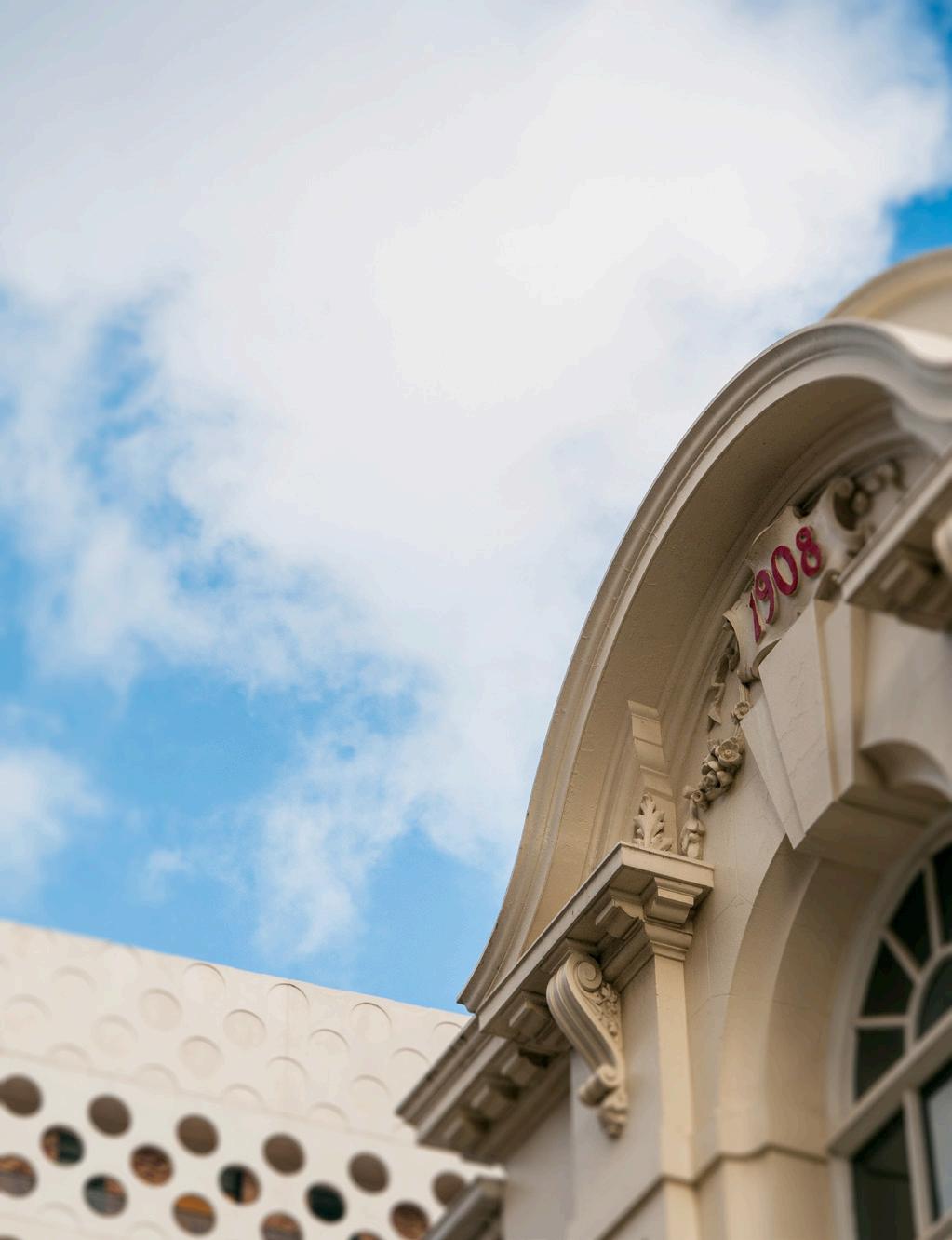
For more than 100 years, Swinburne has been committed to innovative education, producing outstanding graduates and delivering enduring outcomes.
With its specialisation in science, technology and innovation, Swinburne’s reputation for high quality, engaged teaching and research is reflected in the University’s consistent ranking among the top 3% of universities in the world.*
Swinburne’s law school now offers an undergraduate program which focuses on commercial law with emphasis on intellectual property law. As the only degree in Victoria with this specialisation, students learn to practise law for the knowledge economy.
The Swinburne Bachelor of Laws program is fully accredited by the Council of Legal Education in Victoria and offers students the option of a single degree or combined program with arts, science, business or engineering.
For more information about Swinburne Law School, call 1300 275 794
JAMES WS PETERS QC
Sarah Fregon comes home: 8 an interview with the Bar’s new CEO
GEORGINA SCHOFF QC AND GEORGINA COSTELLO Around town
Opening of Owen Dixon 10 Chambers West extension
GEORGINA SCHOFF QC, MICHAEL WYLES QC AND THE HON CHIEF JUSTICE ROBERT FRENCH AC 2014 Wigs & Gowns 18 squadron sailing day JAMES MIGHELL
Address for the multi-faith 20 opening of the legal year 2015 ASSOCIATE PROFESSOR RUFUS BLACK
Sowing the seeds of beauty: 24 Dunkeld and the Royal Mail Hotel
GEORGINA COSTELLO & NATALIE HICKEY
Victorian Bar Community Choir 27 RICHARD LAWSON
The Italian contribution: 28 diversity in the law
THE HON CHIEF JUSTICE MARILYN WARREN AC Rights, rule of law & 31 foreign investment
PAUL HAYES & CARYN VAN PROCTOR Legal friends of the 32 Melbourne Recital Centre
GEORGE H GOLVAN QC Victorian Bar commissions 33 portraits by three leading artists ARTS & COLLECTIONS COMMITTEE 2015 Victorian Bar Dinner 34 THE HON JUSTICE MICHELLE GORDON & STEPHEN O’MEARA QC News & views
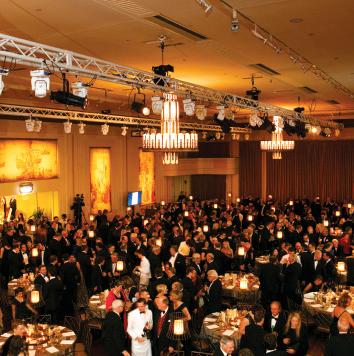

56 George Hampel – origins of an advocacy teacher
W. BENJAMIN LINDNER
61 Vale Andrew Chan and Myuran Sukumaran THE HON JUSTICE LEX LASRY
61 Humanity summoned THE HON JUSTICE PETER VICKERY
62 The ascension of a soccer nut
TONY WILSON
64 Murder at sea DR. CLIFFORD PANNAM Q.C.
74 Words to the wise: JCV legal writing course
MEREDITH SCHILLING
80 Portrait of a barrister’s mind
BERNADETTE HEALY
86 Natural highs at Mt Kilimanjaro
SIMON TISHER
Bar lore
90 Joan Rosanove QC SIOBHÁN RYAN
98 Abraham Lincoln MARK CAMPBELL
103 Sir Wilfred Fullagar
JAMES MERRALLS AM QC
108 A step back in time VBN
Back of the lift
110 Adjourned Sine Die
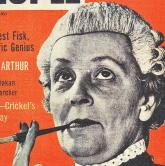
Becoming Charlie 46
DR MATTHEW COLLINS QC
The Readers’ course 52
DAVID J O’CALLAGHAN QC
An insider’s guide to the Bar exam 54 NATALIE HICKEY

114 Silence all stand
118 Vale
121 Gonged
122 Victorian Bar Readers’ course
123 Senior counsel 2015
126 A bit about words
JULIAN BURNSIDE AO QC
128 Red bag blue bag
129 Book reviews
133 Food and drinks SCHWEINHAXE
134 Bindi: a Macedon region beauty
SARA HINCHEY
136 Music ED HEEREY
138 Off the wall...
ART AND COLLECTIONS COMMITTEE
139 Etiquette for the modern barrister ZEUS XENIOS
140 Verbatim

Editors: Georgina Schoff QC and Georgina Costello. Victorian Bar News editorial committee: Georgina Schoff QC (Editor), Georgina Costello (Editor), Anthony Strahan (Deputy Editor), Maree Norton (Deputy Editor), Annette Charak (Deputy Editor), Justin Wheelahan, Catherine Pierce, Brad Barr, Jesse Rudd, Natalie Hickey, Denise Bennett and Sally Bodman.
Editorial advisor: Peter Barrett. Contributors: (In alphabetical order) Richard Attiwill QC, Associate Professor Rufus Black, Kate Burke, Julian Burnside AO QC, Mark Campbell, Dr Matthew Collins QC, Georgina Costello, Andrew Denton, Dr Stephen Donaghue QC, Rachel Doyle S.C., The Hon Justice Karin Emerton, The Hon Chief Justice Robert French AC, David Gilbertson QC, Jeffery Gleeson QC, George Golvan QC, The Hon Justice Michelle Gordon, Andrew Grant, Michael Gronow, Paul Hayes, Bernadette Healy MAPS, Edward Heerey, Natalie Hickey, Graeme Hill, Her Hon Judge Sara Hinchey, Samuel Horgan QC, William Houghton QC, The Hon Justice Lex Lasry AM, Richard Lawson, W Benjamin Lindner, James Merralls AM QC, James Mighell, Ross Nankivell, Tim North QC, David O’Callaghan QC, Frank O’Loughlin, Stephen O’Meara QC, Maree Norton, Dr Clifford Pannam QC, James WS Peters QC, Elizabeth Ruddle, Aileen Ryan QC, Siobhan Ryan, Meredith Schilling, Georgina Schoff QC, Simon Tisher, Caryn van Proctor, The Hon Justice Peter Vickery, Kristen Walker QC, The Hon Chief Justice Marilyn Warren AC, Tony Wilson, Michael Wyles QC
Photo contributors: Peter Bongiorno, Richard Crawley, Mark Duffus, Justin Hill, Neil Prieto, Simon Tisher, Matthew Townsend.
Cover Illustration: Guy Shield
Illustrations: Guy Shield
Publisher: The Victorian Bar Inc. Owen Dixon Chambers, 205 William Street, Melbourne 3000. Registration No. A 0034304 S.
This publication of Victorian Bar News may be cited as (2015) 157 Vic B.N. Opinions expressed are not necessarily those of the Bar Council or the Bar or of any person other than the author.
Advertising
All enquiries including request for advertising rates to be sent to:
Ms Sally Bodman
The Victorian Bar Inc.
205 William Street, Melbourne 3000 Tel: (03) 9225 7909
Email: sally.bodman@vicbar.com.au
Design and Production: The Slattery Media Group; www.slatterymedia.com
Contributions: Victorian Bar News welcomes contributions to vbneditors@vicbar.com.au.
GEORGINA SCHOFF & GEORGINA COSTELLO, EDITORS
While browsing in Roz Greenwood’s Old & Rare Bookshop in Dunkeld last year, one of our editors found a copy of Joan Rosanove QC’s biography. The book covered the life and career of the late Mrs Rosanove, who in November 1965 was the first woman in Victoria to take silk. Inspired by the book by Isabel Carter, and recognising that 2015 marks 50 years since Mrs Rosanove took silk, we commissioned Siobhan Ryan’s feature article about Joan Rosanove QC, which is published in Bar Lore on page 90.
Across the road from Dunkeld’s Old & Rare Bookshop is the Royal Mail Hotel. The hotel and the bookshop’s premises are owned by Allan Myers AO QC’s Dunkeld Pastoral Pty Ltd. In this issue, we celebrate the sweet success of Mr Myers’ hotel, with its abundant kitchen garden and vast cellar, in a rare interview with Mr Myers on page 24.
For her story on page 74 of this issue, Meredith Schilling interviewed judges who have attended writing training at the Judicial College of Victoria and writers who have taught them. One of those writers is Helen Garner, whose most recent book, House of Grief, describes the harrowing trial of Robert Farquharson.
Once you’ve enjoyed the review of Garner’s book by Rachel Doyle SC and Kate Burke (on page 129) and David Gilbertson QC’s review of Nick Green QC’s French poetry collection (on page 131) we think you’ll agree that Victorian barristers read, are read, are written about and write in ways that matter. This publication is our Bar’s place to print some of that writing.
Since our last issue, a trilogy of tragedies occurred. In the Lindt Cafe siege, two lives were ended, one of whom was Katrina Dawson, a Sydney barrister known to some of us. In Indonesia, Andrew Chan and Myuran Sukumaran were executed despite the valiant legal work of our Bar’s Julian McMahon, Peter Morrissey SC, Michael O’Connell SC, Tony Trood, Megan Tittensor and Scott Johns, who struggled to save them. In Paris, the Charlie Hebdo siege and ensuing violence took place.
BACK ROW: Denise Bennett, Jesse Rudd, Natalie Hickey, Annette Charak (Deputy Editor), FRONT ROW: Brad Barr, Georgina Costello (Editor), Georgina Schoff QC (Editor) and Justin Wheelahan. ABSENT: Anthony Strahan (Deputy editor), Maree Norton (Deputy editor), Catherine Pierce and Sally Bodman.

We barristers each work alone, each of us strongly independent but strengthened by our capacity to rise together to say things that matter. As editors of Victorian Bar News, we bring together articles by our members in the hope that collectively we can make sense of life and law and lore and, in doing so, we hope to build our Bar’s camaraderie, resilience and understanding.
In “Becoming Charlie” on page 46 our own Dr Matt Collins QC draws upon his experience of being in Paris when the offices of satirical magazine Charlie Hebdo were attacked and his considerable expertise as one of the world’s leading writers and practitioners in media law to examine whether Charlie Hebdo could be published in Australia. We hope that by publishing his article and the cartoons that illustrate it, we can assist our readers to have a deeper understanding of the issues which played out with such tragic consequences in Paris.
When you reflect upon Dr Collins’ conclusions about freedom of speech in Australia, you might also reflect upon the judgments of the High Court in Monis v The Queen1. The Court split 3-3, unable to decide whether legislation pursuant to which Monis was prosecuted for sending offensive letters to the families of soldiers who had served in Afghanistan impermissibly burdened the freedom of political communication protected by the Constitution. Particularly thoughtprovoking is the judgment of Justice Heydon, who questioned whether the freedom to insult, hurt and injure ought be valued over, for example, the right to dignity.
And so we come, finally, to the remarks of the Master of Ormond College, Rufus Black, delivered at the Opening of the Legal Year, which we also publish in this issue. The Master observes that religious belief systems often lie at the heart of our sense of what is human and what is just, and he reminds us that the founders of our Constitution intended us to be a nation for all religions. When the relationship between the law and religion is tested, he counsels us to conduct the discussion in accordance with the tolerant ideas of our nation’s founders.
We hope that you find this issue as thought-provoking as we have.

Dear Mesdames, Issue 156 Summer 2014 of the Bar News is an impressively large and informative publication and I congratulate you on it.
However it contains a glaring error at page 93, under the heading Cabs on the Rank. By quoting Bar Roll numbers, it is clear that the article purports to compare the lowest numbered practising barrister with the highest numbered practising barrister at the time of writing.
The so called “First Cab” is shown as Peter O’Callaghan QC with Bar Roll No 622 (signed the Bar Roll 1 February 1961). However, a simple piece of research reveals that Gerald Nash QC has Bar Roll No 604 (signed the Bar Roll 6 August 1959). Mr Nash spent 18 years, from 1962 to 1980 as a full time academic. Surely this discontinuity does not disqualify him from First Cab status, as you have elected to base this on Bar Roll number.
Even assuming that this exclusion is applied and Mr Nash is eliminated from consideration, First Cab status should go to Brian Bourke with Bar Roll No 612 (signed the Bar Roll on 1 April 1960). Mr Bourke has never applied for silk, famously saying that he thought the Queen had sufficient counsel and he was Irish, but that has no effect on his cab number. Indeed Mr Bourke, before coming to the Bar, worked at Brew and McGuinness Solicitors, the firm where Mr O’Callaghan did his articles some years after Mr Bourke had been admitted to practise and left the firm.
Angela Nordlinger Bar Roll No 2678 (signed the Bar Roll on 7 April 1991)
Dear Eds,
I was dismayed at my appearance yesterday at the Ringwood Magistrates’ Court in a dodgy contractual dispute.
I told the Court I appeared Pro jure patrio stamus (to defend our rights) and sought Aequum et bonum (what is just). But HH said Jus Ex Injuria Non Oritur (a right cannot arise from an unlawful act). But this was not so, said I, Qui Jure Suo Utitur Neminem Facit Injuriam (he who exercises his rights harms no one) and Pacta Sunt Servanda (agreements must be kept). My opponent said it was Nudum Pactum (a contract with no consideration), but A fortiori (with more force) I responded Lex Non Cogit Ad Impossibilia (the law cannot compel the impossible), but if my client managed it, Et Impotentia Excusat Legem (the law excuses a person from doing the impossible). HH called my submission Ab Absurdo because Non Sequitur (it did not follow): Ignorantia Juris Non Excusat (ignorance of the law is no excuse), and my client was Dolus Eventualis (aware of the likely outcome of his action). The case was dismissed. I bellowed Eror Juris sive Facti (the bona fides of a judge cannot be questioned, but his decision may be); we would appeal and Vacatur (set aside the judgment)! I admit at this point I sought Lubricum Linquae Non Facile Trahendum Est In Poena (the law tends to overlook rash or inconsiderate language spoken in the heat of the moment). But HH dismissed my appeal Interest Reipublicae Ut Sit Finis Litium (in the public interest litigation must end).
But that did not bother me Per Se. What bothered me was I did not have firmatisque pecuniam (fees in trust).
David Colman
Dear Editors,
It is very disappointing that the soap dispensers in the ladies toilets on level one of Owen Dixon Chambers East are so full of rust that you cannot wash your hands properly there.
The same issue seems to be affecting the soap dispensers in Joan Rosanove chambers on level 2. I cannot imagine what it must be like for readers who attempt to complete the Bar Readers’ Course.
Moreover, the Word program in the Bar library is so out-dated that most counsel have difficulty opening files with it. This is notwithstanding that numerous counsel have made comment of the issue to the Bar library committee.
Yours sincerely, Natalie Otira Vogel
Dear Ed,
My letter to the editors is “A”.
The editors’ prize of a magnum of Pommery Champagne for the best letter goes to Angela Nordlinger. Thank you for each of the letters we received.
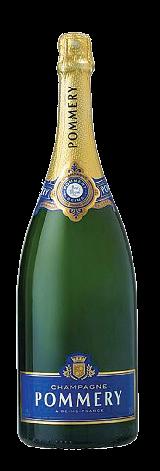
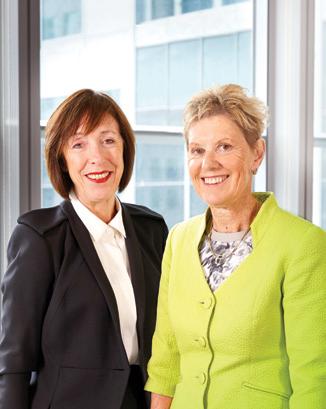

Yours literally, Richard Brear
P.S. I always enjoy reading the Bar News. “A” means that I consider the publication is first class.
The cover of the last issue of Victorian Bar News erroneously referred to the post nominals of The Hon. Michael McHugh AC QC and James Merralls AM QC. We apologize for any embarrassment this may have caused.
Have your Say Write to the Editors at Victorian Bar News, Owen Dixon Chambers, 222 William Street, Melbourne, VIC 3000 or email vbneditors@vicbar.com.au
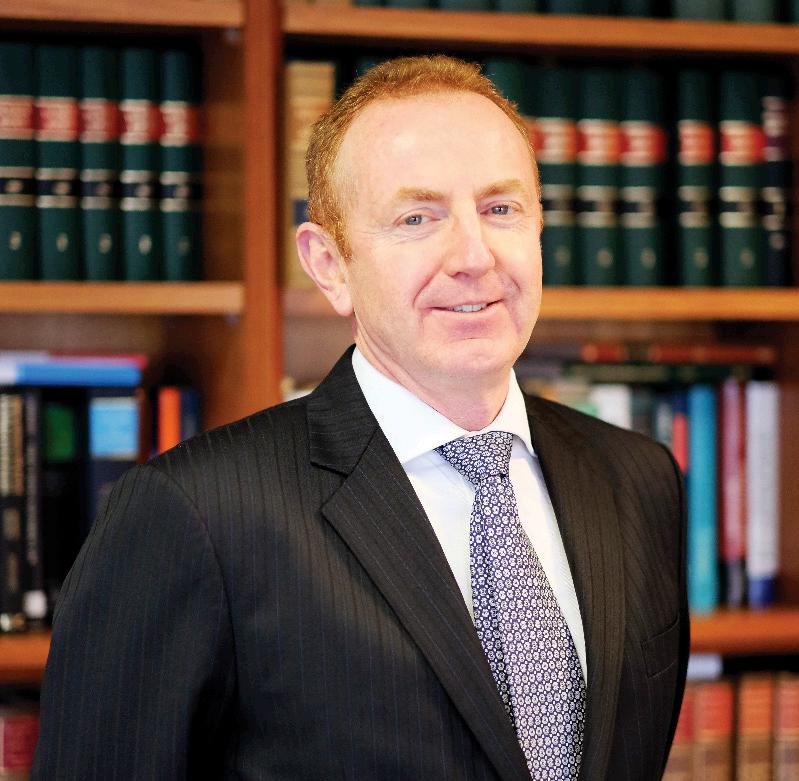
JAMES WS PETERS QC
Since the last edition a number of important developments for the Victorian Bar have occurred.
In March, Sarah Fregon became our Chief Executive Officer. She has a successful record in commercial law, dispute resolution,
corporate governance and regulatory compliance. Her experience as corporate counsel at the multinational PZ Cussons Group makes her well placed to assist in the Bar’s strategy and planned growth. The Bar Council’s strategy is firmly focused on the progress of the prosperity of the Bar for present and
future members. Sarah Fregon is a valuable addition to this strategy. At a national level, the last six months have seen the High Court undergo significant change. Justice Crennan retired in February and Justice Hayne in June. They have been replaced by Justice Nettle (formerly of the Victorian Court of Appeal) and Justice Gordon (of the Federal Court). I have already publicly congratulated Justices Nettle and Gordon. It was important for Victoria to retain two representatives on the High Court for two reasons. Victoria is one of the two largest states by population and economic size. It also reflects admirably upon the strength of our Bar that two of its former members have been appointed, thereby acknowledging the quality of our jurists. I wish Justices Nettle and Gordon success and fulfilment in their new roles.
The lack of work at the junior criminal Bar continues to be very concerning. The Bar Council encourages a good relationship with Victoria Legal Aid and continues to discuss various matters with it. It remains a concern that the Board of Legal Aid does not include a retired senior judicial officer with experience in conducting criminal trials from summary matters up to complex indictable crimes. We continue to advocate for this change.
The Bar has established the Indictable Crime Certificate (ICC), a scheme for the accreditation and quality assurance of barristers undertaking indictable crime matters.
The ICC is administered by the ICC Committee, led by the Hon Geoff Eames AM QC and the Hon Stephen Charles QC. It is anticipated that the first ICCs will be granted to barristers later this year. The ICC is a great achievement for our Bar and is further evidence of our commitment to quality and training.
Beyond but including the criminal law, there is a growing tendency by firms and Legal Aid to brief employee solicitors to appear in Court. The
quality and skills at the Victorian Bar are second to none. The fierce independence and cab-rank principle means that clients are represented in the best possible manner from an extremely competitive environment. It is a false economy to suggest that employee solicitors can represent clients to the same degree and skill of Victorian barristers at a lesser cost. Often greater cost to the client is involved when the Bar is not engaged early or in a meaningful way.
Cost and quality of representation are fundamental matters for every client. We continue to impress upon all branches of the profession the need to consider the interest of clients first, rather than marketing programs focusing on a business
public interest of conducting justice efficiently and cost effectively.
On 18 February 2015, a special general meeting of counsel adopted a new Constitution, including the change of the title Chairman to President by a separate special resolution. The new constitution was the result of an enormous amount of work by the Bar office and members of the Bar Council. They are to be congratulated for their work in simplifying and modernising our Constitution.
The readers’ Course exam has been reviewed and the Bar Council has decided to retain it with some changes to the format of the exam, including a partial open book format. This is the subject of a separate
The tendency of some law firms to brief counsel late is now becoming the subject of public discussion both inside and outside of court.
outcome. I suspect that this issue will become more and more pronounced as clients object to the cost and delay of getting their cases on for trial. All members of the Bar are firmly focused on the need for efficiency and cost effectiveness in the disposition of their clients’ cases. Our marketing program is another key initiative. It was developed last year with much success. It emphasises the importance of ensuring that solicitors, corporate counsel and governments, and clients generally, understand the importance of briefing counsel well and early. Ultimately, costs are saved, cases run more smoothly and the court is better served if counsel is involved in the strategic direction of the case at an early stage. The tendency of some law firms to brief counsel late is now becoming the subject of public discussion both inside and outside of court. I propose to continue this public dialogue, not only for the benefit of our members but also for the benefit of the courts and in the
article in this edition. I realise the exam is a matter of debate both inside and outside the Bar. The position is constantly reviewed by the Bar Council.
On behalf of the Bar, I acknowledge the extraordinary work undertaken by our members who worked tirelessly to protect Andrew Chan and Myuran Sukumaran and provided support to both men and their families. In particular, I gratefully acknowledge barristers Julian McMahon, Peter Morrissey SC, Michael O’Connell SC, Megan Tittensor, Tony Trood and Scott Johns. The Bar is immensely proud of their efforts. They represented their clients with skill and dignity leaving no stone unturned at considerable personal cost.
The next few years will need to be a period of sustained action by the Bar Council and office to promote the growth and security of our future in a changing legal market. I am reassured by the commitment of all to this objective.
BY GEORGINA SCHOFF AND GEORGINA COSTELLO

Having run the gauntlet of a series of interviews, the final being conducted by four silks, Sarah Fregon started work as CEO of the Victorian Bar in March 2015.
For the uninitiated the Victorian Bar might at first seem to be a strange environment, but for Ms Fregon “it was … like coming home to the place I love”. She was, after all, for eight years a member of our Bar, until 2009 when she left to take up an in-house legal role.
When she speaks of her time here, Ms Fregon’s great respect for the Victorian Bar is apparent. She says that she experienced the steepest learning curve in her professional life during that time, practising principally in commercial law. She held positions on various Bar committees and even sang at the 2004 Bar dinner, accompanied by Judge Frank Walsh on saxophone.
Since leaving to hone her skills in the corporate world, Ms Fregon’s ties to the Bar have remained strong. As in-house counsel at Endota Spa and later at PZ Cussons, she briefed many of our members and she is married to barrister Jason Pennell.
With her legal and corporate background and her status as a former member of this Bar, Ms Fregon seems perfectly suited to her new role and it is not surprising that she has received “an all embracing and positive welcome” from former colleagues, Bar staff and barristers generally.
At multi national consumer goods company PZ Cussons, Ms Fregon enjoyed dual roles in both management and legal affairs. In addition to being general counsel, she was company secretary and headed up corporate communications. She worked on mergers and acquisitions, including PZ Cussons’ acquisition of the 5am organic yoghurt and Rafferty’s Garden baby food companies. Her work involved the development of corporate strategy, management of the corporate services team and being a member of the executive leadership team.
One of her favourite management areas, however, was leading the company’s corporate social responsibility (CSR) strategy development and implementation.
She speaks with enthusiasm of her former employer’s ‘six pillared’ approach to CSR which included: consideration for the environment; consumer safety, health and wellbeing; ‘our’ people; business conduct and ethics; and local community and charity.
Ms Fregon points to the many things the Bar does in this regard, particularly its pro bono, law reform and policy work. She observes that in her absence, the Bar has progressed in other areas, such as diversity and with its work promoting the health and wellbeing of its members.
Ms Fregon believes that the Victorian Bar is “a more progressive place than it is sometimes given credit for”.
Ms Fregon acknowledges the strength of the Bar as a true meritocracy, but adds, “that doesn’t mean there are not issues and challenges to address”. She sees rich opportunity for the Victorian Bar to engage with the market as to the benefits of briefing barristers. Like many, Ms Fregon has observed a trend away from early engagement of barristers over the past 25 years: “I am really looking forward to building on the strong reputation of the Victorian Bar. One area I intend to focus on is how the Bar can continue to demonstrate that our members’ skills are broader than just representing our clients in court. This, of course, as specialist advocates, we excel at. However, we offer much more – from strategic case management early in the running of a matter, high level advice and all aspects of case management and procedure. It is a barrister’s connection to and understanding of evidence and the outcome that sets the Bar apart.”
Ms Fregon acknowledges that the Bar, through the work of its members, has historically achieved excellence quietly, without promotion. She respects, with due deference, this traditional reluctance to ‘advertise’, but says that there is a need for the Bar to educate the broader market as to “what we do” and “why engage us”, and in doing so, raise the profile of the Bar.
Recalling the many times she has proudly told people in business and the broader community alike that she was or had been a barrister, Ms Fregon tells us that the common response would be to ask her “What firm do you work for?”. She suspects, apart from those in solicitors firms, the market for legal services does not

Ms Fregon acknowledges the strength of the Bar as a true meritocracy, but adds, “that doesn’t mean there are not issues and challenges to address”.
know enough about the “what, why and how” of briefing barristers and that is something she would like to change. At the same time, she looks forward to improving the Victorian Bar’s continuing relationships with solicitors, national bodies, governments and the courts.
Ms Fregon already has some concrete plans that involve the Victorian Bar offering more external CPD seminars to in-house counsel and solicitors across all practice groups working closely with the respective Bar Associations. She also sees opportunities for the Bar to provide increased services to in-house lawyers, in both private and government sectors, who work in roles like the one she had. Her experience of briefing barristers both directly and via solicitors as a core member of the legal services team is one that she is keen to share with the market and firmly believes delivers better outcomes for the client.
The work of barristers who volunteer on the myriad of Victorian Bar committees and associations impresses Ms Fregon as one of the organisation’s core strengths. She believes these contributions are critical to and underpin the continued success of our Bar. There is “power in the collective” she says. She also looks forward to “working with and learning from” the clerks, complementing the important role they play and work they are doing.
The Victorian Bar News welcomes Ms Fregon back and wishes her every success in her leadership role with us.

GEORGINA SCHOFF
On 1 May 1987 the then Chief Justice of Australia, Sir Anthony Mason, officially opened the newly built Owen Dixon Chambers West. The building was to be a visible monument to the Bar’s vision and enterprise and to provide a secure investment and a home for years to come.
The architectural merit of the new building and its colour were not uncontroversial. The Age’s Good Weekend magazine of 17 July 1987 listed it as one of the 20 buildings in Melbourne that should never have been built. Also included in that list were the Gas and Fuel building, the Old Melbourne Motor Inn, and the Navy & Military Club. Many of the buildings on that list have since been demolished, but ODCW has withstood the test of time and now stands a little taller – four and a half floors taller.
On 7 November 2014, with much pomp and ceremony, Barristers’ Chambers Limited officially launched the opening of the new extension to ODCW. The anthem was sung and a ribbon was cut. Invited guests were privileged to hear the Chief Justice of Australia, the Honourable Justice French AC, deliver

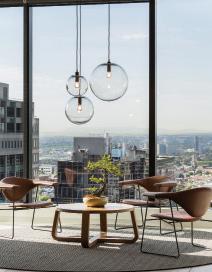
the speech that we publish in this issue. Mr Michael Wyles QC, the chairman of BCL, also spoke.
The new extension, designed by the project team at Gray Puksand led by Kelly Wellington, is a lightweight structural addition secured to the top of the existing pink granite building with steel rods. Ms Wellington says that the challenge was to come up with a design that was modern and sympathetic to the existing building and which could be built while the building continued to be occupied. The finished product is a simple and clean design with details at the corners that create a sense of movement in the façade.
Construction began in June 2013 and the new floors were occupied in
November 2014. The largest challenge for the architects, the builders and the tenants, was the lifts. New lift shafts, constructed on top of the existing ones, had to be aligned to allow the lifts to run smoothly. Ms Wellington believes that this is the first time that a lift modernisation program like this has been undertaken in an occupied building. As is the nature of these things, in the course of this most complicated of lift refurbishment projects, industrial action saw the workers locked out for a considerable period of time.
Now the pain is over, the result is undoubtedly a success. The 81 new chambers are full of light and provide a fresh modern environment for the barristers lucky enough to be housed
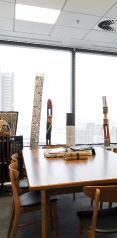
within them. Large windows in the communal areas bring in light from the south. There are no windowless internal chambers, as there were on many floors of the existing building. The interiors make use of warm timbers and colour schemes and offer modern amenity.
Whatever be its architectural merits, however, ODCW is so much more than just a building. It is also the realisation of the Victorian Bar’s chambers policy, the spirit of which is to provide chambers to our members, free of patronage and without significant investment, in a way that nurtures what the Chief Justice described in his speech as “that great informal collegiality which is the strength and pleasure of the Bar”.
VBN congratulates BCL and all of those who were involved in the project.

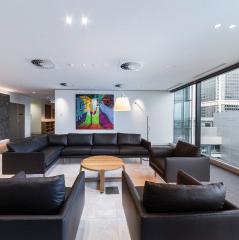
MICHAEL D WYLES
On this momentous occasion in the life of the Victorian Bar, I take the opportunity to acknowledge the Wurundjeri people of the Kulin nation as the traditional owners of the land upon which this tower rises, and pay my respects to their elders, past and present.
In so doing, I look forward to the day when this building houses those of indigenous heritage equally with those of European and Asian heritage, all able to pursue their practice as barristers, free from the inherent prejudices flowing from out-dated gender and racial stereotyping.
Chief Justice French, Chief Justice Warren, Justice Crennan, Mr Attorney, your Honours, ladies and gentlemen, welcome and thank you for so generously giving of your time to join us this evening to celebrate this milestone in the life of the Victorian Bar.
Barristers’ Chambers Limited was incorporated in 1959 for the purpose of building Owen Dixon Chambers.
The incorporation of BCL and the building of Owen Dixon Chambers was inspired by the view that all who sought to come to the Bar should have access to chambers on reasonable commercial terms without, in the words of Berkeley QC, “the evil of patronage by senior barristers who are able to decide whether or not a given junior or reader is permitted to enter a particular set of chambers”.
On 16 October 1961, Owen Dixon Chambers was officially opened by the Prime Minister of Australia, Sir Robert Menzies, in the presence of Sir Owen Dixon, the Chief Justice of Australia.
When opened, Owen Dixon Chambers was a nine-floor building, the new “home” of the Victorian Bar, replacing Selbourne Chambers which had, since about 1882, performed that role.
In no time at all Owen Dixon Chambers was bursting at the seams, so that in 1964 four further floors were added to the building in an effort to provide further accommodation for those seeking a career at the Victorian Bar.
The ensuing 20 years witnessed the continuing and familiar pressure on the boards of BCL to provide more and more accommodation. Those boards were chaired from 1959 to 1979 by Tait QC, and by his successor Hulme QC from 1979 to 1987.
The pressure upon those boards to find collegiate accommodation at commercially sensible rents for all members of the Bar led to chambers being opened in the Hooker Building, Tait Chambers, Equity Chambers, floors in Hume House, and Four Courts Chambers. By 1977, BCL had 504 barrister tenants.
In the face of continuing demand for chambers, BCL contracted with Leighton in 1984 to demolish the building on this site, known as the ABC site, and to design and construct Owen Dixon Chambers West.
We have eschewed patronage and enjoyed success in so doing.
O’Callaghan QC, today the most senior practising member of our Bar, was chairman of the building committee which oversaw the construction of Owen Dixon Chambers West, and is responsible for providing the foundations for our four and a half new floors.
Owen Dixon Chambers West was opened on 1 May 1987 by Sir Anthony Mason, then Chief Justice of Australia, and we are honoured to have Chief Justice French continue the tradition of the Chief Justice of Australia opening new chambers developed by BCL.
Almost thirty years later, the Bar continues to enjoy extraordinary growth. Today there are 1,973 practising counsel, at least 66 per cent of whom are clients of BCL.
The demands upon BCL to provide collegiate accommodation at commercially sensible rents for all members of the Bar have not lessened, despite the fact that “rule 34” of the Rulings on Matters of Professional Conduct and Practice, which compelled members to take chambers from BCL, was withdrawn in the early 1990s.
That continuing demand allowed BCL to “buy back” Owen Dixon Chambers West in 2009, a prospect which seemed most unlikely in the mid-1990s, when the banks applied extraordinary pressure to BCL to impose extortionate rents upon members of the Bar to repay the borrowings made to construct West.
That pressure was, however, no match for Myers QC, Chairman of BCL from 1994 to 1998, whose tireless efforts saved BCL from ruin and pointed it to the future which we enjoy today. It is not the occasion to detail Myers’ work, but we must never lose sight of the fact that, but for his dedication and application to the future of the Victorian Bar, BCL would have crumbled.
Robson QC took the reins from Myers, and in 2003 Anastassiou QC followed in his footsteps.
The Bar owes to each of Robson and Anastassiou an enormous debt of gratitude for their leadership and
wise counsel in steering BCL through more daunting times.
Each of Buckner QC and Habersberger QC, who also chaired BCL between Hulme and Myers, must also be recognised. Their wise counsel and leadership contributed greatly to where BCL finds itself today.
BCL has met the challenge involved in transforming itself from being the required supplier to being the supplier of choice, providing to all members of the Bar a standard of accommodation and service which meets the demands of the modern barrister, whatever area of practice she or he is engaged in.
And BCL is not content to rest on its laurels.
There is so much more BCL can do to make life at the Victorian Bar a better experience: a fully integrated ITSB offering; programmed maintenance keeping all floors at a standard appropriate to modern practice; leveraging the assets which BCL, through the selfless dedication of those who have served BCL, now holds, to find revenue streams which can allow the rents paid by members of the Victorian Bar to be lessened over time.
These are just some of the prospects which BCL has on its agenda in its quest to better serve our Bar.
With the opening of Ninian Stephen Chambers in 2011, under the guidance of Managing Director Ed Gill and Chairman Derham QC, BCL set a new standard for its accommodation offering.
Guided by its values of respect, fairness, integrity, initiative and innovation, BCL sought a way to make this new level of offering available to greater numbers of members.
So was conceived in 2012 the plan for four and a half floors to be added to West, opening up some 82 new chambers of a standard equal to that enjoyed by any of the major professional service firms in Australia.
And today we see the concept become reality.
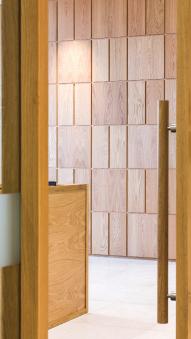
No other Bar in Australia, nor the English Bar, has pursued such a challenging undertaking.
BCL’s preparedness to actively pursue and invest in a real home for the Victorian Bar, with a standard of accommodation which renders that of the Sydney Bar positively ‘Dickensian’, truly stamps our Bar as unique.
We have eschewed patronage and enjoyed success in so doing.
We have found a way for those wanting to and with the God-given ability to do so, to come to our Bar without key money, without patronage, on a monthly tenancy, in accommodation that is second to none.
This achievement reflects the words of Sir Owen Dixon on his swearing in as Chief Justice on 21 April 1952: “…the barrister should be completely independent and work entirely as an individual, drawing on his own resources of learning, ability and intelligence, and owing allegiance to none” ((1952) 85 CLR xi).
The project has been overseen by Ed Gill, assisted by Geoff Bartlett and Mary


Hayes, and I thank them each for an absolutely first rate achievement: ahead of time, ahead of budget. Fantastic!
Ed Gill’s leadership of the project has been above and beyond any effort that could reasonably have been expected and it would be remiss of me not to single him out for special mention.
To our builders, Kane Constructions, you are a shining light in a murky sea. Your ‘not a problem’ attitude is a credit to your workforce and the quality of the individuals you employ.
To Rob Puksand and Kelly Wellington, our architects, I also express my thanks. Business is not just about the money; it is about working with good people. And BCL has certainly enjoyed the benefit of such a relationship with Gray Puksand.
To those members of the Bar with chambers in West, particularly those on the 18th floor, thank you. Your sacrifice for the greater good of the whole Bar follows in the tradition of service and sacrifice by the leaders of the Bar for the benefit of its members. I thank you all.
And now, may I introduce the 12th Chief Justice of Australia, and the first Western Australian to hold that position, Robert Shenton French, Companion of the Order of Australia.
Rather unusually for a lawyer, his Honour holds a Bachelor of Science in Physics, and in 1964 attended the Nuclear Research Foundation Summer Science School at the University of Sydney.
After some early dabbling in politics, his Honour was admitted as a barrister and solicitor in Western Australia in 1972.
In 1973, his Honour became the founding chairman of the Aboriginal Legal Service.
In 1975, his Honour established the legal practice of Warren McDonald & French, which firm through various successful mergers ended up a part of Norton Rose Fulbright, a global legal practice with offices around the world.
Warren McDonald & French’s gain was the independent Bar’s loss, as his Honour delayed going to the Bar until 1983.
Only 14 years after admission, at the tender age of 39 his Honour took his seat on the Federal Court of Australia, welcomed in a ceremonial sitting on 9 December 1986.
As a member of that court, his Honour was the inaugural President of the Native Title Tribunal from 1994 to 1998, guiding that Tribunal through what has been described as “a period of charged public and political debate”.
His Honour has devoted his professional life to the public service of Australia, making substantial contributions to the profession and the broader community generally, as well as to the jurisprudence of the Australian common law.
It is also to be noted that his Honour is an athlete of quite some prowess, having run the Rome Marathon in a wholly respectable time.
We are truly honoured to have his Honour open the West Extension. I thank him for doing so and ask that you now welcome the Chief Justice.
7 November 2014
CHIEF JUSTICE ROBERT FRENCH AC
Mr Wyles, Justice Crennan, Attorney-General of Victoria, Chief Justice Warren, your honours, Mr Peters, Vice President of the Bar Council, ladies and gentlemen.
The opening of the extension to Owen Dixon Chambers West is an important event in the history of the Victorian Bar. It is also an event embedded in no little mystery. The additional floors are numbered 19 to 21 with no floor 20. When I asked Mr Wyles yesterday how many floors there were in the addition, he was rather vague about it. After some equivocation he settled on four and a half, one of which he said had high ceilings. I was reminded of the film Being John Malkovich in which an out of work puppeteer gets a job as a filing clerk working on floor ‘seven and a half’ of an office building, a floor chosen for its low overheads. There he finds a secret chute which deposits anyone who enters it into the mind of the great actor, Malkovich, for 15 minutes after which they are ejected onto the New Jersey turnpike.
Despite its unpromising numeration and the possibility that there are in fact only four and a half floors, this new extension will provide more conventional and durable access of many great minds to each other than the means employed by the filing clerk in the film. Indeed, there will be room in the new addition for 88 counsel practising in groups organised by floors. What that physical proximity offers is enhanced support for that great informal collegiality which is the strength and pleasure of the institution of the Bar and has been in Victoria for well over 100 years.
When Sir Robert Menzies opened Owen Dixon Chambers on 16 October 1961 he did so with a degree of irreverence describing what he was about to do as a “retrospective action which will appeal to the members of the industrial jurisdiction.”1 He opened the Chambers in the presence of Sir Owen Dixon whose portrait he was unveiling at the same ceremony. He recalled with fondness the old Selbourne Chambers of which he had been a member. They had been sold at about the time of the construction of the new building. Menzies spoke of the sense of brotherhood the old Chambers had induced. It was, of course, that kind of sometimes ambivalent relationship that exists between siblings in real life. So he spoke of standing under the old gangway and talking to colleagues who were hoping to secure appointment to a current vacancy on the County Court and consoling them a fortnight or so later when they had missed out. He remembered standing there one afternoon when one hopeful was able to announce that he had in fact been appointed. Menzies said:2
... there were four or five of us and it was a sort of chorus with, I regret to say, some somewhat sardonic side remarks coming in from a very well-known member of the Bar — Owen Dixon.
In opening the new building, Menzies posed the question “why do we have Chambers?” He said:3
Well the answer to that is quite simple I think. Part of the essence of the Bar is the human contact that it produces. More is learned through the shoulders by rubbing them against other shoulders, than is learned, perhaps in any other way. It produces a mutual understanding. It does not dampen the fires of advocacy; it does not prevent any one of us from making some rather oblique remarks and sometimes not so oblique to our opponent in Court, but it does produce a feeling between us all that we are engaged in a great common task of helping the administration of justice.
In looking back to that first opening and quoting the words of the man who performed the task, I am of course doing what barristers and judges typically do. We invoke our history and we recall the words of those who came before us. It is a quaint but pleasant custom provided the quotes are not too long or so well known that the hearers can recite them by heart. In so doing, we bring those who have gone before into the collegiality of the present. We take what we can of their wisdom and enjoy what we can of their humour and their eloquence.
When Sir Owen Dixon spoke he described the new chambers as “a magnificent building”.4 He too called upon history. He compared the relative opulence of the 1960s building with the austerity of the past and in particular that of the Victorian Bar of the 1870s. He said:5
I recall my grandfather telling me that the late Mr George Higginbotham, afterwards Chief Justice of the State, took him into Counsel’s chambers ... and as he opened the door to see the Counsel, he looked at the floor and he said to the Counsel, “Goodness me, what are you doing with a carpet on your floor?’ You are a barrister not a company promoter.”
Sir Owen observed that from the 1870s to 1961 was a long stretch. However, he acknowledged social progress saying:6 We have got into a world where greater comforts are found by others than company promoters.
Much water in the great river of social progress has flowed under the bridge since 1961 and much carpet has been laid in barristers’ chambers.
The Bar is a growth profession. When the first Bar Roll was created in a black exercise book in 1900 there were 63 signatures in the book by the end of that year. According to the website of the Victorian Bar, as of last evening, there are 1,973 counsel practising in Victoria of whom 248 are Queen’s Counsel or Senior Counsel and 1,725 are Junior Counsel. There has also been a major change in the profile of the Bar. In his
Whatever their amenity, and whether carpeted or carpetless, what matters is what the Bar does in this place and the quality of its endeavours in what Menzies called ‘the great common task’.
opening speech in 1961, Robert Menzies spoke of ‘brotherhood’ and ‘walking into any other man’s chambers’. Owen Dixon addressed his audience five times with the word ‘gentlemen’. A report of the opening, in the Law Institute Journal of November 1961, after recounting the distinguished legal assembly by office but not by name, went on to say:7
Among the ladies were Dame Pattie Menzies, Lady Dixon, Dame Mary Herring, Lady Winneke, Mrs RA Smithers, Mrs Oliver Gillard, ....
Today 536 of the 1,973 counsel practising in Victoria are women. Regrettably only 26 of them are Queen’s Counsel or Senior Counsel out of 248 who hold that honour. Victoria’s first woman Chief Justice, who is present here today, has been in that office for 10 years. The change in the representation of women at the Bar and the legal profession generally represents a substantial change in social attitudes and the expectations and aspirations of women which has occurred since the 1960s. Much, of course, remains to be done, not least on the subject of work practices within firms and at the Bar and briefing practices by solicitors and their clients. Indeed, that very topic was the subject of a workshop held today at the Federal Court by the Commercial Bar and opened by my colleague, Justice Crennan. Other dimensions of diversity in society at large are also reflected in the changing profile of the profession and of the Bar. Take ethnic diversity — today Australians come from 180 different countries and comfortably more than 40 per cent of Australians were born overseas or have at least one parent who was born overseas. Fortunately, the Victorian Bar expressly asserts, as a matter of policy, its support for a diverse and egalitarian Bar where a variety of views are encouraged, accommodated and respected.
To welcome those developments it is not necessary to be a social progressive. It is sufficient to recognise the aspiration towards equality of opportunity that we express through social norms and, of course, related to it the principle, to be applied in our courts, that all should be equal before and under the law. These Chambers provide the Bar with a pleasant physical working environment. Whatever their amenity, and whether carpeted or carpetless, what matters is what the Bar does in this place and the quality of its endeavours in what Menzies called ‘the great common task’. The maintenance and transmission of the important institutional and individual values of integrity, competence, diligence and independence that underpin those endeavours is again a truer measure of the value of the Bar, than the accident of its surrounds. And beyond all that, the Bar as an institution has a public voice which it can use to affirm and reaffirm the importance of rule of law and the
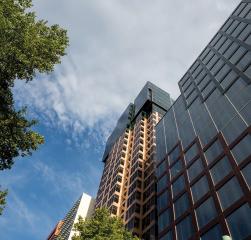
importance to the rule of law of just laws which can command moral assent. In the cacophony of sometimes strident debate about how we should respond legislatively to confronting social problems, the calm, measured, collective advocacy of the Bar is indispensible.
So what happens in, and emanates from this place, is more important than the place itself. That being said, this most recent extension to Owen Dixon Chambers is a tribute to the energy and enterprise of the Victorian Bar and its confidence in itself and its future. I congratulate Barristers Chambers Limited and all of those who have been involved in the very substantial work that has culminated in today’s event. A significant proportion of that work has been done by members of the Bar themselves acting freely and in the interests of the profession. I declare the extension open and wish all those who work in it and at the Bar generally, well in their great common endeavour.
In concluding, I wish to make a small presentation which is a facsimile of an order of the Supreme Court of Victoria made on 2 May 1918 admitting to practice Robert Gordon Menzies, Gentleman, on the motion of Mr Owen Dixon. The original is held in the High Court in Canberra. I hope that the Bar, in memory of the first opening of these Chambers and the continuity of its history, will find a suitable place for this document.
1 ‘Owen Dixon Chambers: Official Opening 16 October 1961’ (1961) 35 Law Institute Journal 397.
2 ‘Owen Dixon Chambers: Official Opening 16 October 1961’ (1961) 35 Law Institute Journal 397, 397.
3 ‘Owen Dixon Chambers: Official Opening 16 October 1961’ (1961) 35 Law Institute Journal 397, 398.
4 ‘Owen Dixon Chambers: Official Opening 16 October 1961’ (1961) 35 Law Institute Journal 397, 400.
5 Owen Dixon Chambers: Official Opening 16 October 1961’ (1961) 35 Law Institute Journal 397, 400–401.
6 ‘Owen Dixon Chambers: Official Opening 16 October 1961’ (1961) 35 Law Institute Journal 397, 401.
7 Columb Brennan, ‘The Law Courts Beat: Opening of Owen Dixon Chambers’ (1961) 35 Law Institute Journal 394, 394.
JAMES MIGHELL
The Wigs & Gowns Sailing Day was conducted on the waters of Port Phillip on 22 December 2014 in near perfect conditions.
For the first time, Royal Melbourne Yacht Squadron hosted the event, which saw a mixed fleet owned or skippered by the cream of the legal profession, including cruising yachts, racing yachts, a sports boat and a couta boat.
After appropriate adjustments by the handicap committee, the race saw “Marlena”, a Lacco built 26ft couta boat skippered by Matt Connock QC, lead the fleet to the first mark. The larger racing yachts soon hit their straps setting spinnakers running down to the leeward mark. As a result of excellent helming by Justice Digby, ably assisted by a “crack” crew, “Aranui”, the beautiful Swanson 42 was able to stay abreast of Bob Galbally in his Salar 40 “Beldisha”.
Following the on-water exploits, a delightful lunch was held in the Olympic Lounge of the squadron attended by about 60 members of the profession, including past and present members of the bench, a large number of barristers and solicitors.
The Thorsen Trophy was won by “Chardonnay” skippered by Roy Forester and the McPhee Trophy was won by Rebecca Badenoch sailing “Matrix”.
We would like to acknowledge the hard work of Rod Austin, the manager from Royal Melbourne, as well as Julie Davis, who helped to make the day so successful.
The 2015 event will again be held at Royal Melbourne.
We look forward to seeing you all on the water for the 2015 event in December this year.


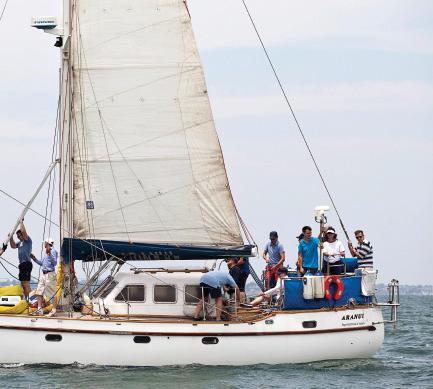

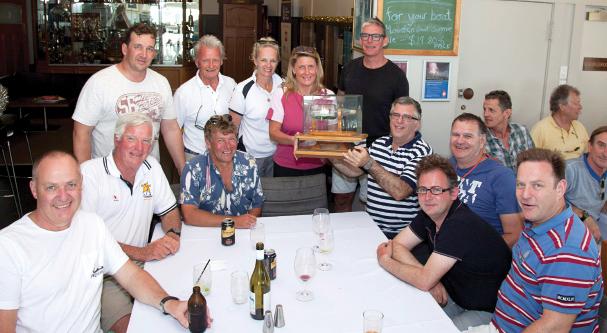
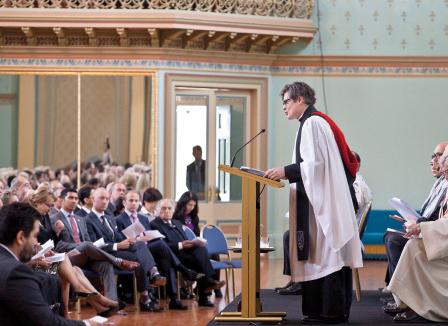
OPENING OF THE LEGAL YEAR 2015 AT GOVERNMENT HOUSE
ASSOCIATE PROFESSOR RUFUS BLACK, MASTER, ORMOND COLLEGE, THE UNIVERSITY OF MELBOURNE
We are people of many faiths gathering here today.
Long before our faiths arrived on these shores there was law in these lands – deep and ancient. Its nature was formed by the sacred stories and places of the dreamtime. So in the beginning I would like to acknowledge the traditional custodians of that law and land, the Wurundjeri people of the Kulin nation.
While the relationship between law and religion is very different today, ceremonies like the one we are holding are signs that in our public life we have a sense of the enduring importance of the place of the secular within the realm of the sacred.
Ours is not a simple separation of state and religion. The founders of the Constitution crafted something far subtler.
They established a finely balanced legal and social ecology that has served us well.
Not for the first time in our history, that relationship is being tested. At such a moment we might do well to return to the roots of the relationship and to make the case afresh for the reciprocal importance of religion to law.
Thanks to a marvellous little book by Richard Ely, Unto God and Caesar and the records of the Convention debates, we can easily return to those roots.
And when we do we find that there is a decisive moment: a single day – 2 March 1898 – where less than a few miles from here, the typography of the relationship between law and religion in Australia was set. That was the day that leading lawyers of the nation’s early history brought to a denouement
a conflict that had raged in the colonies over the place religion was to have in the Constitution that would create the nation.
The notion that ours would be a nation with religious freedom and without an established religion was present from the earliest discussions. Tasmanian lawyer and Unitarian Andrew Inglis Clark proposed back at the 1891 Constitutional Convention a clause modelled on the first amendment to the U.S. Constitution.
By the time of the Adelaide Convention in 1897 a move was afoot to include a feature not present in the U.S. model: the recognition of Deity in the Preamble. It was an idea that would set a different frame for the relationship between law and religion in Australia. There would be freedom but religion could be a point of reference in our public and legal life. But this idea, potent with potential, was defeated 17 votes to 11.
Defeat, however, sparked a public debate of considerable intensity. Petitions in the tens of thousands were gathered in support the recognition of Deity. While they created momentum for recognition, the strength of opposition, which came as much from within parts of the religious world as from the secular, also made it clear that no consensus would be found for any clause that sought to over-claim.
Importantly, the movement also became a more clearly multi-faith project. Rabbi Davis in Sydney notably spoke at public meetings and it was Isaac Isaacs who introduced an amendment into the Victorian Legislative Assembly seeking the recognition of Deity in the next draft of the Commonwealth Constitution.
Indeed, it was here in Victoria that the debate was most intense. Professor Lawrence Rentoul of the Theological Hall at Ormond College had led the efforts to revive the cause of recognition after Adelaide and Henry Bournes Higgins championed the secular cause. It is a reminder of the manner in which public life is best conducted that Higgins and Rentoul were in fact close compatriots and would spend the summers fly-fishing together with their great friend, John Henry McFarland. When the day finally came for this debate to be settled it was decided in an
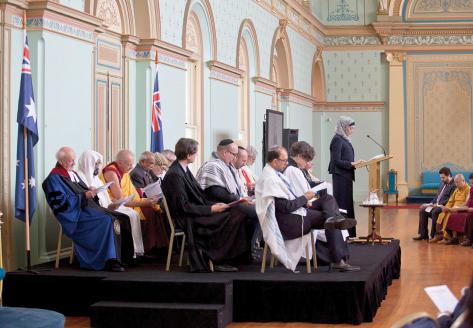
So when dark forces suggest any particular religion is un-Australian or not compatible with who we are, we need to remind them that the founders of our Constitution were clear that we were a nation for all religions.
important symbol of ecumenism that, given the role Protestants had played in the public debate, the Catholic barrister Patrick Glynn of South Australia (who had moved the Adelaide amendment) would again move for recognition of Deity in our Constitution.
His words and those that followed in the convention debate are worth recalling. They speak of ideals and understandings that it is valuable to remind ourselves were present in the founding of the nation.
Glynn moved, as the records of that day note, that the following words be inserted after the word “Constitution” –“humbly relying upon the blessings of Almighty God” and he then explained, and these again are his words,
The words I wish to insert are simple and unsectarian. They are expressive of our ultimate hope of the final end of all our aspirations, of the great elemental truth upon which all our creeds are based, and towards which the lines of our faiths converge. He then went on to say,
In an affirmation of pure reverence . . . adherents of all creeds, sinking their differences of form and method, can join, and will find the spirit of
toleration in them growing strong under a sense of their common aim. It will thus become the pledge of religious toleration.
Then came an exchange that is defining of the place of religion in Australia. Henry Bournes Higgins rose in opposition to recognition of Deity in the Constitution saying that the United States Supreme Court, even without such a statement in their preamble, had declared America a Christian country so how much greater was the danger the same could occur here?
Then in reply John Quick, one of the great shapers of the Constitution, took to his feet. He argued that the very generality of the clause made it clear our Constitution did not establish Australia as a Christian nation but as one where people of all faiths could feel truly secure because faith itself was respected here.
As he made this argument Quick listed some of the religions whose place in Australia was secured by this clause. He was at pains to emphasise it was not just Christians but Jews and Muslims as well. And elsewhere in the debates it is clear that he also had Hindus in mind and no doubt with time he would have added others.

So it is important, if we are to preserve that balance, to continue the public conversation, which was so vigorous when our Constitution was formed, about why religion remains important to law.
So when dark forces suggest any particular religion is un-Australian or not compatible with who we are, we need to remind them that the founders of our Constitution were clear that we were a nation for all religions and they put that beyond doubt by naming them explicitly.
In an act of skilful consensus-creating chairing, which is appropriate to such a clause, Glynn’s amendment was agreed to without a vote.
Later that day Higgins would move for the inclusion of a clause very similar to one Inglis Clark had long ago proposed. It passed easily 25 votes to 16. Patrick Glyn would write in his diary, ‘To prevent any doubt as to whether [the words of recognition] authorised the imputation of Christianity as the law of land, or religious intolerance in legislation, Higgins succeeded in getting a Provision against any legislation either establishing or suppressing a Religion, or imposing a religious test’(Ely, p.86).
At the end of that day a balanced place for religion in relationship to law in Australia had been established –a balance that a series of High Court cases interpreting s.116 has done much to cement. It is a balance that has served us well.
But understandings of law shift as the continents of ideas upon which they rest move. So it is important, if we are to preserve that balance, to continue the public conversation, which was so vigorous when our Constitution was formed, about why religion remains important to law. Today, I want to touch very briefly on just two notions.
The first is that systems of religious belief are important to sustaining substantive understandings of justice. In philosophy one of the conditions for establishing something as true is how well it coheres with the relevant background knowledge.
When it comes to notions of right and wrong, justice and injustice, that background knowledge is the
understanding of the nature and purposes of human life and society and even of existence itself. The broader, deeper and richer those understandings are the easier it will be to secure more substantive understandings of what the good is.
The roots of the common law are deep in the soil of religious belief systems. It grew out of natural law theory, which itself has roots in Jewish understandings of law and the extraordinary late Medieval conversation between the Aristotelian texts that returned to the West via Islamic scholarship and prereformation Catholic theology.
By contrast there is always a danger in a reductive secular scientific account of the human person. If, for example, we reduce the human person to notions like the selfish gene or we become mere products of our social environment, we risk rolling back the obligations born of neighbourliness and the dignity of human choice.
Second, whether or not you even believe in the divine, a notion of Deity reminds us that there are proper boundaries to what it is human to do and to be.
A prayer in public life is a reminder not only of the worthy and higher
purposes of our institutions of government but also of their limits. There are matters that humans should never make laws about; freedoms that when we seek to curtail them we are overreaching what human should ever do.
With no bill of rights to protect our freedoms and few constraints like s.116 in our Constitution it is especially important that we maintain our traditions that create a culture of constraint on any inhuman aspirations of our legislators.
Perhaps too the recognition that our laws find their place in a greater scheme might embolden judges to conclude as Justice, later Lord, Cooke did in Taylor v New Zealand Poultry Board that, ‘I do not think that literal compulsion, by torture for instance, would be within the lawful powers of Parliament. Some common law rights presumably lie so deep that even Parliament could not over-ride them’.
Cooke’s thought has deep roots in common law notions, finding its echo in Sir William Blackstone’s great 18th Century commentary and ultimately in Thomas Aquinas’ subtle argument that an unjust law is not a law simpliciter.
At the very least such notions support judges to read laws down so that they are within the bounds of the deeply grounded notion of what is human and what is just.
No doubt in these two sketches alone of why religion is important to law there is much to debate. If our history is any guide, then the very thing that the maintenance of the healthy relation between law and religion requires is discussion. But as we conduct that debate let the tolerant ideas of our nation’s founders ring loud in our ears.
Key References
Richard Ely, Unto God and Caesar: Religious Issues in the Emerging Commonwealth 1891-1906 (Melbourne University Press: 1976) Melbourne Constitutional Convention Debates Transcript (http://parlinfo.aph. gov.au/parlInfo/search/display/display. w3p;adv=yes;orderBy=customrank;pag e=0;query=third%20session%20Datas et%3Aconventions;rec=10;resCount=D efault)
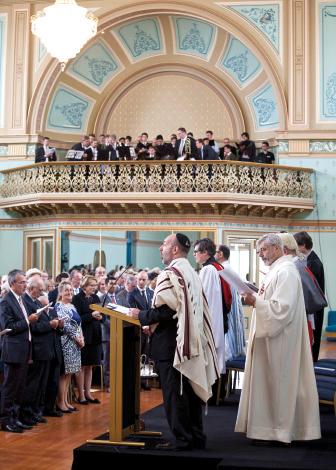
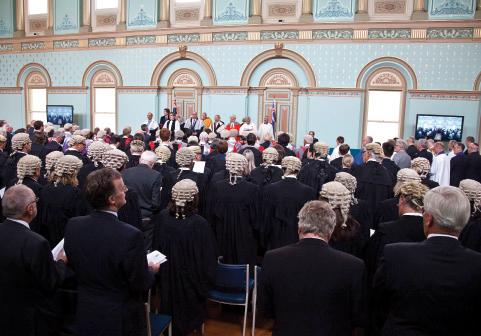
GEORGINA COSTELLO AND NATALIE HICKEY
“Broad beans are the king of vegetables in Dunkeld. If you eat them young enough, you only need to peel them once.”
Allan Myers AO QC, April 2015
Dunkeld lies 260 kilometres west of Melbourne. The town is on the Glenelg Highway, between Glenthompson and Hamilton. The Royal Mail Hotel is on the right as you drive along the Highway from Melbourne, in the foreground of a view of Mt Sturgeon and the Southern Grampians.
Allan Myers’ father, John, opened a butcher shop in the town’s main street in 1947 after he returned from World War II.
Allan’s family had a small farm nearby and Allan grew up in the town. He left to study law at Melbourne University, where he won the 1969 Supreme Court prize and then added to that a Bachelor of Civil Law from the University of Oxford. He signed the Bar Roll in 1975.
Originally built in 1854, the Royal Mail Hotel in Dunkeld was not in good condition in 1985 when Allan Myers’ company, Dunkeld Pastoral Pty Ltd, bought the hotel freehold.
Before he bought it, Allan’s great friend, Peter O’Callaghan QC, told him that country pubs were a “terrible investment”. When this was insufficient to deter Allan from his intended acquisition, Peter O’Callaghan added, “You’re mad.”
The land was subject to a 10-year lease. Allan could not bear how bad the pub was. He did not want to eat the food there. Whilst the bluestone exterior recalled the old shearers’ pub it had once been, a 1960s extension had added an “ugly” cream brick façade above the bluestone.
Allan wants it to be beautiful where he lives. He says,
I really do believe that the beauty of nature is integral to our entire human experience, and to moral virtue. The idea of beauty is very closely connected to caring for things and caring for people.
Therefore, when the lease ended in 1995, Allan decided to acquire the business and renovate the Royal Mail Hotel.

With his brother’s help (Michael becoming the manager of the Royal Mail Hotel for a period), work commenced in 1995 to renovate the hotel and provide proper accommodation. This took about two years.
The opening day of the ‘new’ Royal Mail Hotel stands out in Allan Myers’ memory. Rod Quantock, the Australian comedian, was the master of ceremonies. Everyone there was excited. The architect was encouraged to say a few words. He did and he chose to speak about what he said were the three mistakes in the building. For instance, outside the dining area there is a tree. The architect told everyone it should have been a tiled verandah. Rod Quantock swiftly intervened, saying, “Thank you very much. In 30 minutes, everyone is invited to join a tour of the three mistakes.”
Today, the Royal Mail Hotel has a public bar, dining room, accommodation, conference facilities and pristine walking paths through landscape stretching to nearby Mt Sturgeon. The façade of the main building has a curved green feature wall with “ROYAL MAIL HOTEL” in art deco style lettering above glass and garden, fronted by a low stone wall.
On winter nights, the town’s football team and supporters may be found drinking in the public bar along with guests and town locals.
Beyond the bar, the dining room in the round art deco inspired façade of the building has an à la carte menu, a degustation menu and a wine list drawn from the Royal Mail Hotel’s 26,000-bottle cellar. The hotel’s kitchen sources its fruit and vegetables from its own garden. The kitchen garden is one of Australia’s finest and its produce is central to the dining room’s celebrated menu.
Named restaurant of the year in the 2010 Age Good Food Guide awards, the Royal Mail Hotel received two chef’s hats in 2015. It is one of only 74 restaurants in the world to have won the Wine Spectator’s Grand Award. The Royal Mail Hotel in Dunkeld
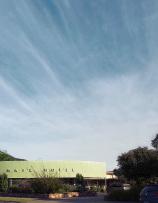
is an epicurean attraction for visitors from around the world.
Allan has also improved the view. He bought adjacent properties and either demolished derelict buildings on those properties or renovated the buildings that could be salvaged. He paid for many of the town’s power lines to be put underground. He bought the land leading to Mt Sturgeon so that the view from the hotel could not be interrupted and created lovely walking paths through that area. His family company owns about half the land in the town.
A number of Allan’s family members remain in the town and district. Allan and his wife, Maria, have a home in walking distance from the Royal Mail Hotel. Their house and gardens are surrounded by a two-and-a-half-kilometer stone wall. One of the hotel’s barmen spent his decadelong stonemason’s apprenticeship erecting the wall, which is made from Grampians sandstone.
Allan has been a very keen vegetable gardener all his life. He had a big vegetable patch as a boy and grew a variety of fruits and vegetables in that early kitchen garden, including brassicas in winter, potatoes, tomatoes, peas, beans and pumpkins.
The Royal Mail Hotel’s kitchen garden at Dunkeld eventually outgrew its place behind the wall of the Myers’ home. Now it has its own extensive space in the hotel’s grounds. Allan waxes lyrical about fruit and vegetables. In addition to his enthusiasm for broad beans, he says that figs grow pretty well at Dunkeld and apricots grow very well there.
In the building that once housed Allan’s father’s butcher shop, there is now the Old & Rare Bookshop. The premises of the bookshop are

owned by Dunkeld Pastoral Pty Ltd.
In 2004, Allan persuaded two local Dunkeld women, Roz Greenwood and Marg Phillips, to move their secondhand and antiquarian bookshop from Hamilton to Dunkeld. According to Allan, the bookshop “makes Dunkeld a more interesting place. Many guests at the hotel are pretty interested in books and they turn out to be good customers.”
It is plain that so much of what Allan Myers has done for the Royal Mail Hotel and its surrounds has been a labour of love. Allan’s perfectionist tendencies (of which his former architect would, no doubt, be proud) make it difficult for him to enjoy the simple pleasure of a meal at the Royal Mail Hotel:
If I go there and have a meal, I cannot relax. I see every mistake a waiter makes. I hate slow service. I see if something hasn’t been properly repaired or if the pictures are not straight.
He likes to eat in the restaurant but he’s “not a degustation man”.
Allan Myers cannot recall precisely when the Royal Mail Hotel became a destination point for visitors from
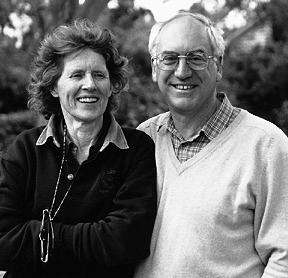
around Australia and overseas, but he remembers it happened quickly. Perhaps word spread from sources such as Rupert Murdoch and his sister Helen, who lived nearby and frequented the Royal Mail Hotel.
American chef, author and television presenter Anthony Bourdain also visited the place. He was meant to stay for half a day but stayed two nights, and has been back twice. When Anthony Bourdain featured the Royal Mail Hotel in a 2009 episode of his travel show No Reservations, he said about the food on the show, “I don’t know whether I want to eat that, or roll around naked in it.”
Visitors at the Royal Mail Hotel, after selecting a bottle of wine from the list, can watch their waiter dash across the main street from the hotel to the ‘wine shed’ (a giant climate-controlled cellar), only to return with the chosen item clutched in hand.
The published statistics about the Royal Mail wine cellar are staggering, even to the most avid wine connoisseur. The wine list has been assembled over 40 years and holds


In addition to his enthusiasm for broad beans, he says that figs grow pretty well at Dunkeld and apricots grow very well there.
Australia’s largest collection of wines from Bordeaux and Burgundy. The hotel’s wine list is 103 pages. The oldest bottle is a 1934 Chateaux Margaux. The most expensive is a 1985 Domaine de la Romanée-Conti at $16,000. The sommelier has crossed the world to work at the Royal Mail Hotel.
Allan corrects the suggestion that there are 26,000 bottles of wine. They are just the bottles on the wine list. In fact, there are a lot more not on the list. Allan insists that he is not a wine collector. Rather, “I buy wine. I drink it. I offer it to my friends. Because I have a lot more than they or I can drink, there is plenty on offer at the hotel.” The first dozen bottles of wine he ever bought were a 1970 La Lagune from Bordeaux. The year was 1975, Allan Myers’ first year at the Bar. His wife liked it very much, and he has bought the wine ever since.
Allan Myers is delighted the Royal Mail Hotel has won the Wine Spectator’s Grand Award. It is the highest award offered by the famed United States publication. In 2013, the Grand Award was first conferred on the Royal Mail Hotel, joining other new winners Per Se (Thomas Keller’s Manhattan restaurant), La Ciau Del Tornavento in Italy, and the Village Pub in Woodside, California. To attain the Grand Award, the restaurant must show an uncompromising, passionate devotion to the quality of its wine program. There must
be serious breadth of top producers and outstanding depth in mature vintages. And of course, there must be excellent harmony with the menu and superior organisation, presentation and wine service.
Allan explained that “It was after their third undercover visit that we were recommended for the Grand Award. That was really something.”
The wines at the Royal Mail Hotel come from far and near. Despite Allan’s passion for Bordeaux and Burgundy, he recommends a visit to a particular Victorian vineyard, Best’s Great Western winery in the Grampians, with its handdug 1860s cellars.
After a little research into Best’s Great Western, the recommendation does not surprise. It is one of Australia’s oldest owned and operated family wineries. Throughout its history there have only been two owners. A fifth-generation family member now runs the winery.
Further afield from the Royal Mail Hotel, the land owned by Dunkeld Pastoral Pty Ltd on both sides of Mount Sturgeon includes the historic old homestead. Near the homestead are bluestone cottages—once derelict, but now restored. “The cottages were falling down. The woolshed was derelict.” The homestead and cottages are also available for bookings, via the Royal Mail Hotel.
Formerly the home of the station’s shearers and cooks, the cottages feature a unique ‘water tank’ bathroom.
The bathroom is Allan Myers’ creation. To have included a bathroom in an existing room would have ruined the heritage qualities. To that end, Allan came up with the idea of using a corrugated iron tank as the bathroom, which would be attached to the existing building. As he says, “No one objects to a corrugated iron tank next to a building in country Australia.”
When asked to comment on the contribution he has made to Dunkeld, Allan Myers responds:
It is wonderful. It is great to give pleasure to people. The only way I can do that is to do things as well as I can. That’s what I do. I try to do my best. I want the hotel to be absolutely perfect: the accommodation, the meals, the wine list.
Like many barristers, Allan Myers is a barrister with business interests. Unlike many barristers, those interests are widespread and substantial indeed. It is hard to avoid gently probing for tips into how one can emulate this success. He is not a list person—no, he “never keeps lists”. Allan suggests that: People have different sorts of intellect. I have an intuitive approach. I see connections between things. That is useful in persuasion because if you listen to or watch a person you are trying to persuade, you can make connections which are not strictly logical.
He adds that the best barrister is not a person who shows how smart and clever they are. Rather, it is someone who knows how best to help, particularly if he or she can help the parties to settle and enable them to continue their business endeavours. He concludes, “I have met some wonderful lawyers. They were creative and solved every problem.”
We return to the boyhood vegetable patch. Given the size of the patch, he is asked, what did you do with all the vegetables? Allan Myers responds, “My mother cooked them, and we ate them.” There is a pause, “and I sold the rest to the greengrocer.”
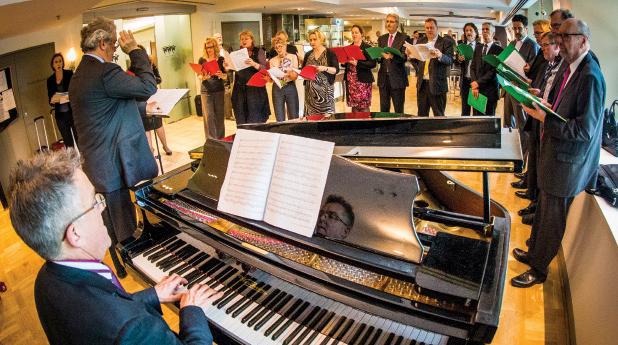
RICHARD LAWSON
Somerset Maugham once said that it was a risk to try to repeat success. So it is pleasing to report that the Victorian Bar Community Choir entered its second year in good spirits, culminating in a sparkling program of performances in December 2014, first at the Family/ Federal Court and then at the Essoign.
A second season or a second effort at many endeavours, musical or otherwise, often disappoints. This does not apply, of course, to those blessed with great talent. After two early symphonies, Beethoven went on to compose seven more. And Bach wrote six Brandenburg concertos, not one.
For the mere mortals in the Bar Choir, however, the common opinion is that members are still singing away chiefly by reason of Laura Colla’s dedication as Choir Convenor. Laura came up with the idea of dividing the year into terms. This meant that would-be singers only had to sign up for three months at a time and were not frightened by a 12-month commitment. But many of us quickly
became addicted to the weekly sessions and signed up for the next term anyway – and the next. It has now reached the point where, if a colleague sees you at court after you missed last week’s rehearsal, then you are expected to explain yourself.
At one stage, the Choir Master Michael Leighton Jones, with his captivating Welsh tenor voice, was unavoidably away. Undeterred, Laura had the wit to recruit one Annemarie Sharry to fill the void and to ensure the Choir’s continuity. As it happened, Annemarie’s musicianship was as self-evident as Michael’s, but with a different emphasis. Her fondness for African music saw us tackle a four-part traditional lament accompanied by percussion only.
For my part, the Welsh leanings of Michael and the African leanings of Annemarie brought to mind the closing scenes of that 1964 film classic, Zulu . Michael Caine, Stanley Baker, Cetshwayo and the rest. But I am showing my age.

And now, with 2015 upon us, Laura has outdone herself. At the beginning of the year the Choir’s foundations had appeared to be a bit shaky, with both Michael and Annemarie having other commitments. But Laura has secured the services of the equally impressive Dr Kathleen Maguire as Choir Master. To top things off, two members of the County Court bench have been coming to rehearsals to bolster the alto section. By the way, if you want to be in the choir, just turn up. We meet on Thursdays from 1pm to 2pm at the Welsh Church hall in Latrobe Street (between Queen and Elizabeth).

Remarks of the Hon Marilyn Warren AC Chief Justice of Victoria on the occasion of Australian Italian Lawyers Association cocktail seminar RACV Club Thursday 5 March 2015
‘Italians have long played an important role in Australia’s History.’1 The Italian contribution to Australia’s legal history has also been long and significant.2 In Victoria, we have had a number of Italian judges at both the Supreme and County Courts. At the Supreme Court of Victoria: currently Justices Bernard Bongiorno (now a reserve judge) and Joseph Santamaria, and formerly Justice Tony Pagone (now of the Federal Court) and of course, Sir James Gobbo, who is also a former Victorian Governor.3 Sir Gobbo was also the first person of Italian background to be appointed to a Supreme Court in Australia. Justices Bongiorno and Santamaria are Australian born but their families came from the Aeolian Islands near Sicily.
Recently, we welcomed the first Italian woman judge to the Supreme Court of Victoria, Justice Rita Zammit. Her Honour was appointed first as an Associate Judge in 2010, and then last month as a Judge of the Trial Division. As an Associate Judge her Honour played an invaluable role in the Kilmore East Black Saturday bushfire class action, assisting with the numerous interlocutory and administrative matters. Her Honour graduated from Melbourne University with first class honours in law in 1995. At the time she had two children under five.4 Prior to studying law, Justice Zammit was a secondary school teacher, and a Special Education Officer at Kew Cottages, where she assisted people with disabilities to integrate into the community.5
Notwithstanding her Maltese surname, Justice Zammit is of Italian descent. Her parents immigrated to Australia from Italy in 1956. On her first day of prep in 1966, she spoke no English.6 In the true Italian tradition, I am informed her Honour makes pesto and pegs tomatoes to her clothes-line to dry in the sun.7 Although proudly a first-generation Australian, her Honour’s Italian heritage certainly shines through.
Italians have also contributed to Australian law as parties to litigation before the courts. A number of landmark High Court decisions spring to mind.
Who can forget the case of Amadio, 8 in which an elderly Italian couple mortgaged their land as security for an overdraft taken by a company their son owned. Believing that his business was profitable, and that their liability was limited, they signed the mortgage without reading it. They were not familiar with written English and relied heavily on their son. Eventually the bank sought to recover the son’s debt from the Amadios. The case went all the way to the High Court. The Bank Manager Mr Virgo, who witnessed the Amadios’ signatures, said he assumed the decision had been ‘agreed between the family’. He described an allegedly well-known Italian custom of ‘submitting business propositions to penetrating and exhaustive familial discussion’ presided over by ‘the head of the family group’.9 Suffice it to say, that argument was
not successful. The High Court held that the Amadios suffered from a special disadvantage and it was unconscionable for the bank to rely on the mortgage guarantee.10 The case was a landmark decision for equity and contract law, as well as the law on unconscionable conduct, which has since cemented its place in Australia’s consumer protection legislation.11
Then there was Giannarelli v Wraith12 – a landmark decision on advocates’ immunity and lawyers’ paramount duty to the court. The case began with three Italians. Emilio, Mario and Giovanni Giannarelli were convicted of perjury as a result of evidence they gave to the Costigan Royal Commission.13 Mario and Giovanni Giannarelli appealed all the way to the High Court and successfully had their convictions quashed. Their appeal was allowed on the ground that there was a provision in the Royal Commissions Act 1902 which rendered the Giannarellis’ evidence to the Royal Commission inadmissible on the perjury charges. The Giannarellis then brought an action in negligence against their various lawyers for (a) failing to advise them that this defence was available and (b) failing to object to certain inadmissible evidence tendered by the Crown, without which the Crown case would not have succeeded. The principal question in the negligence proceedings was whether the respondents, being lawyers, could be liable in negligence in the circumstances. The High Court, by a 4:3 majority, held that they could not; Chief Justice Mason held that the advocates were immune from liability for ‘in court work’. His Honour said ‘in court work’ extended to ‘work done out of court which leads to a decision affecting the conduct of the case in court’ and therefore necessarily extended to the decisions by the Giannarellis’ lawyers about how the perjury proceedings were conducted.14 The Chief Justice was persuaded by the paramount duty owed by lawyers to the court. His Honour reasoned that exposure to liability in negligence would likely affect counsel’s conduct in litigation and potentially undermine that paramount duty.15
The famous estoppel case, Giumelli v Giumelli , 16 also involved an Italian family. Robert Giumelli had left school early to work on the family orchard. He worked there for almost 15 years, for little or no wages. In exchange, his parents Giovanni and Rosa had promised to transfer him part of the orchard property. In reliance on the promise, Robert built a marital home on the property and abandoned any aspirations to pursue an alternative career. Years later, Robert divorced and proposed to remarry. Rosa and Giovanni did not approve of his choice of woman and issued their son an ultimatum: her or the property. Of course, he chose love. The High Court held that Robert’s detrimental reliance on the promises entitled him to equitable relief.
A more recent High Court case that has an Italian flavour is Cantarella v Modena 17 It was an intellectual property case that concerned two of Cantarella’s trade marks in relation to coffee, namely ‘Oro’ and ‘Cinque Stelle’ – Italian for ‘gold’ and ‘five stars’ respectively. The High Court held that despite Australia’s relatively large Italianspeaking population, and Australians’ intimate relationship with coffee, the words ‘oro’ and ‘cinque stelle’, to the ordinary Australian, were more than mere representations of quality, and therefore registrable as trademarks.
One peculiar finding in the case was that most Australians drink instant coffee. In Melbourne we know that is quite wrong. These cases demonstrate how the Italian migrant experience has enriched Australian jurisprudence.
The ‘espresso’ is just one way in which Australia has been enriched by Italian culture, which we now take for granted. However, it is fair to say that we were not always so accepting. As is the case for most new waves of migrants, the mass influx of Italians to Australia in the 1950s and ‘60s was viewed by many with caution. Australians at the time, eager to preserve a particular way of life, feared the unknown. However, with increased exposure came increased understanding; over time attitudes shifted, relaxed. Although, for some it took longer than others. To
illustrate, I will refer to the transcript of the case Brandi v Mingot 18 It was a personal injuries case brought by an Italian man, Mr Brandi, in the 1970s. It too went to the High Court. At trial, before Sir Oliver Gillard in the Supreme Court, Mr Brandi’s wife was cross-examined by counsel, Mr H Ball, as follows:
MR BALL: Mrs Brandi, the Italian people are all pretty up and down in temperament aren’t they? Do you know the word volatile?
MRS BRANDI: No.
MR BALL: Well, you know what it means from your knowledge of Italian; volatile?
MRS BRANDI: No, I am sorry.
JUSTICE GILLARD SENIOR: Does this cover the Italian peninsula from the Swiss border down to the southern tip of Sicily as a general term, volatile people?
MR BALL: It is the warm south, I think. Your Honour.
HIS HONOUR: This man comes from the hill country.
MR BALL: I am speaking of what Milton said when he described the whole of Italy.
HIS HONOUR: He had not been there when he said it.
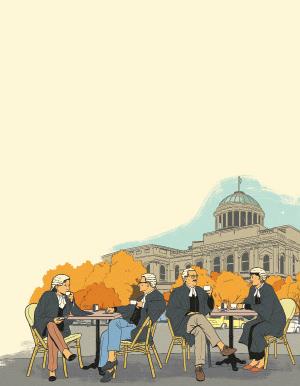
MR BALL: No, Your Honour.
MR BALL: Mrs Brandi, Italian people get excitable?
MRS BRANDI: No, I can’t… they get excited, in what way?
MR BALL: Yes, Italian people, when they are together, get excited?
MRS BRANDI: No.
MR BALL: One with the other?
MRS BRANDI: I can’t explain because we never go out very much, and especially up in Stawell we got all Australian friends, and I can’t explain that very much.
MR BALL: Perhaps we are at crosspurposes. I will abandon that, I think, Your Honour.
HIS HONOUR: Yes. I think that would be best.

One peculiar finding in the case was that most Australians drink instant coffee. In Melbourne we know that is quite wrong.
Such an exchange would be most unlikely to occur in a courtroom today. The attitudes and stereotypes reflected in the barrister’s line of questioning are reflective of the time. These days diversity is taken very seriously and indeed is inherently valued.
The diversity and complexity of contemporary Australia can be highlighted through a look at the census data. Political commentator Associate Professor Paul Strangio recently compared Victorian demographic data from the 2011 census, with that from the 1911 census.19 In 1911 the population was comprised overwhelmingly of Australianborn Christians. In sharp contrast to that mostly closed and ‘ethnically uniform society’, less than 70 per cent of today’s Victorians were born in Australia, and a quarter speak a language other than English at home. 20 Indeed today’s Victoria is, in Associate Professor Strangio’s words, ‘radically different and heterogeneous’ – a ‘kaleidoscope of people’.
Cultural diversity poses unique challenges for courts. All persons, regardless of their background, should have equal access to justice. At the Supreme Court of Victoria we see a full spectrum of litigants – from international corporations to self-represented litigants from culturally and linguistically diverse backgrounds. Unfortunately, litigants in the latter category continue to experience significant barriers to access to justice, as cases like Amadio and Giumelli demonstrate. As judges we are acutely aware of this and are working to respond to Australia’s growing diversity. Judges need to be sensitive to people’s different cultural backgrounds, and be equipped with the requisite knowledge and skills to engage with them effectively in litigation.
Recently, the National Judicial Council on Cultural Diversity was established and endorsed by the Council of Chief
Justices of Australia. The Council comprises members of the judiciary as well as representatives from legal and community bodies. Its mandate is to develop resources, protocols and policies to improve access to justice for Australia’s culturally and linguistically diverse communities. Chief Justice Martin of Western Australia is the inaugural Chair. Victorian courts and tribunals already have a number of diversity policies in place, however the new Council is looking to develop a unified, national approach. So watch this space.
Diversity on the bench is also very important. It makes sense for the judiciary, which serves such a diverse community as Australia, to be diverse itself. Judges from different backgrounds bring other insights to legal problems and contribute to the rich tapestry being the Australian judiciary. The Diversity Council of Australia reports that workplaces that are diverse and free from discrimination are not only more representative, but they are also more productive.
At the Supreme Court of Victoria, we have judges from various backgrounds and experiences. However many cultures and groups remain underrepresented, including women. The Italians, on the contrary, maintain a strong and valued presence on the Supreme Court of Victoria, and continue to contribute to the development of the law and the delivery of justice in the kaleidoscope that is Victoria. No doubt, in time, other cultures will follow. Or perhaps, as Dante said: Poca favilla gran fiamma seconda – from a little spark bursts a mighty flame.
Grazie e buona sera.
Editors’ note: A lengthier version of the article by Tony Wilson entitled ‘On the Ball’ was published in the March 2015 issue of The Monthly referred to by the Chief Justice at footnotes 4 and 6 can be read in this issue of VBN at page 62.
1 Department of Immigration and Citizenship, Australian Government, Community Information Summary, Department of Social Services <https:// www.dss.gov.au/sites/default/files/ documents/02_2014/italy.pdf>.
2 Indeed 160 years ago the famous Italian digger, Raffaello Carboni, was a key figure in the Eureka Treason Trials that followed the Eureka Stockade. He was one of 13 prisoners tried and acquitted of treason at the Supreme Court of Victoria in 1855.
3 Sir James Gobbo, Something to Declare: A Memoir (The Miegunyah Press, 2010), 111.
4 Tony Wilson, ‘On the Ball’, The Monthly (online), March 2015 <http:// www.themonthly.com.au/issue/2015/ march/1425128400/tony-wilson/ball>.
5 Timothy Tobin, Address on the occasion of the welcome to the Honourable Associate Justice Rita Zammit upon her appointment (22 March 2010).
6 Tony Wilson, ‘On the Ball’, The Monthly (online), March 2015 <http:// www.themonthly.com.au/issue/2015/ march/1425128400/tony-wilson/ball>.
7 Reynah Tang, Address to Welcome the Honourable Associate Justice Rita Zammit upon her appointment (22 March 2010).
8 Commercial Bank of Australia Ltd v Amadio (1983) 151 CLR 447.
9 Commercial Bank of Australia Ltd v Amadio (1983) 151 CLR 447, 478.
10 For example, see Commercial Bank of Australia Ltd v Amadio (1983) 151 CLR 447, 464 (Mason J).
11 See for example Competition and Consumer Act 2010, ss 20-22.
12 Giannarelli v Wraith (1988) 165 CLR 543.
13 The Commonwealth and Victorian Royal Commission into the Federated Ship Painters’ and Dockers’ Union.
14 Giannarelli v Wraith (1988) 165 CLR 543, 560 (Mason CJ).
15 See Giannarelli v Wraith (1988) 165 CLR 543, 557 (Mason CJ).
16 Giumelli v Giumelli (1999) 196 CLR 101.
17 Cantarella Bros Pty Ltd v Modena Trading Pty Ltd [2014] HCA 48 (3 December 2014).
18 (1976) 12 ALR 551.
19 Paul Strangio, ‘Seeking the votes of a kaleidoscope of people’, The Age (Australia), 10 November 2014, 27.
20 Paul Strangio, ‘Seeking the votes of a kaleidoscope of people’, The Age (Australia), 10 November 2014, 27.
In conversation with the Hon Justice Petrus Damaseb, the Hon Justice Sifris, the Hon Justice Elliot and Fiona McLeod SC PAUL HAYES AND CARYN VAN PROCTOR
On 24 February 2015 in the Bar Council Chamber, the International Law Committee of CommBar welcomed the Honourable Justice Petrus Damaseb, Deputy Chief Justice of Namibia.
The Bar was most fortunate to hear from Justice Damaseb. An eminent panel comprised of Justices Sifris and Elliott from the Supreme Court of Victoria and Australian Bar Association President, Fiona McLeod SC, joined Justice Damaseb in conversation on the topic ‘Rights, Rule of Law and Foreign Investment’, which was smoothly moderated by CommBar’s resident ‘Tony Jones’, Dr Josh Wilson QC.
Namibia is a new member of the world’s society of states, having achieved independence from South Africa in 1990. Justice Damaseb was appointed Deputy Chief Justice of Namibia in 2014, following amendment of the Namibian Constitution.
His Honour spoke of the importance of foreign investment to Namibia and in particular, Australia’s contribution to the Namibian economy in the form of Australian companies investing in the Namibian resources and energy sectors. Namibia’s political stability and enthusiasm for promoting the rule of law both domestically and further afield has been a vital cog in the foreign investment and development machinery it depends upon for its future prosperity.
The panel also discussed the impact of rule of law and human rights issues on foreign investment (including access to justice challenges in all jurisdictions), as well as the resolution of crossborder commercial disputes through investor-state arbitration channels such as the International Centre for the Settlement of Investment Disputes (a division of the World Bank) (ICSID), bi-lateral investment treaties (BITs) and international commercial arbitration
under the New York Convention 1958.
Until recently, Justice Damaseb served on the FIFA Ethics Commission and headed the Commission of Inquiry into the FIFA 2022 Qatar World Cup ‘votes-for-dollars’ scandal. This led to the imposition of life bans from football upon Jack Warner (former FIFA Vice-President) and Mohammed Bin Hammam (Former Chair of the Qatar Football Federation and former President of the Asian Football Conference). Warner subsequently resigned from FIFA without expressly challenging the FIFA Ethics Commission’s findings against him, although Bin Hammam did successfully challenge the Commission’s findings, which were overturned by the Appeals Division of the Court of Arbitration for Sport in a 2-1 decision.
Justice Damaseb’s experience in international sports law also provided a useful catalyst for a broader discussion on the creeping tide of international law, especially in the area of ‘sports integrity’, having regard not only to FIFA’s well-publicised challenges on this front, but also to current integrity issues here in Australia on the eve of the 2015 Australian Football League and National Rugby League seasons.
The panel discussion format chosen for this seminar was lively, engaging and informative, and was new territory for CommBar. Given the overall success of this format, it is an approach CommBar proposes to adopt more regularly in future CommBar CPD seminars.
Following the seminar, a drinks reception was held at the Essoign Club in honour of Justice Damaseb, at which
Victorian Bar President, Jim Peters QC, formally welcomed His Honour to Owen Dixon Chambers and to Melbourne.
During Justice Damaseb’s week-long visit to Melbourne, His Honour also met with Chief Justice Warren, and several Judges and Registrars of the Federal, Supreme and County Courts and senior members of our Bar. His Honour was particularly interested in understanding how our Courts case-manage commercial disputes and facilitate the pre-trial mediation process.
This type of bi-lateral exchange and co-operation not only develops trade, legal and cultural ties between Australia and Namibia, for the benefit of each of our communities, but it also more widely contributes to the collegiality amongst judges and advocates throughout the world who practise in states which uphold the rule of law, and who are united in their vigilance for its unimpeded continuity. It is a worthwhile undertaking. Long may CommBar continue to play a small but useful role in the soft and productive dialogue between nations.
Justice Damaseb’s visit was flawlessly facilitated by Rudi Cohrssen, a member of our Bar and again, CommBar expresses its gratitude to Rudi for his assistance in staging this event.

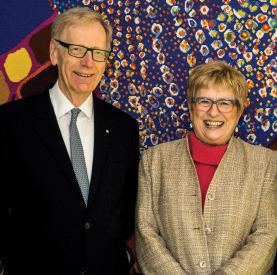
GEORGE H GOLVAN
Legal Friends of the Melbourne Recital Centre are delighted to announce that the Hon Justice Michelle Gordon and the Hon Justice Kenneth Hayne AC have accepted an invitation to become the group’s inaugural patrons.
The Legal Friends group was formed to bring together the many music lovers from the legal profession who share a passion for recital performance at the Melbourne Recital Centre, with its outstanding acoustics and ambience.
The aim is to assist the Melbourne Recital Centre to attract world-class musicians, maintaining it as the special place

for music-making in Melbourne. Legal Friends hopes to fund at least one performance each year by an outstanding artist, or group of artists, as part of the Centre’s ‘Great Performers’ series. The first project sponsored by Legal Friends will be a presentation on 6, 7 and 8 July 2015 of the three great Schubert song cycles, Die schöne Müllerin, Winterreise, and Schwanengesang, by two of the world’s leading performers: Austrian
The aim is to assist the Melbourne Recital Centre to attract world-class musicians, maintaining it as the special place for music-making in Melbourne.
baritone Florian Boesch and British pianist Malcolm Martineau. The Schubert song cycles will be a musical highlight for Melbourne in 2015. Legal Friends are very proud to have played a significant part in enabling this event to take place.
On 15 April 2015, Lyn Williams AM hosted a special function at her home for Legal Friends, which was attended by many, including our distinguished inaugural patrons. A highlight of the evening was hearing the outstanding French-Canadian pianist Louis Lortie in conversation with Mary Vallentine AO, CEO of the Melbourne Recital Centre. Louis Lortie praised the Elizabeth Murdoch Hall, describing its acoustics as the equal of any concert hall in the world.
As a prelude to the Schubert concerts, on Sunday 5 July from 2.30pm to 5pm, Legal Friends will present a Schubert song cycles study afternoon at the beautiful Mount Macedon home of one of our founder Legal Friends, Peter Murdoch QC, and his wife, Helen. On this occasion, pianist, accompanist and vocal coach Andrea Katz and bass-baritone Nicholas Dinopoulos will present a musical exploration of the famous Schubert song cycles to be performed by Florian Boesch and Malcolm Martineau. Refreshments will be served.
Should you wish to attend the song cycles study afternoon, become a member of Legal Friends or participate in any of its other activities, please contact the Centre’s Philanthropy Manager, Jacqueline Williams, on 03 9207 6453 or email jacqueline.williams@ melbournerecital.com.au, or speak to Bar members Meredith Schilling, George Golvan QC or Peter Murdoch QC.
We are indebted to the Victorian Bar for its agreement to fund the acquisition of portraits to mark the extraordinary contribution of three of the Bar’s pre-eminent members to the community and the law. To that end, the Arts & Collections Committee, on behalf of the Victorian Bar, has made the following commissions:
Louise Hearman, who recently won the Moran National Portrait Prize 2014, will paint the Hon. Michael Black AC QC, the only Victorian to date to be appointed Chief Justice of the Federal Court of Australia; Lewis Miller, an Archibald Prize winner (1998), will paint the Hon. Susan Crennan AC QC, to mark her retirement from the High Court in February 2015; Bill Henson, the celebrated Australian photographer, will make a photographic portrait of the Hon. Ken Hayne AC QC, to mark his retirement from the High Court in June 2015. These commissions will greatly enhance the Bar’s collection, which is on permanent display in the Peter O’Callaghan QC Gallery in Owen Dixon Chambers West. The Bar is honoured to add works by three of the most distinguished Australian artists engaged in portraiture today.
Arts & Collections Committee


our Excellency and Mrs Chernov, Honoured Guests, Distinguished Guests, the Victorian Bar.
There are a couple of things you may not know, or have read, about me. I am married and I am a mother. It is in that last role, that on Christmas Day last year, my teenage son handed me an envelope. It read “mum & dad”. As a parent, that was positive.
I opened it. Inside was a pitch black card. The blackness was interrupted by two large white words – “You’re weird”. Thanks. That was my son’s reaction.
The reaction of the others in the room on that Christmas morning is instructive.
My mother’s immediate response was “that’s nice dear”. For those of you not the product of a Methodist mother whose family was once Jewish, “that’s nice dear” is code for:
» I don’t know whether I approve or don’t approve
» No, I really don’t approve
» But I can’t say I don’t approve
» I need to say something quickly so that you don’t know whether I approve or I don’t approve. There is a judicial equivalent – that moment in any trial, any appeal when a judge surreptitiously picks up a pen followed by two simultaneous actions – if they’re coordinated – the making of a mark in the margin of their notebook (the problem is you don’t know whether it is a tick, a cross, a question mark, an exclamation mark or which emoji) whilst uttering those immortal words “I see”. The distinguishing factor between my mother and some judges – if you’re really alert in Court sometimes you catch the eye roll, the eyebrow raising or the facial twitch of the judge which just occasionally accompanies those immortal words. I of course would never engage

What about the dad of the “mum and dad” to whom the card was addressed. Well he was there. You might know him. His name’s Ken. He’s tall. A judge for more than 20 years who was once described by Marcus Priest of the
Australian Financial Review under the headline “High Court’s wicked wit not afraid of giving offence”; his response was what might be described as judicial learned behaviour – you will know it – when the judge leans forward adopting what looks like the start of the foetal position and then utters one word that seems to adjust in every aspect according to the judge’s level of despair, surprise, anxiety, irritation, level of back pain, degree of bowel discomfort? And on this occasion what was Ken’s witty, intelligent even offensive response – just one word evidencing surprise mixed with a degree of indignation but quelled by a glass or two of champagne – “Oh?”.
That leaves me. I had two responses – the immediate and what the common lawyers and the medical fraternity might describe or diagnose as delayed onset. My immediate response to being told “You’re weird” was – it could have been worse. In fact, it could have been a whole lot worse. I once refused to accept that my son had smashed his wrist – for two and a half days – and in those two and a half days made him attend swimming training and do an hour of violin practice. The exchange with the emergency doctor on the Tuesday night went something like this. “When did you hurt your wrist James?” – Sunday. “Who was with you?” – Mum. “What pain relief are you on?” – None. And that’s not all. I did turn up to my son’s school to collect him sporting a multi-coloured Mohawk – and I had won the bet.
So, initially, I was ok, probably even relieved.
My problem was that the card was on display until Epiphany. For those of you unfamiliar with the Christian religious calendar – that meant I walked past this black card numerous times daily, for 12 days. The phrase “you’re weird” kept staring at me. It was a recurring nightmare – the kind of reaction you have before, during and after appearing before the High Court on special leave. Can I say that now?

I encourage each of you to exercise the power you individually and collectively hold to distribute opportunities to those who might benefit but at the same time, to create an environment that lets those who receive those opportunities, be able to use them to the best of their ability.
And then I had my own epiphany – a sudden and striking realisation that my son was right, I am weird, really weird. Now, many of you will say that you have known that for years. Many of you will say that if it is has taken me this long to work that fact out, then I really am not that bright, or at the very least lack insight. I am prepared to accept all that. But if I was you, I wouldn’t be so smug. The Victorian Bar has a lot to answer for – indeed, I am so bold to suggest that the Victorian Bar played and continues to pay a, if not the most, significant role in creating my weirdness. Unfortunately for me (and possibly you), the kind of weirdness the Victorian Bar helped to create was not I suspect the weirdness that my son was necessarily referring to.
The weirdness for which you – the Victorian Bar – is responsible arises in this way. How is it that a woman from Western Australia whose father arrived in that state in the 1950s aged 16 as an economic refugee
with negligible secondary education and whose mother had to forgo university in WA so her brothers could be educated, end up in Victoria as a judge of the Federal Court of Australia, technically unemployed and soon a judge elsewhere. As I said, a if not the answer to that riddle is the Victorian Bar.
My first job in Melbourne was not the Victorian Bar, but at a factory which moonlighted during the day as a large commercial law firm. I was 23 years of age and arrived there on a 12-month exchange from a Perth law firm. My arrival at the firm was a shock – for them and for me. In my first half-yearly review, I was told that I had “a few rough edges” that needed polishing. “A few rough edges” – that is Protestant code for “your work ethic is extraordinary but we just don’t know if we can reconcile the money you are making for us with what you say or how you say it”. At the end of year review, their language had changed – I was confidently told “one of your
greatest assets is your tenacity”. It was the same year that Bob Dylan said –Money doesn’t talk, it swears. Why do I tell you that?
Well, Geoff Nettle has done very little wrong in his career. But he made one decision some would say was surprising, if not risky – a decision of which I was and remain the beneficiary – a decision not only to tell me to get my backside into gear and to come to the Victorian Bar but also that I could read with him. Geoff extended an opportunity to me. He took a punt on me. And he was not alone – there were so many others at the Victorian Bar that did the same – extended opportunities to me and ensured that I could take advantage of each opportunity to the extent of my potential.
I am not and never have been a card-carrying member of the women barristers association or a women lawyers group. To many, that is weird. That is not to say that I downplay their significance or the role that they play. I don’t. I have also never regarded myself as a feminist. Again, to many that is weird. I simply have never quite understood what that word in fact means.
But what I do now understand, more than ever, is that to effect change each of us must distribute opportunities to those who might benefit from our assistance.
Adapting Noel Pearson’s words at Gough Whitlam’s funeral, each of us is a repository of the power to distribute opportunity. I was and remain the beneficiary of so many at the Victorian Bar, many here this evening, that exercised the power they held by distributing opportunities to me. But what I have also realised, some would say late in life, is that the act of distributing opportunities of itself may not be enough. It may not be enough because unless the environment enables you to seize that opportunity and run with it, you are left with the statistics of what has been distributed and nothing about its potential for success or the level of success.
The Victorian Bar is a champion of distributing opportunities to those who might benefit from the exercise of the power that each of us holds. We just need to ensure that the environment is sufficiently fertile that those who receive, can take advantage of it. We need to rethink the way we work. The changes needed are not large, they are not wholesale, they are not uniform but they are significant, especially for the recipient.
Let me tell you a story. My son exists because of science. As part of that science, I had to attend the Royal Womens’ Hospital at lunchtime on a particular day. I was jammed. I was briefed to appear in the Court of Appeal that day as junior to Alex Chernov QC, now the Governor of this state. I told him of my dilemma and that I had decided to return the brief. His response was immediate and blunt for Alex – no, I was not to return the brief. Instead I was to arrange for a taxi to pick me up outside the Court, for the taxi to take me to the hospital, wait and bring me back. His response was – when you return, you return.
At 1pm the Court rose, Chernov told me to get going. Leaving my wig and robe behind (don’t tell Merralls), I left and returned about 1 hour later. Chernov was waiting for me. We returned to Court as though nothing had happened. But something had happened. Chernov had created an environment where I did not feel uncomfortable being released for one hour and no less importantly, he had changed the way he worked. I was the beneficiary of Chernov exercising his power to distribute an opportunity – in more ways than anyone could have hoped. About nine months later our son James was born – a product of science, the weirdest looks from those at the hospital who wondered what in the hell I was wearing when I arrived for that lunchtime appointment, the Court of Appeal and the Victorian Bar. And we have another physical reminder of that event. Just after my son’s birth,
Ken arrived home from the Court of Appeal with a small teddy bear. Pinned to the bear was a large card that read, “Welcome to the world. Let me introduce myself. I am the Court of Appeal teddy bear – small, extremely ugly and poo brown in colour”. The card was signed “The trial division of the Supreme Court of Victoria with special regards from Justice Hedigan”. One wonders what the High Court teddy bear would look like.
Of course, I am not talking about women at the Victorian Bar. I just happen to be a woman who benefitted and continues to benefit not only from distributed opportunities but the creation of an environment that enabled me to take advantage of them. There are many at the Victorian Bar that would benefit directly from what I received – not only women –especially in commercial work but also other barristers who because of disability, sexual orientation, race, colour, creed or for some other reason, need a break.
If the Victorian Bar can not only accommodate, but grow, a weirdo like me, then you certainly can accommodate and grow other members of the Victorian Bar, and the wider community, that might need assistance. I encourage each of you to exercise the power you individually and collectively hold to distribute opportunities to those who might benefit but, at the same time, to create an environment that lets those who receive those opportunities, be able to use them to the best of their ability.
The inside of my son’s “you’re weird” card read “I like it”. I not only like the fact that the Victorian Bar grew a weirdo like me, I am forever grateful to the Victorian Bar for the contribution it has made, and continues to make, to my weird state. So, to my son’s card, I would add a few words accompanied by the most appropriate and proper judicial response – “to the Victorian Bar, Thank you”.
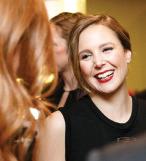

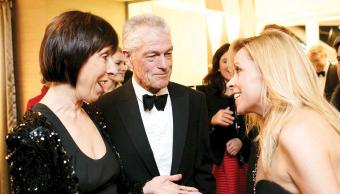
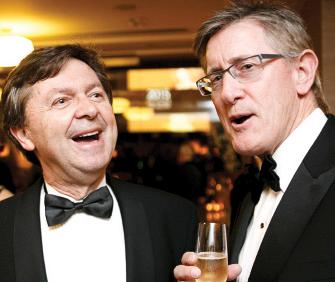
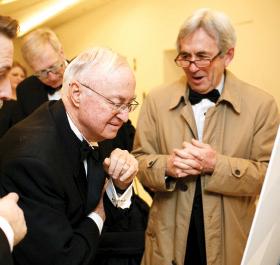
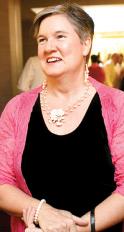
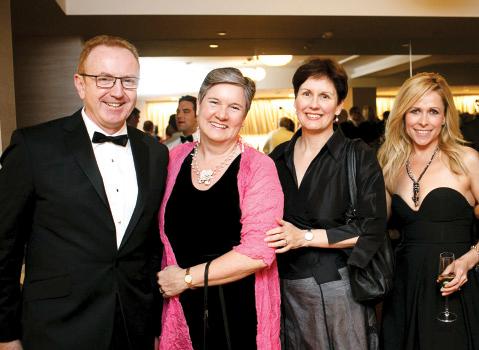
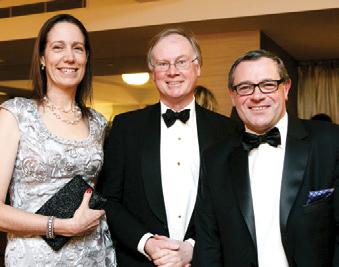

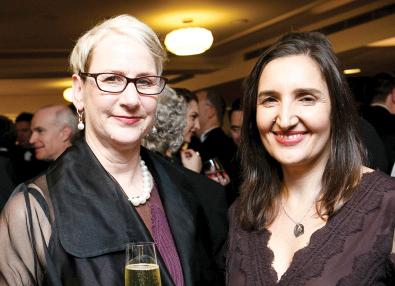
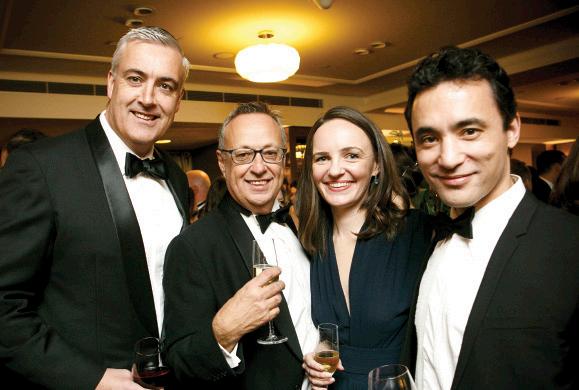
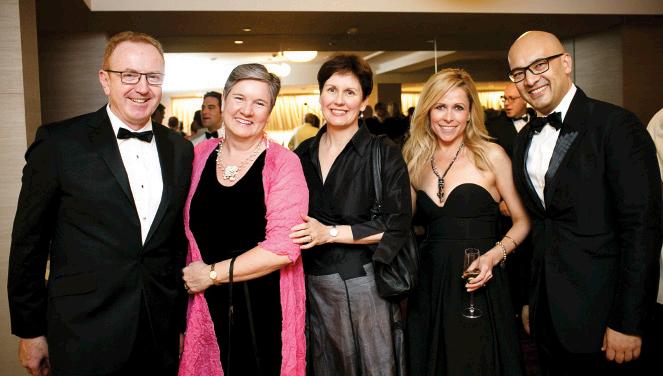
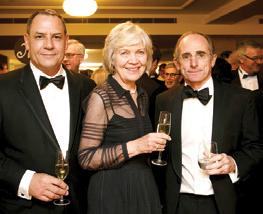


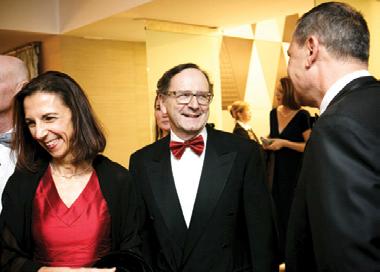
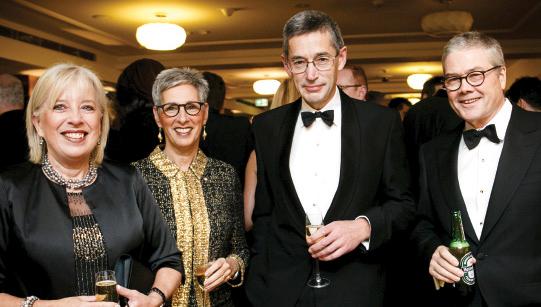


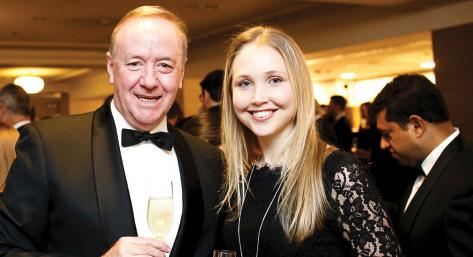
1. Andrew Maryniak QC, Sarah Fregon, James Peters QC 2. The Honourable Chief Justice Marilyn Warren AC, Michael Heeley,Sarah Fregon 3. James Peters QC, Ben Gauntlett, Myles Tehan, Rishi Gulati 4. John Goldberg, Sarah Goldberg 5. Catherine Kusiak 6. Michael Fleming QC, Ian McDonald 7. Helen Rofe QC, Hugh Fraser, His Honour Magistrate Philip Ginnane 8. The Honourable Justice Rita Zammitt, Jeremy Ruskin QC 9. Chief Magistrate Peter Lauritsen 10. Paul Czarnota, Ron Meldrum QC, The Honourable Peter Couzens 11. Jennifer Batrouney QC 12. Helen Symon QC, The Honourable Associate Justice Mary-Jane Ierodiaconou 13. Her Honour Judge Susan Pullen, The Honourable Linda Dessau AM, The Honourable Justice Geoffrey Nettle, His Honour Judge Anthony Howard 14. His Excellency the Honourable Alex Chernov AC QC, The Honourable Linda Dessau AM 15. Sasha Manova, Shane Thomas, Eleanor Mallett, Kristen Rose, Rosalind Avis 16. His Honour Magistrate Timothy Bourke, Nicholas Kanarev, Fiona Ryan, Robert Harper 17. Paul Jens QC, Barbara Myers 18. Will Alstergren QC, Michael Clough, Michael Wyles QC 19. Paul Halley, Richard Stanley 20. James Peters QC, Jennifer Batrouney QC, Samantha Marks QC, Sarah Fregon, Haroon Hassan 21. Paul Anastassiou QC, Mrs Elizabeth Chernov, David O’Callaghan QC 22. Kingsley Davis OAM, Marian Clarkin 23. Jonathan Evans, Hamish Austin, Clare Exell
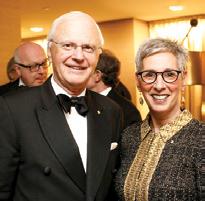
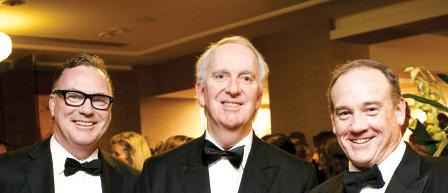
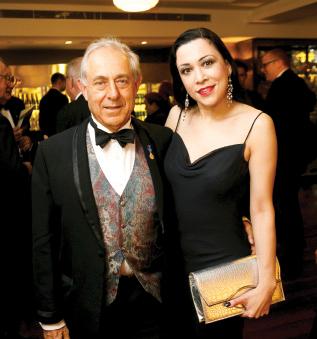
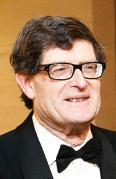

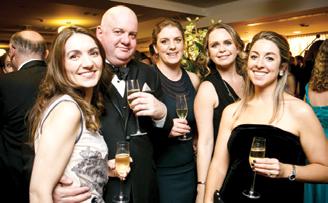

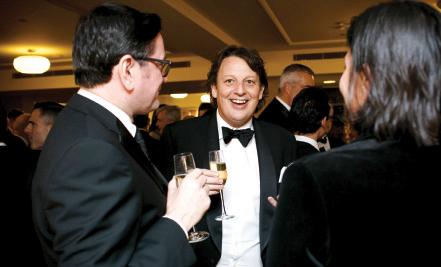

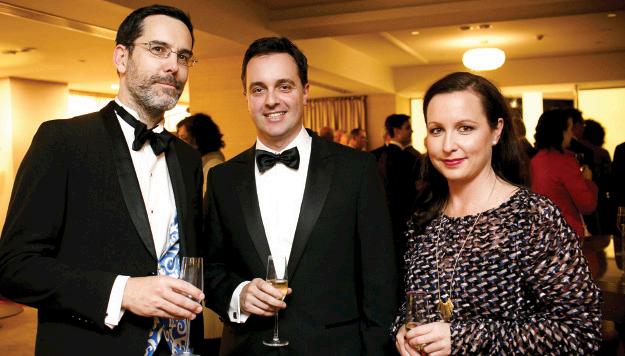
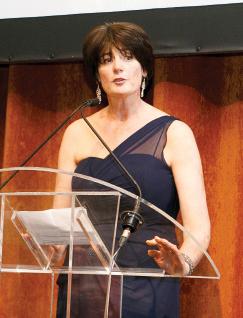
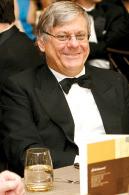

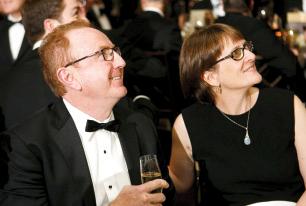
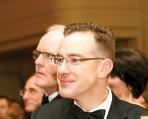
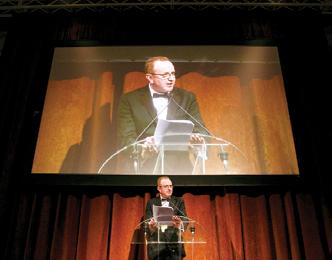
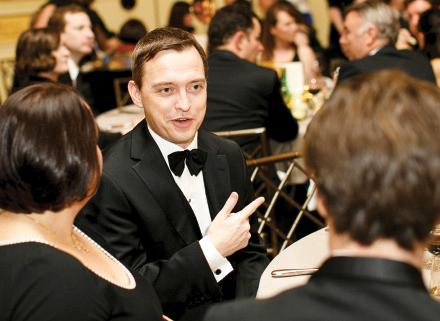
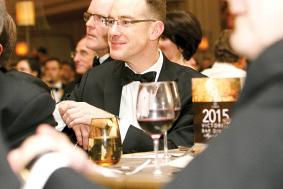
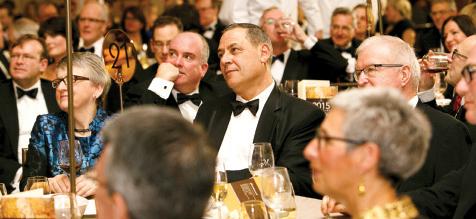
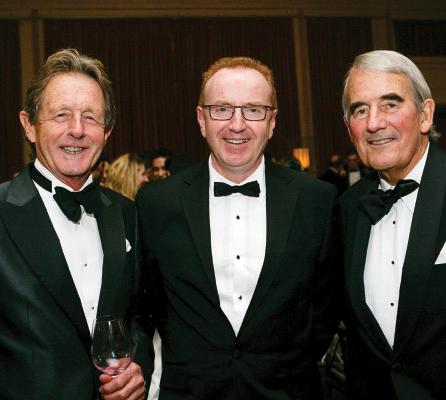


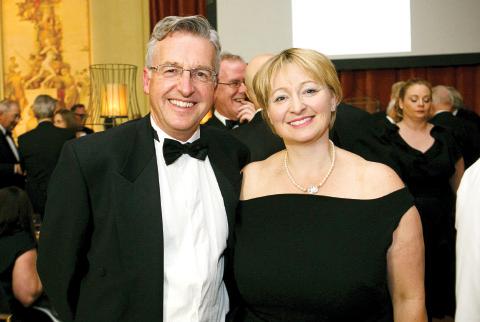
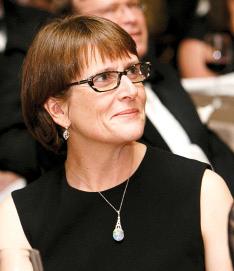

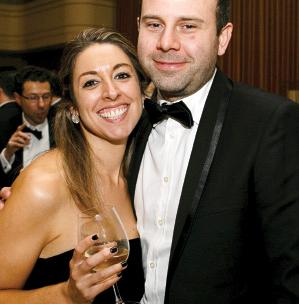

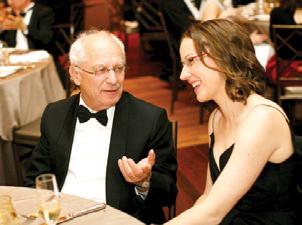
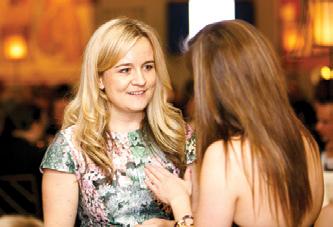

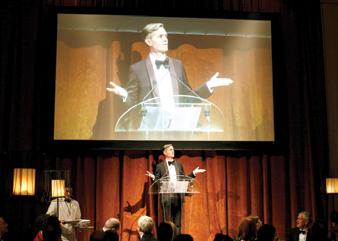





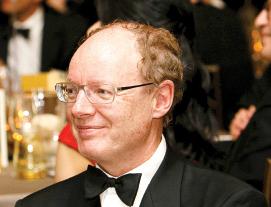
1. Fiona McLeod SC 2. Geoff Bartlett, Emma Peppler 3. James Peters QC 4. The Honourable Raymond Finkelstein QC, Siobhán Kelly 5. Alexandra Folie 6. Jeremy Ruskin QC 7. James Peters QC, The Honourable Justice Michelle Gordon 8. Ben Gibson 9. The Honourable Justice Betty King with the Honourable Chief Justice Marilyn Warren AC 10. Paul Anastassiou QC 11. The Honourable Justice Jonathan Beach 12. The Honourable Justice Anthony Cavanough 13. Dr Michael Rush 14. The Honourable Justice Michael McDonald, Susan Borg 15. Stephen O’Meara QC 16. Guests enjoyed Stephen O’Meara QC’s speech 17. The Honourable Justice Michelle Gordon 18. Rosalind Avis, Andrew Sim 19. Kingsley Davis OAM, Michael Heaton QC 20. Penny Marcou, John Richards QC, Christine Pollard 21. Andrew Sim, Astrid Haban-Beer 22. Brind Zichy-Woinarski QC, James Peters QC, Richard Stanley QC 23. David O’Brien, Krystyna Grinberg 24. Wendy Nettle and The Honourable Chief Justice Robert French AC 25. Joanna Davidson, Kylie Evans


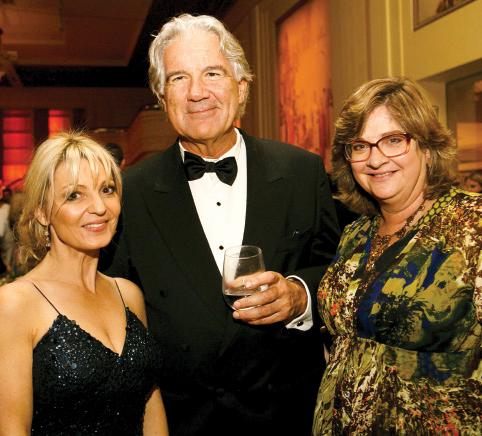
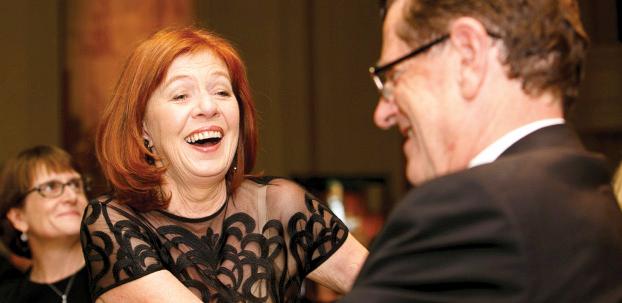
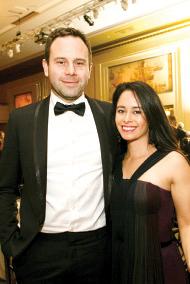
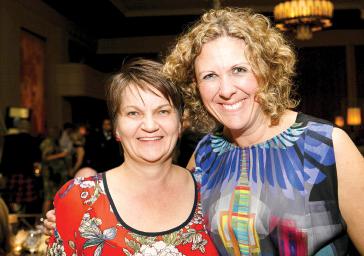
STEPHEN O’MEARA QC delivered the following speech
Mr Peters, honoured and distinguished guests, ladies and gentlemen.
When the President of the Bar snuck into my room some months ago and asked me to give this speech, I must have appeared apprehensive. He smiled and said, rather elusively: “Don’t worry about it, you’re the choice of a new generation”. Then, like Batman, he was gone.
Now, I have to admit that I was more than a little dubious about his claim. I mean, after all, since when is a 47-year-old man the choice of any generation … let alone a new one?
Not only that, but the last person I actually remember being referred to as the “choice of a new generation” was Michael Jackson. And he got his hair burnt off. And it didn’t get a lot better for him after that.
So, what could be the reason behind this honour?
I’ll tell you what it won’t be: it won’t be for my unremarkable academic achievements, or common law practice. What you have heard from O’Callaghan vastly overstates its true dimension.
Could it really be explained only by the fact that I sit in chambers right next door to last year’s acclaimed speaker? I hope not.
In the end it seemed akin to my encounter with a solicitor last year at a cocktail party. She heaped praise on my practice, and what she described as my “incisive legal mind”. When I had to leave, I said that it had been very nice to meet her. She said the pleasure was all hers: she’d always wanted to meet me. Then she looked at me again, and said: “you are Stephen McLeish?”
Justice McLeish, of course, is one of tonight’s many honoured guests. I’ll let you ask him whether he’s ever been mistaken for me.
That brings me to the real problem, what on earth was I going to talk about?
Seeking guidance, I consulted my colleagues. Many immediately identified topics of which I apparently must not speak, under any circumstances. Others wanted the speech to be as controversial as possible, so long as it didn’t refer at all to them.
So much for consultation.
I needed confidence, I needed decisiveness, I needed rapidity, I needed Justice David Beach, and he didn’t let me down.
He said, it’s easy, just do it like Ruskin, make it sound like you’re talking about everyone else, but really just talk about yourself.
When I thought about it, there is a much more appropriate person, namely Justice Michelle Gordon, as shown by her excellent speech earlier this evening. She knows a lot about tax. She had a giant practice as a barrister. She was appointed a Federal Court judge when she looked about 25. She’s efficient, decisive and organised. She’s imminently to become a member of the High Court. And she doesn’t have a grey hair to show for any of it.
I know all of this because some years ago I was on a Bar Committee presided over by Michelle. She was a study in industry, organisation and the brisk but sometimes brutal disposition of business. She was extremely cheery; she read absolutely everything.
By contrast, I usually read nothing, and I was very often late to meetings, which meant that often enough the meeting was over by the time I arrived, even if I was only 5 minutes late.
After Michelle was appointed to the Federal Court, leadership of the committee was taken over by one Jeremy Ruskin QC, with me in a supporting role.
Instantly, the business of the committee was in complete and utter disarray. I’d still read nothing, but neither had the new leader. Meetings now often went more than 90 minutes. There were tensions, which the incompetence of our regime might be said to have created.
In the course of one memorable meeting, about an hour in, a passionate difference of opinion emerged. It escalated, and at one point one member said to another: “why don’t we take it outside?”
I looked at Jeremy; he looked back, white as a sheet. Simultaneously, we mouthed: “what do I do?”
Now, if you’re a member of the High Court, or perhaps an administrative lawyer, you’d know immediately that this was to ask the wrong question.
The correct question was: “what would Michelle do?”

And the answer would have been: “clunk their heads together like a couple of coconuts”.
That, in a manner of speaking, is exactly what the Bar did to Jeremy and I at the end of that year, when we were relieved of our post.
All of which goes to show that there are two paths to speaking at this dinner. One is dedication, efficiency and brilliance. The other is the opposite.
But only one of those pathways can make you a member of the High Court, and the Victorian Bar warmly acknowledges her Honour’s appointment to the High Court of Australia, on which she will surely serve with distinction for many years to come.
In 2013 I was one of a huge collection of barristers briefed in the Kilmore Bushfire Class Action, heard in the Supreme Court before his Honour Justice JHL Forrest.
I was one of what seemed like about 50 barristers for the socalled “State parties”. We pleaded a collection of super-dooper legal defences. We were surely on the path to triumph.
My modest little portfolio extended to the cross-examination of lay witnesses and the issue of causation.
I knew that sitting at the very top of the pile of barristers for the defendant power company was one
JBR Beach QC, now Justice Beach of the Federal Court of Australia, and another of tonight’s honoured guests.
As a barrister, Jonathan had a fearsome reputation. He was brilliant. He knew everything about the law. He knew even more about science.
Someone told me that Jonathan had published a paper on the topic of causation in class actions. I thought I knew a fair bit about causation, you know, common sense and all that, but out of an abundance of caution I decided to get a copy of the paper.
I invite each of you to contemplate my utter horror when I attempted to read the ALJ article entitled “Class actions: some causation questions”.
Towards the end of the article, the author states a formula, seen above:
Y=a+b1X1+b2X2+…+bnXn+u.
The author then poses the following question and answer:
Now what is the picture created? Where there is one explanatory variable, you are fitting an imaginary line to the scatter points. For two explanatory variables, you are fitting a plane to your data set. For more than two explanatory variables, you are fitting a hyperplane to the data set.
Forget about “hyperplaning”, by that point I was hyperventilating. And the only “picture created”, in my room at least, was that of an utterly terrified
barrister. Terrified that this hocus pocus might somehow be relevant to my pet topic of causation in the very case that I was soon to be appearing in, opposed to the author.
I sat there and I wondered what on earth I was going to do.
I decided to get some advice from the most numerate person that I could think of, so I carefully wrote down the formula and took it and showed it to David Martin. He looked up from the racing pages and said that he didn’t know what it meant, but that I should go and ask someone like Jonathan Beach.
I went back to my room and I sat there for a long time.
When the case started we went on a view in which we visited several parts of the fire area. We started at the so-called “point of ignition”, on the top of a hill on a farm outside Kilmore.
His Honour said that we could wear casual clothes, which seemed perfectly sensible. But, just like for school children, casual clothes days can present a major fashion dilemma.
There we were, assembled at the top of the hill: the Judge, court staff, throngs of barristers and solicitors.
TP Tobin SC appeared for the plaintiff and group members. He was dressed in the style “gentleman farmer”: moleskins, RM Williams boots, checked shirt, panama hat. His junior was dressed practically identically.
Tim spoke at considerable volume, and with immense authority, concerning what he described as “the fire”. As we know, eccentric pronunciation is a welcome but contagious feature of litigation, and later in the case Tim wasn’t the only one referring to it as “the fire”; indeed it came widely to be referred to as “the ferocious fire”.
At some point, Jonathan arrived. He was wearing dusty shoes and battered jeans, like someone out of a John Steinbeck novel. He was also wearing a white business shirt that had never seen an iron. The ensemble was made complete by a


baseball cap that, rather ominously, bore the motif of a spider. The cap looked like this (01)
Although Jonathan’s looked like it had been lying for a week in the driveway of a petrol station.
This was, pretty plainly, a man who didn’t care about trivial things like fashion. And when he started speaking, I understood why: everything he said was so brilliant that I could barely understand a word of it.
I realised that I was completely out of my depth, so I daydreamed about how it could be that Jonathan had come to the view dressed in this way.
The most likely scenario seemed to me to be that of Arnold Schwarzenegger in The Terminator: where Arnie travels back through time, arrives naked outside a bar, walks in and says to a tough looking bikie: “I need your clothes, your boots, your motorcycle”. After a brief scuffle, he emerges looking like this (02)
It seemed to me most likely that Jonathan had materialised naked that morning at a skate park in Kilmore, there requisitioned the clothes,
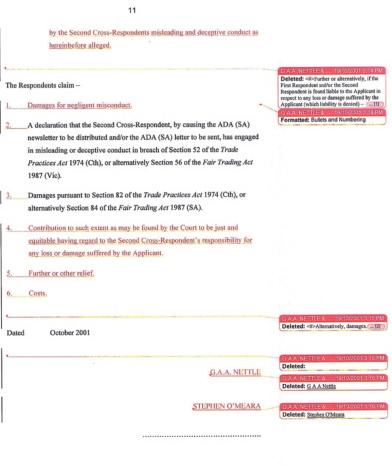
including spider hat, and then skateboarded to the view. Standing on that hill, the overall effect was roughly the same as if Arnie himself had turned up. And, when Jonathan spoke, he did sound like he was from the future.
There were a great many barristers in that case, and I should mention one to whom I owe a great debt of gratitude, namely Dr Michael Rush. Like me, the Doctor went to Monash. Unlike me, he then went to Oxford. After that, he worked for Justice Hayne. Through no fault of his own, he ended up being my junior and was there that day on the view.
Later that day we visited a property outside Wandong occupied by one of the sample group members. Her husband tragically perished in the fire.
She stood in the drive. She radiated the inner beauty of the un-crossexaminable.
Around her – huddled in the tortoise formation – were countless solicitors from Maurice Blackburn.
The Judge trotted up the drive like a sheep dog, introducing himself to
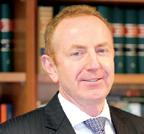

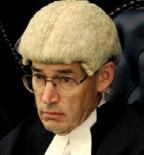

all and sundry as “Jack Forrest”. He was surrounded by court staff. He was very taken with the horses in an adjacent paddock.
And then, utterly singular, there stood the Terminator – staring ahead with laser eyes of frightening intensity.
I stood there in the late summer sunshine with the Doctor.
The Doctor: with his BCL, and brain the size of the MCG.
Me: with my pass for torts, and years of being pummelled on behalf of the VWA.
Together, we looked at the sample group member.
Then we looked at the Terminator: at that moment he looked like he was mentally calculating the co-efficient of friction of the driveway.
I turned to the Doctor, and said: “weren’t we supposed to win this case”.
The Doctor looked back at me. Then he looked at the Terminator. Then he looked at the ground. Then he sighed and said: “yeah, right”.
Another of tonight’s honoured guests is Justice Nettle, another recent and
warmly acclaimed appointment to the High Court of Australia.
In the mid-1990s, I was a solicitor at the firm now known as Allens. The firm retained Mr Nettle in a case and I had to attend his chambers for a conference.
We took along a pretty small team that day: maybe four partners, four solicitors, eight articled clerks. Each of us was carrying eight folders.
We sat at an enormous antique conference table in Mr Nettle’s room: there were peaceful scenes of England on the wall. Geoff was looking relaxed, in a three-piece suit. Before the conference started, I could hear a very loud noise from the next room. That, I was later to learn, was one TP Tobin.
Geoff started speaking. He had his own distinctive manner of speech, but he wasn’t talking about a “fire”; he didn’t need to: he had his own, which was revealed when he reached into his pocket and produced a pipe. Flames leapt from it as he puffed away like Sherlock Holmes. He puffed and talked about the law for a long time. It was extremely impressive.
That night I had dinner at the Fitzroy sharehouse of my then girlfriend, now wife. She also worked at what we used to call “the Plant” which as I’ve learned this evening, was referred to in another household as “the factory”.
I told Kate and her housemates about the brilliant barrister I’d met that day. I told them how he channelled the pure law, while sitting in his room smoking pipes. They seemed at least as impressed as I was. But I got the feeling that their mental picture of the scene was different to mine. This was confirmed when one of them piped up and asked: “when did he mull up?”
I had to explain that the scene owed more to Dickens than it did to Cheech & Chong.
I later learned that Geoff had chucked away the pipe and taken up running marathons.
Meanwhile, I’d come to the Bar, and thought I was really going places. After all, I’d run a case in the Magistrate’s Court over a pair of sunglasses worth 50 bucks. I was regularly going to VCAT; some of the members there even knew how to pronounce my surname.
One day I received a brief from my old firm, marked “you with Mr GAA Nettle QC”. We had to draw a pleading. This filled me with utter
It
who is also one of tonight’s honoured guests.
I then wondered whether I might get a nice picture of Justice Nettle if I searched in reverse. So I searched for images of Fiona McLeod SC. Sure enough, here is his Honour (06) a study in evident judicial perfection.
Then I had a dangerously narcissistic thought. The images of what luminaries, I wondered,
seems that I managed not to identify the principal claim for relief, and omitted to claim costs. Nor had I even got the names of counsel right. Yet another hitherto unsung victory for the two counsel system.
dread: the brilliant Mr Nettle would be marking my work.
I duly prepared the draft and emailed it to him. A little later I received a reply (03)
Above me is the final page of the red tracked draft, containing the prayer for relief.
It seems that I managed not to identify the principal claim for relief, and omitted to claim costs. Nor had I even got the names of counsel right.
Yet another hitherto unsung victory for the two counsel system.
Shortly after that Geoff was appointed to the Supreme Court. In becoming a judge, he stood to exploit one of his many natural advantages: his almost perfect judicial visage.
No person could look more judicial than Justice Nettle. You can come up here and look at him tonight if you like, but I thought it might help those toward the back if I showed a photo. So, I consulted what RJ Stanley QC, that most modern of men, would call “the website”; which is what the rest of you in this room would call “the internet”.
I searched for images of Justice Nettle. Inexplicably, it produced images of various other identities, including – (04) the President of the Victorian Bar; and (05) the President of the Australian Bar Association,
might be linked to me? No doubt some suitably heroic figure: maybe Nelson Mandela, or the Dalai Lama?
So I typed in my own name, and the result was a photo of me that I recognised from the Dever website, and with it was a photo of (07) Kermit the Frog.
I sat in my room, crushed, yet again. My mind wandered: could this have anything to do with my exasperated leader settling my incompetent pleading all of those years ago?
I thought I should seek consolation from someone very kind and pure of heart. That excluded all members of the common law bar association. Instead, I sought a private audience with my wife’s yoga teacher.
There we sat: me in a haze of excruciating pain, attempting lotus.
I explained to her about this brilliant man, a High Court judge, whom I admired, and feared may think of me as Kermit the Frog, not to mention the nine billion potential viewers of the internet.
She smiled serenely, and then she said: “Don’t worry, you couldn’t be the only Muppet he’s ever had to deal with”.
At that, she placed my hands at heart centre and bowed my head, and she said to me, as I say to you, “namaste”.


MATT COLLINS
Ilike Paris in winter. There are fewer tourists and it is easier to tap into the rhythm of the city. Some days are crisp and clear, with blue skies and a light that accentuates the mildest of variations in the colours of the limestone. If you are really lucky, snow might have fallen overnight, creating a streetscape of such aching beauty that it is almost ethereal. But it was drizzling on 7 January 2015, the grey sky and bleak light a clumsy metaphor for the appalling chain of events that was about to unfold.
I was no more than a kilometre away from the headquarters of Charlie Hebdo at the time of the attack and became aware of it when my concerned mother, having heard the breaking news, rang to check that I wasn’t moonlighting as a cartoonist for a left-wing newspaper. Within minutes, the power of the French state had visibly swung into action: there were blazing sirens, gun-toting police and soldiers everywhere. Within about an hour, the French president, François Hollande, was at the site of the attack, at a time when his safety could
not possibly have been guaranteed. Over the succeeding hours, the chaos seemed to intensify: at first two thought dead, then 10, 11, 12. We learned of the getaway of the attackers which, were it not so terrifying, might itself have been a caricature befitting a cartoon or video game. And the local 24-hour news channels began voraciously generating and consuming content: endless loops of amateur video footage, interviews with eyewitnesses, national and international reaction, and bare rumour and speculation.
Then, as seems so often to happen in the immediate aftermath of tragedy, there was a kind of calm. By midevening on the day of the attack, tens of thousands of ordinary Parisians had spontaneously assembled at the recently renovated Place de la République, the splendid monument to the Third Republic, which reigned from 1870 until 1940. There were similar scenes around the country. On the following morning, flags flew at half-mast, there was a national minute’s silence, and scores of kids at a Muslim school were filmed silently holding signs reading, “Pas en mon nom” (“Not in my name”).
We now know that that was just the eye of the storm. The Charlie Hebdo attackers had escaped the city, eventually barricading themselves in an industrial complex at Dammartinen-Goële, north of Paris. Meanwhile, another deranged soul took hostages in a kosher supermarket less than five kilometres away from the scene of the earlier attack. I was watching coverage of the Dammartin-en-Goële siege in a café when news of the second crisis broke. There was a febrile tension in the air that I have not before experienced and will not easily forget. At the same time, though, there was an undeniable sense of shared humanity, revealed in the exchange of a polite smile with a passer-by on the street, or a conversation with a shopkeeper. Even though the crisis was not yet over, and there was no way of viewing what had occurred with detachment or perspective, life went on.
At the end of a ghastly three days, there were 17 dead and many more injured. At a unity march on 11 January, some 1.5 million people, led by 44 world leaders, assembled in the centre of Paris: the largest crowd since the liberation of the city in June 1944. What struck most about the crowds gathered around France and elsewhere, including at Federation Square and Martin Place, was the palpable sense of quiet resolution, and the simple elegance in the symbolism of silently raised pens and the three words, “Je suis Charlie” (“I am Charlie”).
Less than a week after the attack, a new issue of Charlie Hebdo , put out by the surviving staff, hit the newsstands. Almost 8 million copies were sold, a tad more than the usual print run of about 60,000. Even with that circulation, copies were hard to come by; I eventually managed to get my hands on a copy almost a week later.
As they fled the scene of the attack, one of the terrorists was heard to say, “We have killed Charlie Hebdo”. Nothing could be further from the truth. Far from killing Charlie,
There was a febrile tension in the air that I have not before experienced and will not easily forget.
the attack gave birth to at least eight million Charlies.
The mark of a society can be seen with clarity in its response to tragedy. On display in France was mostly the same determination that we have seen too many times in Australia in response to events like the Port Arthur massacre, the Bali bombing and the Martin Place siege, to name just three. Against that, there were also numerous attacks on mosques and a good deal of vile vilification of the Muslim community. But events like these strain not just the coherence of a society; they also challenge our lawmakers. In response to the heightened terror threat, our parliament last year passed laws which, despite the government’s protestations to the contrary, restrict freedom of expression and of the press.1 Put simply, in our name, the parliament responded to a threat to freedom by limiting freedom. Such responses appeal to the worst in our natures and reflect a general degradation of our public discourse into binary divisions between good and evil; member of Team Australia or apologist for terrorism. After the Charlie Hebdo attack, there were immediate calls in France for tougher anti-terrorism laws. But I discerned no stomach there for responding to an attack on press freedom by limiting press freedom; no appetite for delivering to the terrorists the precise result they had set out to achieve.
The stereotypical view is that there are fewer limits on freedom of expression in Australia than in France, but in truth the position is more complicated. Freedom of expression has no constitutional foundation in Australia, beyond a limited implied freedom protecting the reasonable discussion of government and political matters.2 As well as operating as a limit on both federal3 and state4 legislative powers, the common law must conform with the implied freedom.5
The most significant restrictions on freedom of expression are to be found in the law of defamation which, in Australia, is largely a strict liability and personal tort, with disputes resolved through expensive and time-consuming civil proceedings, often resulting in substantial damages awards and crippling costs orders. The common law defence that has evolved to conform with the implied freedom6 does not appear ever to have operated to protect the press in a defamation action in Australia. On the other hand, restrictions on freedom of speech in Australia are generally civil in nature.7
In France, by contrast, freedom of expression is described as “one of the most precious” of human rights in article 11 of the Declaration of the Rights of Man and of the Citizen (1789), and is further protected by article 10 of the European Convention on Human Rights (1950). Defamation law in France, although also a civil wrong, is basally criminal in nature, with disputes usually resolved quickly in summary proceedings.8 There is a defence in French law for publishing a defamatory statement in good faith, which has no real counterpart in Australian law.9 The maximum fine for a private defamation, such as a defamatory statement made in a meeting or a document of limited circulation, is €38. The maximum fine for public defamation is €12,000, or €45,000 if the statement concerns the public functions of certain public officials. Maximum fines rise to €750 for private and €45,000 for public defamations that are published because of the ethnic, national, racial or religious origins, gender, sexuality or handicap of a person or group. Very modest damages awards are occasionally made, sometimes in amounts as low as €1, the rationale being that the finding of the court and the imposition of a fine will
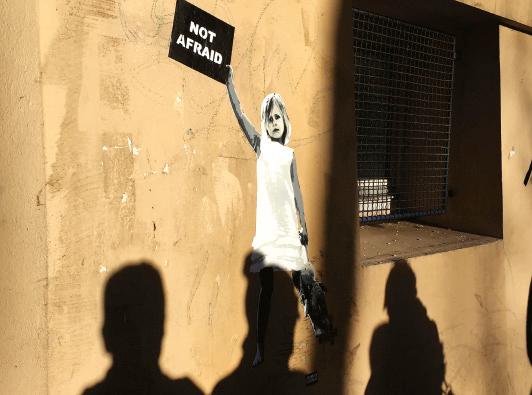
Having pored over several issues of Charlie Hebdo, I have come firmly to the view that nothing remotely like it is or could be published in Australia.
vindicate the reputation of the defamed person or group better than an award of damages.
The publisher of Charlie Hebdo has been prosecuted in France for defamation and related offences on 48 occasions since 1992, most often at the instigation of extreme right-wing politicians and groups, other media organisations and journalists, and Catholic and Muslim associations. It lost nine of those cases. Its most famous loss followed publication in 1998 of a cartoon lampooning hunger-striking Algerians. On that occasion, the publisher was fined 30,000 francs (about $1,200 at the time) and the cartoonist given a three-month suspended sentence.10
In 2007, Muslim groups took action against the publisher of Charlie Hebdo after it republished caricatures of the prophet Mohammed that had earlier appeared in a Danish publication, Jyllands-Posten, provoking protests around the Muslim world that resulted in some 200 reported deaths, as well as attacks on Danish and other European embassies and churches. The action against the publisher of Charlie Hebdo failed. In 2011, Charlie Hebdo published a special edition
bearing the masthead Charia Hebdo, with Mohammed named as guest editor. The offices of the publisher were firebombed the night before the issue hit newsstands. The offices of the publisher and several of its senior staff have since had aroundthe-clock police protection. In 2012, the newspaper published a satire of the wildly popular French film, Intouchables, in which Mohammed was depicted in a wheelchair, being pushed by a rabbi. An action brought against the publisher for blasphemy failed.
Having pored over several issues of Charlie Hebdo , I have come firmly to the view that nothing remotely like it is or could be published in Australia. The newspaper is not a tame or safe read. Each edition contains scores of cartoons and satirical text. Its favourite targets are right-wing politicians and religious leaders; the most common sources of humour are unbridled ridicule and sex. Through humour and caricature, it questions orthodoxy, shows contempt for authority and is relentlessly provocative.
To Australian sensibilities, much of what appears in Charlie Hebdo is
shockingly politically incorrect and juvenile. But the value in freedom of speech lies not in the expression of what we agree with, or in tolerating opposing views; it lies in celebrating the right of dissent. Charlie Hebdo is uproariously funny, and while it is sometimes gratuitous, more often there is a political point underlying the humour.
At a cultural level, we do not share France’s long tradition of outrageous and subversive satire. The Australian tall poppy syndrome permits open mockery of politicians, business leaders and figures from the worlds of sport and entertainment. Some racial stereotyping is tolerated, at least when engaged in by members of the group in question or portrayed in a relatively affectionate sense –think of Wogs out of Work or Black Comedy. But a line is generally drawn in modern Australia – perhaps because of lingering shame about our treatment of Aboriginal and Torres Strait Islander peoples and the White Australia policy – at the negative stereotyping of racial groups. Religion, too, is a delicate subject for satire in Australia, although there is at times an exception for criticism of mainstream Christianity. In France, by contrast, a deep national commitment to a radical form of secularism seems to have fostered an environment where every form of belief can be held up to uncensored contempt and ridicule, and policies such as the banning of the wearing of burqas in public places are surprisingly uncontroversial.
At a legal level, a patchwork of hate speech laws was introduced from 1989 onwards in Australia.11 The provisions bear some similarities, in form, to the laws on group defamation that operate in France, but Australian provisions have generally been interpreted in a manner that is more restrictive towards freedom of expression, and our adversarial system seems to have led to controversies being more drawn out (and no doubt more expensive to pursue and defend) here than in France.
The most well-known Australian provisions are those in sections 18C and 18D of the Racial Discrimination Act 1975 (Cth), inserted following the passage of the Racial Hatred Act 1995 Those sections provide: 18C Offensive behaviour because of race, colour or national or ethnic origin
(1) It is unlawful for a person to do an act, otherwise than in private, if:
(a) the act is reasonably likely, in all the circumstances, to offend, insult, humiliate or intimidate another person or a group of people; and
(b) the act is done because of the race, colour or national or ethnic origin of the other person or of some or all of the people in the group.12
(2) For the purposes of subsection (1), an act is taken not to be done in private if it:
(a) causes words, sounds, images or writing to be communicated to the public; or
(b) is done in a public place; or
(c) is done in the sight or hearing of people who are in a public place.
(3) In this section: public place includes any place to which the public have access as of right or by invitation, whether express or implied and whether or not a charge is made for admission to the place.
18D Exemptions
Section 18C does not render unlawful anything said or done reasonably and in good faith:
(a) in the performance, exhibition or distribution of an artistic work; or (b) in the course of any statement, publication, discussion or debate made
or held for any genuine academic, artistic or scientific purpose or any other genuine purpose in the public interest; or
(c) in making or publishing:
(i) a fair and accurate report of any event or matter of public interest; or
(ii) a fair comment on any event or matter of public interest if the comment is an expression of a genuine belief held by the person making the comment.
In the most prominent case concerning the operation of sections 18C and 18D of the Racial Discrimination Act, in which I was led by Neil Young QC for the unsuccessful publishers,13 Bromberg J surveyed the authorities and relevantly concluded, by way of summary, that:
» whether conduct is reasonably likely to offend, insult, humiliate or intimidate a group of people for the purposes of section 18C calls for an objective assessment of the likely reaction of those people, measured by reference to an ordinary and reasonable member of the group, or a sub-group of the group, and their values and circumstances;14
» in order to establish that an act was done reasonably and in good faith for the purposes of section 18D, the actor must “evince a conscientious approach to advancing freedom of expression in a way designed to honour the values asserted” by the Racial Discrimination Act, by taking care and diligence “to minimise the offence, insult, humiliation and intimidation suffered by the people likely to be affected by the conduct” and “to guard against the offensive conduct reinforcing, encouraging or emboldening racial prejudice”;15 and
» the use of provocative and inflammatory language or gratuitous asides, and the inclusion of errors or distortions of fact, all tell against
conduct having been engaged in reasonably and in good faith.16
Cartoons are capable of being challenged under section 18C of the Racial Discrimination Act. In September 1997, The West Australian published a cartoon titled “Alas poor Yagan” which, over eight panels, lampooned a controversy that had erupted in connection with the return to Australia of the head of Yagan, an Aboriginal leader who had died at the hands of settlers in 1833. The head had been discovered in a graveyard in Liverpool. The cartoon had “reflected upon the mixed ancestry of some of the Aboriginal people involved” and implied “an unseemly desire on the part of some of them to take advantage of public funding to travel to England”.17 The last panel of the cartoon showed Yagan’s head in a crate marked “fragile”, with the thought bubble, “Crikey – give me a warm beer in a quiet pommy pub any day…” A Commissioner of the Human Rights and Equal Opportunity Commission ruled that the cartoon had, among other matters, treated the issue of death in a manner which caused offence to Aboriginal people, and had reinforced a misinformed and stereotypical view of Aboriginal people taking advantage of government grants.18 The requirements of section 18C were thus satisfied. However, the Commissioner found the exemption in section 18D to have been made out, principally because the cartoon had been published after a series of articles and editorial comments in the newspaper which had treated the issue in a serious and balanced way and which “in the main, encouraged unity in, and support of, the Aboriginal community”.19 An application for judicial review of the Commissioner’s decision was unsuccessful,20 as was an appeal from that decision to the Full Court of the Federal Court.21
In 2013, the incoming Coalition government famously promised to repeal sections 18C and 18D, before reversing its policy in August 2014 in
the interests of “preserving national unity”.22
The view to which I have come about the compatibility of Charlie Hebdo with Australian cultural and legal norms can be illustrated with three examples taken from the pages of the 14 January issue of the newspaper, published in the immediate aftermath of the terror attack. The cartoons are reproduced with section 18D(b) in mind.
In the first cartoon (fig. 1), four emaciated but smiling figures are shown in a sweatshop maniacally churning out “Je suis Charlie” t-shirts. One of the figures says, “Our hearts are with you”. The caption reads, “Meanwhile in Bangladesh”.

This cartoon, if published other than in the context of a discussion of the kind undertaken in this article, would be likely to be offensive and insulting to at least some reasonable members of the Bangladeshi community; it implies that they are malnourished, work in sweatshops, and revel in the opportunity to profiteer from terrorism. The threshold in section 18C thus appears easily to be crossed. Nor would the cartoon be likely to be protected by section 18D as it has been interpreted in the authorities, absent a purpose of the kind that underlies its reproduction here: it reinforces negative racial stereotypes; and any valid political point about profiteering from terrorism could just
as easily have been made without singling out a group on the grounds of its race, colour or national or ethnic origin.
In the next cartoon, malevolent looking religious leaders are seen hovering over a globe of the world. One is obviously Catholic, another obviously Jewish, the third perhaps Muslim or Russian Orthodox. The Catholic figure says, “I’ll keep the Western sector, you keep the Eastern sector”. The caption reads, “Yalta at the Vatican”, implying that the world would have been carved up on religious grounds if priests and rabbis had presided over the Yalta conference held in the last months of World War II, or perhaps that religious leaders in fact pulled the strings at Yalta. The cartoon plays on ethnoreligious stereotypes, with no attempt made to minimise the offence that might reasonably be felt by at least some members of the groups depicted. The political point being made is obscure, or at least unlikely to be clear to many ordinary readers of a satirical newspaper published 70 years after the event being parodied.
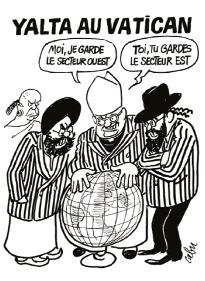
There can be no doubt about the capacity for cartoons of this kind to cause deep and genuine offence. Without for a moment meaning to suggest that the cartoons are to be equated in terms of the offence they will have caused, consider the controversy that erupted last July when Fairfax newspapers published a cartoon illustrating an article by Mike
Carlton that was critical of Israel’s policy towards Gaza. The cartoon depicted an elderly man with a large nose, wearing a yarmulke and sitting on a hill in an armchair bearing the Star of David. The man was seen watching over explosions in Gaza, holding a remote control. Publication of Carlton’s article and the cartoon provoked a deluge of criticism from myriad sectors of the community that culminated in Carlton’s resignation, a call for a boycott on Fairfax, an adverse finding by the Australian Press Council, and the eventual publication of an apology. The apology said that the cartoon was “menacing”, because it “closely resembled illustrations that had circulated in Nazi Germany … that continue to haunt and traumatise generations of Jewish people”.23

Finally, a triptych (fig. 3), about which readers can make up their
own minds. The first frame depicts a queue at the office of Erasmus, an organisation that helps students find opportunities abroad. The figure carrying a bag full of guns says, “Nothing for Syria? Never mind, I’ll just hijack an aeroplane…”
In the second frame, a woman is packing a suitcase. She says to the guntoting man at the door, “Don’t take that! You’ll end up with excess baggage!”
The third frame shows two young men arriving somewhere in the Middle East. The caption reads, “You did year 12 in the 93rd?[24] Right! Latrine duty!”
In the commissioning and writing of this article, there was lively debate about the best way to convey to readers the differences between the Charlie Hebdo school of satire and that with which we are familiar in Australia. My strong view was and remains that it would have been impossible to develop the themes of this article adequately without reproducing illustrative examples of the kinds of cartoons that appear in the pages of Charlie Hebdo, even at the risk of offending and insulting some readers. The three examples reproduced here are representative, but by no means at, or even near, the high end of the spectrum of what is routinely published in Charlie Hebdo in terms of their capacity to offend and insult.
The media is the mirror by which society is reflected and interpreted. Limitations on freedom of the press necessarily affect how we are able to perceive and make sense of the world. The Charlie Hebdo attack was unmistakably an attempt to silence a subversive voice, without which, in my view, we would be poorer. While opinions can reasonably differ about where to draw the line, my concern is that in this country, we too often pay lip service to freedom of speech and of the press, without articulating why it matters, even as we chip away at its foundations. While nothing good can truly be said to have come of the Paris attacks, there is at least solace, in my mind, in the fact that the terrorists failed
in their objective, instead steeling the resolve of a nation and its leaders, and drawing attention to a unique voice.
1. See eg National Security Legislation Amendment Act (No 1) 2014 (Cth), insertion of new s 35P (prohibition on the disclosure of information relating to “special intelligence operations”, even where disclosure is in the public interest and, eg, discloses official malfeasance); Counter-Terrorism Legislation Amendment (Foreign Fighters) Act 2014 (Cth), insertion of new s 33ZZHA to the Criminal Code (prohibition on disclosure of information relating to the execution of delayed notification search warrants), insertion of new s 119.7 (prohibition on recklessly publishing items of news that were procured by the provision of monetary or other consideration and are for the purpose of recruiting persons to serve in any capacity with certain armed forces in foreign countries).
2. State bills of rights, such as the Charter of Human Rights and Responsibilities Act 2006 (Vic), despite containing lofty sentiments concerning freedom of expression (see s 15), have had no impact upon laws limiting freedom of expression, such as the law of defamation.
3. Nationwide News Pty Ltd v Wills (1992) 177 CLR 1; Australian Capital Television Pty Ltd v Commonwealth (1992) 177 CLR 106.
4. Theophanous v Herald & Weekly Times Ltd (1994) 182 CLR 104.
5. Ibid; Lange v Australian Broadcasting Corp (1997) 189 CLR 520.
6. The Lange defence: Lange v Australian Broadcasting Corp (1997) 189 CLR 520.
7. Criminal libel remains an offence in some states, including Victoria, and serious racial vilification is an offence in some states. Prosecutions are very rare. Commonwealth anti-terror and national security legislation contains criminal offences for the disclosure of certain information: see eg the provisions referred to in n 1. Other notable criminal legislation impacting on freedom of speech includes s 471.12 of the Criminal Code (Cth), which makes it an offence to use a postal or like service in a way that a reasonable person would regard as being, in all the circumstances, offensive. That legislation was held by the NSW Court of Criminal Appeal to be compatible with the implied constitutional freedom for the discussion of government and political matters in Monis v R [2011] NSCWCCA 231, (2011) 256 FLR 28. On appeal, the High Court split 3:3 over the correctness of that decision, with the result that the appeal was dismissed: (2013) 249 CLR 92. The
defendant in those cases was Man Haron Monis, who had sent obnoxious letters and a recording to parents and relatives of soldiers killed while on active service in Afghanistan and others. In December 2014, Monis carried out the Martin Place siege at which he died, along with two innocent victims, including a member of the NSW Bar.
8. The key provisions are to be found in articles 29–35 of the loi du 29 juillet 1881 sur la liberté de la presse.
9. Ibid, article 35.
10. “Charlie Hebdo, 22 ans de procès en tous genres”, Le Monde, 8 January 2015.
11. Anti-Discrimination Act 1977 (NSW), as amended in 1989 (racial vilification), 1993 (homosexual vilification), 1994 (HIV/AIDS vilification), 1996 (transgender vilification); Discrimination Act 1991 (ACT) ss 65–7 (racial vilification); Racial Discrimination Act 1975 (Cth), as amended in 1995 by the insertion of ss 18C and 18D; Anti-Discrimination Act 1991 (Qld) as amended in 2001 by the insertion of ss 124A, 131A (racial vilification); Racial Vilification Act 1996 (SA); Racial and Religious Tolerance Act 2001 (Vic); Criminal Code Act 1913 (WA), as amended in 2004 (racial vilification).
12. By s 18B, an act is done “because of” a person’s race, colour or national or ethnic origin if one of the reasons is the race, colour or national or ethnic origin of the person (whether or not it is the dominant or a substantial reason for doing the act).
13. Eatock v Bolt (2011) 197 FCR 261.
14. Ibid, [15], [241]–[252].
15. Ibid, [425].
16. Ibid.
17. Bropho v Human Rights and Equal Opportunity Commission (2004) 135 FCR 105, [2].
18. Ibid, [37].
19. Ibid, [38].
20. Bropho v Human Rights and Equal Opportunity Commission [2002] FCA 1510.
21. Bropho v Human Rights and Equal Opportunity Commission (2004) 135 FCR 105.
22. “Tony Abbott dumps controversial changes to 18C racial discrimination laws”, The Age, 5 August 2014.
23. “We apologise: publishing cartoon in original form was wrong”, Sydney Morning Herald, 15 January 2015.
24. A poor district north of Paris with a large Muslim population.

The purpose of this note is to provide a brief update on the recent progress of the Bar readers’ course. DAVID J O’CALLAGHAN, CHAIR, EDUCATIONAL AND PROFESSIONAL DEVELOPMENT COMMITTEE AND READERS’ COURSE SUB-COMMITTEE.
The last eight readers’ groups, comprising a total of 297 readers, have gained entry to the course via the Bar exam. As a result of the exam, the length of the course has been reduced from three to two months and the waiting list (as long as four years for a guaranteed place in 2009) has been abolished.
The principal objective of the readers’ course remains to ensure that by the time each reader has signed the Bar Roll they have acquired the fundamental skills of an advocate. It is for this reason that all readers must successfully complete a variety of advocacy
exercises designed to assess their competence to lead evidence, cross-examine and make opening and closing addresses. As with a number of other disciplines covered in the course, pleadings as a topic is now taught in a separate workshop.
Our teachers, coaches and assessors can now rightly assume that all readers participating in the course have a sufficient level of understanding of the core subjects examined, namely ethics, criminal procedure, civil procedure, and evidence.
As is the case in the other Australian jurisdictions in which an exam is a prerequisite to signing the Bar Roll (currently New South Wales and Queensland), candidates

must obtain a minimum grade of 75 per cent to be offered a place in the readers’ course.
Prospective candidates are given considerable assistance to prepare for the exam, including having the opportunity to participate in exam preparation seminars with the Chief Examiner and to review past exam papers with sample answers posted on the Vic Bar website. The Bar exam is now also conducted on a partial openbook basis. Details can be found at www.vicbar.com.au/about-us/howto-become-a-barrister/victorian-barentrance-exam.
The Readers’ Course SubCommittee, together with Rachel Chrapot, the Bar’s Manager of Education and Professional Development, and Wendy Pollock, Co-ordinator of the readers’ course, have worked consistently over
the past few years to improve the course and to ensure that the syllabus follows a coherent pedagogical structure.
The most significant recent change has involved an increased focus on the critical role played nowadays by written advocacy. To this end, the Bar sponsored Professor Noah Messing, author of The Art of Advocacy – Briefs, Motions, and Writing Strategies of America’s Best Lawyers and a professor of legal writing at the Yale Law School, to teach at the March 2015 readers’ course (and to provide a series of intensive workshops on legal writing to the Bar more widely). Prof Messing will continue to play a central role in the written advocacy component of readers’ course and Bar education generally and will return to teach in the 2015 readers’ course and beyond.
Other recent developments have included the publication of a guide for mentors, the introduction of individual business coaching sessions, the development of ethics workshops with members of the Ethics Committee, and sessions on mindfulness techniques and well-being.
For the last three courses, the Hon Ken Hayne AC QC has presented, among other things, a lecture, followed by a Q&A session, entitled “How to Read a Case.” It is available to all our members as a podcast.
The Readers’ Course SubCommittee has also worked more closely in recent times with a number of judges in the Victorian Registry of the Federal Court. We are particularly grateful for the role that the Hon Julie Dodds-Streeton QC played in that regard before her retirement and to the many continuing contributions of Justices Middleton, Pagone and Murphy.
The new readers continue to reflect great diversity. Roughly speaking, about a quarter of readers in every intake intend to practise
in each of the criminal, common law and commercial jurisdictions (respectively), with the balance made up of family, public and industrial law specialists. A very high proportion of readers in recent years have practised as solicitors. About half have served as a judge’s associate and many have worked both within and outside the legal profession in a vast array of capacities, including as officers with the Australian Defence Forces in the Middle East, Timor-Leste and Afghanistan, in the Royal Australian Air Force, as legal advisers to the International Criminal Tribunal in the Hague, as musicians, Olympic athletes, healthcare providers, disability workers, and as volunteers at community legal centres both in Australia and overseas. One recent reader is also an international professional tennis umpire!
The Bar continues its commitment to educating young lawyers from the South Pacific region. Since 1987 many lawyers from the South Pacific have participated in the readers’ course. Two South Pacific readers will again join the September intake this year. This program is now administered by the Pac-Rim Sub-Committee, chaired by the Hon RA Finkelstein QC.
The readers, and the Bar, as always, owe a great debt to the many people who devote significant amounts of their time to ensuring that the course prepares our new recruits for life at the Bar. Without their unstinting efforts, most of which go unsung (and certainly unpaid), it would not be possible for the Bar to renew itself in the way that the readers’ course enables.
We also owe a great debt to the heads of each jurisdiction, in particular to Chief Justice Warren AC, whose support of the Bar’s commitment to ensuring that all our members have access to the very best ongoing professional education and development is deeply appreciated.
In November 1986 I sat my Year 12 examinations. That year, Halley’s Comet had been spotted in the night sky, a young heavyweight champion Mike Tyson arrived on the boxing scene, and the world was horrified when Space Shuttle Challenger disintegrated after launch. I wore shoulder pads, listened to Whitney Houston’s chart-topping hit Greatest Love of All and worshipped ‘Maverick’ in the film Top Gun That was also the last time I sat a closed book exam. The next time would be 27 years later when I sat the Victorian Bar entrance exam.
Please join me in a ‘virtual’ experience of the exam. Then, with the benefit of some recent recommended changes to the process, consider your own opinions. I will offer a few of my own.
You arrive at an anonymous conference centre in Melbourne’s central business district. Lift doors open. It is bedlam. Or so it feels. You line up to confirm your registration. You line up to check your bag into the cloakroom. And you line up to enter the exam room.
You recognise people you know, but they may not want you to recognise them. Deciding whether or not to make eye contact and offer a small smile is a unique etiquette problem.
There are now over 100 people in the exam room. For space reasons, you face each other. There are only about 40 spots in the Bar readers’ course. A pass mark of 75 per cent is the minimum entry requirement. Most will miss out. It is very tense.
You might spend the allocated reading time carefully scanning the exam, roughly working out the distribution of marks and deciding how best to develop your responses.
You might realise that the first question is usually a multiple-choice problem, worth only one mark but a bit left field. This question looks designed to intimidate the undeserving.
If you are sitting the May 2014 Bar exam, you might develop mingled respect and loathing for Eleanor Sinclair (her story being central to the criminal exam component). Accused of a spate of home burglaries in Berwick, the perpetrator’s signature style is to draw a large smiley face on the bathroom mirror using lipstick owned by a female occupant of the home. Eleanor has denied the crimes. Yet somewhat awkwardly, on day 3 of the trial, Eleanor has confessed to her counsel that she is indeed the “Smiley Face Burglar”. How best should counsel deal with this ethical dilemma?
Alternatively, you might spend the reading time confronting your decision to turn your back on your current career (as, say, partner of a corporate law firm) for the opportunity to compete against the precocious and clearly very talented young people around you.
You might stare at the charge sheet in front of you and think: “Wow. I’ve never seen a charge sheet before. What’s wrong with it? I have no idea.”
You might wonder whether the information session you missed might have helped you through this traumatic moment. You second-guess your decision not to have attended for fear of being recognised. Your decision to leave your workplace of the last 18 years will shock your team and colleagues. You did not want them to learn your plans from someone else.
Three hours later, the supervisor informs the room, “pens down”.
At this point, you have either finished the exam, or you haven’t. The last few questions are worth a large number of marks, so this is important.
If you have finished the exam, this is likely due to nonstop study for months, concluding with the mock exams you have sat at the same hour, and on the same day, for the preceding few weeks.
Alternatively, if you have run out of time due to insufficient preparation, a misguided ‘she’ll be right’ attitude and lack of recent exam experience, your chance of attaining that elusive 75 per cent score is likely lost. You will finish the exam hoping for the best, but preparing for the worst.
At the exam’s conclusion, you share in a sense of camaraderie amongst fellow applicants. Aching hands are waved in the air. Jokes are made about whether the examiners will understand applicants’ handwriting, a rarely aired art in this age of technology. One applicant declares to no one in particular that the exam has not been his “finest moment”.
Having finished the exam, you are now at a crossroads. Will you receive an email from Wendy Pollock of the Bar Office, sent about six weeks later, stating “offer enclosed”? Alternatively, will it be an email containing a polite “thanks but no thanks”?
In the uncertain six weeks that follow, before knowing the outcome one way or the other, you might reflect on the study experience. You could well decide that, whatever happens, this has been a truly great experience of your adult life. This is because:
You have been reminded of what it means to want something really badly.
You have forged stronger bonds with those supporting you through this experience, such as your family and (the second time around) a study partner who has been an invaluable help.
You have actually read Jones v Dunkel and Browne v Dunn
You have absorbed the atmosphere of your study haunt, the Supreme Court library, sensing the barristers who have gone before you whilst trying to earn the chance to become one yourself.
With the above ‘virtual’ experience in mind, it is now time for you to consider the three recommendations adopted by the Bar Council at its 27 November 2014 meeting:
First, the exam will be retained.
Secondly, the exam will change to a partial open-book format. Candidates will now be given relevant statutes, or sufficient extracts of statutes relevant to the subject matter of the questions.
Thirdly, an additional seminar will be held before the exam.
It is for you to conclude whether these recommendations are sufficient or insufficient. One of the wonderful things about the Bar is the individual experiences and viewpoints we bring to important questions such as these.
Here are my views:
The life of a barrister involves adventure and uncertainty. To that end, the experience of an exam seems a suitable introduction.
It is hard to see how a partial open-book format will help overcome the length of the exam, if failure to finish is a common problem. Creating memory aids to recall legal principles helps overcome time constraints. Reference to a legislation booklet, respectfully, does not.
As an aside, if anyone would like to know how to sing the Overarching Obligations in the Civil Procedure Act 2010 (Vic) to the tune of ‘DoeA-Deer-A-Female-Deer’, I would be happy to share.
The information seminars are recorded and available to watch online, and there are reasons why
many people may be reluctant to attend in person. A commitment to communication though, is welcome and to be commended.
Otherwise, I have a further suggestion and a confession.
The suggestion is this: spare a thought for those who specialise in the Federal jurisdiction, such as family lawyers. There is very little in the exam for them. This is because the exam involves a criminal problem and a civil problem, usually of a commercial nature. Victorian law applies.
It follows that family lawyers might well be under-represented in the readers’ course, despite the high demand for the important expertise they offer. Family lawyers were certainly under-represented in my cohort. A quota for family lawyers per readers’ course, with some latitude around the 75 per cent pass mark, might help resolve this issue.
As for the confession, many candidates will likely self-justify why a smooth entry to the Bar can, and should, be facilitated because of their personal circumstances. I certainly fell into this category. I thought my prior law firm life should count.
Now ‘on the other side’, I am convinced I was in error.
In my view, prior legal experience does not indicate aptitude for the Bar (although it may help). This is because aptitude for the Bar requires, I now understand, a special type of resilience separate from employment history, particularly when starting out. A brief look at some colleagues’ experiences in the few months since signing the Bar Roll illustrates this point.
One reader found herself running down the Nepean Highway alongside the police in pursuit of her client, who had decided he would prefer not to go to jail.
Another had to chase her witness down the street after the witness decided at the last minute that she would prefer not to testify in court.
Yet another faced the prospect of a day’s travel to and from Portland for a
very small hearing fee, and no travel expenses.
Finally, one reader found himself in practical difficulty at the lack of disabled facilities around chambers, but sorted the problem out. He then decided to do a deep-water swim in Western Australia. His mentor joined him.
No doubt many would say they did not have to go through the Bar exam, yet they have similar war stories and appropriate qualities of resilience.
Of course that is true. However, it is hard to contest that the Victorian Bar exam, combined with the excellent readers’ course, provides a strong foundation for barristers to have resilient and hopefully longlasting careers at the Bar.
These experiences also prepare you for the essential conundrum of being a barrister. That is, it might be an inherently individualistic occupation. Yet ‘it takes a village’ to make the process work.
The selflessness of the many barristers who have turned their minds and very considerable energy to the admission and training requirements of those who join the Bar is a remarkable endorsement of the profession itself.
PART 2.3 CIVIL PROCEDURE ACT 2010 (Vic)
The Overarching Obligations
SUNG TO TUNE OF ‘DOE-A-DEER’ With apologies to the Sound of Music
Narrow the issues in dispute
Have a proper base for claims
Only take the necessary steps Make sure costs are properly framed!
Don’t mislead or delay Settle promptly if you can Act honestly and co-oper-ate And DISCLOSE ALL CRITICAL DOCUMENTS!!
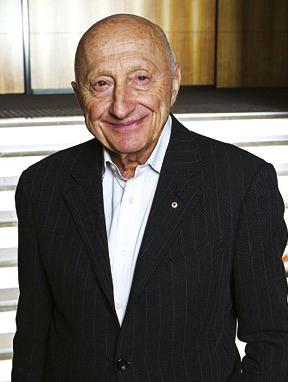
Russian saying
Transliteration Tishe edesh’ – dal’she budesh’
Translation The more measured your step, the further you will get.
Meaning Don’t rush, focus on the goal.
W. BENJAMIN LINDNER
“Give me a child of seven and I will show you the man.”1 In 2000, George Hampel was appointed as Professor of Trial Advocacy and Trial Practice at Monash University’s Faculty of Law. Now 81 years old, Professor Hampel has taught the art of advocacy for more than four decades and continues to do so.
2
The influences on George Hampel during his formative years might help explain his formidable and continuing contribution today. Those years were defined by the imperatives of escape, survival and multiple linguistic and cultural adaptations.
Born in Warsaw, Poland, it would be 13 years, five schools, three languages and a journey on a ship halfway around the world before George Hampel picked up his first words of English. How did these experiences spark his passion to teach advocacy and to promote the importance of effective communication?
George Hampel’s father, Herman Hampel,3 was a solicitor. His mother, Felicja Hampel,4 was a mathematician and actuary. George was an only child. They lived in a Warsaw apartment with a large balcony. One of George’s earliest memories was the library. From there his father conducted his legal practice.
Polish was George’s first language although his mother was fluent in French and Russian, and had some English and German.
On 1 September 1939, Nazi bombers descended upon Warsaw. George was in kindergarten and almost six years old.5 His maternal grandfather, Nathan Rozenes,6 had
been visiting the family during those first raids, after travelling from Sosnowiec in the south of Poland. George recalls being admonished by his parents for sneaking out onto the balcony at night to watch the planes wreaking havoc on his first home city.
Just 24 hours before the German army arrived in Warsaw, a high-ranking Polish Officer who was a close friend of the family arrived in a motorcar to the Hampels’ home. He offered to drive the Hampels out of Warsaw to escape from the Nazis. They had one hour to pack what they could into rucksacks. Their house was struck by a bomb within hours of them leaving. Only one wall of his father’s library remained standing. The vehicle had limited space and could not fit them all. So his father, Herman, took to his bicycle to follow George, his mother and grandfather as they headed east.
Shortly after they left, it became apparent that Herman, following on the bike, was lost to them. Refugees were leaving in droves on foot, in carts, on bicycles and on horseback. There were columns of them. Frequent air-raids left bedlam behind. Each time the aeroplanes appeared, those in the car would jump out and seek shelter nearby. Afterwards, returning to the motorcar, the six-year-old would be confronted by the sight of many dead bodies.
Near the Ukraine border, some 400 kilometres from Warsaw, the three took refuge in an air-raid shelter. By chance, Felicja peered through a gap in the wall, where she saw in the distance a man riding a bicycle – “There’s dad. He’s riding his bike!” The family reunited. They were also fortunate to get onto a cattle train on a long,
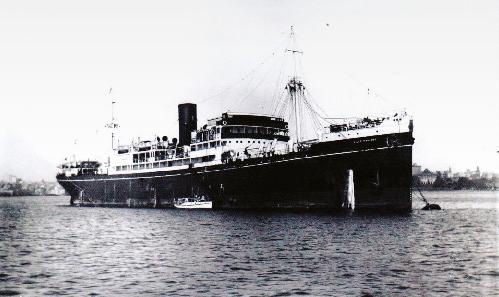
slow journey taking them well past Moscow. Eventually, they were offloaded at a town called Tritrutki. A baker took them in. They shared a room with a large bread oven (which doubled as George’s bed), two other families and a goat.
George Hampel learnt his first Russian vocabulary from his mother and school children. He was sent to the local school, where his self-confessed love affair with the Russian language, its culture and its people began. The need to adjust, to communicate in a new language, started a pattern that would reproduce itself in the years that followed. Immersed in this new culture and environment at seven years of age, George reflects, “I don’t have a recollection of not being able to speak Russian. My next recollection is being fluent.” 7
Russian songs and poetry instilled for George a love of the Russian language, which remains to this day. Songs of baritone, Dimitri Hvorostovski, still revive memories of those war years spent in Russia. Soon after moving to a second
local school in Tritrutki, the Hampel family relocated to a larger town, Davlekanovo, near the Ural Mountains. Life in war-torn Russia was a struggle. Food was short. For his 10th birthday, George received his most memorable birthday present: an entire loaf of bread for himself. It was one whole day without rations.
George sought to assimilate. He had Russian friends, in addition to his ties with Polish displaced people also in Davlekanovo. At each school, he commenced in grades below his academic abilities until his language skills developed. One influential teacher, who he remembers as “a very strong, very attractive sort of woman” provided great encouragement. He was moved up a grade or two.
George reflects upon the profound impact of his grandfather, Nathan Rozenes, during those formative years in Russia. Grandfather “was originally a teacher by occupation, and a great story-teller”. He taught the young George Hampel to peel potatoes and cook borscht. He regaled George with tales of his conscription into the Russian Army under Czar Nicholai II.
He would also recite Russian proverbs about work before pleasure and the importance of learning.
One memorable proverb recited by his grandfather translates, roughly, as “ The more measured your step, the further you get ”. In other words, “ Don’t rush, focus on the goal ”. Another proverb which influenced George’s learning and teaching of skills, translated, was “ Repetition is the mother of learning ”. Nathan Rozenes helped sow the seeds of George’s later approach to work and life.
By 1945, George was “comfortably bilingual”. He spoke Polish at home and Russian outside. His proficiency in Russian meant it had become his first language by war’s end. Fortunately, the Hampels were able to leave Russia before the borders were closed. They returned first to Sosnowiec, then to Warsaw. After reuniting his grandfather with his family, George and his parents left a devastated Poland for Paris, where arrangements began to emigrate to Australia.
George’s uncle, Leon Hampel, was “a bit of an adventurer” who had migrated to Melbourne in 1938 and established a biscuit factory. Leon sponsored their migration application. In Paris, the family moved in with relatives while they waited for migration papers to be approved. Another language. Another adjustment. George developed an acute sensitivity towards the novel behaviors, gestures and body language of another new cultural milieu. Now 12 years old, George entered an impressive new, French world of sumptuous food, art, and grand architecture. For the next 11 months or so, George was footloose, spending weeks in the Louvre, the Trocadero and a multitude of art galleries. He attended a summer school for a few months, picking up sufficient French to travel Paris with confidence – “I never got lost.”
Leaving Marseilles on the ship, the Ville D’Amiens, George continued to practise his French both with the crew, and in each of the French Protectorates where they stopped en route to Australia. He turned 13 on the ship, arriving in Sydney on 25 November 1946. During the journey, he’d learnt about half a dozen English words in preparation for his next cultural and linguistic adjustment.
George had his first Aussie meal at the Coogee Bay Hotel. It was memorable. He was served a T-bone steak “cooked to death, limp white bread and tinned beetroot that stained everything.” Dessert was coagulated lukewarm custard. George reflects:
“Imagine that after Paris!” His uncle then drove the Hampel family to Melbourne, where George started at Central School.
On the 9 February 1948, George’s mother applied to the Commonwealth Government of Australia for the family to be registered pursuant to the Aliens Act, 1947. On the following day, their application was acceptedCertificate No. V4123. Thus, George and his family were aliens (as a matter of law) in Australia until their registration was cancelled on
24 September 1951. The family were naturalised at St Kilda, on 22 April 1954. Their flight from Poland in 1939 qualified them as refugees in Russia, which welcomed them with open arms.
Australia, too, welcomed them. It was an era of civil generosity.
As a young teenager, George Hampel’s first days at Central school were a challenge. It was a triumph to get one word out of 12 correct in a spelling test after a week. In 1948, he changed schools to Haileybury College in South Road, Hampton. He was two years older than his compatriots. There, an English and Sports master, Ivor ‘Jock’ MacGregor, had a “tremendous influence” on him. He was a “funny Scot with a love of literature and language.” Mr MacGregor introduced George to Tennyson and English literature. At Haileybury, George moved through five grades in three years.
At 17, George lived in an apartment at 48 Mathoura Road, Toorak, at one stage sharing with his grandparents who had migrated, and also with the Rozenes family, which included his young cousin Michael. 8 “ He was at that stage a little kid, I think maybe about two or three. I used to have to babysit him.”
George’s prowess on the football field (Australian Rules, playing as a rover, eventually for Richmond Under-19s) developed with frequent practice. But footy practice was always after the school day had ended and it took its toll. “It was a long way to school. I’d walk to Hawksburn Station, then take a train to Brighton, then a bus to South Road. It took over an hour to get to school.” George was often exhausted by the time he got home, only then to embark on his homework for the following day.9
At the end of Form 5, George had a little chutzpah. The family had shifted to 13 Westbury Road, East St Kilda, which was still a long way from Haileybury College. Wanting to do well, academically, in his Matriculation year, George took to his bicycle, as his
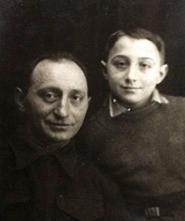
father had before him. His destination was a mile or so north-west, not east. He describes his nascent persuasive skills: “So I got onto my bike, rode to Melbourne High School without any appointment, went in to see the Headmaster who told me I was a cheeky brat. I said ‘Yes’. But finally he said ‘All right, you can come to start Matric at Melbourne High. So I rode home and told my parents I’d changed schools.” The principal, Mr George Furner Langley,10 would not regret his decision. George went on to play in the House tennis team, House swimming team and won a Commonwealth scholarship. He was also involved in the school’s chess club. He also pays tribute to a private tutor, Miss Fullerton, who provided additional English lessons in his Matriculation year. “She lived in Dandenong Road. She was one of these women out of an English novel. She had about twelve cats, an old home adorned with lace. She was an elderly lady, probably about 40 or thereabouts, but I thought she was old!” Her Shakespeare role plays were a highlight. His efforts were vindicated, achieving honours in English, Geography and Modern History, and the prize in Art.
After matriculating, George had a scholarship to attend an art school in London. Was he to become the next Kandinsky, the next Picasso? George pondered his future…”for some reason I’ve never really understood, I decided I wanted to do something
His penchant for the fine distinctions of language combined easily with his passion for teaching.
else. So I got on the very same bike that I used to go to Melbourne High and I rode to Melbourne University where I enrolled in law. I came home and told my parents I was going to be a lawyer. They were delighted.” Russian songs had stimulated George’s love of that language back in 1940. In the late 1940s, Bing Crosby helped develop George’s early English vocabulary:
“Listening to Bing Crosby – one of the crooners – he sang slowly, so I could pick up the words. I could sing these songs before I knew what the words meant. I was glued to the radio. Radio is a terrific device to learn language because the words are clearly articulated. And I fell in love with opera and classical music generally through the influence of my parents.” Languages were learnt through song and conversation – “I love the nuance of language and I love listening to language. I like the fine distinctions of language.”
The young George Hampel rose to the challenge of communicating effectively with his peers in Warsaw, Tritrutki, Davlekanovo, Paris and Melbourne. His penchant for the fine distinctions of language combined easily with his passion for teaching. He became, by necessity, a practised observer of the nuances of body language and gestures as he acclimatised to new cultures; a handy talent when applied to teaching advocates in the decades to come.
Yet George Hampel did not teach advocacy first. In fact, he taught people to ski. George first learnt to ski in Russia out of necessity. He needed to ski seven kilometres to school each day. In Australia, he spent 28 years teaching others to ski, based at the French ski school at Mt. Buller. That fired up his interest to teach adults new skills. Teaching advocacy was a natural extension of this:
“People constantly say to me, ‘Don’t you get sick of talking about advocacy?’ For 40 odd years, I’ve been teaching those skills and I say ‘No’. I
feed upon the people that I teach, so if I can get a reaction, the greatest thrill comes as a teacher when someone actually gets it. It’s a terrific thing and I think that some of that teaching passion I’ve always had, whether its in skiing or advocacy, I think that’s the grandfather influence. I really do sense that that’s where it started.”
Professor Hampel was struck by the erudition of model advocates, such as Jack Cullity11 among many others, throughout his career at the Bar (1958-83) and during his 17 years as a Justice of the Supreme Court of Victoria (1983-2000)12. He has taken his advocacy training courses to advocates in Australia, the USA, the UK, Scotland, New Zealand, Hong Kong, Singapore, South Africa, Malaysia and to International Tribunals at The Hague.
Today, nearly two generations of advocates at the Victorian Bar, at many interstate Bars, and at numerous International Bars and Tribunals owe a debt to Professor Hampel’s lifelong passion.
In the 21st century, we pay tribute to a man born in the 19th Century, grandfather Nathan Rozenes, for the lessons he taught the young George. Professor Hampel’s zeal for teaching effective courtroom communication no doubt draws on a range of influences. But the Russian proverbs instilled into the seven-year-old –“don’t rush, focus on the goal”, and “hone your skills by repetition and practice”, have now found their place in what is cryptically referred to as ‘The Hampel Method’ of teaching advocacy.
1. The Jesuits were founded by the Basque nobleman, soldier and future saint, Ignatius of Loyola in 1534. They had a reputation as educators, giving rise to the adage: “Give me a child of seven, and I will show you the man.”
2. Foundation Chairman, Australian Advocacy Institute, since 1991; ViceChairman of the Victorian Bar, 1982; Vice-President of the Law Council
of Australia, 1982; Instrumental in establishing the Bar Reader’s Course in 1980, and continues to teach there to the present time. Chairman, International Criminal Law Advocacy and Research Institute, 2014. Awarded Monash University Law School Teaching Award, 2011. Bencher of Inner Temple, UK Bar, in Advocacy Education, 2014. Publications on advocacy include G Hampel, E Brimer and R Kune,“The Advocacy Manual”, 2010; G Hampel and E Brimer, “Hampel on Ethics and Etiquette for Advocates”, Leo Cussen Institute, 2001; G Hampel, “Education and Advocacy Training- No Mere Mouthpiece”, NSW Bar Association Centenary Essays, Lexis Nexis, Butterworths, Australia, 2002. Awarded Order of Australia (AM) for the development of advocacy training and service to legal institutions, 2006.
3. Born 6 November, 1901 (Warsaw) –1972 (Melbourne)
4. Born 24 December, 1901 (Sosnowiec) –2006 (Melbourne)
5. Born in Warsaw on 4 October 1933.
6. Born in Sosnowiec in 1869. Chief Justice Jim Spiegelman, Chief Judge Michael Rozenes, Justice Annabelle Bennett and Emeritus Professor Arie Freiberg all have family roots in Sosnowiec and finished up in Australia. George Hampel speculates “there must have been something special in the water in this small Silesian town near Krakow.”
7. All quotations, in italics, are taken from an interview by W. Benjamin Lindner with Professor George Hampel on 15 December 2014.
8. Chief Judge Michael Rozenes, AO, QC was appointed to the County Court of Victoria as Chief Judge on 22 November, 2002.
9. In 1949, George played one game in first XVIII, he scored 13/100 in house shooting and achieved a “surprise win in the backstroke” at the House Swimming sports. He completed Intermediate Certificate subjects: English (Expression and Lit) Geography, Australian/Pacific History and Art. At the end of 1950 he completed Leaving Certificate subjects: English, British History, Modern History and Commercial.
10. George Langley was a distinguished educator and highly decorated soldier having fought with the 21st Infantry Battalion at Gallipoli 100 years ago.
11. Professor George Hampel QC, “Jack Cullity”, Victorian Bar News, No 117, Winter, 2001, p 35.
12. Julian Burnside QC, Farewell – Justice Hampel, Victorian Bar News, No 114, Spring, 2000, p 14.
LEX LASRY
In April 2005 in Denpasar, Bali Andrew Chan and Myuran Sukumaran were arrested with seven others as they tried to leave for Australia having planned to smuggle more than 8 kilograms of heroin to Sydney. They were later charged and the group became infamous as the Bali nine. So began a saga of judicial and executive failure in Indonesia coupled with delay, redemption, and hope finally destroyed at the point of a gun.
In October 2005 the trials of the various individuals were conducted. In February 2006 the court sentenced Andrew and Myuran to death by firing squad – the first death sentence of a Denpasar court for drug trafficking. Four more of the nine were given the death penalty after prosecution appeals, but ultimately only Andrew and Myuran of that group would face the firing squad. Many more narcotics offenders will face execution.
In December 2005 Van Nguyen was executed in Changi prison in Singapore. Julian McMahon and I had acted for him throughout the three years between his arrest and execution. It was soon after in 2006 that Myuran’s brother Chintu Sukumaran approached us to become involved in what remained of the case. We agreed. Shortly after that Michael Chan requested we also act for Andrew. Again we agreed.
In the early days Julian and I went to Jakarta looking to find a powerful, reputable criminal/human rights lawyer – we found Todung Mulya Lubis. He was magnificent and remained with the case from there to the end. He conducted all the cases in the Indonesian Supreme Court and the Constitutional Court.
Over the next nine years amazing things happened. First, with me having gone to the Supreme Court in October 2007, Julian McMahon assembled a team of thoroughly committed Victorian lawyers to become involved in every aspect of the case. From the Bar they included Judge Mark Taft (prior to his appointment to the County Court); John Champion SC (prior to becoming the Director of Public Prosecutions); Peter Morrissey SC; Michael O’Connell QC; Tony Trood; Megan Tittensor; and Scott Johns. Solicitors Alex Wilson and Veronica Haccou completed the team. Each of these lawyers gave everything they had to the case. They displayed a commitment to saving Andrew and Myuran’s lives that was extraordinary. In the finest traditions of the Victorian Criminal Bar, they demonstrated the force in the thesis that criminal lawyers defending clients are in every sense human
rights lawyers. With Julian as the spiritual leader and inspiration of this group, they excelled in their devotion to their pro bono task. I am very proud of them.
Myuran and Andrew began their time in Kerobakan prison as criminals but with the help of a large and diverse group of people, a remarkable transformation occurred. The quality of their rehabilitation and transformation is a matter of public record.
For good reason the criminal law we work under places significant weight on an offender’s prospects of rehabilitation. Better prospects than Myuran and Andrew’s will rarely be seen. Despite the Herculean efforts of the Victorian legal team, on 29 April 2015 their prospects and their future were treated with deadly contempt by the Indonesian President and Attorney-General.
Vale Andrew Chan and Myuran Sukumaran.
PETER VICKERY
In a time of youth dreaming
A naïve nine crave an easy fix
Chasing the dragon
An answer to living
A sinister cloud eclipses the Bali sun
Junk strapped, the evil is floodlit
Trapped like rabbits
Scared out of their wits
The Nation’s cathode tubes ignite
Comfortable screens flash savage news
For two, a more squalid crime
Murder by State decree
Years pass at Kerobokan
Facing their demons, grace new discovered Dry-mouthed, a fragile Aussie grins grim hope
“I will handstand in a month”
Young lives suspended by a thread
The puppeteer courts power from a slogan
Can wisdom and mercy spur justice to reign?
Humanity is summoned.
Friday, 6 March 2015
TONY WILSON
It’s the hours before the Asian Cup semifinal in Newcastle, and Rita Zammit is in a travelling circle of 10, debating Socceroos team selection and whether her friend
Dianne’s hex-inducing ‘corne’ – [n. orig. Calabria; dark power summoned by waggling index finger and pinky in direction of opposition players] – works against the colour red. Her phone rings.
“Hello, this is the Attorney-General.”
Zammit excuses herself. “I’d better take this.”
Minister Pakula has some news. “Cabinet has approved your nomination as a full Justice of the Supreme Court of Victoria. It will go before Governorin-Council next Tuesday. We will subsequently make official announcement, so please keep it confidential. Congratulations!”
When she returns, there is clarification on the ‘corne’. It doesn’t work against red, the colour of confirmed finalist South Korea – but Rose’s Calabrian mother Filomena says an antidote is everyone should wear their underpants inside out. The group is laughing.
“Who was that?” Dianne asks.
“Just work,” Zammit replies.
Justice Zammit was sworn in on 5 February. She is only the fifth solicitor in 163 years and the first Associate Justice to become a full Justice. Her father Franco Incerti was in attendance for the ceremony, 59 years after he and his late wife Angela migrated from Italy. They both worked two jobs in that tough first decade to support their family. On Justice Zammit’s first day at Fawkner State Primary in 1966, she didn’t speak English.
It’s been a spectacular ascent – 19 years from articled clerk to judge. Justice Zammit graduated second top student from Melbourne University, despite having two children under five. Her specialty as a solicitor was medical malpractice law, working at Minter Ellison, John Ball & Sons and Monahan & Rowell.
Along the way, she’s run a sideline practice in Socceroos super-fandom. She attended every Socceroos game at the Asian Cup, has been to the last three World Cups and almost every home qualifier this century.
When inducted as an Associate Justice in 2010, football got a mention. I got a mention too, because I was the one standing next to her as she breathlessly delivered a 19-pack of Cherry Ripes to Lucas Neill in Öhringen, Germany, asking him to “pass them on to Harry [Kewell] because Harry can’t get Cherry Ripes overseas”. It had
started as a 20-pack but Zammit’s son, Thomas, had eaten one. We later learned that Kewell wasn’t allowed the 19-pack in case it had been tampered with. Certainly, the woman had seemed crazy enough. As Neill later said on radio, “The fans were fantastic. There was even this mad woman who shoved a packet of Cherry Ripes at me.”
Justice Zammit is mad about football. Her chambers contain a Leigh Broxham garden gnome and a Muscateers lunch box, aimed at 10-and-unders who are fans of Victory’s legendary hardman and now manager, Kevin Muscat.
While forgiving Muscat for his infamous brand of rough justice, Zammit has dedicated her life to justice of a softer kind. She’s a board member for Broadmeadows Community Legal Service, where she volunteered for 13 years. Alongside husband Alex, she team-managed the Italians at the 2008 Homeless World Cup. She’s arranged container loads of computers, books and sports equipment to be delivered to Uganda and Sudan. She’s worked pro bono for disability providers SCOPE and Yooralla. Before becoming a lawyer, she was a special ed. teacher at Kew Cottages.
But football is her passion. Her graduating class attempted to lure Zammit to a 20-year reunion to toast her appointment. It failed. The Melbourne Derby was on. “We now get the fixture and distribute it to friends and family so they know not to put things on those days,” Justice Zammit grins. “Because basically, we won’t come!”
The photo that has pride of place in Justice Zammit’s chambers is a Melbourne Victory team photo, with her at the centre.
“I turned 50 in 2011. My children and nieces and nephews invited me to breakfast. After breakfast they said, ‘We’re going to Luna Park.’ I’m thinking – this is all a bit odd. I noticed a number of Victory people were around. Anyway, we ended up in a queue and went up this rickety old staircase. When I went in, yep, the whole team is there! They’d organised for a commemorative photo! And you got to sit next to any player you wanted, so I chose Harry! And you’ll see in the photo I’m leaning right in, because I was going to get as close to Harry as I could!”
“They take the photo,” she continues, “and we leave and I thought – I am never going to be this close to Harry again. So I turned around and bolted back and said, ‘Harry, can I have a kiss because this ain’t gonna happen again!’ And he did give me a kiss. At that point

security came and accosted me and walked me out. It was so much fun!”
I’m one of about 30 regulars who sit together as part of Justice Zammit’s ‘football family’.
“I’ve got my ‘soccer husband’,” she explains, referring to Joe Marsico, her best soccerwatching friend. “I remember Santo Cilauro, who’d met Joe a few times, actually thought he was my husband. Santo was quite surprised when he met Alex.”
I ask what Alex thinks of all the football. “Hates it,” she laughs. “Hates it with a passion. Alex hates all sport, but maybe soccer just that little bit more.”
Victory fans probably aren’t aware there’s a judicial officer in their midst when they’re spraying beer and lighting flares on away trips around the country. “We do a minimum of two away trips every year. Last year we went to see Western Sydney Wanderers and that was unbelievable. The atmosphere in Parramatta compares with the best overseas stadiums I’ve encountered, such as San Siro in Milan.”
The Socceroos climbed a mountain to win the Asian Cup. So too has their number one fan.
Tony Wilson is a Melbourne writer and broadcaster; and he is a friend and former colleague of Justice Zammit. An edited version of this piece first appeared in the March 2015 edition of The Monthly.
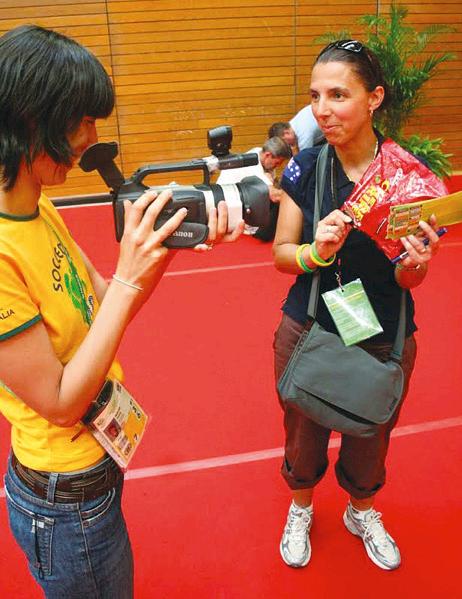

There must be few readers of the Bar News who did not as law students find a morbid fascination in the facts of this case which, for 130 years or so, has stood as authority for the proposition that at common law necessity is not a defence to a charge of murder.2 At least for us, and in most other Australian jurisdictions, as we shall see this is no longer the law because of recent statutory changes.
My interest in the case was rekindled when I read a glancing reference to it in a speech delivered by Mark Weinberg J.A. a few years ago at the Melbourne Law School where he was once the Dean. His Honour tersely said:
Both accused were convicted of murder, at what was plainly, and at every level, a monstrous miscarriage of justice. 3
Strong language indeed in relation to a decision of the Queen’s Bench Division comprising the Lord Chief Justice, Lord Coleridge, Baron Huddleston and Justices Grove, Denman and Pollock. But as I was to discover, completely justified.
The classic and lengthy analysis of the factual and legal circumstances surrounding the case is that by the late Professor Brian Simpson QC in his book Cannibalism And The Common Law 4 No one can hope to obtain a proper understanding of this case without acknowledging a very considerable debt to him. I certainly do.
As will appear the facts were put before the Court in the form of a Special Verdict found by the jury at the trial.
That on July 5, 1884, the prisoners, Thomas Dudley and Edward [sic] Stephens, with one Brooks, all able-bodied English seamen, and the deceased also an English boy [Richard Parker], between seventeen and eighteen years of age, the crew of an English yacht, were cast away in a storm on the high seas 1600 miles from the Cape of Good Hope, and were compelled to put into an open boat That in this boat they had no supply of water and no supply of food, except two 1 lb. tins of turnips, and for three days they had nothing else to subsist upon. That
on the fourth day they caught a small turtle, upon which they subsisted for a few days, and this was the only food they had up to the twentieth day when the act now in question was committed. That on the twelfth day the remains of the turtle were entirely consumed, and for the next eight days they had nothing to eat. That they had no fresh water, except such rain as they from time to time caught in their oilskin capes. That the boat was drifting on the ocean, and was probably more than 1000 miles away from land. That on the eighteenth day, when they had been seven days without food and five without water, the prisoners spoke to Brooks as to what should be done if no succour came, and suggested that some one should be sacrificed to save the rest, but Brooks dissented, and the boy, to whom they were understood to refer, was not consulted. That on the 24th of July, the day before the act now in question, the prisoner Dudley proposed to Stephens and Brooks that lots should be cast who should be put to death to save the rest, but Brooks refused to consent, and it was not put to the boy, and in point of fact there was no drawing of lots. That on that day the prisoners spoke of their having families, and suggested it would be better to kill the boy that their lives should be saved, and Dudley proposed that if there was no vessel in sight by the morrow morning the boy should be killed. That next day, the 25th of July, no vessel appearing, Dudley told Brooks that he had better go and have a sleep, and made signs to Stephens and Brooks that the boy had better be killed. The prisoner Stephens agreed to the act, but Brooks dissented from it. That the boy was then lying at the bottom of the boat quite helpless, and extremely weakened by famine and by drinking sea water, and unable to make any resistance, nor did he ever assent to his being killed. The prisoner Dudley offered a prayer asking for forgiveness for them all if either of them should be tempted to commit a rash act, and that their souls might be saved. That Dudley, with the assent of Stephens, went to the boy, and telling him that his time was come, put a knife into his throat and killed him then and there; that the three men fed upon the body and blood of the boy for four days; that on the fourth day after the act had been committed the boat was picked up by a passing vessel, and the prisoners were rescued, still alive, but in the lowest state of prostration. That they
Before dealing with the serious matters relating to the case it is interesting to note that there was an Australian connection.
were carried to the port of Falmouth, and committed for trial at Exeter. That if the men had not fed upon the body of the boy, they would probably not have survived to be so picked up and rescued, but would within the four days have died of famine. That the boy, being in a much weaker condition, was likely to have died before them. That at the time of the act in question there was no sail in sight, nor any reasonable prospect of relief. That under these circumstances there appeared to the prisoners every probability that unless they then fed or very soon fed upon the boy or one of themselves they would die of starvation. That there was no appreciable chance of saving life except by killing some one for the others to eat. That assuming any necessity to kill anybody, there was no greater necessity for killing the boy than any of the other three men.
But whether upon the whole matter the prisoners were or are guilty of murder the Jury are ignorant and refer to the Court.
Before dealing with the serious matters relating to the case it is interesting to note that there was an Australian connection. The “English yacht” in which the crew were sailing was the Mignonette. It was bound for Australia having recently been purchased by a colourful and very successful Sydney barrister, John Henry (“Jack”) Want.5 Indeed Wilfred Blacket KC in his book, “May It Please Your Honour”6 expressed the view that he was – “… the greatest advocate of his own or any earlier generation in New South Wales …”. He went on to say of him:
’Jack’ Want’s career was illuminated by every one of the seven lamps of advocacy.7 He had learning, eloquence, wit, industry, courage, candour, bonhomie, and a great knowledge of the world. He had every opportunity of acquiring such knowledge, for he
raced his own horses, sailed his own yacht, held office as Attorney General, sat in Parliament for many years, and saw the other side of the world on my occasions. Moreover, in everything that he undertook or was concerned in he was a notable leader.
Want was a flamboyant and ostentatious sporting man. He was well over six feet tall with a rugged jaw, flashing eyes and fierce mustachios. There is a photograph of him in the State Library of New South Wales that evidences all of this. He was a keen yachtsman. His father, Randolph, a leading Sydney solicitor, had been a founding member of the Royal Sydney Yacht Squadron. Jack both became a member of the Squadron and was also the Commodore of the Royal Prince Albert Yacht Club from 1877 to 1881 and again in 1884. He owned and raced a yacht named “Guinevere” which had been built in Sydney in 1874.
Want was called to the N.S.W. Bar in 1869. By 1883 he had established an immense practice. It has been said that no other barrister of his period earned more in fees.
In early 1883 Want went to England in the hope of being able to purchase a fast racing yacht to take back to Sydney. He decided to investigate the market by hiring a yacht and participating in various regattas around the coast. As in most things that Want did he was successful, winning at Ostende, Ryde and Torbay as well as being placed in other events. His successes, however, caused quite a social and sporting furore. The notion that a person could merely hire and race a yacht, without owning it, was then regarded as socially improper and quite ungentlemanly behaviour.
The pages of sporting magazines –The Field8 , Land and Water and Hunt’s Yachting Magazine – were full of the
heated discussion which the subject attracted, including self-justifying pieces written by Want which only fuelled the social fires.
In the midst of all this controversy
Want was able to purchase while he was racing at Cowes a 52 foot 31 ton yacht, the Mignonette, for somewhere between £300 and £400. She had been built in 1867 as a fishing and cruising boat but had been converted to a potentially fast racing yacht. In 1881 and again in 1882 Mignonette had won the New Thames Club’s ocean race which no doubt attracted Want’s interest. He had her completely refitted and made ready for a voyage out to Sydney in the Spring of 1884. Although she may have been small, the Mignonette was by no means the first small sailing vessel to make the passage from England to Australia.9
Want’s agent, Andrew Thompson of the London Yacht Agency, employed Tom Dudley to act as Captain of the Mignonette. He was not only an experienced master mariner but had been a successful sailing master of racing yachts. Dudley employed the crew – Stephens as mate, Brooks as seaman and young Richard Parker as cabin boy.
To return to the case. It is of critical importance to understand how and in what circumstances the Special Verdict came into existence.
The “passing vessel” which rescued Dudley, Stephens and Brooks was the sailing barque, Moctezuma, which was returning to its home port, Hamburg, from Chile in South America. The dinghy (the “open boat”) in which they were found containing a few mortal remains of Richard Parker was also taken on board – at Dudley’s request. Whilst on the Moctezuma Dudley wrote several frank accounts of what had happened in relation to the death of Parker and how and why he had killed him.
As the Moctezuma neared Falmouth Harbour where the survivors were put ashore it was boarded by a pilot. Dudley gave him too an account of what had happened in the course of which he described the killing and
eating of Parker. When they were landed the three men promptly went to the Customs House to make statements to the Shipping Master about the circumstances relating to the loss of the Mignonette. They were not legally obliged to do so under the provisions of the Merchant Shipping Act 1854 as amended in 1876 but if they had not they could have been legally compelled to do so.10 The purpose of this procedure was expressly stated to be for increasing safety at sea. Both Dudley’s and Stephens’ depositions survive. They tell in detail of the circumstances in which Parker was killed and eaten. Dudley even gave a dramatic oral account of the killing in the presence of the local Police Sergeant. This resulted in their arrest.
Dudley, Stephens and Brooks were astounded that they should have been arrested. But however that may be they were brought before the Falmouth Borough Magistrates and charged with murder on the high seas. The Magistrates refused bail and remanded them in custody. What was the reason for their astonishment? Put simply it was that they had acted in accordance with a centuries’ old and well known custom of the sea. As Professor Brian Simpson concluded after a detailed study of the history of cannibalism in shipwreck cases:
…maritime survival cannibalism, preceded by the drawing of lots and killing, was a socially accepted practice among seamen until the end of the days of sail.11
This explains why Dudley was so frank and open about what had happened. He made no attempt whatsoever to edit out even the smallest detail.
At all events after the three of them had been remanded in custody the matter was referred to London where it was considered by the Home Office Secretary, Sir William Harcourt; and, the Law Officers of the Crown – the Attorney General, Sir Henry James, and the Solicitor
General, Sir Farrer Herschel. It was decided that the prosecution should proceed as it provided an ideal vehicle to putting a legal end to the supposed legitimacy of this custom of the sea. When the matter next came before the Falmouth Magistrates an application was again applied for bail and this time it was granted – in a murder case! Public opinion was overwhelmingly on their side with only one question causing concern – why were not lots cast to choose the man to be killed?
Public appeals resulted in considerable sums being raised to defray their defence costs; and, Jack Want sent £100.
The matter next came before the Falmouth Magistrates a week later. The question then was whether the three men should be committed to stand trial. The prosecution was conducted by junior Treasury counsel William Dankwerts.12 He had a problem. All of the witnesses to the alleged murder were defendants. Until the Evidence Act of 1898 they could not give sworn evidence. Then again the depositions made in the proceedings before the Shipping Master were not taken for criminal purposes at all but to improve safety at sea. In any event there had been no caution and they were not voluntary as there was a legal obligation to make them. Dankwerts quickly decided that he had to persuade one of the defendants to give evidence for the Crown. Brooks agreed. No evidence was led against him resulting in his acquittal. Dankwerts then called the arresting police officer, the Shipping Master, and Brooks. In these circumstances the Magistrates sent Dudley and Stephens for trial at the next assizes before a judge and jury. However their bail was extended until the trial.
The trial took place at the winter Devon and Cornwall Assizes at Exeter beginning on 3 November 1884 before Baron Huddleston. Exeter is not very far from Falmouth.
Huddleston was an opiniated, domineering trial judge who
had a reputation for being able to persuade juries to reach what in his opinion were proper verdicts. He had been appointed to the Court of Common Pleas in 1875 and was almost immediately transferred to the Court of Exchequer acquiring the title of Baron (the title given to members of that Court). The Court was abolished in 1876 as a consequence of the reorganisation of the judicial system provided for in the Judicature Act of that year. He frequently referred to himself as the last of the Barons. One of his eccentricities was to wear colourcoded gloves in Court – black for murder, lavender for breach of promise of marriage and white for more conventional cases.
It seems clear that Huddleston was concerned that an Exeter jury would acquit Dudley and Stephens thereby giving legitimacy to this particular custom of the sea which in his opinion was in fundamental defiance of legal principle. So he set about ensuring that this would not happen.
At this time the legal proceedings against Dudley and Stephens involved two stages. The first concerned the strength of the prosecution case considered on its own by a Grand Jury. They decided whether or not the accused should be put on trial. If they did they found a “true bill”, if not they “ignored” the bill and no trial took place. A curious aspect of this procedure is that the Falmouth Magistrates had already considered this very question.
The Assize Judge publicly “charged” the Grand Jury in relation to each of the cases listed for hearing. In relation to the charges against Dudley and Stephens, the Baron instructed the Grand Jury that as a matter of law there was no authority whatsoever for the proposition that the killing of another was justified on the grounds of necessity. He dealt with the subject at length. This quite detailed public ruling on a vexed point of law, entirely unargued and on the basis of facts not yet in evidence, is so irregular as to border
upon the bizarre. The Grand Jury found a true bill and Huddleston’s Charge was extensively published in the local and national press. So Dudley and Stephens without any trial at all were publicly adjudged by their trial judge, Huddleston, to be guilty of murder!
Then followed the trial before Huddleston and a jury.
Arthur Collins QC and Henry Clark appeared for the accused men. Counsel for the prosecution opened the Crown case espousing the Judge’s view of the law. Then a very brief discussion took place in relation to the relevant legal principles during which Collins was able to refer by name to only a few of the authorities that had already been dismissed by Huddleston in his Charge to the Grand Jury. After this the following interchange took place.
Baron Huddleston: Mr. Collins, I presume you traverse the law?
Mr. Collins: Yes … I rely on these cases, and I say that if necessity compelled these men in taking the life they were justified in so doing.
Baron Huddleston: I mean that is the doctrine you set up.
Mr. Collins: That is the doctrine I set up … Your Lordship will take a certain course – whether the prisoners were justified or not under the necessity of the case.
Baron Huddleston: Certainly not. I shall lay down as a matter of law there was no justification. I shall lay that down distinctly and absolutely.
Mr. Collins: I must address the jury on that point.
Baron Huddleston: Yes. I shall rule it distinctly. I am firm on the point. That is my own opinion of the law, and I must rule firmly on the point.
Mr. Collins: Yes. I will address the Jury upon my view of the case. Your Lordship will, of course, adopt what course your Lordship pleases after that.
But of course Huddleston would
Huddleston was determined to ensure that his view of the law was upheld by, in effect, an Appellate Court and not be left as a ruling by an Assize Judge in the context of a hostile jury acquittal. To this end Huddleston carefully devised a strategy to achieve his ends.
instruct the jury that as a matter of law Collins was wrong and that as there was no dispute as to the facts they would be told that they had a duty to convict. Baron Huddleston was nevertheless concerned that an Exeter jury would exercise their undoubted right to acquit Dudley and Stephens. The Devon and Cornwall Assizes were part of the Western Circuit which included the counties of Devonshire and Cornwall which were homes to the great seafaring ports of Falmouth (with the largest natural harbour in Europe) and Exmouth just down river from Exeter. Huddleston’s fear was that the jurors’ view of the custom of the sea might trump his clear view of the common law.
At this time in English legal history there was no Court of Criminal Appeal. There was a Court of Crown Cases Reserved (comprising the Lord Chief Justice and four other judges of the Queen’s Bench) but it could only deal with points of law especially reserved for its consideration by a trial judge. However that process was only open if there had been a conviction. Huddleston was determined to ensure that his view of the law was upheld by, in effect, an Appellate Court and not be left as a ruling by an Assize Judge in the context of a hostile jury acquittal. To this end Huddleston carefully devised a strategy to achieve his ends. It was this.
There was an old procedure, long thought to be obsolete, which had not been used for almost 100 years in accordance with which a jury instead of finding a verdict of guilty or not guilty could find a Special Verdict in which they only found the facts of
the case and then left it to the judge or a bench of judges to determine what legal conclusions should be drawn from those facts. Huddleston then set about persuading the jury to take this course without any mention whatsoever that they were under no compulsion to do so.
Arthur Collins for the accused made it clear to the Judge that he had no power or right in a criminal trial to make any concessions to the prosecution. He said: “I am powerless to consent” to which Huddleston replied – “I do not ask you to. I shall take it on myself to do it.”
All of the evidence was first called by the Crown. Collins QC addressed the jury and invited them to acquit the accused on the basis that there was an inevitable necessity that one life (that of the weakest) should be sacrificed in order that the other three might be saved. Huddleston was outraged by this and sternly told the jury that they were not at liberty to ignore his ruling that necessity was no defence. He instructed them that they had no alternative but to convict the accused of wilful murder; or, accept his recommendation which was that they find a Special Verdict. Huddleston is reported in The Times as telling the jury: “By the course he proposed, however, they would be relieved of that painful duty, while they would be at liberty to add to their finding any general expression of feeling on behalf of the prisoners which they might think desirable”.
Huddleston presented the jury with a false choice. If the trial went to their verdict they were compelled to obey his view of the law and convict the two men. They would then be sentenced to death. However if they were to find a Special Verdict
only dealing with their view of the facts then they would be spared that compulsion and whether or not his view of the law was correct would be decided by a superior Court. What neither he nor anyone else told them was that, irrespective of Huddleston’s direction or the view of a Superior Court as to applicable law, the question of the accused’s guilt was in the end a matter entirely for them. They could find whatever verdict they, and not Huddleston or any superior Court, considered to be just and proper in all the circumstances. Without pausing even to ask whether the jury were agreeable to his suggested procedure Huddleston produced a draft Special Verdict which he had already drafted the night before. It was the Judge and not the jury who was to conclusively determine the “facts” of the case. As Huddleston read out the Special Verdict he had drafted very little was said by anyone. There was one critical intervention however by the foreman of the jury. He said that it was the jury’s view “that they would have died if they had not had his body to feed on”. Huddleston said – “That is as I put it” – but this was just false. His text was – “That if the men had not fed upon the body of the boy they would probably not have survived …”! The jury yielded to Huddleston’s draft and that was their one and only contribution to the terms of the Special Verdict.
Although Huddleston had invited counsel on both sides to make any suggestions as to the content of the Special Verdict the Transcript records no involvement whatsoever by any of them in the process.
It is critical to note however that it was clear from the various statements and depositions Dudley had made that when he killed Richard Parker the boy was about to die in any event. Dudley said he was “… gasping for breath and his frail frame was all but lifeless”. Huddleston watered this down in his Special Verdict to –he was “extremely weakened” and was “likely to have died” before the
others. This was Huddleston’s version of this critical fact and not the jury’s!
In addition, Huddleston completely left out a critical finding which, on any view, went to the heart of the defence of necessity. That finding was whether or not it was necessary in the circumstances to kill anyone; and, if so, was it necessary to kill Richard Parker. It is clear that this omission was not accidental. In the original draft of the Special Verdict which still exists, Huddleston played with various amendments to the draft which touched upon the subject but settled with – “Assuming any necessity to kill anybody there was no greater necessity for killing the boy than any of the other three men.” Huddleston told the jury: “All they required was something to eat: but the necessity of something to eat does not create the necessity of taking and excuse the taking of the boy. That is the question – was there any necessity of taking the boy rather than drawing lots? I think you would consider no.”
This tactic was deplorable. It was a matter of law to determine whether there was a defence of necessity that justified a killing to save life. But it was a question of fact for the jury whether in the circumstances of this case it had been necessary to kill anyone or Parker in particular. If the jury had found as a fact that in the circumstances it had been necessary to kill Parker it would have appeared to be absurd for a body of judges to decide that in spite of such a finding the law forbade what was necessary or essential. On the other hand if it was decided there was a defence of necessity that enabled the accused to kill Parker there was no finding of fact that it was necessary to kill anyone at all!
The result of this was that it was Huddleston and not the jury who found the “facts” in the Special Verdict. There were some procedural problems relating to what Court would hear and determine the Special Verdict which are of no present interest13 but in the end it
was determined that it would be the Queen’s Bench Division of the High Court of Justice composed of the Lord Chief Justice, Lord Coleridge, Baron Huddleston and Justices Grove, Denman and Pollock.
It must seem to any lawyer looking back on these events that it was outrageous that Huddleston should have been a member of the Court. His mind was completely closed upon the point. He had already ruled upon it at length and with dogmatic vigour both before the Exeter Grand Jury and during trial over which he presided.
The proceedings before the five judges on 4 December 1884 and considering it from a distance of 130 years or so later it all appears to have been a mere formality. Sir Henry James, the Attorney General, who led for the Crown briefly canvassed the authorities and submitted that there was no legal authority for the proposition that an innocent person could be lawfully killed to save the killer’s and others’ lives. He was stopped by Lord Coleridge, who after a brief consultation with his brother judges, said that they all had a strong impression that murder had been committed.
Arthur Collins QC again led for the defence. He argued that in desperate circumstances there are no legal rights or duties, i.e. necessity knows no law. Then he put it that in desperate circumstances the actions of those involved are not voluntary. Another approach he took was to employ the utilitarian theory that it is better that one should be killed rather than all should die. Finally he argued that desperate circumstances were an excuse for the killing because of the frailty of human nature but not a justification for it as killing is inherently wrong.
After hearing Arthur Collins’ submissions Sir Henry was not called upon in reply. It was all over in less than a day. The Court ruled that the accused were guilty of murder and adjourned to 9 December for the delivery of Reasons.
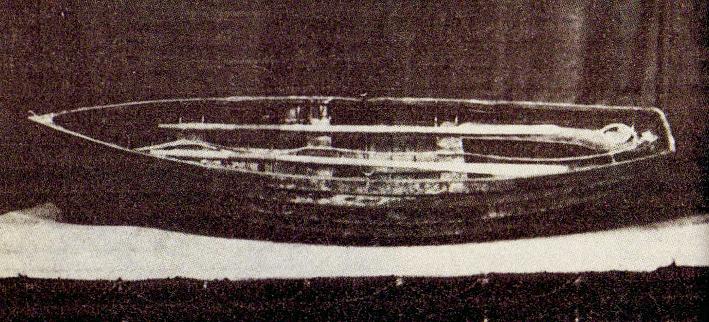
Lord Coleridge did not make any attempt at all to deal with the argument that in extreme and desperate circumstances where there is only a choice between some or all dying the proper course is to take steps to ensure that at least some survive.
The Reasons of Lord Coleridge read more like a sermon delivered in St. Paul’s rather than a judgment in the Royal Courts of Justice!
... Now it is admitted that the deliberate killing of this unoffending and unresisting boy was clearly murder, unless the killing can be justified by some well-recognised excuse admitted by the law. It is further admitted that there was in this case no such excuse, unless the killing was justified by what has been called “necessity.” But the temptation to the act which existed here was not what the law has ever called necessity. Nor is this to be regretted. Though law and morality are not the same, and many things may be immoral which are not necessarily illegal, yet the absolute divorce of law from morality would be of fatal consequence; and such divorce would follow if the temptation to murder in this case were to be held by law an absolute defence of it. It is not so. To preserve one’s life is generally speaking a duty, but it may be the plainest and the highest duty to sacrifice it. War is
full of instances in which it is a man’s duty not to live, but to die. The duty, in case of shipwreck, of a captain to his crew, of the crew to the passengers, of soldiers to women and children …; these duties impose on men the moral necessity, not of the preservation, but of the sacrifice of their lives for others, from which in no country, least of all, it is to be hoped, in England, will men ever shrink, as indeed, they have not shrunk. It is not correct, therefore, to say that there is any absolute or unqualified necessity to preserve one’s life. …. It is not needful to point out the awful danger of admitting the principle which has been contended for. Who is to be the judge of this sort of necessity? By what measure is the comparative value of lives to be measured? Is it to be strength, or intellect, or what? It is plain that the principle leaves to him who is to profit by it to determine the necessity which will justify him in deliberately taking another’s life to save his own. In this case the weakest, the youngest, the most unresisting, was chosen. Was it more necessary to kill him than one of the grown men? The answer must be “No” –
“So spake the Fiend, and with necessity,
The tyrant’s plea, excused his devilish deeds.”
It is not suggested that in this particular case the deeds were “devilish,” but it is quite plain that such a principle once admitted might be made the legal cloak for unbridled passion and atrocious crime. …14
Lord Coleridge did not make any attempt at all to deal with the argument that in extreme and desperate circumstances where there is only a choice between some or all dying the proper course is to take steps to ensure that at least some survive. The absolute sanctity of human life in his view simply denied any such a utilitarian approach.
The parts of the Special Verdict carefully crafted by Huddleston despite the Jury’s view that the survivors “would” have died and Huddleston’s reference in the Special Verdict to the boy only being “likely” to die before them was treated as crucial by Lord Coleridge. His Lordship said:
But nevertheless this is clear, that the prisoners put to death a weak and unoffending boy upon the chance of preserving their own lives by feeding upon his flesh and blood after he was killed, and with the certainty of
depriving him of any possible chance of survival. The verdict finds in terms that “if the men had not fed upon the body of the boy they would probably not have survived,” and that “the boy being in a much weaker condition was likely to have died before them.” They might possibly have been picked up next day by a passing ship; they might possibly not have been picked up at all; in either case it is obvious that the killing of the boy would have been an unnecessary and profitless act.15
Huddleston’s devious tactic had succeeded in spades!
The sentence of death was duly passed by the Court of Queen’s Bench with Lord Coleridge not only not wearing the customary black cap but saying that if “…the law appears to be too severe on individuals, to leave it to the Sovereign to exercise that prerogative of mercy which the Constitution has intrusted to the hands fittest to dispense it.”
But here again was an improper fiddling with the Special Verdict. As recorded in Exeter at the Assize hearing the Verdict ended with:
But whether upon the whole matter the prisoners were or are guilty of murder the Jury are ignorant and refer to the Court.
Collins argued that as the Jury had never been asked what verdict they would give if the Judges ruled one way or the other it was impossible to assume what they would have done when authoritatively told by a higher Court what the law was in relation to the facts found in the Special Verdict. In other words they had not found and had never been invited to find or told that they could find a conditional finding of guilt. It is clear that they would have had the power or right to acquit irrespective of the legal ruling.
Lord Coleridge brushed all of this aside by amending the version of the Special Verdict which he read out before giving judgment a conditional finding by the Jury that they had never made as follows:
But whether upon the whole matter by the jurors found the killing of Richard Parker by Dudley and Stephens be felony and murder the jurors are ignorant, and pray the advice of the Court thereupon, and if upon the whole matter the Court shall be of opinion that the killing of Richard Parker be felony and murder, then the jurors say that Dudley and Stephens were each guilty of felony and murder as alleged in the indictment.
The problem is that they never did! In all these circumstances it is clear that Dudley and Stephens were denied a fair trial. What they received was a trial on facts “found” by the Judge and not the jury; and, they were deprived of the opportunity of a jury verdict of acquittal.
The only authority which had given Collins QC some comfort in his argument were some passages in Sir James Fitzjames Stephen’s Digest and in his History of the Criminal Law Stephen was a fellow judge of the Queen’s Bench Division. However Lord Coleridge brushed this aside by making the extraordinary statement that he had spoken to Stephen and that he had said that his published statements were not meant to cover it; and, if he had been a member of the Court, he would have rejected Collins QC’s submission!
What happened in fact was that the sentence of death was commuted to a sentence of six months’ imprisonment. As Glanville Williams has pointed out that seems to have been an abdication of function on the part of the Judges. 16 If a murder conviction was to attract a no black cap death sentence and entreaties for mercy from the jury, the good Baron, and the Court of Queen’s Bench does that not say something critical of the supposed principle which was said to compel the conviction?
The proposition for which R. v. Dudley and Stephens stands, namely, that at common law the concept of necessity is not a defence to the crime of murder is no longer law
in Victoria. In 2014 the Victorian Parliament inserted a new section 322 R into the Crimes Act 195817 which is in the following terms:
(1) A person is not guilty of an offence in respect of conduct that is carried out in circumstances of sudden or extraordinary emergency.
(2) This section applies if –(a) the person reasonably believes that –(i) circumstances of sudden or extraordinary emergency exist; and (ii) the conduct is the only reasonable way to deal with the emergency; and (b) the conduct is a reasonable response to the emergency.
(3) This section only applies in the case of murder if the person believes that the emergency involves a risk of death or really serious injury.
The Victorian Law Reform Commission had recommended that some such provision be enacted as long ago as 2004.18 There are other similar statutory provisions in many other Australian jurisdictions.19
In my view it is almost certain that a jury properly instructed on the principles stated in this provision would have acquitted Dudley and Stephens.
There remains to add some other matters relating to the case. The first is an extraordinary coincidence. In 1838, more than 50 years before the case, the American author and poet Edgar Allan Poe had his first and only novel published –The Narrative of Arthur Gordon Pym of Nantucket . Poe is probably now best known for his chilling and lurid short stories which were collected together after his death under the title Tales of Mystery and Imagination. They involved stories dealing with such subjects as the
supernatural, incest, necrophilia, entombment and murder.
One of Pym’s experiences detailed in the novel was to find himself as one of four survivors on the remains of a whaling ship which had foundered in a storm after a mutiny had resulted in the deaths of everyone else on board. After suffering from no food or water for a considerable time one of them, named Richard Parker no less, suggested that one of the four should be killed and used as food for the others with straws being drawn according to the custom of the sea in order to determine which of them it should be. Unfortunately for Parker he drew the shortest of them and he was stabbed to death.
Sometime afterwards the three survivors devised a plan which enabled them to access a submerged area of the vessel which contained food and drink. Among the food they found was a turtle which Poe described “a tortoise of the Galapagos breed”!
There is a final Australian connection with the case. At the time Thomas Dudley took on the task of captaining the Mignonette’s voyage out to Australia he was considering settling there with his family who would follow him out to Sydney. Want had offered him a generous £200 to make the voyage – £100 upon acceptance and the other £100 upon arrival.20 After the expenses of paying the crew and provisioning the yacht this would still have kept him with a substantial sum to set up in business, especially as an aunt on his wife’s side of the family had already established a tent-making business in Sydney which could be expanded into sail-making and yacht-fitting. In addition, Jack Want had offered to appoint him as Captain of a new 40 ton yacht which he intended to have built.
Shortly after he was discharged from prison Dudley, his wife and children, left to begin a new life in Australia. On 19 August 1885 they set off in the steamer, Austral, reaching Sydney on 5 October 1885.

Dudley established a business as a tent, tarpaulin, sail and flag-maker as well as boat and yacht outfitter and rigger under the name “T.R. Dudley & Co.” It was a great success and by 1900 the business employed over 40 people.
Then in 1900 Dudley became Sydney’s first victim of the bubonic plague pandemic which reached Sydney that year. He was 46. It had originated in China in 1894 and, caused by shipborne rats, it spread all over the world killing some 13 million people. More than 100 died in Sydney. Dudley was buried in one of the cemeteries of the North Head Quarantine Station. His grave is located outside the main quarantine area on a huge sloping windswept sandstone bluff rising 80 metres or more above sea level. I stood there one bleak stormy afternoon last year recalling all that he had experienced in connection with the voyage of the Mignonette and the trial that followed. I hope he found peace in the 15 years that he later spent with his family in Sydney.21
1. (1884) 14 QBD 273.
2. The decision was affirmed by the House of Lords in R v Howe [1987] AC 417. See also: R v Japaljarri (2002) Aust. Crim. R. 261 at para 48 (Victorian Court of Appeal).
3. His Honour was delivering the Peter Brett Memorial Lecture on 10/8/2011. The speech is printed in [2011] Vic. J. Schol. 21. The passage quoted appears at footnote 4.
4. (1984) University of Chicago Press. Professor Brian Simpson (1931-2011) was a Professor of Law at both the Universities of Chicago in the U.S. and Kent in the U.K. when the book was written. The book carries the sub-title – “The Story of the Tragic Last Voyage of the Mignonette and the Strange Legal Proceedings to Which It Gave Rise”
5. (1846-1905)
6. (1927) The subtitle was – “Lawyer and Law Courts of the Olden Times in New South Wales”.
7. The phrase was taken from the title of a book by English County Court Judge, Sir Edmund Parry – “The Seven Lamps Of Advocacy” (1923) which was in its turn taken from the title of John Ruskin’s famous 1849 essay, “The Seven Lamps Of Architecture”
8. Founded in 1853 and still going strong.
9. For example a 17 ton lugger from Penzance in the 1840s; a 30 ton cutter, Gem, in 1856; the 33 ton, Spray, in 1860; and, the 25 ton, Vivid, in 1864/5.
10. These provisions were contained in Part VIII of the Act headed “Wrecks, Casualties and Salvage”.
11. See: pp 144-5 at the end of chapter 5 –“The Custom of the Sea”.
12. His son became a Lord Justice of Appeal.
13. See the note at p. 276 of the report of R v Dudley and Stephens.
14. At pp. 283-4.
15. At p. 279.
16. Criminal Law, The General Part (2d ed 1961) at 742.
17. It was inserted by s.4 of the Crimes Amendment (Abolition of Defensive Homicide) Act (No. 63/2014).
Section 322 S was also inserted which reads: “The defence at common law of necessity is abolished.” The principles so stated are of general application and are not confined to murder.
18. Victorian Law Reform Commission, Defences to Homicide Final Report [2004] VLRC?
19. See: Criminal Code Act 1995 (Commonwealth) ss. 10.1 and 10.3; Criminal Code Act 1899 (Qld) s.25; Criminal Code Compilation Act 1913 (W.A.) s. 25; Criminal Code Act 1963 (N.T.) s. 33; Criminal Code 2002 (A.C.T.) ss. 40 and 41.
20. As is pointed out above Want in fact paid the second £100 as a contribution to the defence costs of Dudley and Stephens.
21. In the 2000 edition of Neil Harison’s The Custom of the Sea (first published in 1999) the author records at p. 488 that a reader had recently informed him that he had purchased Tom Dudley’s cased chronometer at an Adelaide antique shop. On the wooden case was the etched message that Dudley described as having been made after the Mignonette had sunk in one of the accounts he wrote about their ordeal whilst on the Monctezuma.


The Choir was established in Spring 2013 for barristers including the Judiciary and retired barristers, as an initiative of the Victorian Bar Health and Well Being Committee.
Room for a little more music in your life? why not come sing with the Victorian Bar Choir? SeSSion timeS
Every Thursday 1-2pm during school terms
The Victorian Bar Community Choir provides a creative outlet and time in your week to connect and sing with others of a musical bent. The choir is led by a different Choir Master each term, including Dr Kathleen McGuire, Annemarie Sharry and Michael Leighton Jones with accompanist Michael Fulcher.
You do not have to be an experienced singer or be able to read music; nor do you have to come to every practice session.
Trial periods operate in weeks 1 and 2 of each term. Bar Readers can join for free during their reading period. There is an end of term performance each Season with family and friends welcome to attend. to join, contact Courtney Bow on 9225 7059. Choir merchandise is available at Ludlows and the Bar Office.
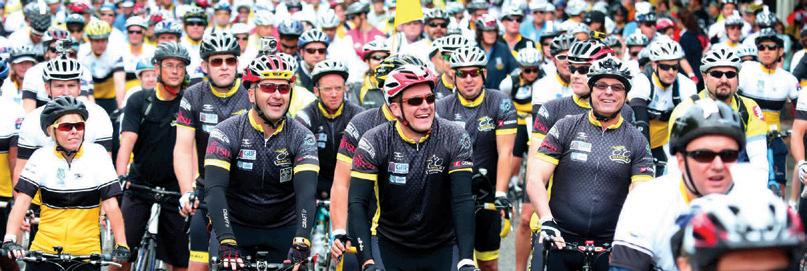
Join the 2015 Ride to Conquer Cancer® benefiting the Peter MacCallum Cancer Centre and be part of this epic 2-day cycling quest that will impact thousands of lives, including your own. Experience the camaraderie and kinship of thousands of Riders cycling toward a single destination – to Conquer Cancer.
Funds raised through The Ride support vital cancer research at the Peter MacCallum Cancer Centre and provide specialised technologies required to carry out this life-saving work.
This event will reach capacity and registration will close. Rally your family and friends and START YOUR TEAM TODAY!

MEREDITH SCHILLING 1
When people do this course, it’s as if James Raymond 2 points a really powerful hose onto a clogged surface. And all the mud comes off and you can see a sort of clarity.
Helen Garner
In 2003, the distinguished poet, critic and academic Chris Wallace-Crabbe told me that he and fellow writer Helen Garner had been invited to teach writing to judges as part of a new judgment writing course at the Judicial College of Victoria.
I was sceptical.
What could non-lawyers bring to legal writing? Were there any risks in allowing non-lawyers to tinker with judgments? Would simplifying legal writing strip the writing of its critical legal meaning?
A decade on, and the JCV judgment writing course is one of the College’s most successful courses, with an annual waiting list.
I was interested to explore the success of the course. I wanted to discover what the writers have taught the judges and vice versa. In the process I also hoped that I could learn what barristers can – and should – do to help judges write better judgments. 3
The language of Law
Professor Emeritus James C Raymond, the American Professor of Rhetoric who has led the JCV’s judgment writing course since its inception, has written:
One virtue of spoken English is its lexicon, which is generally simple and ordinary – a social constraint keeps us (I would hope) from dropping nunc pro tunc into our cocktail conversations. It would be pedantic to say to a real person, face to face, “The canapés are great; have you tried same?” But when lawyers write, they feel free to wax pedantic, perhaps because they do not have to look their readers in the eye.4
The habits that give legal writing its lofty tone are familiar to us all.
They include the use of arcane Latin expressions, legal jargon, long and complex words and sentences, and the overuse of the passive voice.
The human or corporate actors of the courtroom drama are de-personalised and known only as the “plaintiff”, “defendant”, “applicant” and so forth. And the story of the case – the who did what to whom and the essential issue in dispute between the parties – sometimes fails to emerge until the latter stages of a judgment, leaving readers
ploughing through pages and pages of facts and law, without any sense of how that material will be relevant to the issues.
Those habits, says Chris Wallace-Crabbe, are the number one challenge facing judges when they sit down to write a judgment.
Now a veteran teacher of many JCV courses, Chris Wallace-Crabbe says that there is an assumption held by many lawyers that legal language should have a “higher dignity than common parlance”, an innate sense that legal language should be “different from the language of citizens”.
The aim of the JCV judgment writing course is to challenge that assumption.
The JCV course was the first judgment writing course of its kind to be run in Australia.
In 2003, following expressions of interest from several judges, the JCV identified the need for a course focusing on the specific skills of judgment writing. The JCV arranged for Justice Murray Kellam and Judge Margaret Rizkalla to attend a judgment writing course run by Professor Raymond at the New Zealand Institute of Judicial Studies, and on their return, a judicial steering committee was created to establish a similar course at the JCV.
The committee members – who formed JCV’s inaugural teaching faculty – were Justice Kellam, Judge Rizkalla, Justice Linda Dessau, Judge Tom Wodak, Justice Peter Heerey and Justice Patrick Keane of the New Zealand High Court.
Adopting the New Zealand model, which had successfully used journalists and professional writers to teach alongside experienced members of the judiciary, the JCV invited Helen Garner and Chris Wallace-Crabbe to join the JCV faculty.
Over the years, the JCV’s teaching faculty has welcomed new members, including Justice Elizabeth Hollingworth and Justice Kim Hargrave, and the writers and journalists Gideon Haigh, James Button, Ginger Briggs and Michael Gawenda.
The course – which consists of lecture-style seminars, workshops and individual sessions – runs over twoand-a-half days at JCV’s Learning Centre in Melbourne. Initially offered to judges from all Victorian Courts, it has now been extended to members of the Victorian Civil and
Administrative Tribunal, some of whom may be non-legal members.5
The course has a practical focus. Each judge submits at least one finished judgment before the course starts. That judgment is read by the JCV teaching faculty, discussed with the judge, and then revised by the judge during the course, applying Professor Raymond’s principles.
All members of the JCV’s teaching faculty are trained in Professor Raymond’s methodology, which is structured around the twin concepts of “precision” and “architecture”.
Precision
Professor Raymond encourages judges to ruthlessly edit their writing to remove all legal jargon, unnecessary Latin expressions and long tangled sentences. Instead, judgments should be written in a direct and active voice, using plain language that can be understood by a reasonably intelligent nonlawyer. “Legalisms,” he writes, “give legal writing an arcane odor – like the smell of old books, not entirely unpleasant, but not exactly inviting. Legal jargon is quaint, but (with a few notable exceptions) it serves no purpose. And it distances the law from people who need to understand it.”6
Architecture
The “architecture” of a judgment, according to Professor Raymond, is the way the facts, law, analysis and decision are organised. He argues that every legal argument can be distilled to the same simple structure, a variation on the classic categorical syllogism:
These facts (narrate facts) … viewed in the context of this law/ contract/regulation/precedent/section of the Constitution/principle of equity (choose one …) lead to this conclusion (relief sought).7
The job of the judge, he says, is to distil that logical sequence from the disorder that characterises most trials – that is, from the evidence,
the law and the parties’ competing submissions.
Professor Raymond says that where judges go wrong is in taking the reader with them on that journey of discovery – in allowing readers to “follow [the judge] down blind alleys, wrong turns, false starts, and irrelevant facts until the issues finally pop up like mushrooms after rain”.8
During the JCV course, Raymond and the teaching faculty encourage judges to discard the orthodox approach to judgment writing, which generally follows a facts-lawanalysis structure.
Instead, judges should adopt a rigorous issues-based approach to judgment writing.
The methodology, at its most simplistic, involves five essential steps:
» First, identify the issues and write case-specific headings for each issue. If possible, do this before the hearing begins.
» Secondly, arrange the issues in a predictive sequence that makes sense – one that foreshadows the structure that is to follow.
» Thirdly, write a beginning. This is the “prime real estate” section of the judgment, says Professor Raymond. It should not be wasted on a procedural, routine, boring or mundane point. He says that the judge should imagine him or herself in a conversation with a neighbour over the back fence at the end of a long day.
The neighbour asks, “What did you decide today?”
The judge describes in “ordinary neighbourly language”9 who did what to whom, and the essential issue that the judge was required to decide.
Write the judgment introduction in the style of that conversation, without embellishment or jargon.
» Fourthly, analyse each issue.
Professor Raymond suggests a number of analytical tools to assist judges with this step in the process of judgment writing, the most prominent of which is the LOPP/
FLOPP analysis. This involves setting out, on an issue by issue basis, the losing party’s position (the “LOPP”), the flaw in the losing party’s position (the “FLOPP”), and the judge’s conclusion on that issue (which necessarily flows from the identification of the FLOPP).
» Lastly, write an ending that summarises the reasons “in a nutshell”.10
The challenge for the teaching faculty is to assist the judges to apply Professor Raymond’s methodology – to show how, after years of being themselves, the judges can transform themselves into Professor Raymond’s garden raconteur. And this is where the writers come in.
The writers’ role
First, and most importantly, the writers are not lawyers. This means that they can be the “neighbour over the back fence,” providing candid feedback to the judges about how an intelligent non-lawyer, with an interest in the material, might respond to the judgment.
Helen Garner said, “I think what I brought was not only that I was a writer, but that I was an intelligent person who was actually interested in what happens in courts.” She described her bewilderment on reading the first set of judgments provided to her in 2003:
I sat down and gave myself a couple of days to try and read the judgments that had been sent to us. And I was filled with terror. Many of them were completely incomprehensible to me. I had absolutely no idea what they were talking about. And I remember being on the tram going to the first session and thinking, “I am about to be exposed as a complete phony.” And then Jim Raymond gave his opening lecture. As soon as I heard what he had to say, I realised why I couldn’t understand the judgments – it was because they were really badly written. It wasn’t because I was stupid. It was because they were written in such a way that an ordinary
person couldn’t make head or tail of them. And so that was a great relief to me.
The writers bring immense technical skills in writing, which enable them to criticise the judgments in a positive way. Most of the writers are experienced teachers, journalists and academics. All have an interest in law, and the ability to deal sensitively with the judges and with judgments which have been delivered and, in many cases, published.
Helen Garner found no difficulty in responding to that challenge.
If there’s one thing I know, it’s what it’s like to have your writing criticised. Because even if you are writing technically or in the professional way that a judicial officer does, you are still in there – in the document – and it is a manifestation of your intelligence, maturity, discrimination and sensitivity.
I asked the writers what they hoped to achieve in teaching on the JCV course.
James Button, a writer and former deputy editor of The Age, described himself as a passionate advocate for clear language. He said that once a judge has resolved the complex issues for him or herself, the outcome of that complexity should be expressed in simple terms:
When you strip away complex language to its essence, you are forced to think clearly and logically about the sequence of events and the case.
As George Orwell said,11 always write clearly, because if you do, your follies will become apparent, first of all to yourself. And this is what we try and teach in the course.
Helen Garner talked about developing an awareness of rhetorical registers in judgment writing:
The broader your command of language and its different rhetorical registers, the more in control you are of the tone of your discourse. This is what I think judges should strive for, so that you can switch from one
rhetorical mode to another, and not be the prisoner of 18th century styles of discourse.
She described the use of the passive voice as an “escape” – “it takes you several degrees away from the human factor, which is what we talk about in the JCV course”.
The challenge of judgment writing
To explore the impact of the JCV course, I interviewed four judicial officers: Justice Elizabeth Hollingworth and Justice Kim Hargrave, both experienced trial judges of the Victorian Supreme Court and members of JCV’s teaching faculty;12 Deputy President Genevieve Nihill, a member of VCAT since 2004 and since 2014, head of VCAT’s Human Rights Division; and Magistrate Caitlin English, who was appointed to the Coroners Court in 2014 after 14 years as a judicial officer of the Magistrates’ Court of Victoria.
I asked the judges what they considered to be the main challenges of judgment writing.
“Lack of time” was a common theme. Justice Hollingworth said that the problem can be exacerbated by having to hear cases one after the other, so that a judge will often find themselves returning to a judgment weeks – even months – after the hearing.
Many judges also labour under unrelentingly heavy case loads. As one judge commented, “Everybody wants to do the best they can in every case, but the truth of the matter is that the work has to be processed.”
In the Magistrates’ Court and VCAT, where the volume of cases is even higher and there is little – if any – time allocated for decision writing, finding adequate writing time is a challenge. Magistrates and tribunal members must also be highly skilled in delivering clear and succinct oral decisions.13 What this requires, said Deputy President Nihill and Magistrate English, is the ability to marshal issues very quickly.
Some of the judges commented on a lack of understanding from practitioners about what judges need to help them write judgments.
One of the key challenges facing time-poor judges, said Justice Hargrave, is identifying the essential issues in a case. Counsel will sometimes run “everything and the kitchen sink”, he said, even where the case turns on only one or two key issues.
His Honour said that counsel should also take a more rigorous approach to the selection of documents, so that judges are not bombarded with many volumes of material of dubious relevance.14
Many of the judges said that the tradition of legal writing – with its long-winded, archaic and turgid language – can itself hinder the process of writing succinct, clear judgments.
“It can take a bit of courage to leave all that behind,” said Justice Hargrave.
Traditionally, lawyers and judges have considered that judgments are written primarily for the Court of Appeal and the parties’ lawyers, who – it is assumed – will explain the judgment for their clients. “Many lawyers pointedly refuse to write for a lay audience,”15 writes Professor Raymond.
The JCV course encourages judges to embrace a much broader audience. The legal audience includes other judges, tribunal members and law students, all of whom may need to read, understand and apply the judgment. But the audience also extends beyond those with legal training to the parties (particularly the losing party), the media, and informed and intelligent members of the community, many of whom now read judgments on Austlii.
And once it is accepted that the audience extends beyond the legal coterie, it requires a judge to write in a style that can be comprehended by that non-legal audience.
“What this requires,” says James Button, “is imagination”. “The hardest thing in writing,” he says, “is to put yourself in the reader’s head; to question, have I lost my reader? This requires an active imagination as you sit alone at your computer. It’s easiest to just think about the person inside
“The key to good judgment writing,” said Justice Hollingworth, “is planning before you go into court. This means identifying the issues. This enables you to keep notes, ask questions and organise your documents in a way that is going to help write a judgment.”
Whether it be a corporate takeover, or a murder, or someone injured in an accident, they are the stories of people’s lives and of the conflicts that have arisen.
your world – the lawyer – who is likely to be your fiercest critic, rather than the reader outside.”
Button describes clarity in judgment writing as a “democratic duty”. That cause is taken up by Justice Hollingworth, who says, “How can we possibly have laws and judgments that are meant to be followed by people, and yet say that they’re too arcane, important or difficult to explain to a reasonably intelligent reader. That simply offends my sense of access to justice.”
The need for comprehensibility is even greater in the Magistrates’ Court and VCAT – where a high proportion of litigants are unrepresented.
Issues-based approach
Identifying the issues, the judges said, required time and discipline. Some commented that it can sometimes be easier and quicker to simply “plonk” the evidence down. But all agreed that the investment of time that is required to distil the issues and the structure of the case pays off with a better judgment.
Deputy President Nihill described the effect of the issues-based method taught in the course as “transformative”. “All these pages and pages of saying what the evidence was – which is what we had always done – is numbing. And it takes someone outside – in this case the nonlegal writers – to see that,” she said. All of the judges considered that the process of identifying the issues should happen before the hearing even commences.
The story of the case
“It is our conviction,” said James Button, “that within every case is a narrative, and the task of the judge is to find that narrative.” The “story”, he says, reveals the flow of logic which enables the judicial author to take the reader with him or her. “If you can locate the ‘who did what to whom’ right at the beginning of a judgment, it gives structure to what follows,” says Helen Garner.
Deputy President Nihill said that the writers shed light on the way in which unnecessary legalese slowed down the narrative of a judgment:
That storytelling model is a key skill which I don’t think I would have brought to legal writing before the course. You are telling a story – even if it is a dry story – and you have to bring people along on that journey with you. And so at the very least, you need to set it out in a structured way and signpost the steps along the journey.
Some of those interviewed said that the focus on the story of the case reinforced the richness of factual disputes that come before the courts. “We have the most extraordinary material to work with,” said Justice Hollingworth. “Whether it be a corporate takeover, or a murder, or someone injured in an accident, they are the stories of people’s lives and of the conflicts that have arisen.”
I asked the judges whether there were any limits on the use of plain English in judgments. For instance, the term
‘estoppel’ – although utterly exclusive –is deeply embedded in the law.
“There are concepts such as estoppel,” said Justice Hargrave, “that are a useful shorthand. But that doesn’t mean they cannot be explained in terms which a nonlawyer can understand.”
The dangers of the cut and paste buttons
For many, the JCV course brought home the danger of cutting and pasting block quotes. As the writers explained, the risk is that readers will simply skim over such passages.
“Putting slabs of case law into a judgment kills it for the reader, because the reader will have to get out of the head of the judge writing the judgment, and into the head of another judge, whose writing may not be as clear,” said James Button.
For Justice Hollingworth, doing a précis or summary – rather than simply pasting in a block quotation – is an important analytical step in the process of judgment writing. If you can’t accurately and precisely paraphrase the principle from the judgment you are quoting from,” said her Honour, “how are you going to be confident that you have applied it properly?”
The joy of writing
I asked Justice Hollingworth whether the JCV faculty had encountered any resistance to the involvement of the non-lawyer teachers. Her Honour said:
When I started, I would sometimes speak to a participant who would say, “Well I’m not sure what this poet or writer is going to offer.” But then without fail, by the end, everyone ends up saying that the involvement of the writers was one of the best aspects of the course. And that’s because first, they get over the idea that the law has a particular mystique that only those inculcated in the rules of an arcane sect can apply, and they realise that they can learn things from good writers. And secondly, just as importantly, the writers bring back a sense of the joy in writing.
All of the judges said that working with the writers was an immensely positive experience, a chance to “think about the way you write, rather than what you write,” said Justice Hargrave.
A memorable part of the course for many of the judges was an exercise called “trick the reader”. Each judge is asked to write a series of paragraphs in the style of a passage of writing by a famous author of their choice – Ernest Hemingway, for example. The two are then projected on screen, and the rest of the judges decide which of the passages has been written by the famous writer, and which has been written by the judge.
“You might think, what’s that got to do with judgments?” said Justice Hollingworth, “but at the end of that short exercise, people say ‘I can write! I’d forgotten I can write. And I can write in a voice that isn’t the one I was taught at law school. And I can write something so interesting that they thought it was Hemingway!’ It helps people reconnect with the joy of writing.”
Some of the judges described the liberating impact of discarding legal verbiage. Magistrate English said:
One of the things I took from the course was that the reason so many of the legal decisions I’d read were so impenetrable was because they were impenetrable. The course cleared the air for me in that I realised that those judgments were poorly written, using a vernacular that wasn’t clear and a lot of jargon. And having read those decisions, I knew that I was falling into the same traps, because you tend to ape what you read, rather than taking a fresh lens to it as a non-lawyer would. So that was quite a revelation for me.
All the judges said the course was a highly enjoyable collegiate experience, a chance to get together with judicial officers from different jurisdictions away from the usual pressures of the job.
Much of that enjoyment was attributed to Professor Raymond’s
teaching style, which was described by one writer as a “tour de force”.
“People laugh a lot,” said Helen Garner, “and I think that’s partly because of Jim Raymond, who has enormous warmth, wit and sophistication in the way he deals with people.”
As Professor Raymond teaches, an effective piece of writing should always return to its initial purpose. In my case, that was to discover what the writers have taught the judges and vice versa.
The answer to the first part of that question, in the admirably succinct words of Justice Hollingworth, is that “good writing is good writing. And good legal writing is also good writing.”
All of the judges said that the course provided them with the skills to write more succinctly and comprehensibly. Justice Hargrave said the methodology had become “second nature”, a “rock to fall back on” when preparing for and running a trial, and later writing a judgment.
Magistrate English said that working with the writers enhanced her sensitivity to the nuances of voice and expression in writing – qualities that are essential for her Honour’s work in the coronial jurisdiction.
And Deputy President Nihill said that the course had made her acutely aware of the need to “rigorously and reflectively” check and recheck writing for unnecessary words and legalese. She said that at the very least, a judgment should always be organised in some coherent structure.
The exposure to judges has also left its mark on the writers.
“To have your mind changed by a beautiful clear judgment is really thrilling,” said Helen Garner.
She said since she began teaching on the JCV course, her whole attitude to judges had changed. A self-confessed “old hippy leftie from the 70s,” who thought of judges as
“remote, cold figures who knew nothing,” she now sees judges as simply “struggling people” – “just people who really interest me,” she said.
Likewise, Chris Wallace-Crabbe described a new admiration for judges who, he said, are often required to resolve “complex legal, linguistic and moral cases under pressure – pressure of other cases, and of time generally”.
It is clear that the JCV course will continue to play an important role for judges in the quest for clearer, more comprehensible, writing.
Tips for barristers on writing submissions
1 Apply the rules described in this article to the writing of submissions.
2 Write clearly, logically and without legal jargon.
3 Identify the viable issues at the outset, and structure your submissions around those issues. Adapt the LOPP/FLOPP analysis by replacing the LOPP (the losing party’s position) with the opposing party’s position (the “OPP”). Then identify the flaw in the opposing party’s position (the “FLOPP”).
4 Avoid lengthy block quotations from authorities and evidence.
5 Wherever possible, use the active rather than passive voice. For example, write “she told him”, rather than “he was told by her”.
6 Rigorously check and recheck writing. Delete anything that is not essential.
7 Make written submissions something from which a judge can cut and paste. As one judge said, this is not because it’s your job to write the judgment. But if a judge has two sets of submissions and one set is not tendentious, is reasonable, well-structured and accurately summarises the facts, that will be the set of submissions that will be most helpful to the judge when they come to write their judgment.
1. The writer would like to thank those judicial officers and writers who took time out of their busy work schedules to participate in interviews for this article. They are: Magistrate Caitlin English, Justice Kim Hargrave, Justice Elizabeth Hollingworth, Deputy President Genevieve Nihill, James Button, Helen Garner and Chris Wallace-Crabbe. Thanks also to the staff of the JCV for their assistance – in particular, Samantha Burchell, Maria Lusby and Melinda Shiell – and to Professor Raymond for his helpful comments on the draft.
2. A Professor Emeritus of the University of Alabama and former editor of College English, Professor Raymond has conducted programs on legal writing and reasoning for judges and attorneys in six continents and more than 25 countries.
3. This article is not about the legal requirements of adequate reasons, although those principles inform the way in which judges go about judgment writing.
4. Professor James C Raymond, “Why can’t lawyers write like Katherine Mansfield?”, New Zealand Law Conference: The Law and Politics,
Conference Papers, 1993, vol 2, pp 210216. Reprinted in (1997) 3 The Judicial Review 153-161.
5. For the sake of simplicity, in this article I refer collectively to JCV course participants as “judges”, and to all judgments and reasons as “judgments”.
6. See endnote 4.
7. James C Raymond, “The Architecture of Argument”, (2004) 7 The Judicial Review 39-56.
8. Ibid.
9. Ibid.
10. This summary is drawn from materials prepared by Professor Raymond for participants of the JCV course. The materials summarise the principles set out in the article referred to in endnote 7.
11. George Orwell, “Politics and the English Language”, 1946, Horizon, London. The passage summarised by James Button states: “If you simplify your English, you are freed from the worst follies of orthodoxy. You cannot speak any of the necessary dialects, and when you make a stupid remark its stupidity will
be obvious, even to yourself.”
12. Justice Hollingworth is also a faculty member of the National Judicial College of Australia’s judgment writing course, previously led by Professor Raymond. The comments expressed in this article derive from her Honour’s experience of teaching on both programs.
13. The JCV’s judgment writing course is now complemented by a separate JCV course on oral decisions. The oral decisions course began in 2008 and is being led in 2015 by Professor Edward Berry.
14. See The Hon Justice Hargrave, “How to assist the Court in the efficient conduct of a large commercial trial”, paper presented at the Commercial Law Conference, Supreme Court of Victoria, 10 December 2012.
15. See endnote 4.

Our 3 principal lawyers, Wendy Jenkins, Paul Ross and Marita Bajinskis are Accredited Family Law Specialists. We provide expert legal advice regarding:
• Marriage and defacto relationships
• Separation
• Division of assets
• Care of children
• Child support and maintenance
• Financial Agreements (pre-nuptial or cohabitation agreements)
• International family law matters


Level 3, 224 Queen Street, Melbourne VIC 3000 T 03 8672 5222 www.blackwoodfamilylawyers.com.au
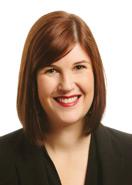

Psychological observations and strategies for coping with the stress of life as a barrister.
BERNADETTE HEALY MAPs
Psychologist Bernadette
Healy BA MAppPsych MA MAPS
of the Re-Vision Group has been appointed to provide counselling to all members of the Bar and their immediate family. Five free sessions each are available for barristers and their immediate family per calendar year. Re-Vision Group psychologists are available 24 hours a day, 7 days a week, to assist Bar members to deal with any crisis that occurs. Please call 1300 849 908 if help is required. The Victorian Bar congratulates the Health and Well-being Committee on the nomination of the Barristers Counselling Service as a finalist for an Australian Psychological Society (APS) Workplace Excellence Award. The awards ceremony is being held on 3 July 2015
The particular stressors that barristers face – as reported during counselling – often result in a private fear that the barrister will unravel in some way. Typically, barristers experience this fear in their professional life and it is accompanied – and exacerbated – by a hyper-vigilance that is not dissimilar to that reported by sufferers of posttraumatic stress. Barristers tend to be extremely self-critical. And the threat of judgment is a very real part of their professional life, as is intense conflict. The combination of this professional reality with an over-used (at least in their personal lives) critical facility is detrimental to their wellbeing and psychological health. Unchecked, the continual interaction of these two factors can lead to extreme stress. One of the causes of this stress seems to be an impoverished ability to connect both to the self and to others. This may be connected to the over-use of strategies originally adopted as protective in the face of inherently conflicting personal and professional demands. It has become increasingly clear that the relational domain is an area of particular need in the work with barristers who attend counselling and one of potential importance in the area of preventative health and well-being generally. The consideration of balance, both internal and external, is a critical factor in both the creation and management of these difficult issues.
The following is a preliminary discussion of the proposition that the relational domain is an important component of a barrister’s health and well-being. The observations and insights that support this discussion are drawn from professional experience with more than 150 barristers. This discussion is by no means exhaustive of the situations brought to counselling.
The comments and practical suggestions are offered for both barristers who are trying to make sense of their own
experience of work stress, particularly how it affects their interactions with others, and barristers interested in better understanding and supporting colleagues who are having interpersonal difficulties.
A highly competitive arena characterised by conflict typifies the working environment of barristers. Their workload often fluctuates between periods of little work and intense stretches of heavy workload. The nature of the work is isolating, whether in peak periods or not. Indeed, to reduce the isolation, the individual barrister usually has to deliberately seek out collegiate support or input. In addition some of the work is done literally in the public domain and the work may be criticised by both the judiciary and opponents while it is being done. It is a singular and stress-inducing professional pressure (particularly in the first few years) to be regularly in a position where your work can be publicly criticised while you are doing the job.
Barristers routinely report experiences that indicate characteristics such as independence, perfectionism, self-criticism, pessimism, achievement-orientation and highly developed rational thinking skills. In addition, they are used to being an expert. These features are necessary for barristers in their work, but they also seem to be protective in terms of minimising the potential negative impacts of the work on the barrister. For example, the tendency for barristers to be highly rational, self-critical and achievement-oriented increases the likelihood that they will have considered possible scenarios, and potential criticisms and rebuttals and will therefore, in theory, be prepared. However, as is often the case, strength in one situation can increase vulnerability in another. For example, being highly self-critical may help in adopting the most efficacious work approach, but it may also increase vulnerability to excessive rumination, cognitive distortions and other stress-inducing practices post-matter. Similarly the highly developed rational thinking skills that are essential to a barrister in his or her work may harm personal communication, even leading (as has often been reported), to the barrister feeling distant and disconnected from his or her partner.
The following diagram is offered as a possible representation of what is going on internally for
barristers in terms of the various life-domains at the time of initial presentation. It is not based on any particular individual but incorporates a number of features that are commonly present (though it is in no way exhaustive of all presenting situations). The diagram is intended to highlight the sense of internal imbalance typical in the life of those highly stressed barristers who attend counselling, and suggests the relative weight commonly given to different life aspects at such times plus a suggestion of the feelings of pressure that this position evokes. The diagram is representative of the internal state of mind of the barrister, which may or may not represent the reality of the external situation. This is therefore not a model of work-life balance but a model of the internal representation of a barrister’s experience of his or her work and life domains.
Notes on the diagram
In this diagram, work is felt to take a disproportionate amount of energy compared with other aspects of the barrister’s life. This energy may relate to the number of hours spent at work or the focus given to work, which occurs even when the barrister is not actually doing the work. ‘Work’ is red specifically to suggest the long-term risks of work’s dominance, particularly to relationships, including one’s relationship with oneself.
‘Family’ includes the partner, parenting responsibilities, and family of origin. During times of extreme stress, it is not uncommon for family responsibilities to be grouped together and seen as one source of stress. As the stress recedes, and the barrister feels that he or she is better managing his or her psychological state, the barrister will begin to interact again with family as individuals and in terms of separate family responsibilities.
‘Friends’ is represented as a small separate box without connection
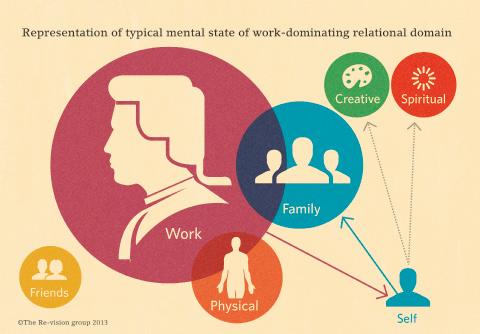
to anything else because barristers commonly lose contact with their friends or see them only occasionally due to work pressure (particularly barristers with young families). This does not equate to a lack of concern for friends but does suggest that work can take over, leaving the barrister feeling as if all he or she does is work, worry about whether more work will come, or recover from work sufficiently to return to work. Unfortunately, in chronic stress states, the disconnection from friends may continue even when the work pressure dissipates.
‘Physical’ refers to exercise, nutrition and other body-focused self-care. In this area, in particular, the patterns are similar to other client groups. That is, some barristers actively take care of this side of their lives even while suffering severe psychological distress. Others experience a pattern of intermittent physical self-care interspersed with periods of neglect. And yet others present for counselling having neglected their physical state for some time, including in the form of substance abuse.
‘Self’ refers to the person’s sense of who they are. Barristers typically report intermittent and insufficient self-care, including very little time
spent alone other than for work, and an ever-decreasing involvement in hobbies or other interests.
‘Spiritual’ relates to a person’s reflection on the meaning of life in a broad sense, which may or may not incorporate a particular religious faith. Again, many barristers report neglect of this over extended periods.
‘Creative’ refers to activities which allow for self-expression. Barristers who attend counselling rarely report that they are spending time actively involved in self-expression. Indeed, many barristers report that they have abandoned once much-loved creative pursuits. But, as counselling proceeds, it is very common for barristers to re-connect with a previously enjoyed creative activity. This is both via active encouragement of that activity and as a natural consequence of the ‘space’ created by being involved in the counselling process, by which barristers give themselves permission to return to or try out creative pursuits.
When a barrister is suffering the sort of internal imbalance that the diagram above represents, several troubling features are typically
reported from within the “relational domain”. The relational domain comprises both the barrister’s interpersonal dealings, including with his or her partner and their child or children, and the intrapersonal – or relationship with the self. These troubling features include:
» relating transactionally to others;
» the risk that the barrister brings home a courtroom communication style;
» lost opportunities for connecting with children;
» the cost of ongoing transactional communication at the expense of process orientation;
» repeated cycles of increasingly narrow transactional communication leading to loss of joy.
I describe these features below together with a sample of strategies that are useful in dealing with these situations.
With partners, the imbalance is likely to present as less sharing of experience, particularly about feelings, and conversation then tends to be dominated by the logistics of running the household.
This transactional form of relating may continue over an intense work period, and the barrister may not even notice it during peak workload times. However, if this behaviour continues over long periods, the barrister develops a sense of detachment, not only from others, but also from the self. The barrister may feel lonely at home and perhaps be aware that home life is going on independently of him or her; the barrister may have a sense that he or she is not part of home life or does not know where to fit in. Alternatively, the barrister may feel that there is never the time to be how he or she would like to be in the family with associated feelings of disappointment, regret, guilt and frustration at this compromised
position. The feelings may prevent the barrister from discussing the situation with his or her partner, thereby continuing the transactional relationship. Relating to a partner in a purely transactional way may result in reduced intimacy, which in turn increases the likelihood that a purely transactional form of relating will continue. (A lack of physical intimacy can also be detrimental to a relationship. The detriment will be exacerbated where it occurs simultaneously with a general lack of intimacy. Physical intimacy may lead to an increase in general intimacy or it may offset the lack of general intimacy, but it will generally be insufficient in the long term to develop a sustainable sense of connectedness for both partners).
Collaborate and communicate about work demands
Create a realistic and ongoing conversation with your family regarding work demands, and develop together a set of ‘guiding principles’. These principles would ideally distinguish between core and non-core partner and family time. Pay attention to the actual time commitment for various pieces of work and incorporate this into the conversation and planning with your family to ensure the collaboration is realistic.
Barristers tend not to notice and therefore don’t reflect on their strong emotional reactions in particular situations, for example, as a result of exposure to a difficult case. Instead, the stressed barrister will typically try and hurry home from a long and difficult day (perhaps with a sense of guilt at not having arrived earlier) and unthinkingly bring the leftovers of the day (exacerbated possibly by the realisation that more work needs to be done later that night) to their
demeanour on arriving home. This may include questioning, excessive irritability, avoidance, including through the use of alcohol, picking up on issues of logic in conversation, and impatience with a less than erudite delivery from family members. They may therefore be at risk of bringing a courtroom style to their communication at home.
Often, being an expert within a profession with high social status and influence, such as that of a barrister, inadvertently leads the professional to overestimate the value of his or her opinion relative to that of other family members. Most occupations have the potential for some negative effect on family life; the danger is not in the work you do but in a lack of reflection on how the work may be affecting both you and your family, and also a lack of preparedness to consider how you might accommodate your style to suit the situation.
Think about the various transitions in your day. Most importantly, consider the transition between work and home, and build in a ritual to close off from work before entering home. Mindfulness practices are perfect for this kind of purpose. Consider other transitions during the day and reflect on ways for creating closure from one task to another. Even a simple reminder to yourself as you put down the phone after a difficult conversation with someone, “that call/ task is finished, there are aspects that I need to re-visit at some stage but I am about to start work on another task now and that task deserves my full attention, free of any pollution from the difficult aspects of the previous task”.
If you have had a difficult day and arrive home feeling at risk of misplacing your feelings of stress, allow yourself 15 minutes’ privacy after announcing the need (for example, “I am home and will be with you shortly but I need a few minutes
to myself first as it has been a difficult day”; putting a timer on can assist little children who are waiting for you).
Review how you approach work, and develop systems and processes to fit your personality and work style rather than the other way around. The reality that, as a barrister, you often work alone for large chunks of time can be a risk factor during times of extreme stress. Think about some safeguards that you could put in place in readiness for stressful times. For example, make a regular time for a coffee catch up with a colleague with a view to this becoming a habit. Support will then be available during difficult times. Pay attention to the activities that both deplete and energise you, and adjust them during stress peaks.
Collect data about ‘good enough’ standards for non-work responsibilities that you can use in times of peak work-load.
Quantify minimum requirements for non-work activities and set them as the basis for core activity levels during peak workload. Do this in collaboration with family and friends and prepare them for times when you are going to rely on the “minimum standard”. Review this regularly.
Where there are children, your dominant approach may be outcome-focused and your conversation with them may be emotionally uninvolved – primarily about what has or has not been accomplished, including homework, practice, behaviour, scheduled extra-curricular activities. This does not allow for simply “being with” children, an approach that is characterised by the parents’ active efforts to fit with what seems to be going on for the child. For example, you might try and feel the same sort of energy your child is showing
and suggest or ask about an activity that fits with what you have felt and observed. This will create the space for children to express how things are for them. As with partners, sharing this kind of experience fosters connection.
Mindfully engage with your children
Regular and authentic mindful approaches to being with your children will lead to increased levels of connection. For example, begin by physically positioning yourself at the level of the child (e.g., sitting on the floor), concentrate your whole attention on them, turning off phones and putting away screens before being with them. Invite them to lead you in some sort of game or activity and then give your full attention to them and that activity. (Setting a timer for the activity can help orient a young child and enable that child to have a way of ensuring a ‘fair’ distribution of parental attention.)
Avoid controlling by threat of loss
Consider your use of reward versus punishment. Do you discipline by threat of loss or by rewarding desired behaviour (including actions that are heading in the direction of
the desired behaviour rather than only rewarding the achievement of something)? In general, strengthbased approaches are more effective forms of behaviour modification than punishment. Relying on the threat of loss to control undesirable behaviour tends to make the child focus more on the thing that they fear losing, making it even more desirable. For example, the threat of loss of screen time can lead to a pre-occupation with the screen time. In addition, it can instil fear in the relationship and removes potential opportunities for you as a parent to have a positive conversation with your child or children.
The absence of process-centred conversation within the self (for example, self-talk which moves beyond a judgement or outcome focus) is another indication of the disruption of the relational dimension, particularly during times of extreme stress. Typically there are very high levels of rumination on past events and concern
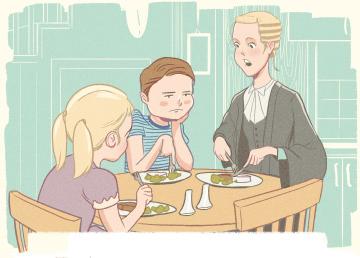
Transferring a court room style to the home, she submitted that they must eat their broccoli and she did not allow submissions in reply.
for warding off future threats but little in the way of reflection on experience for the purpose of making sense or finding meaning, the latter being characteristic of a process-centred conversation with oneself.
Process-centred conversations related to work, such as discussing the personal impact of a very serious and negative outcome for a client, which often produce feelings of trauma, fear and vulnerability, may be avoided due to a desire to protect a loved one; or perhaps it is avoided because it will be thought to protect the individual from re-living the difficult moment. However, the tendency to withhold significant moments of experience from loved ones – regardless of the motivation – tends to lead to increasing levels of withholding of emotional material in general. This in turn leads to feelings of isolation and decreased intimacy. As described above, an increasing focus on the external practical business of family life will then dominate and the cycle will continue.
Mindfulness
Mindfulness involves paying attention to what you are experiencing in the present, without judgement or reaction. Mindfulness provides a counterbalance to excessive rumination and anxiety, both of which are common issues for barristers. In addition to meditationtype mindfulness practices, we have found that teaching barristers how to incorporate mindfulness into an existing (albeit perhaps long-forgotten!) interest area can help reduce stress. The resulting benefits include a commonly reported decrease in levels of reactivity and increased levels of joy and engagement but also include increased creativity and freedom and a renewal in positive self-regard.
Resist the urge to predict your partner’s responses
Practice two-way respectful conversation and resist ‘mind-
reading’ your partner. That is, ensure you have a conversation, even when you think you know what the other will say and what the outcome will be.
One of the common impacts of long-term stress is high levels of irritation. This is particularly likely for individuals who are highly selfcritical. When this side of the self is not acknowledged or understood, the person is also likely to be highly critical of those around them. At a time of transition, such as when you get home from work, it is likely to lead to escalation. Individuals often describe feeling out of control with their behaviour and they recognise a pattern at home with their loved ones in which they feel trapped and dislike how they are acting. Over time, playing out these roles leads to a rigidity in the family dynamic and a lack of authenticity, spontaneity and joy. The barrister feels that he or she no longer has fun and when the psychologist asks the barrister to talk about recent fun times, it is not uncommon to hear, “I really can’t remember any.”
Establish a routine sharing daily positive experiences
Starting during a holiday period, build in a positive feedback conversation to your daily routine with your partner and children (a couple of things that went well today…). The more habitual this becomes, the more likely you will be to continue using it when you feel stressed. And as the practice becomes established, you will be able to prompt each other at times of decreased energy for any one family member.
Engage in a broad range of activities
Allocate regular time for reflection, personal time and participation in creative and leisure activities. Watch for feelings of stagnation and lack of
laughter as these suggest that your experience is becoming too confined and that some expansiveness is required. Resist the pressure to abandon your interests.
Ensure collegiate contact
Schedule regular collegiate time with other barristers, possibly with someone outside your technical domain to remove any concerns over competition.
Build healthy relationships with nonlawyer friends
Schedule regular contact with friends outside the legal sector, which helps to provide a reality-check against the risk of ‘groupthink’.
Making a change in your life is of course not easy. It takes courage to recognise and acknowledge that you need to take some sort of action because your mental health and wellbeing are suffering. Several factors increase the likelihood that you will succeed in making a change and some of them are described below:
For personal change to occur, it is essential that you are able to take responsibility for your choices and decisions. Learning to be totally honest with yourself is a long journey for most people, and it is important to be mindful of tendencies to explain decisions in terms of others, either for the sake of others or for blaming others for the need to make a decision in a particular way.
You need to be ready to reflect seriously on your interpersonal life and be prepared to make a targeted effort. This can of course be done alone. If counselling is sought as part of this process, you should expect to work both within and outside the counselling room to gain the maximum benefit. The therapeutic relationship provides the rare opportunity to explore how you are affecting another individual,
without fear of criticism, judgement or rejection. Within that relationship, you can practise new ways of interacting and your new skills can then be transferred to relationships outside counselling. The tendency of barristers to seek help at a late stage provides an urgency which can make them more ready to focus their effort and make changes.
The starting point when you have recognised the need to create some personal change, is to learn selfreflexivity. Self-reflexivity is the ability to reflect on and process your own thoughts, feelings and experiences and to take a curious stance about how you function in the world, including how your values and underlying beliefs affect your experience. With your relationships, you need to learn to observe how you are with people and to use this experience for reflection and analysis. You can then identify the focus for change and begin a change program.
As already discussed, many barristers are highly self-critical and often report thoughts and opinions about themselves which suggest the existence of a nasty and punitive inner judge. For a personal change process (alone or through counselling) to be effective, barristers need to let go of their critical stance and learn how to foster a kinder attitude towards themselves. In the relational area, this kindness is essential to allow self-forgiveness, for example, when there is recognition of having behaved destructively in a relationship or having allowed yourself to be treated destructively. The self-forgiveness process needs to begin before new ways of relating can most effectively be practised. The outcomes of these strategies are commonly reported to be increased engagement in one’s own life; greater personal effectiveness, including at work; less criticism of self and others; and increased availability to others.
Even small shifts in focus require time and effort, and patience is required with any change effort. There will be times of great frustration. This is particularly so where tolerance for frustration is low, which is common amongst high-achieving individuals who have been used to succeeding relatively quickly and have done so from an early age. That is, they have had less practice than most in learning to tolerate their own frustration during pre-mastery stages. Anxiety is often experienced simultaneously with low tolerance levels. It is regularly observed that staying with the uncomfortable feeling, rather than running away or seeking to lower the frustration levels by unhealthy means such as through alcohol abuse, over-use of prescription medication, avoidance of social interactions, leads to sustainable change and increased levels of personal mastery and satisfaction. A number of simple practices can easily be taught to help barristers tolerate frustration. In the relational domain, it is common to hear that troubling relationship issues have been around for a very long time. It is important to be realistic about changing such long-standing issues and to begin the process by learning some strategies for dealing with the inevitable frustration of the change process.
to share with loved ones so that they are part of the journey To create change within the relational domain, the barrister needs to move to the point where he or she can share key aspects of the counselling process with a partner. Many barristers who are having difficulty in the relational area may take quite a while before they feel able to talk about the counselling experience, particularly the times in which they experienced greatest vulnerability. Although it is obviously not necessary to share all aspects, it is very important when the barrister has a partner that the emotional aspect of the process be shared. This is important for many reasons: the
partner is a very important ‘other’ to validate the work done during counselling; there is potential for progress and healing just from the action of having one’s partner ‘witness’ the story told in counselling; and the sharing of vulnerability with one’s partner offers the possibility of both healing past injuries and increasing feelings of intimacy and connection. This takes significant courage, particularly if the notion of sharing feelings and the expression of feelings was discouraged while growing up or if one experienced any kind of abuse towards expression of vulnerability. Emotion is a marker of meaning. That is, the experience of emotion signifies to the self that something which holds personal meaning is occurring. If such moments are not shared with one’s partner, there is a risk of them missing out on learning something meaningful to you and of further distance being created between you.
I have seen that barristers’ relationships both with themselves and with others are particularly vulnerable to the impact of work stress. The impact of periods of peak workload can result in a sense of imbalance in which the barrister feels that work dominates his or her internal landscape, even when not at work. This imbalance may impact in various aspects of barristers’ relationships. I have suggested different strategies which may be of potential benefit, including a range of best-practice therapeutic interventions and techniques –mindfulness in particular is of great potential benefit for barristers. Most importantly, the barrister must learn to make sense of his or her own experience and the accomplishment of this within counselling requires that the primary focus be the therapeutic relationship.
A different version of this article was published in QUT Law Review Volume 14, Number 1, 2014 Special Edition: Wellness for Law.
SIMON TISHER
Ihadn’t been asleep for very long before the wake-up call arrived. It was 11pm. Dressed and as ready as I was ever going to be, I trudged into the mess tent. Here, our group was given some sort of figurative last supper before our midnight quest for the summit began.
This procession of events was taking place at Barafu Camp, 4,600m up Mt Kilimanjaro in Tanzania. It had taken our group six days of trekking to reach this point.
Our group comprised 11 Australian trekkers, two of whom were members of the Victorian Bar (myself and Marc

Felman). We had signed up with World Expeditions to climb Mt Kilimanjaro, Africa’s highest mountain, via the eight-day Shira route.
Our climb began at the Londorosi Gate, a three-hour drive from Arusha in Tanzania. Here at 2,250m was the gateway to the Shira route, one of numerous paths up to the top of ‘Kili’.
Kili is made up of three volcanic cones: Kibo (which contains Uhuru Peak, Kilimanjaro’s summit at 5,895m), Shira and Mawenzi. All lie just south of the equator, close to the Kenyan border. We would see everything from tropical rainforest to grasslands, high-altitude desert
For the most part, the walking itself was crossterrain punctuated with sometimes-steep uphill and/or downhill sections.
and, finally, above 16,000ft, alpine tundra. In the economic windfall we had bestowed on Paddy Palin, Macpac and Kathmandu prior to our departure, we packed everything from shorts and dri-fit T-shirts to merino tops, beanies, ski gloves and down parkas.
We parted company with the vehicles near 3,000m. For the rest of that day and the next we walked along the arid Shira plateau and past the Shira crater. Despite the blue sky, a chill wind made it clear that tropical climes lay far below us. Our home for that night and for the remainder of the trek would be a camp site situated anywhere between 3,500m and 4,600m.
Life on Kili took on some sort of a routine for the next few days. We would be woken at 6.30am by the porters. Two bowls of water were placed at the entrance to each tent, one for each of its inhabitants. Breakfast was served in the mess tent and water bottles filled before we set off, typically around 8.15am.
For the most part, the walking itself was cross-terrain punctuated with sometimes-steep uphill and/ or downhill sections. We faced the health effects of high altitude. Several in the group suffered from headaches, fatigue and interrupted sleep. There was an on-going debate about the utility of Diamox (a diuretic commonly used to treat altitude sickness).
The views each day were spectacular. Ice cliffs high on Kili’s slopes were easily visible. In the opposite direction, on the horizon,


the volcanic cone of Mt Meru, which, at 4,565m, towers over Arusha. Our morning walk generally took us to camp for the next night. Acclimatisation walks occurred in the afternoons, invariably to beautiful lookouts. On the fifth day, our walk descended into the Great Barranco Valley. Here, giant groundsels (akin to a tropical cactus) grew in abundance, in stark contrast to the ice cliffs that were visible high above.
This was the lead up to our arrival at Barafu Camp and Kilimanjaro’s signature evening: the night-time ascent from 4,600m to Uhuru Peak at 5,895m. World Expeditions had quoted us that, on the Shira route, 85 per cent of its clients reached the summit. That night, we listened attentively to our guide’s briefing.
We would be woken at 11pm; porridge and toast would be served at 11.30pm. We should wear a head torch, four layers on our legs and five to seven layers on our upper body.
At 12.05am we set off. ‘Polepole’ (Swahili for ‘slowly, slowly’), we trudged upwards through the darkness. The trail soon took the pattern of an uphill zig-zag. Every 20 minutes or so, a break gave us a reprieve of 5-10 minutes with the chance to drink or eat a snack. This became the status quo for over six hours.
By around 5.30am we were told we were close to Stella Point. At 5,756m Stella Point is on the edge of Kibo’s plateau and close to Uhuru Peak. By around 6am, the sky to the east was glowing in changing hues of orange.



Behind me I could make out the jagged outline of Mawenzi, a volcanic peak which had only come into view from Barafu Camp.
We reached Stella Point as the African sun rose behind Mawenzi. I stopped for a triumphant photo next to the Stella Point welcome sign, now bathed in orange sunlight. The good news: a feeling of jubilation and the opportunity to down the cup of tea that was presented to me. The bad: exhausted, we were hurried onto the last walk to the summit – another hour or so, we’re told.
The final walk to Uhuru Peak was spectacular. To my left were the white-aqua colours of some
I stopped for a triumphant photo next to the Stella Point welcome sign, now bathed in orange sunlight.


of Kili’s glaciers. To the right, moonlike terrain with more ice cliffs and glaciers in the distance. Somewhere in between those distant ice cliffs and myself was Kibo’s crater.
What I had read and been told about the ‘Snows of Kilimanjaro’ is depressing: Kilimanjaro’s glaciers have lost 85 per cent of their ice since 1912. The glaciers are expected to disappear by the 2020s or 2060s (depending on what one reads). Vastly depleted they may be, but Kili’s summit plateau still contains enormous ice cliffs.
We were pressed ahead towards Uhuru Peak. We gathered for photos in front of the sign, then slowly started to amble back towards Stella Point.
The descent to Barafu was filled with… dust. Shifting gravel gave way under our feet as we descended. Within around two hours we reached camp. Light Kilimanjaro sleet soon began to fall. After a rest and a meal, we descended further to Millennium
Camp (3,800m) where everyone was more comfortable.
The descent continued the next day. With little transition, we entered Kilimanjaro’s rainforest, which had eluded us so far. Lush and dense, it was spectacular. Buoyed by our achievement and with more oxygen in the now humid air, we charged energised down the track as if we had been granted a new lease of life. The gloves, beanies, thermals and parkas that had kept the elements at bay for days were now nowhere to be seen.
We arrived at the Mweka gate to sign out. At 1,650m, we dropped more than 4,000m in two days. Perhaps unsurprisingly, two days of steep descent had extracted a greater toll on my legs than six days of uphill: I was happy to walk no more. Although I looked forward to a shower, some modern comforts and two days in the nearby Ngorongoro Crater, I was already nostalgic about the unique experience that had just ended.

To be a lawyer you must have the stamina of an ox and a hide like a rhinoceros and when they kick you in the teeth you must look as if you hadn’t noticed it.
Joan Rosanove QC
In the Victorian Supreme Court on 14 April 1920, the Prime Minister of Australia, William ‘Billy’ Hughes, steps into the witness box. His hearing trumpet pressed to his ear, he is sworn in as a witness for the defence in a libel case against the Geelong Advertiser . The plaintiff is the former Labor MP for Corio, Alfred Ozanne.
The alleged libel concerns the publication three years earlier of a report by General John Monash that Sergeant Ozanne had been absent without leave on the eve of his unit’s embarkation for France. The report was contained in a cable from AIF Command which Prime Minister Hughes had released to the press just weeks before the Federal election in May 1917. Hughes’ Nationalist government was returned. Ozanne lost his seat.
Hughes gives evidence that he authorised the publication of the cable. In crossexamination, it is put to him that he
deliberately suppressed the release of another cable more favourable to Ozanne:
Did you ever see this cable message of March 29?
Mr Hughes – I have seen something like it before.
Did you deliberately suppress it? – No.
Did you give it to the press for publication? – No.
A thesis is developed – had the exonerating cable been released to the press, the libel would have been averted. It is put to the Court that the Prime Minister had caused the libel.
The Prime Minister’s interrogator is Miss Joan Lazarus. She is 23 years old. She has been admitted as a barrister and solicitor of the Supreme Court of Victoria for just 10 months. She appears with her father, Mr Mark Lazarus, who practises as an amalgam (solicitor-advocate) in Ballarat and Melbourne and to whom she was articled at the age of 16. Her father is her champion.

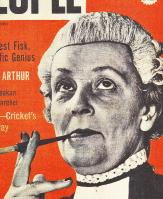
Miss Lazarus had opened the plaintiff’s case the previous day before Mr Justice McArthur and a jury of six, submitting that, even if the defendant could prove fair comment and privilege, the articles evidenced malice. The newspaper is represented by the formidable veteran H. W. Bryant and his junior, John Latham (later Sir John Latham, Chief Justice of the High Court). J. R. McFarlane (later Sir James McFarlane, Justice of the Supreme Court) is retained by the Minister of Defence, Sir George Pearce, on a watching brief. The defence opened early in order to call Sir John Monash, who had to leave that day for business in Adelaide. Mark Lazarus took Monash. But Joan takes the Prime Minister. Years later, Sir Arthur Dean (retired Justice of the Supreme Court), who had been admitted in the same intake as Joan and was in the court that day, will write in his history of the Victorian Bar:1 ...a good deal of the case was conducted by Miss Lazarus: a number of the junior Bar attended and watched with some jealousy her handling of this important case.
A contemporary report in the ‘Social Chat’ column of Freeman’s Journal gushed:
Willie Hughes, the Prime Minister, met more than his match in a woman in the Ozanne ex-M.P. libel case against the Geelong ‘Advocate’ (sic). A lady appearing for Ozanne (Miss Lazarus) had Mr. Hughes in the box on Wednesday, and gave the irrepressible Billy a very uncomfortable quarter of an hour. The lady lawyer said she might want the big little man later on. “But I may not be - here,” said Billy. ‘Don’t worry. I’ll have you brought here,” said the fair advocate.2
Later that year “the fair advocate” will marry and become Mrs Joan Rosanove. In three years, she will sign the Bar Roll and become Victoria’s first woman barrister.3 Although her fledgling practice will
take her to the High Court in 1924, this stage of her career will be short lived. By 1925, Joan Rosanove will resume practising as an amalgam, having been rejected by instructing solicitors and her brethren at the Bar. After 22 years, during which she will build one of the largest matrimonial causes practices in the state, Joan will return to the Bar; re-signing on 10 July 1949.4 On 16 November 1965, after 46 years in legal practice, Joan Rosanove will be appointed Victoria’s first woman silk. She will tell her daughter, “This is the happiest day of my life”.5
Joan was born in Ballarat on 11 May 1896, the second of eight children of Mark and Ruby ‘Rube’ Lazarus. Mark grew up in St Kilda, was educated at Wesley College and studied law at the University of Melbourne. He was admitted at the age of 21 and commenced practice in Melbourne. Later, Mark and Ruby made their home in Ballarat but he also maintained a Melbourne practice. In Ballarat, Mark acquired union business. His previously conservative political outlook became more sympathetic to the Labor party. He once ran as a Labor party candidate, without success.6 He was more successful as a lawyer; practising as an amalgam.
Ruby also came from a line of lawyers. Her father, David Braham, the son of a noted English barrister, had founded the firm of Braham & Pirani in Melbourne. Her mother was of Irish descent. In addition to Ruby, there were seven Braham brothers, known as “The Boys”, who were constant visitors to the Lazarus house. Ruby was volatile, amusing and extravagant. She was dedicated to horseracing and not interested in domestic pursuits. Mark, Ruby, the Lazarus children and the visiting Braham Boys were kept in check by a succession of Irish housemaids whom, Joan recalled, were usually called ‘Bridie’ or ‘Cissy’.7
The children’s temperaments divided along parental lines. The
eldest daughter Vida and middle-son David were volatile like their mother, while others like Joan and youngest son, Jack,8 were as industrious as their father.
The Lazaruses were Jewish but did not observe their religion beyond the ceremonial. Joan and Vida were educated at the Loreto Convent in Ballarat. Joan was said to have adored the nuns and never lost the habit of rising in respect when a nun entered the room.9 In later years, the sisters were removed from the convent school and sent to Clarendon Presbyterian Ladies College. It was during this time that Joan met the young Robert Menzies and his brother Frank, who attended the boys’ college, Grenville. Bob Menzies was just two years older than Joan and their paths crossed throughout their lifetimes.
In 1913, aged 16, Joan was articled to Mark. This required her to rise at 5am to cycle to Ballarat Station for the commute to Melbourne on the 6.45am train. She ran errands from Mark’s chambers in Chancery Lane and attended Melbourne University for compulsory law subjects. She returned to Ballarat on the 5.10pm train, reaching home around 8pm. At 17, she began attending court as Mark’s clerk.
Joan sat her final law exams in December 1917. That year she had been allowed to live in Melbourne, lodging at a respectable boarding house on Beaconsfield Parade, St Kilda. At university, she had renewed her acquaintance with Bob Menzies and began dating an undergraduate medical student, Edward ‘Mannie’ Rosanove,10 whom she would later marry.
On 2 June 1919, Mark moved Joan’s admission in the Supreme Court, watched by her family and Mannie. The Jewish Herald claimed her as, “the first Jewess in Australia to aspire to this legal distinction” and noted that:
Miss Lazarus is not of the conventional type of “highbrow”—the product of intense female education—but is
glowing with brightness, vivacity and a gaieté de coeur, qualities which are not in any way subdued by the sombre traditional wig and gown which Miss Lazarus adopts in open court.11
Just days after her admission, Joan appeared in the Practice Court to appeal a decision of the Magistrates’ Court that the children of Mrs Emily Walker be committed to the Neglected Children’s Department. Committals of this kind were, in fact, a form of welfare for widowed and deserted wives – as the Department would then “board out” the children with their mothers and pay a weekly allowance for their maintenance. In this case, Mrs Walker, a deserted wife, had successfully applied to have her children committed and boarded out to her in 1914. Five years later, the father sought a re-hearing but the orders were renewed. The father appealed, with Joan representing him.
Although there was evidence that Mr Walker had deserted his family, Miss Lazarus argued that the children were not neglected and that the mother had no legal basis to make such an application. The appeal succeeded. The order was quashed.12 The result seems harsh and her client’s motives may have been questionable. As it transpired, Mr Walker’s case would be an exception for Joan. In future, the majority of her clients would be women. This only changed when Joan became a Queen’s Counsel and the requirement to appear with a junior meant that her services became unaffordable for many women.
The remainder of 1919 saw Joan appearing in Ballarat and Melbourne in a range of matters; from defending an alleged sheep stealer,13 to securing compensation for the parents of a young man killed in a worksite accident;14 but mostly in divorce cases. Court reporters recorded her youthful turn of phrase with wry amusement. In a case before Justice Mann, on circuit in Ballarat,
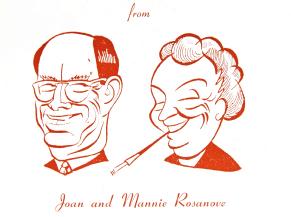
Selborne Chambers had been occupied by barristers since 1882. At 15, Joan had walked through its labyrinthine corridors with her father and determined that, one day, she too would have a room there.
Miss Lazarus complained that her client “...never got a bean from the Defendant”.15 This went unremarked upon but when, the following day, she told a witness to “...Just wait a jiff”, she was admonished by the judge. Miss Lazarus was reported to have “...blushed deeply and begged His Honour’s pardon”. 16
1920 brought the Ozanne libel case, and marriage to Mannie Rosanove on 2 September 1920. The newlyweds moved to Tocumwal on the New South Wales border, where Mannie had bought a general practice. Joan settled into life as the wife of a country doctor, but continued her legal work with occasional appearances at Shepparton, 80 miles (130km) away, whenever the Tocumwal solicitors (who held NSW practising certificates) had Victorian cases. At Tocumwal, Joan became a mother. Sadly, her first daughter was stillborn. Her second daughter, Margaret, known as ‘Peg’, was born in 1922.
By 1923, the Rosanoves had resettled in Melbourne. Mannie sold the Tocumwal clinic and bought a general practice attached to a rambling home in Westgarth. Mannie encouraged Joan to return to the law. She did so, signing the Victorian Bar Roll on 10 September 1923.
Somewhat presciently, The Argus reported:
Ordinarily Mrs Rosanove would take an office in Selborne Chambers but the historic home of Victorian counsel cannot now accommodate all the barristers in practice. Many of them occupy chambers in adjacent buildings.17
Selborne Chambers had been occupied by barristers since 1882. At 15, Joan had walked through its labyrinthine corridors with her father and determined that, one day, she too would have a room there. For now, however, she took a small backroom in Saxon House, Chancery

I am appearing with myself. I am the leader of the female bar.
Lane, and waited for briefs, which did not come. The predominantly male pool of instructing solicitors did not take to the novelty of briefing Victoria’s only woman barrister.
Joan Rosanove’s biographer described this period as, “…three almost briefless years”.18 But this ignores the quality of the briefs that did come and what Joan made of them. In 1924, for example, she ran appeals in the Full Court of the Supreme Court and in the High Court. Both were wages disputes. In the High Court, acting for
a fruit-picker and instructed by Mark, Joan was not only the sole female at the Bar table, but also the only barrister not leading or being led. Table Talk reported the scene in its profile on Joan Rosanove some years later:19
Modestly, but imperturbably she takes her place at the table. A King’s Counsel, manifestly conscious of the dignity and authority in a pair of trousers, leans over towards the girl – she is little more – and jovially inquires: “With whom is my learned friend appearing?” Without
a blush, without a quiver, the learned friend answers back with machine-gun readiness: “I am appearing with myself. I am the leader of the female bar.”
By 1925, it seemed that a coveted room at Selborne Chambers would become available to Joan. Phillip Jacobs Esq. was heading to London for one year and offered her his room. When word of the arrangement got around, a meeting of the directors of Selborne Chambers Limited was convened. Jacobs was informed that his lease would be cancelled if he allowed Joan Rosanove to sub-lease his room. This was one “kick in the teeth” that could not go unnoticed. Bitter and humiliated, Joan left the Bar; but not the law.
She resumed practising as an amalgam from joint consulting rooms at her and Mannie’s Westgarth home. Over the next 22 years, the woman who counselled, “One must be at home in a court. It comes as easily to me to plead a case as to take a meal”,20 forged a hugely successful practice as a solicitor-advocate, specialising in criminal and divorce law, with some forays into administrative law; in particular, the complexities of Victoria’s margarine and egg marketing regulations.21 Within a few years, she had taken an office on the fourth floor of Chancery House (Mark’s office was on the ground floor), employed a venerable office manager, Miss Caffrey and, eventually, a staff of 10 women. During this period, Joan appeared in two murder trials. Both clients were women. The first, in 1927, concerned the backyard abortionist, Mrs Le Neve, who pleaded that the victim had come to her with injuries already inflicted, probably by herself. The second, in 1929, concerned a sordid love triangle. A woman pregnant to her stepson was accused of murdering her husband, his father. In both cases, the defendants were found not guilty of murder, but guilty of the lesser charge of manslaughter. Like the Woody Allen character, Leonard Zelig, the name “Joan Rosanove” has a habit of turning
up in the compendium of notable Australian cases. Who, but Joan Rosanove, was at Princess Pier on 12 November 1934, to meet the SS Strathaird with a writ of habeas corpus for the release of Egon Kisch – the controversial Czech journalist and communist?
Kisch had been invited by the Victorian branch of the International Committee against War and Fascism to speak at its congress at the Port Melbourne Town Hall. When he was refused permission to disembark at Fremantle and again at Adelaide, despite holding a British visa, the ICAWF Welcoming Committee was re-constituted as the “Kisch Defence Committee”. Joan was briefed and devised a strategy to have Mr Kisch produced to the Supreme Court in Melbourne, to argue the matter of his right to enter Australia. Meanwhile, in Parliament, R. G. Menzies (by now the AttorneyGeneral) pronounced, “Kisch shall not set foot on Australian soil”.
Joan’s application was thwarted when the Commonwealth’s lawyers had the order quashed just minutes before the Strathaird was due to depart. When the bad news was telephoned through to the ship, Kisch leapt to the wharf below, breaking his leg. He was bundled back on board (unlawfully, Joan maintained) as the ship set sail for Sydney.
In Sydney, his case was taken to the High Court by local counsel. On 16 November 1934, Evatt J determined that Kisch’s detention was not legal and he was permitted to disembark.22 Almost immediately, he was taken to the Central Police Station and given the infamous Dictation Test – in Gaelic. He failed the test and was sentenced to six months hard labour. Kisch’s appeal against that conviction resulted in the High Court determining that Gaelic was not a European language under s 3 of the Immigration Restriction Act 1901.23
Joan Rosanove’s involvement in the Kisch case was more than serendipitous. He was a fellow Jew,
There is no doubt that just being Joan Rosanove left little time for domestic concerns.
who had already been imprisoned by the National-Socialist government in Germany. She was deeply disturbed by what she had heard about the persecution of Jews in Europe. Just a year before, when travelling in Europe, Joan and Mannie had planned to visit Berlin but were warned by Jewish friends not to go there on any account. Other friends told of firsthand experiences of Brown-shirt thuggery. By 1934, refugees had begun to make their way out of Germany, some to Australia.
In another “Zelig” moment, in 1938, Joan Rosanove represented Mrs Clarice Briginshaw, the respondent and alleged adulteress in the jurisprudentially significant case of Briginshaw v Briginshaw 24
At a time when it was expected that a woman married to a professional man would devote herself to her home and family, Joan’s insistence on pursuing her career made her a law unto herself. But Mannie Rosanove was his own man too. His medical career ran parallel to Joan’s legal career. They were mutually supportive and admiring of each other.
There is no doubt that just being Joan Rosanove left little time for domestic concerns. The house and family were looked after by a staff of never less than two. Joan’s daughter, the Hon. Margaret Lusink AM (a retired Justice of the Family Court) recalls a succession of nannies, housemaids and a caretaker couple, Mr and Mrs Stewart, who lived in the attic. Joan herself wrote, “I look upon life primarily as a barrister, for that is my chosen career”.25
On 26 July 1932, the Rosanoves left on the Mariposa, bound for America and England. Dr Rosanove had left his medical practice with a locum and Joan’s law practice was left with Mark. They would
be gone for almost a year. Ostensibly, they were travelling abroad for Mannie to study for his dermatology qualifications; but underneath her fashionable ermine coat, Joan was concealing a pregnancy. Baby Judith Anne was born in London on 28 November 1932. When Joan returned to Melbourne in May 1933, it was with an infant on her arm and an imported English nanny in tow. She was back in court within weeks.
The Rosanoves prospered. Mannie sold the Westgarth practice and set up rooms in Collins Street, Melbourne, as befitted a specialist, and Joan’s legal practice flourished. A new house with an Edna Walling garden was built on the Montalto Estate in Toorak in 1936. Not long after that, Mannie bought land near Frankston for a holiday house and the fashionable architect, Roy Grounds was commissioned. The house was called “Medlore”– a wordplay on the couple’s professions. In 1949, her daughters now grown up, Joan sold her firm and returned to the Bar.26 Once again without a room, she conducted her practice in the Supreme Court Library in the tradition of the Dublin Bar. In time, a room became available in Selborne Chambers, but with strings attached. The room would be shared (not unusual, even now) and her cotenant, Edward Ellis, who was junior to Joan in age and experience, would be her Master. When Ellis moved to Western Australia the room became Joan’s and she had it redecorated in a feminine style – just as she had always customised her jabots with lace trims. It was around this time that Joan adopted the long, black cigarette holder that became her trade mark accessory.
Divorces dominated Joan’s practice at the Bar, but there were diversions. In 1951, she took her third murder case. It was a brief from the Public Solicitor to defend one James Miller
who was accused of murdering his infant daughter. The circumstances were tragic. The evidence revealed a history of abusiveness towards the unfortunate child and the death of another child in Miller’s care 18 months earlier.27 Miller was found guilty and sentenced to death. On appeal, with Rosanove still representing him, the conviction was quashed and the case remitted. At the new trial, Miller pleaded guilty to manslaughter and was sentenced to seven years.28
In 1954, in another highly publicised application, Joan again deployed the writ of habeas corpus to obtain the release of a Mrs Graham from the Royal Park Mental Home. Mrs Graham had been committed by her husband, Dr Francis Graham, a Collins Street psychiatrist.29 Joan Rosanove also attracted publicity out of court. In her first year at the Bar, she made headlines for being ordered to leave an audience with the newly appointed Governor of Victoria, Sir Dallas Brooks. The occasion was the annual levee to celebrate the King’s birthday. Historically, the royal birthday celebrations kicked off with the monarch being greeted by his courtiers in his bed chambers. Women were not allowed in. Its modern manifestation was a ceremony at Parliament House attended by the city’s lawyers, doctors, servicemen and highranking public servants. Joan responded to a ‘Back of the Lift’ notice at Selborne Chambers and took a cab to Parliament House. She robed alongside her brethren in the robing room and took her seat; only to be asked to leave. Although by profession she was a Gentlemanat-Law, she was still a woman and would not be permitted to join in. The press had a field day. The Argus ran a photograph of Joan leaving Parliament House, her wig and stuff gown in hand. With one eyebrow raised and half-smiling, she was quoted as saying, “As usual I bow to the men of decision” 30
In 1951, Joan breached the Bar Rules when a photograph of her robed and puffing on her customary cigarette graced the front page of People magazine under the headline, “Joan Rosanove, Melbourne’s Portia”. Inside, there were more photographs, including one of Joan and daughter Judith posing in the shallows at Frankston. Joan had spent most of her career in the spotlight but now, as a member of the Victorian Bar, she should have known better. In fact, after the interview at “Medlore” she did have second thoughts and withdrew her permission for publication, but the magazine had already gone to press. Joan was reprimanded by the Bar Council. Ironically, it was the People magazine cover-photograph that hung in the foyer of Joan Rosanove Chambers until it was recently replaced by the portrait of Joan painted by Flora Lion in London in 1952.
At the Bar, Joan continued lobbying for the reform of laws which discriminated against women. These were concerns which she had agitated since the 1920s.31 Chief among them were Australia’s divorce laws. In 1954, she published in the Australian Law Journal, a survey of the divorce laws in each of the Australian states. Her work exposed injustices and anomalies between the states’ laws which, in some cases, led petitioners to forum-shop. She argued forcefully for uniform divorce laws. Many reforms were made by the Matrimonial Causes Act 1959 (Cth) but it would be another 20 years before the “fault” requirement, which was the source of so much inequity, was finally abolished by the Commonwealth Family Law Act 1975. Sadly, Joan did not live to see this. She had died the previous year. In another twist, her daughter, Peg (the Hon. Margaret Lusink AM), was appointed to the newly established Family Court in early 1976, making her Victoria’s first female judge of a superior court.
Also in 1954, Joan Rosanove made her first application for silk. It is well known that her application was refused by the Chief Justice, Sir Edmund Herring. For the next year, she renewed her application on each occasion she received a courtesy notification (as legal etiquette then dictated) that a barrister more junior to her was applying for silk.32 Thus, there were repeated applications and refusals until finally in September 1955, having been notified that a group including Barber, Starke, Pape and Frederico were applying for silk, she cabled the Chief Justice yet another application and received no reply.33 The “kick in the teeth” did not go unnoticed. Many members of the Bar thought that she had been treated shabbily.
Herring CJ retired in 1964 and was replaced by Henry Winneke. On 16 November 1965, Joan Rosanove was appointed silk, 11 years after her first application. She was 69 years old and had been a member of the legal profession for 46 years. She was the first female silk in Victoria and one of only four women barristers practising here.
Another honour for Joan in 1964, was to move the admission of her grandson John Larkins (now Larkins QC). And when, two years later, she moved her daughter, Margaret Lusink’s admission (with John as her junior), the eminent trio represented five generations of lawyers.
On 2 June 1969, Joan Rosanove celebrated 50 years in the legal profession. By now, however, Joan and Mannie were spending winters interstate or abroad and her practice was winding down. She removed her name from the Bar Roll on 8 December 1971. It has been estimated that in her 50-year career, Joan Rosanove acted in more than 20,000 matrimonial cases.34 Her retirement was spent with Mannie in Frankston, at the new home they built behind “Medlore”. She died on 9 April 1974.
Two pieces of living history capture Joan Rosanove:
One is footage of a 1965 interview for the television network TVN9.35
Striding along William Street, Joan is dwarfed by the young female reporter, but she out-paces her. Back in chambers, she reflects on the competitive nature of the Bar and its challenges for women. When the reporter suggests that a young woman starting out would need to be “...far more successful than a man might need to be…”, Joan flashes a Francis Urquhart-like smile and quips, “Well, you said that, I didn’t”. The other is a 2009 interview, from the Bar’s Oral History project, with the former Chief Justice, the late John Phillips AC QC.36 Phillips QC’s reminiscence speaks for itself:
…I used to do a lot of junior work with Joan Rosanove.
Q. What was she like?
A. Well, my duties (to Joan) were not onerous; they consisted largely of lighting her cigarettes. She had a huge holder, about a foot long, and she’d go “light this”, and I would light the cigarette with her gold lighter, and (laughs) that was really all I did most of the time.
Q. Did you find that somewhat irksome?
A. No. No, because the cases were always full of interest and it was a lot of fun seeing Joan in operation because she was so feminine, she never tried to act like a man in court. And the judges didn’t know how to handle her, and she used to run rings around them. A lot of them, anyway.
A potent mix of grit and femininity; Joan Rosanove was a law unto herself. She had to be.
1 Dean A. A Multitude of Counsellors: A History of the Bar of Victoria, 1968. F.W. Cheshire p 199. Ozanne was found to be an unreliable witness and his claim failed. For a record of McArthur J’s judgment: see OZANNE LIBEL ACTION (1920, July 20) The Argus (Melbourne, Vic. 1848-1957) p 7; OZANNE v “ADVERTISER” (1920, July 20) Geelong Advertiser (Vic.
1859-1924) p 3. For the Monash and Hughes testimonies: see OZANNE v “GEELONG ADVERTISER” (1920, March 20) Geelong Advertiser p 2; CANDIDATE’S LIBEL ACTION (1920, April 14) The Argus p 11; OZANNE v “ADVERTISER” (1920, April 14) Geelong Advertiser p 3; OZANNE v “ADVERTISER” (1920, April 15) Geelong Advertiser p 3; POLITICAL LIBEL ACTION (1920, April 15) The Argus p 9.
2 IN THE WINTER GARDEN (1920, April 29) Freeman’s Journal (Sydney, NSW 1850-1932) p 21.
3 Victorian Bar Roll number 207, signed 10 September 1923.
4 Victorian Bar Roll number 428, re-signed 10 July 1949.
5 The Hon. Mrs Margaret ‘Peg’ Lusink AM, Joan Rosanove’s daughter, interviewed on 6 March 2015.
6 Carter, Isabel. Woman in a Wig Joan Rosanove QC, Lansdowne Press, 1970 p. 4.
7 Carter, p. 2-3.
8 Jack Lazarus: Victorian Bar Roll number 565, signed 16 September 1957.
9 Carter, p. 5.
10 Edward Rosanove’s given name was “Emmanuel”.
11 ADMITTED TO THE BAR (1919, June 27) Jewish Herald (Vic. 1879-1920) p 13.
12 NEGLECTED CHILDREN (1919, June 5) The Age (Melbourne, Vic. 1854-1954) p 7.
13 COUNTRY NEWS (1919, September 20) The Argus, p 26.
14 MALTING-HOUSE TRAGEDY (1919, October 16) The Argus, p 9.
15 BENEFIT BY EXPERIENCED DENTIST’S VISIT (1919, December 5) The Horsham Times (Vic. 1882-1954) p 4.
16 WAIT A JIFF (1919, December 8) The Register (Adelaide, SA. 1901-1929) p. 6. An example of early syndication, this episode was reported in newspapers in Melbourne, Horsham, Albury, Newcastle, Broken Hill, Adelaide and as far as Kalgoorlie, Western Australia.
17 NEWS SUMMARY (1923, September 12) The Argus, p 18. Sir Arthur Dean described the reality of barristers’ accommodation in the 1920s in A Multitude of Counsellors, op cit at p 189: The accommodation problem was acute. Young men were crowded into small rooms, usually two and sometimes three sharing Chambers. Some very poorly lit and poorly ventilated rooms were pressed into the service, displacing the vermin which had long occupied them undisturbed. It was not uncommon to find men making use of the rooms of
friends who had the good fortune to be in Court. Conferences were held in any room which happened not to be in use. Paper work and research were done in the Supreme Court Library.
18 Carter, p 34.
19 PROMINENT PERSONALITIES JOAN ROSANOVE (1929, November 28) Table Talk (Melbourne, Vic. 1885-1939) p. 13. This exchange was reported contemporaneously in the Melbourne Herald, and quoted in Carter at p 36.
20 Carter, p 15.
21 Halpin v Clowes (1930) 44 CLR 461; Carter & Ors v The Egg and Egg Pulp Marketing Board for the State of Victoria (1942) 66 CLR 557.
22 R v Carter: Ex Parte Kisch (1934) 52 CLR 221.
23 R v Wilson & Another: Ex Parte Kisch; see also De Vries S. Strength of Purpose, Australian Women of Achievement from Federation to the Mid-20th Century. 1998. Harper Collins. pp 247-248; Australian Dictionary of Biography Kisch Egon Erwin (1885-1948)
24 (1938) 60 CLR 336.
25 MY OUTLOOK ON LIFE Herald, Melbourne 1936. Quoted in Carter but citation not given.
26 Joan Rosanove: Victorian Bar Roll number 428, 10 July 1949.
27 BUXTON COOK ON MURDER CHARGE (1951, March 17) Healesville Guardian, p 1.
28 BABY’S DEATH AT BUXTON (1951, July 7) Healesville Guardian, p 3. Miller was subsequently charged with the earlier murder of Arthur John Jackson, the three-month old child of his de facto wife.
29 JUDGE FREES WIDOW OF DOCTOR FROM RECEPTION HOUSE (1954, April 3) The Sydney Morning Herald, p 4.
30 SHE HAD TO GO…HE PASSED OUT (1950, June 9) The Argus, p 5; GENTLEMAN AT LAW’ BANNED AS WOMAN (1950, June 8) The Daily News, p 3.
31 See for example, Woman’s World (1927, September 8) News, p 10.
32 Seniority being measured by reference to the Supreme Court Admissions Roll.
33 Carter, p 155.
34 Carter, p 163.
35 http://www.vicbar.com.au/wba/joan_ rosanove.htm.
36 http://www.foleys.com.au/Multimedia/ JohnPhillips/JohnHarberPhillips_ InterviewTranscript.pdf.


BY MARK CAMPBELL
The 150th anniversary of Abraham Lincoln’s death was 15 April 2015. 1 The occasion presents an opportunity to remember the man who most eloquently denounced slavery – a scourge that remains widespread even today.
Despite the passage of time, Lincoln remains an historical figure who continues to engage and fascinate contemporary audiences, confirmed recently by the commercial success of Steven Spielberg’s movie, Lincoln. The movie’s claim to historical accuracy in its depiction of Lincoln’s character and manner, together with its focus on the political maneuverings through the House of Representatives of the constitutional amendment ending slavery, were not obviously the stuff of the usual Hollywood blockbuster. The movie’s appeal, however, seems to have owed much to its mirroring of the enduring popular perception that Lincoln was a martyr to a cause: a president who made decisions imbued with moral purpose that cost him his life – so attractively different to the nihilism that may be seen as the mark of political leadership today.
Certainly there’s much in the historical record to support an attractive historical picture of Lincoln. The timing and manner of Lincoln’s death have provided fertile grounds for the cultivation of myth and iconography. Lincoln scholars have wrestled with the problem of uncovering his “true” character and motives and the Lincoln literature includes many examples in which he has been condemned for denying the minority right, namely the right of secession, or been denounced as the white politician who used anti-slavery for political reasons.2
An exploration of these complexities is beyond the modest scope of this article, which is confined to consideration of a couple of aspects of Lincoln’s story that may be of some interest to lawyers.
Born in 1809 into poverty and raised in the remote backwoods of Indiana, far from the centres of political, cultural and intellectual life, nothing about Lincoln’s family circumstances indicated future greatness.
Lincoln rose to power through self-education in the law. He formed a political/legal philosophy based on a moral understanding of the Declaration of Independence that ultimately informed his remarkable responses to the constitutional and political crises that beset his presidency.
In 1816, Abraham, then seven years old, together with his father Thomas, mother Nancy and older sister Sarah moved from the family farm in Kentucky to settle in the remote region of Pigeon Creek, deep within the Indiana forest. This area, described by the early pioneers as the “roughs”, where dense fog could darken the forest in the middle of the day, was Lincoln’s home for the next 12 years.3 The nearest neighbour, with children near Lincoln’s age, lived several miles away.
In 1818, Lincoln’s mother died and the following year his father married Sarah Johnson, with whom Abraham established a close relationship. In contrast, Lincoln’s relationship with his father, a carpenter, who, in Lincoln’s words, “was a wholly uneducated man”, was strained and remote.4 From an early age Lincoln labored at carpentry, fencing, tree felling and hunting – all skills required for frontier life. Formal education was given little or no priority and Lincoln first attended “school” at ten years of age. Schooling in frontier society typically comprised not more than two years during which time students attended for a term each year – usually one to three months from December to early March – before the boys returned to the fields.5 The extent and quality of Lincoln’s formal education was usual for the time and in 1859, in a brief autobiographical statement, he recalled:
There were some schools, so called; but no qualification was ever required of a teacher, beyond ‘readin, writin and cipherin’ to the Rule of Three. There was absolutely nothing to excite ambition for education.6
“Nothing”, that is, except, in Lincoln’s case, an inner compulsion that provoked in him an insatiable hunger for learning that may be
explained as a triumph of nature over nurture. His step-mother said that young Abe:
Didn’t like physical labor – was diligent for Knowledge – wished to Know and if pains and labor would get it he was sure to get it.7
Childhood contemporaries recalled that whilst other boys were idling away their time, Lincoln was at home studying hard. One was struck by Lincoln’s persistence – an observation about Lincoln’s work habits that would be repeated often in later years – noting that:
Abe woulde set (sic) up late reading & rise Early doing the Same. What Lincoln read he read and re-read. He was a Constant and I may say Stubborn reader.8
Lincoln’s early reading included Aesop’s Fables , Robinson Crusoe , The Arabian Nights as well as William Scott’s Lessons in Elocution , Webster’s American Spelling Book, Bunyan’s Pilgrim’s Progress, William Grimshaw’s History of the United States, Weems’s Life of George Washington, Benjamin Franklin’s The Autobiography of Benjamin Franklin and the King James Version of the Bible , which began his lifelong practise of memorising whole sections of the Bible. 9
In 1830, Lincoln, no longer legally obligated to his father, struck out on his own; but for all his hunger for learning and reading Lincoln had no clear idea of what is was that he wanted to do with his life. Of one thing, though, he was certain: he would not be a farmer. In the years that followed he tried nearly every kind of work that the frontier offered: riverboat man, store clerk, soldier, merchant, postmaster, blacksmith and surveyor.10
In 1831 Lincoln moved to New Salem, Illinois, a recently settled frontier-trading town, where he commenced work as a clerk in Offutt’s general store. He made a favourable impression on those
he dealt with, who saw in him the qualities of a natural leader.
In 1832, whilst serving briefly in the militia during the Black Hawk War, his peers elected him as captain.
In that year he also had his first taste of politics, having been encouraged to run for the state legislature by James Rutledge, founder of a local debating society. Lincoln had joined the society and was an active participant in the fortnightly debates on the political issues of the day. Lincoln’s bid for office, at the age of 23, was unsuccessful but the experience had given him an appetite for politics.
Lincoln’s involvement in the debating society provided the forum in which he attempted to express his ideas. Concluding that he struggled to find the right words, he obtained a copy of Kirkham’s English Grammar, walking six miles to borrow the book from a local farmer. He worked through the text diligently committing whole sections to memory.
Lincoln’s debating society friends also noted a growing skepticism of established truths that was reflected in his choice of reading, which included The Ruins by the French historian and philosopher Constantin Volney, advocating the overthrow of the medieval tyrannies of the state and church and works by the revolutionary propagandist Thomas Paine, including Age of Reason 11
In 1834 Lincoln decided to again run for the Illinois legislature. He was elected in August 1834. During the campaign, John Todd Stuart, lawyer and friend from the days of the Black Hawk War, in which both had served as volunteers, persuaded Lincoln to study law.
In 1835, upon his return from his first session in the State legislature, Lincoln commenced his studies in earnest. There were seven law schools in the United States –none in Illinois. Josiah Quincy, a Massachusetts lawyer, described the rudimentary state of legal studies:
Regular instruction there was none; examination as to progress in acquaintance with the law –none; occasional lectures – none; oversight as to general attention and conduct – none.12
Lawyers learned the profession by studying in the offices of an experienced lawyer and Lincoln commenced his period of clerkship in the Springfield offices of “Stuart and Dummer” where he had access to a well-stocked law library.
Lincoln approached his studies with typical determination. He purchased Blackstone’s Commentaries on the Laws of England and, in his own words, “went at it in good earnest.” He read Blackstone thoroughly, rephrasing the arguments two or three times in his own words, until he had mastered them.13 He also studied Chitty’s Pleadings, Greenleaf’s Evidence and Story’s Equity Jurisprudence. In an 1860 autobiography he summarised how he had mastered these works saying: “He studied with nobody.”14
A friend, Henry McHenry, recalled: He read so much – was so studious –took so little physical exercise – was so laborious in his studies that he became emaciated and his best friends were afraid that he would craze himself.15
In 1837 Lincoln was formally enrolled as a lawyer and moved to Springfield to become Stuart’s partner. His legal practice complemented his political career as between 1837 and 1842 Lincoln served in the State legislature before declining a fifth term.
In 1846 he was elected to the U.S. House of Representatives, completing his Congressional term in 1849. While Lincoln was in Washington William Herndon, with whom he’d entered partnership in 1844, kept the legal practice going.
In 1849 Lincoln returned to the law and later recalled,
“From 1849 to 1854 both inclusive, I practiced law more assiduously than ever before” and “was losing interest in politics.” 16
Lincoln travelled throughout the rural communities of the Illinois Eighth Judicial Circuit. Twice a year covering more than 500 miles by horse and buggy for hours or days alone on the prairies, using the time to read Shakespeare, Byron, the Bible and Euclid’s Elements.17
An interesting insight into Lincoln’s views on practising law, revealed in notes for a lecture he was to give in 1850 on the law and lawyers, show him to be ahead of his times, saying:
As a peacemaker the lawyer has a superior opportunity of being a good man. Persuade your neighbours to compromise whenever you can. Point out to them how the nominal winner is often the real loser – fees, expenses, and waste of time.18
He kept abreast of contemporary political issues and opinions by subscribing to the New York Tribune, the National Intelligencer, the Chicago Tribune, several antislavery papers, including Anti-Slavery Standard and the abolitionist weekly paper the National Era. He also subscribed to a number of Southern newspapers arguing the secessionist cause: the Richmond Enquirer and the stridently pro-slavery Charleston Mercury. Herndon recalled Lincoln saying, “Let us have both sides at the table, each is entitled to its day in court.”19
1849 to 1854 was also marked by periods of deep introspection and depression during which Lincoln attempted to clarify “his ethical identity…to speak with new clarity about the moral issues facing the nation.”20
An insight into his private puzzling out of the most public problem of the day can be seen in two notes on slavery he made in 1854:
Although volume upon volume is written to prove slavery a good thing, we never hear of the man who wishes
to take the good of it, by being a slave himself
A second note posed a philosophic question:
If A can prove, however conclusively, that he may, of right, enslave B – why not B. snatch the same argument, and prove equally, that he may enslave A?.... You say A. is white, and B. is black. It is color, then; the lighter, having the right to enslave the darker?
Applying the same argument with the characteristics of “intellectual superiority” and “interest” he concluded, you are to be a slave to the first man you meet, with a color, intellect, or interest superior to yours.21
The year 1854 proved to be a watershed in pre-civil war politics and a defining moment in Lincoln’s life. The issue of slavery and whether it would be extended into the newly settled territories of the West came to a head. Resolution of that issue would engage the nation in a debate on the compatibility of slavery with self-government and the Republic’s moral foundations.
In May that year Congress passed the Kansas-Nebraska Act. Lincoln’s public response to the Act marked the end of his relative withdrawal from politics. 22 Lincoln later recalled his first response to the Act in these terms:
We were thunderstruck and stunned; and we reeled and fell in utter confusion.23
In order to appreciate the Act’s immense significance some historical context is required. In 1789 the Republic had followed Thomas Jefferson’s lead in excluding slavery from the territories of the Old Northwest.24 In 1820 the terms of that exclusion had been applied to the northern portion of the Louisiana Purchase and became known as the Missouri Compromise. 25 Moderate anti-slavery forces confidently supposed that the ultimate, and indeed intended, effect of the
Missouri Compromise would be the gradual death of slavery as new territories were settled free from the scourge of the “peculiar institution.”
The Kansas-Nebraska Act reversed this “settled policy.”
The Act, to establish a government for the Nebraska Territory, was sponsored by Senator Stephen Douglas and provided that: all questions pertaining to slavery in the territories [namely Kansas and Nebraska], were to be left to the decision of the people residing therein. (emphasis added)
The Missouri Compromise had prohibited slavery in this area but southerners, fearing the growing population and wealth of the North, had killed efforts to organise Nebraska as a free territory and the Act contained an explicit provision repealing the Missouri Compromise.
The Act’s effect was to transfer power to decide whether or not slavery would be permitted from Congress to the people in the territories – popular sovereignty. What could be the objection to letting the people decide?
In Lincoln’s view, Douglas’s principle of “popular sovereignty” assumed a moral neutrality toward slavery, leaving it to local communities to decide the issue for themselves – not with reference to the principles of civil liberty but material self-interest.
To Douglas’s claim that the repeal of the Missouri Compromise had “established the sacred right of selfgovernment,” Lincoln’s retort was grounded on what he had concluded was the eternal moral truth “that all men are created equal”: if the negro is a man, is it not to that extent, a total destruction of self-government, to say that he too shall not govern himself? When the white man governs himself that is self-government; but when he governs himself, and also governs another man, that is more than self-government –that is despotism. If the negro is a man,
Lincoln’s resolution of the issue was unambiguous – slavery was irreconcilable with self-government.
why then my ancient faith teaches me that ‘all men are created equal’; and that there can be no moral right in connection with one man’s making a slave of another. 26
Describing Jefferson’s Declaration of Independence as the “sheet anchor of American Republicanism,” Lincoln insisted that the Act put slavery: ..on the high road to extension and perpetuity and assumed that there can be a moral right in the enslaving of one man by another.
In October 1854 he delivered his famous Peoria speech,27 notable for its intellectual quality and moral force. It contained the essential elements of his public addresses over the next six years.
In short, Lincoln’s response to Douglas meant that the American people would have to affirm or deny the truth that all men are created equal, but they could not affirm that truth and at the same time agree with Douglas that majority will was the highest good of the Constitution.
Douglas’s statement that he didn’t care whether slavery was voted up or down in the territories but only whether the sense of the majority was free to work its will, in Lincoln’s view, uncoupled positive law from the moral argument of the Declaration so as to invite tyranny.
In the course of his several debates with Senator Douglas in 1858, Lincoln elaborated on the theme set out in his initial public response to the Act, a theme encapsulated in the statement he made in the first debate:
There is no reason in the world why the negro is not entitled to all the natural rights enumerated in the declaration of independence, the right to life, liberty, and the pursuit of happiness. I hold that he is as much entitled to these as the white man. 28
Lincoln set about educating himself in the law and equipping himself with the intellectual tools that took him to the presidency with single-minded determination and remarkable self-discipline.
The unique alchemy of Lincoln’s ambition, self-belief, intellectual interests, moral sense and astute political reading of the electorate came to fruition as he, and the nation, struggled to define the principles upon which the Republic would continue to be governed as a united entity and whether slavery was at all compatible with those principles.
Lincoln’s resolution of the issue was unambiguous – slavery was irreconcilable with self-government. His philosophy was moored on the proposition that all men are created equal: the proposition that unites the Declaration of Independence and the Gettysburg Address. 29 In Richard Carwardine’s opinion, this is the key to understanding the “inner logic to which Lincoln was committed – constitutionalism, the rule of law and anti-slavery”. 30
1 On 14 April 1865 John Wilkes Booth shot Lincoln at Ford’s Theatre during the performance of the play Our American Cousin. He was pronounced dead at 7.22am on 15 April having been in a coma for the previous nine hours, the result of the gunshot wound to his head.
2 The sometimes ambiguous response to Lincoln’s presidency in contemporary American society is referred to by Jan Morris in Lincoln: A Foreigner’s Quest (Viking1999) pp.197-200.
3 Ronald C. White, A. Lincoln: A Biography (Random House, 2009) p. 25.
4 ibid p. 30.
5 ibid p. 31.
6 ibid p. 31.
7 ibid p. 30.
8 ibid p. 31.
9 ibid pp. 32-36; see also Richard
Carwardine, Lincoln: A life of purpose and power (Vintage Books edition, 2007), pp. 6-7.
10 David H. Donald, Lincoln (Pimlico ed. 1996) p. 38.
11 White p. 55; see also Donald, p. 49.
12 White p. 66.
13 Donald p. 54.
14 ibid p. 55.
15 ibid p. 55.
16 Carwardine p. 12; see also White, p. 167
17 Lincoln’s interest in science and technology resulted in the grant of a patent in 1849 for his invention of a system for lifting boats over sandbars or shoals.
18 White p. 177.
19 White p. 169.
20 Carwardine p. 12; White, p. 195.
21 White p. 195.
22 Carwardine p. 26.
23 White, p.187.
24 The Congress of the Confederation enacted the Northwest Ordinance in 1787 to provide for the administration of the territories and set rules for admission as a State. In 1789, the U.S. Congress affirmed the Ordinance under the Constitution. The territories included all the land west of Pennsylvania and northwest of the Ohio River covering the modern States of Ohio, Indiana, Illinois, Michigan, and Wisconsin, as well as the northeastern part of Minnesota.
25 The Missouri Compromise was a federal statute that regulated slavery in the western territories. The compromise was agreed to by the pro-slavery and antislavery factions in the Congress and passed as a law in 1820. It prohibited slavery in the former Louisiana Territory north of the parallel 36°30° north, except within the boundaries of the proposed state of Missouri.
26 Carwardine p.29.
27 Peoria, Illinois.
28 First Lincoln-Douglas Debate at Ottawa, Illinois, 21 August 1858.
29 Harry V. Jaffa, Rise of the House Divided (The University of Chicago Press 50th anniversary ed. 2009) p. iii-iv.
30 Carwardine p. xiv.
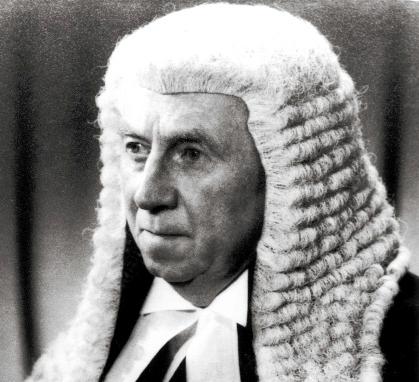
BY J. D. MERRALLS
Before technology destroyed calligraphy, handwriting was said to reveal character. I should prefer personality. A comparison of the hands of Sir Hayden Starke and his successor on the High Court Sir Wilfred Fullagar revealed both. One had only to see the bold upright script of Starke to know the man. Likewise, the small, neat, scholarly hand of Fullagar. I have his copy of the fifth edition of Salmond’s Law of Torts, which
was current when he lectured in the subject of Wrongs at Melbourne University. It contains numerous elegant annotations and case notes. Presence too defined Fullagar in a different way from Starke, whom he succeeded in 1950.
Wilfred Kelsham Fullagar was born in Malvern on 16 November 1892. His parents were both Australian born. His father Thomas Fullagar was in the furniture trade. The Fullagar family originated in Kent. The name is said to be derived from the term “full acre”. Sons of the family
have been given the second name of Kelsham since William Fullagar married Agnes Kelsham, the daughter of the lord of the manor of Headcorn in 1565.
Wilfred Fullagar attended Haileybury College, which was then a small privately owned school conducted in what had formerly been the Brighton Coffee Palace at Brighton Beach and before that the home of J. B. Were. Its headmaster and proprietor was an English classics scholar C. H. Rendall whose younger brother was later to become headmaster of Winchester. The school was small but not lacking able students. Amongst them were the Newton brothers, Alan and Wilberforce, later prominent in medicine, both knighted, as surgeon and physician. Sir Alan Newton’s son Richard was to be a Judge of the Supreme Court. He had another link with Fullagar, having read with A. D. G. Adam who had been a pupil of Fullagar. Rendall is said to have disliked vocational education, believing in thorough education in mind and character.1 This emphasis suited Fullagar’s turn of mind and he excelled as a student of Greek and Latin.
In 1909 he was dux and head prefect of the school. Thirty years later he was the first chairman of its council when it passed under the aegis of the Presbyterian Church. He proceeded to the University where he was resident on a scholarship at Ormond College. He enrolled for Arts and Law and had the benefit of studying under the celebrated professors T. G. Tucker and W. Harrison Moore. From Tucker he acquired a lifelong love of the classics, from Moore an approach to Australian constitutional law which was later to be reflected in his judgments. He graduated with first class honours in both degrees, winning the Wyselaskie Scholarship in Classical and Comparative Philology and Logic and, in 1916, the Supreme Court Prize, awards which eluded Sir Owen Dixon as a student.
After graduation he began articles with a solicitor J. W. McComas, an original Old Haileyburian, but in October 1916 he enlisted in the Australian Imperial Force and in November the following year he embarked for France as a gunner in the 27th Battery of the 7th Field Artillery Brigade. Promoted to sergeant, he survived the war. During 1919 he was granted “non-military leave to study law” in England. He married Marion Lovejoy, whom he met there, in October 1919. He returned to Australia and was discharged in February 1920.
Displaying the caution which marked him throughout his life he did not seek to enter the legal profession then but joined the Commonwealth Public Service as a legal officer in the Repatriation Commission. In April 1922, with the financial help of J. G. Latham and Owen Dixon he came to the Bar, reading with C. J. Lowe who was then an established junior. From 1923 to 1928 he lectured in Wrongs and Procedure at the University. His practice, however, lay mainly in equity and later in constitutional law. He achieved a steady rise to prominence at the junior bar. R. G. Menzies was the dominant junior at the Victorian bar and Fullagar sometimes appeared with him in important cases, one of which was the notorious Roads Act case in 1926, when the High Court in a single paragraph judgment gave an expansive exposition of the Commonwealth’s power to impose conditions on grants to the States under sec. 96 of the Constitution. When Menzies took silk in 1929 Fullagar became one of his regular juniors. His most notable civil case in the ‘20s was an appeal between the Melbourne Harbour Trust and the Colonial Sugar Refining Co, argued over 12 days in the High Court, as junior to Latham. Their client authority succeeded in the High Court but the decision was reversed by the Judicial Committee of the Privy Council where Latham
appeared with a London junior. Menzies’ accession to silk opened other opportunities for Fullagar. In each of 1925 and 1926 he appeared in three cases in the High Court reported in the Commonwealth Law Reports; in 1927, none; and in 1928, one. But in 1929 the number rose to nine. And in the 1930s there were few important cases emanating from the Victorian Registry in which he was not retained. Many appeals to the High Court at that time concerned comparatively trivial matters, which nowadays would not satisfy the special leave process. Fullagar appeared, often alone, in those cases too. By 1933 he not infrequently appeared leading other juniors such as Norman O’Bryan and P. D. Phillips. And on 25 September 1933, at the height of the Depression, he took silk. Appointment as silk often led to a broadening of practice. That did not happen with Fullagar. His civil practice already covered the whole field except for jury advocacy. In his history of the bar Sir Arthur Dean, who knew Fullagar as well as most, said that no one would think of briefing him in the criminal courts or before juries because he “was of too gentle a nature to have succeeded there”. But he did appear for the appellant in the High Court in the notable case of Tuckiar. Sir Arthur Dean went on to say that “as a sound and learned lawyer, as a brilliant expositor of the law, he was unrivalled. He was a most powerful and persuasive counsel in argument and for many years he was prominent in the appellate courts and had a great influence upon the development of constitutional doctrines.” Constitutional law in the ‘30s was dominated by a series of cases concerning the application of sec. 92 to marketing schemes for primary products and transport regulation.
Within days of his appointment as silk Fullagar appeared with Ham KC for the successful State official in R v Vizzard, the first of six cases
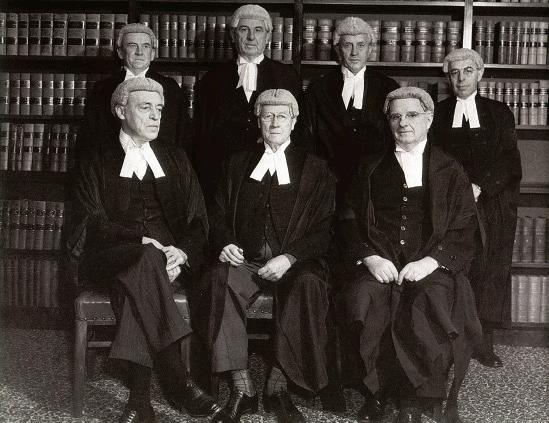
which came to be known as the Transport Cases. Within a month of his appointment to the High Court in February 1950, the High Court heard argument in McCarter v Brodie in which the correctness of Vizzard’s Case and those which had followed it was challenged. Fullagar’s dissenting judgment contains a dazzling refutation of his argument in Vizzard, describing the case as the fons et origo malorum. He maintained that criticism in 1953 in the first Hughes & Vale Case with a devastating set of reasons the substance of which was accepted by the Judicial Committee in reversing the High Court’s judgment.
Leading cases in which Fullagar appeared in the 1930s included Clements v Ellis (forged Torrens system document), Martin v Osborne (similar facts evidence), Birmingham v Renfrew (mutual
wills), The Kakariki (constitutional inconsistency), Matthews v Chicory Marketing Board (excise) and The Caradale (admiralty). His only brief in the Privy Council was as junior to Jowitt in James v Cowan (1932).
The 1940s brought a spate of constitutional and national security regulation cases in which Fullagar was heavily involved. The chief amongst them was the First Uniform Tax Case in which he shared the argument for the Commonwealth with Wilbur Ham. Many of the wartime cases received short shrift from the High Court and were not reported in the Commonwealth Law Reports. Yet in 1944 Fullagar argued 13 reported cases. Transport being hard to arrange between capitals, most were heard in Melbourne. The dates of argument show that for some sittings there Fullagar had almost the
entire list. The cases included Carter v Egg Marketing Board, Adelaide Company of Jehovah’s Witnesses v The Commonwealth (in which he represented the plaintiff body), a series of cases brought by the Victorian Chamber of Manufactures challenging regulations made under the defence power, Pidoto v Victoria, Minister for the Army v Dalziel and Reid v Sinderberry. In these cases Fullagar appeared in about equal number for the Commonwealth and for States or private litigants.
These busy years as senior counsel would not have occurred if Fullagar had accepted in 1935 an offer of appointment to the Supreme Court. Sir Owen Dixon’s diary contains these entries: 29 September. “Fullagar came to see me in the evg. being minded to take the judgeship in the S.C. I discouraged him on every ground
but afterwards I felt I had not said enough.” 30 September: “8.30 Rang Fullagar & asked whether he had made up his mind. He sd he thought he wd take it: I could only say it was a perfect tragedy & I was deeply sorry . . . At 10 am Fullagar rang to say he had refused ‘the worst of being a weak man’. At 11.30 he had ten with me at M Club when I congratulated him & gave a very bad picture of judicial life based on my own unhappiness & observation of others.”
During the war he returned to University lecturing for three years in Constitutional Law, taking the classes in his chambers since there were few students. The war years also saw him in another, unaccustomed, activity on the boards of public companies. He was a director of the Equity Trustees from 1939 until 1945, chairman in 1944-45, and of the Argus & Australasian from 1942 until 1945. He was a member of what was known as the committee of counsel from 1928 until 1945 and chairman in 1935-36. From 1945 until 1951 he was a member of the council of the University of Melbourne.
The year 1945 is significant for it was then that he abandoned his qualms and accepted a place on the Supreme Court. The judges were required to sit in all jurisdictions and he obtained valuable experience in fields in which he had not practised. The reported judgments of a State Supreme Court usually have quite a short shelf life. Judgments given by Fullagar in his five years with the Supreme Court, like those of Dixon as an Acting Judge of the court in 1926, are still cited for their clarity and authority. A case which received notoriety at the time, for which Fullagar delivered the main judgment in the Full Court, was Jenkins v Morrison in which the parentage of two children was disputed. Fullagar’s careful assessment of the evidence formed the basis of the majority judgments in the High Court, dismissing an appeal.
On 8 February 1950 he was appointed a Justice of the High Court,
Few High Court Justices have written with such grace and simplicity. The tone of his judgments was conversational, never didactic. His concern for others was complete.
the first of five appointments made by Menzies in the 1950s to constitute what has come to be known as the Dixon court. Fullagar hit the ground running – no “weak man” – with a series of incisive judgments attacking the accepted application of sec. 92.
In his second month he sat as one of three in Gorringe v Transport Commission in which, drawing on knowledge derived from his time as lecturer in Wrongs, he composed a scholarly dissertation upon misfeasance and non-feasance of highway authorities in maintaining highways. The judgment of the High Court was overruled 50 years later by a bare majority in Brodie v Singleton Shire Council (2001). But it is to be noted that in his judgment in Gorringe Fullagar said that the questions raised in that case had to be answered “on the basis of the law as it has stood since 1890” and that it was “very curious” that this was so. “It is to be remembered that the law of negligence was undergoing considerable development in the last quarter of the [19th] century.” He mentioned Heaven v Pender, which was decided in 1883. In a paper delivered at the Commonwealth Convention in 1951 – “Liability for Representations at Common Law”2 – Fullagar subjected the law on that subject to close scrutiny. This was 13 years before the decision in Hedley Byrne & Co v Heller & Partners and it may be thought to provide a more satisfactory solution to many problems in the common law of negligence than that case. At the end of the paper Fullagar revealed a little of himself: “I do not belong to the iconoclastic school of lawyers. On the contrary, like many others, I feel disturbed at a tendency noticeable sometimes in the case law to reduce the whole law of torts to the very simple proposition to which I refer
here – that the customer is always right. However, for once I have attempted to range myself on the side of the heretics.”
In his second year on the Court Fullagar sat in the Communist Party Case. His judgment is often quoted for its treatment of constitutional facts and the defence power in a period of ostensible peace and the inability of Parliament to recite itself into constitutional power. After the sec. 92 transport cases were settled there was not much constitutional litigation in the 1950s. Fullagar did, however, deliver notable judgments in The Commonwealth v Bogle (1953) and O’Sullivan v Noarlunga Meat (1954). In the Boilermakers’ Case (1956) he simply adhered to the joint judgment written by Dixon. It was not until the Second Uniform Tax Case in 1957 that CommonwealthState financial relations again came for consideration. The decision in that case, in which the validity of the States Grants (Tax Reimbursement) Act 1946 was upheld, was at the time considered a partial success for the States since the validity of a provision which gave the Commonwealth priority in the collection of income tax was held to be invalid; but the case has since been regarded as having been doomed to failure in a practical sense by the decision in the First Uniform Tax Case in which Fullagar had appeared for the Commonwealth. Dixon and Kitto delivered powerful judgments for the majority, confining the effect of the First Uniform Tax Case as far as it was possible within the limits imposed by the doctrine of stare decisis. Fullagar dissented from them on the ground that “if ever there was a case for the application of the rule of stare decisis, this is that case”.
Another difference of opinion between Dixon and Fullagar in an important constitutional case occurred in Dennis Hotels v Victoria (1960). The decision was odd in that the Court divided 4:3 with reverse majorities upon the validity of ordinary and temporary victuallers’ licence fees. Fullagar adopted a consistent approach to both classes of fees but he differed radically from the reasons of those with whom he agreed in the result for each class. Far from applying stare decisis to Matthews v Chicory Marketing Board and Parton v Milk Board, he distinguished them and reverted to the 1904 decision in Peterswald v Bartley (reported in 1 C.L.R.).
Later in 1960 Fullagar differed partially from a joint majority judgment written by Dixon in the New South Wales constitutional case of Clayton v Heffron, a challenge to the validity of procedures adopted for the passing of a bill abolishing the Legislative Council of that State. Again he based his judgment substantially upon a previous decision of the High Court. Dixon was so concerned by the possibility of Fullagar’s partial dissent that he went out of his way to circulate his own draft first.
By and large Dixon and Fullagar came to common conclusions in civil cases before the Court, though usually in separate judgments. Dixon thought so highly of Fullagar’s reasons in Commissioner for Railways v Cardy (occupier’s liability for injury to juvenile trespasser) that he offered to withdraw his own. Fullagar is thought to have been substantially the author of the joint judgment of Dixon and himself in the celebrated case of McRae v Commonwealth Disposals Commission (1951) and he and Dixon delivered separate reasons for the majority (Kitto and Windeyer dissenting) in Hall v Busst (1960). His was the judgment of the Court in Williams v Hursey (1959). Dixon greatly regretted his inability to persuade Fullagar of the correctness of his views in Livingston
v Commissioner of Stamp Duties (1960) but Fullagar’s conclusion prevailed again when the High Court’s majority judgment was upheld by the Privy Council.
Fullagar suffered several heart attacks in the fifties from which he appeared to recover though he often showed signs of tiredness on the bench during afternoon argument. Even so his death on 9 July 1961 from a cerebral thrombosis was unexpected. Sad to say in his last delivered judgment, in Commissioner for Railways v Anderson, where, as in Cardy’s Case, he sided with the injured plaintiff, he was in dissent. His judgment in Renouf v Carter Bros, in the Court’s original jurisdiction, was delivered posthumously by adoption by Dixon with the parties’ consent but suffered the indignity of reversal by the unanimous judgment of five Justices.
Tributes in memory of Fullagar came from those who knew and admired him, as a person and as a lawyer, and from many like Viscount Simonds and Justice Frankfurter who knew only his written work. They referred to his wisdom, erudition and lightness of touch. Few High Court Justices have written with such grace and simplicity. The tone of his judgments was conversational, never didactic. His concern for others was complete. Unlike other Justices, he never had a young graduate as associate. He resisted Dixon’s encouragement to do so on the ground that his associate, who had been a solicitor’s clerk, might not have been able to find other employment. For similar reasons he retained a tipstaff whose lack of competence in practical matters often caused merriment. He accepted with equanimity that his chambers were the least efficient in the Court. Though reserved by nature he was good company and had a whimsical sense of humour. His chortle was easy to detect when the Justices gathered for conversation before court.
His wife Marion died in 1941. He remarried in 1942. His second wife survived him. He had five sons from his first marriage, one of whom, Richard, became a judge of the Supreme Court; another, Bill, after a career as a merchant mariner when he studied classics for interest, later took an academic appointment at the Australian National University. Fullagar’s stature is demonstrated by S.E.K. Hulme’s account of a conversation with Sir Douglas Menzies: “We chatted after a dinner... We spoke of the contribution made by Sir Wilfred Fullagar. D.I. said rather sadly: ‘Do you realise that I’ve been on the court as long as Fullagar?’ It was quite clear that he was making a comparison of his own contribution with that of Fullagar, and was judging his own a poor second. The verdict is just. To this day people go back to Fullagar’s judgments for illumination; to see how he dealt with a matter. . . The fact is that the great judge is very rare.” Hulme’s words were chosen carefully – “to see how he dealt with a matter” – recognising that law is an ever-rolling stream. But great judges set its course. Dixon said of him in a eulogy: “It was his good fortune to combine a most lovable nature which won a place in the hearts of all of us with a powerful intelligence, clear and strong, and yet at the same time calm and deliberate in its processes.” 3 When Dixon retired in 1964 he wrote to Richard Fullagar: “wishing your father were still living. . . how much I lost when he died”.
He is remembered by an annual lecture at Monash University, the first of which was delivered by Sir Douglas Menzies.
1 Physics and chemistry were not then prerequisites for the medical course at Melbourne University and Rendall refused to have them taught at the school.
2 Australian Law Journal, vol 25 (1951), p. 278.
3 103 CLR iv.
This year the Victorian Bar has uploaded all past editions of Victorian Bar News onto its website.

From the
I’m just an honest barrister who plys an honest trade,
I’ve been around a good few years – I s’pose I’ve made the grade. I’ve got a general practice, see, do mostly crash and bash,
And though I’m not a millionaire I’ve made a bit of cash.
You see I’ve just turned thirty six – a good few years from silk, And even more before I join the Chief and all his ilk.
It may be fair to say therefore that while I like a go, I wouldn’t mind at all if they preserved the Status Quo.
But now there’s all this talk you hear that nags you with frustration,
A board for Motor Accident, and National Compensation.
A board for this, a board for that, it numbs my heart with fear,
And strikes a mortal blow at jurisdictions I hold dear.
It’s hardly any wonder that last night as I retired,
All bothered and confused I was and not a little tired.
My mind beset with queries “What will the future bring along?
Will all barristers have fortunes or will they have the gong?
Will we all be derelicts or will we all drive Jags?
Will all Havana smokers now be forced to bot their fags?
And will we all the lenders be or will we have to borrow?
Are we the roosters of today, feather dusters of tomorrow?
Into the arms of Morpheus I sank with apprehension,
My brow did sweat, my body thrashed, my dream was filled with tension.
And so it was I fell asleep. I saw myself one morning,
Driving slow to O.D.C.; a grey bleak day was dawning.
I swung the Holden wagon down the rear of William Street, (That’s strange, for Mr. Brown must have forsook his usual beat).
The car park in the basement was quite oddly still and hot,
Hey! What’s that mini doing there, it’s Sek Hulme’s parkin~ spot!!
The bolts were shot on all the doors, now this is more than strange,
My fumbling fingers found my key, but all the locks were changed.
The whole place was deserted, dry leaves were on the floor,
A few old backsheets gusted in towards Foley’s darkened door.
A lazy spider spun a web from some poor blighter’s name,
T’was then I read the notice that con· founded me with shame.
The text will still pursue me wherever I may roam, “SORRY LADS THEY’VE WOKEN UP YOU MAY AS WELL GO HOME.”
Ross & Byrne D.O.
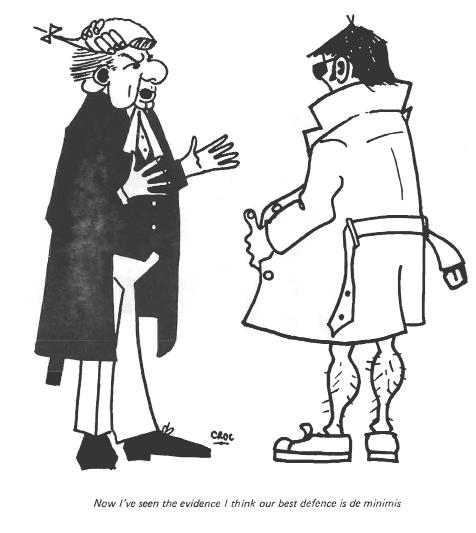
From the 11th edition of Victorian Bar News, 1975:
Average Fred is a plain sort of man whose life style is simple, he enjoys what he can. His assets are few and his income is small, It’s sometimes a wonder he gets by at all. But his wife goes out working, part time at least, So they just have anough, though it’s seldom a feast.
His job’s not demanding – what can you demand of a fellow like Fred, he’s an average hand. He works a big press. There’s a chance that one day he’ll loose a few fingers whilst earning his pay. Or find himself stood down if business is slow, For if profits are dropping it’s Fred that will go.
When average Fred wants a telly or fridge, He has to get finance to help him to bridge the gap that is left between what he’s got and the price of the goods, which he simply has not. So week in, week out, they must keep up the battle to meet all the payments on this or that chattel.
He misses some payments, the stuff’s repossessed It’s sold for a pittance – they sue for the rest. He gets legal aid, and the job is perhaps not quite as well done as for wealthier chaps or big public venture with money to splash, The law seems more equal if you’ve got lots of cash.
You can be pretty certain he’ll pay too much for all that he buys. He’s a pretty soft touch for dealers and salesmen. He’s not in the know about prices and discounts and how to save dough. And he doesn’t know someone well placed in the trade, to get him big cuts on the price to be paid.
He’s pushed round by poobahs and petty officials from all the departments with fancy initials. He can’t buck the system or find how it works, unlike the smart trendies who know all the lurks and can get blokes on Council to fix up the gutter. There’s no-one to listen when Fred sadly mutters.
His kids go to school, perhaps Brunny tech, It’s not much of a place to be learning to peck in the towns pecking order. In fact all that’s bred is a new generation of average Fred. It seems very likely that’ll stay quite a while in their place, fairly close to the base of the pile.
So weep for poor Fred, and spare him some time when he comes in your office, he’s been into mine
He’ll drive you demented, your fee will be small and you’ll wish that he never had come in at all. But there’s one consolation. Don’t worry your brow that he’ll sue you for error. He wouldn’t know how.
Henshall

From the 12th edition of Victorian Bar News, 1975:

The waistcoat settled deeper into his chair and warmed to the discussion that had been festering around him for half an hour.
Clerks or King makers, socialists or independent practitioners, nursery lists or geriatric lists, everyone had had his say and was unconvinced. There is nothing more satisfying he thought to himself than finely honed minds discussing a well defined issue. And then, when the discussion eased sufficiently he leant forward to make his contribution.
‘What are we all talking about?”
The pertinence of this enquiry was compelling.
The pale wig ventured -
“Whether or not there should be equality of opportunity for those just starting.”
“How to maintain the present services in the face of the large numbers of newcomers.”
“No, the services should be improved!”
‘We’ve got to show the clerks who is employing whom?”
“If we have computers it will demonstrate that we really are coming to grips with the twentieth century.”
With a lapse of concentration which was entirely uncharacteristic, the waistcoat wondered at what point of time the Greek City states achieved such a size that direct democracy was no longer feasible.
BYRNE & ROSS D.D
In this Back of the lift Section of the Victorian Bar News, the Bar acknowledges the appointments, retirements, deaths and other honours of past and present members of our Bar that occurred up to March 31, 2015.
Adjourned Sine Die 110 High Court
The Hon Justice Susan Crennan AC
BY JEFF GLEESON QC 110
The Hon Justice Kenneth Hayne AC
DR STEPHEN DONAGHUE QC & GRAEME HILL 111 Court of Appeal
The Hon Justice Marcia Neave
THE HON JUSTICE KARIN EMERTON 112
Supreme Court of Victoria
The Hon Justice Katharine Williams
AILEEN RYAN QC 113
Silence All Stand 114
High Court of Australia
The Hon Justice Geoffrey Nettle
WT HOUGHTON QC 114
The Hon Justice Michelle Gordon
SAM HORGAN QC & FRANK O’LOUGHLIN 114
The Court of Appeal of the Supreme Court of Victoria
The Hon Justice McLeish
KRISTEN WALKER QC 115
Supreme Court of Victoria
The Hon Justice Peter Riordan
DAVID MARTIN 116
Magistrates’ Court of Victoria
Her Honour Magistrate Carolene
Gwynn AMANDA BURNNARD 117
His Honour Magistrate O’Brien
PETER ROSENBERG 117
Vale 118
John Michael Clohesy VBN 118
Professor Harry Reicher ROSS NANKIVELL 118
The Hon Justice William Ormiston
AO MICHAEL GRONOW 118
Peter Richard Michael Jones ANDY GRANT 119
Peter Thomas Nugent
TIM NORTH QC & ELIZABETH RUDDLE 120
His Hon Geoffrey Michael Byrne
ANDREW DENTON 121
Gonged 121
Victorian Bar
Readers’ course 122
Senior counsel 2015 123

Bar Roll No 1537
For more than nine years Justice Susan Crennan demonstrated her qualities of wisdom, grace and charm as a Justice of the High Court. Her Honour retired on 3 February 2015. Before the High Court, she sat on the Federal Court for almost two years. This followed 25 years as a barrister, including more than 14 years as a Silk.
As a barrister, she had the rare gift of imperceptibly persuading each person at her conference table to do what she thought they should do – all the while leaving them with the triumphant belief that they had, themselves, not only made this decision but introduced the suggestion.
She carried this talent to the courtroom in her time as an advocate. Judges were artfully led to a conclusion that had been giftwrapped by her Honour, without anyone noticing she had placed the wrapping paper and scissors in the judicial hands.
Her Honour’s juniors benefitted handsomely from this modesty and grace. She would inform the partner of the instructing law firm that her wonderful junior had come up with a tremendous idea. The junior would listen with the same curious and rapt attention as the partner as the idea, of which they were both blissfully ignorant, was explained by her Honour.
We all love to learn of the work habits of the elite, so here it is in all of its infuriating and unattainable simplicity. Her Honour was sublimely efficient. She rarely arrived in chambers before 9am and only Bar Council work caused her to depart later than 5.30pm. She read documents once and at blistering speed. She settled pleadings and advices by hand and could spot a split infinitive from the other side of the room. She knew where the weak part of her own argument lay within
15 minutes of opening the brief and how she would defeat her opponent five minutes before that. She would spend the first 15 minutes of any conference with her junior asking after their partner and children. Names and ages were sprinkled effortlessly into the conversation. The hard work would typically consume no more than the next 30 minutes of the conference and the junior would leave feeling smarter and more motivated than when they entered the room. A follow-up phone call from her Honour might arrive at about 8.30pm. It would last no more than five minutes, two of which were consumed by apologies for intruding. The late nights and weekends of private toil, evident from her mastery of facts and authorities, were never mentioned. The following morning her Honour would glide into the Court of Appeal (having spent the hour between 9.15 and 10.15 gossiping with Weinberg (then QC) and Santamaria (then QC)) and spin a web with argument and analysis at once sophisticated,
nuanced and articulate. Her genius as an advocate lay not in combativeness or showy displays of photographic jurisprudential memory, but in her ability to leave the audience with the unsettling impression that it would reveal a poor grasp of the facts or, worse still, intellectual naivety to disagree.
Unsurprisingly, her Honour’s approach on the bench was very similar. Her polite attentiveness and considered and generous observations while Counsel toiled away tended to leave the advocate feeling that at least one of their arguments had come back to them in better shape than when it left them. Her Honour wrote beautifully, managing in her judgments to balance elegant prose with detailed intellectual analysis and her irrepressible warmth and humanity.
Her Honour’s extraordinary career continues. The Bar welcomes her back as she plans to conduct arbitrations while continuing to enjoy life with her husband Michael Crennan QC.
JEFF GLEESON

Bar Roll No 969
On 5 June 2015, Justice Kenneth Hayne retired from the High Court, after almost 17 years of service. He was the longest serving of those Justices
appointed since the mandatory retirement age was introduced in 1977.
At his Honour’s farewell sitting in Sydney in April 2015, he observed
that he had engaged professionally, either as judge or advocate, with more than half of those who have ever sat as members of the High Court. This long and distinguished service defies synopsis. Nevertheless, two groups of cases where his Honour’s influence has been particularly pronounced deserve specific mention.
His Honour first encountered the vexed area of Commonwealth spending as junior counsel to Sir Daryl Dawson in the Australian Assistance Plan case (1975). As a judge, he revisited this topic in Pape (2009), Williams (No 1) (2012) and Williams (No 2) (2014), in judgments that have profoundly affected the power of the Commonwealth executive to engage in many activities without statutory authorisation.
The second group of cases concerns asylum seekers. In AlKateb (2004), his Honour held that there was no constitutional bar to legislation requiring noncitizens to be held in immigration detention even when it was not practicable to remove them to another country. However, more recent judgments, including the Offshore Processing case (2010) and the Malaysia Declaration case (2011), have identified significant implied constraints on the exercise of statutory powers with respect to asylum seekers.
His Honour has been a major contributor to the work of the High Court in many areas, including through his willingness to take on less glamorous tasks such as redrafting the High Court Rules (2004). For many years his Honour had an especially productive working relationship with Justice Gummow. A knowledge of their distinctive writing styles reveals that theirs was a partnership of equals. When Justice Gaudron was also on the Court, the seating arrangements in Court No 1 in Canberra made those three Justices a formidable “left wing” of the Court, with frequent interplay along the Bench as well as with counsel.
His Honour was always thoroughly prepared for hearings, and keen to test his ideas. He would often do this by putting counsels’ arguments back to them in a sequence of propositions. Sometimes his Honour would identify the “knife in the napkin”. But often he would not, leaving counsel to try to identify the proposition with which to disagree in order to avoid inadvertently conceding the appeal!
His Honour has demonstrated a
lighter side away from the Bench. A loyal generation of associates have enjoyed his sense of humour in chambers, and benefitted greatly from his continuing interest in their careers and lives.
Upon leaving the Court, his Honour will take up chambers with a view to undertaking arbitration work. He will also teach at Melbourne University. The Bar wishes his Honour the very best for the future.
STEPHEN DONAGHUE QC AND GRAEME HILL

Justice Marcia Neave retired as a judge of appeal in the Victorian Supreme Court on 21 February 2015 to take on a challenging new role as Chair of the Royal Commission into Family Violence.
Before her appointment to the Court of Appeal, Justice Neave enjoyed a distinguished career as a legal academic and law reformer. Generations of law students had the benefit of her inquiring legal mind, engaging pedagogical style, and clear and penetrating writing. Her Honour was awarded the Order of Australia in 1997. She is a Fellow of the Academy of the Social Sciences in Australia, and a Fellow of the Institute of Public Administration.
Justice Neave possesses a formidable intellect and a generous heart, along with a strong appreciation of the power
of ideas and the beauty of language. These qualities have made her Honour an exceptional force in law reform, and an outstanding academic and judge.
Justice Neave graduated from the University of Melbourne in 1966 with first class Honours and the Supreme Court Prize. She began her academic career in 1970 as a lecturer in law at the University of Melbourne. In 1982, her Honour took a two-year break to become Research Director at the NSW Law Reform Commission, the beginning of a long and fruitful engagement in the pursuit of law reform.
Justice Neave became the John Bray Professor of Law at Adelaide University in 1986, and held that Chair until 1990. For three years, she was Dean of the Faculty of Law at Adelaide University. In 1991 her Honour
returned to Melbourne to take up a Personal Chair at Monash University, where she spent almost a decade in the Faculty of Law, including two years as Dean. In 1995-96 her Honour interrupted her tenure at Monash to oversee the law program as a professor in the Research School of Social Sciences at the ANU.
Her Honour has had a longstanding interest in the way the law recognises and responds to the needs of women. She is a strong and committed feminist with a sophisticated understanding of sexual politics and the role of the law and lawyers in addressing discrimination and disadvantage more generally. She is, in addition, an extremely compassionate person who is well able to put herself into the shoes of others. Despite her unfailing politeness and warm and engaging manner, she has been fierce in her opposition to discrimination and injustice.
Not surprisingly, Justice Neave has made a substantial contribution to law reform both in Victoria and nationally.
In 1985, her Honour was appointed to head the Victorian government inquiry into prostitution. During the inquiry, her Honour made a number of ‘site visits’. At one establishment, she knocked on the door just as a man arrived. He asked whether she was going in. “Yes, but not for the same reason you are,” she replied. Her Honour knocked on doors all over Victoria and talked to sex workers and brothel owners and managers. She gained an understanding of both the practical and theoretical aspects of the subject matter of the inquiry. It is in large part due to the recommendations of the Neave Inquiry that the business of prostitution in Victoria is properly regulated and that regulation is principally directed to securing the health and safety of sex workers.
From 2001 until her appointment to the Court of Appeal in 2006, Justice Neave was the foundation Chair of the Victorian Law Reform Commission, overseeing the production of reports and recommendations on references
as diverse as defences to homicide, sexual offences, co-ownership of property, privacy, reproductive technology and the adoption of the Uniform Evidence Act. Her Honour stressed the importance of empirical evidence to support law reform proposals. The reforming AttorneyGeneral who appointed her could not have wished for more rigorous and far-sighted analysis of law reform proposals.
Her Honour’s work as a judge has been no less impressive. Justice Neave came to the court as an outsider. She told colleagues that it took her about four years to feel really comfortable with her work as a judge. That discomfort was not at all obvious to those on the bench or those at the Bar table. From the outset, her Honour displayed a quiet authority in the courtroom
and it was a pleasure for the wellprepared barrister to appear before her because she was at once polite and probing. In her time on the Court, Justice Neave participated and presided in many important appeals and crafted exemplary judgments.
As both a friend and colleague, Justice Neave has been a delight. She has wide interests and is a keen sharer of books, poems and ideas. Her Honour is a prolific reader and a sparkling conversationalist, albeit rather poor on sport. Although her interests extend well beyond the law, her Honour admits to a love of unpicking the language and logic of laws and legal argument. Her Honour’s bright and inquiring mind, and her kindness and good spirits, will be missed by her colleagues on the Court.
THE HON JUSTICE KARIN EMERTON
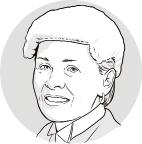
Bar Roll No 2250
Justice Katharine Williams retired from the Supreme Court of Victoria on 12 February 2015. The esteem and affection with which her Honour is held were amply demonstrated by the large audience who attended her farewell.
Justice Williams graduated from the University of Melbourne in 1971 with a Bachelor of Law with
Honours. After being admitted to practice in 1972, her Honour worked as a solicitor for 18 months before academia beckoned. Justice Williams lectured at both Monash and Melbourne Universities, mainly in property and trusts. In 1983, her Honour completed a Master of Laws at the University of Melbourne.
Her Honour came to the Bar in 1988, where she read with the
late Peter Hayes QC. Her Honour practised in the commercial area and appeared in a number of significant cases. She served on various Bar committees, including the Ethics Committee and was a director of Barristers’ Chambers Limited.
In April 1999, her Honour was appointed to the County Court. As testament to her willingness to take on a new challenge, her Honour sat in all areas, including crime and personal injuries. Her Honour’s abilities were soon noticed and her elevation to the Supreme Court on 25 October 2002 came as no surprise. For the past 13 years, Justice Williams has sat in all divisions of the Supreme Court and as an Acting Judge of Appeal.
Her Honour has been the principal judge of the Common Law Division since February 2012. For the last seven years, Her Honour served as President of the Forensic Leave Panel.
The attributes which best describe Justice Williams are her keen intelligence, common sense, unfailing courtesy and compassion as well as a lively sense of humour. To those who know her well, it may come as a surprise that her parents steered her towards law because they thought her argumentative.
Her Honour has been ably supported in her endeavours by her devoted husband, David. They have four children and numerous grandchildren who provide much pleasure and affection. Her Honour is an avid movie buff of the ‘film noir’ variety and enjoys reading. She and her husband are frequent and intrepid travellers.
When her Honour was first appointed, one of her brothers remarked (using golfing parlance from the Caddyshack film) that he could now say to her: “Your honour, your Honour”. It has indeed been our honour. The Bar wishes Justice Williams a long and happy retirement.
AILEEN RYAN
Bar Roll No 1733
Justice Callinan was the first barrister in private practice appointed directly to the High Court since Sir Keith Aickin some 22 years earlier. At his retirement in 2007, Callinan J said this:
“What is of importance is that I have been given a rare opportunity to be at the apex of legal and constitutional affairs of this country for a period. I can only hope that I have done my duty there conscientiously and competently.” 1
In similar vein, Lord Sumption, who took his seat in 2012 on the UK Supreme Court, was the first barrister appointed directly to the United Kingdom’s highest court from private practice since Lord Radcliffe in 1949.
Justice Geoffrey Nettle has taken a different but no less impressive course. His appointment this year to the High Court at the age of 64 was preceded by two earlier judicial appointments. His Honour was appointed to the Supreme Court of Victoria in 2002 and elevated to the Court of Appeal in 2004 and had already provided distinguished service to the community.
His Honour’s academic background is impeccable. His Honour’s university career commenced at ANU where he graduated B.Ec. He then went on to the University of Melbourne where he graduated LL.B with first class honours in 1975. That was followed by a BCL at Oxford, again with first class honours, in 1976. His Honour returned to Australia and commenced articles at the firm then known as Mallesons, attaining partnership with that firm after only five years.
His Honour was called to the
Victorian Bar in 1982 and read, first, with Mr Hartley Hansen, later a colleague on the Victorian Court of Appeal, and then Mr Kenneth Hayne, a colleague on the High Court until his recent reitrement.
His Honour took silk after only 10 years’ call in 1992.
During those all too short years at the Bar, his Honour developed a formidable reputation as a leading advocate, first as a junior then as silk, in constitutional, commercial, revenue and administrative law. No one who was opposed to him doubted his intellectual and legal eminence.
For many years, his Honour occupied chambers on the 14th floor of Owen Dixon West. One did not need a watch in order to tell the time in those days. His Honour arrived punctually at 7am and left promptly at 7pm. His presence on that floor was a delight to his fellow chambers’ colleagues. He believed in the mantra of the Bar that the door is always open and he practised it. His quiet (and self-deprecating) humour was greatly appreciated.
There was never any arrogance about his Honour’s dealings with solicitors, clients, colleagues or the court. Whilst his delivery in court could sometimes be characterised as forceful, his manner was always persuasive and moderate.
Indeed, it was very difficult not to be completely convinced by the correctness of his Honour’s submissions at bar even though one had developed completely diametrical submissions in opposition. Unfortunately for his opponents, too often the court came to the same conclusion.
His Honour’s intellectual abilities and learning are well known. To paraphrase the words of Justice Callinan, we know that his Honour will do his duty more than conscientiously and competently. His judgments on the High Court will follow the judgments that he has delivered in the Victorian Supreme Court and Court of Appeal. They will be models of legal erudition.
In his last case at the Bar before taking up his appointment on the Supreme Court, Sumption QC (as his Lordship then was) was crossexamining the plaintiff in Berezovsky v Abramovich2 about transfer pricing in the Russian oil industry. In answer, the plaintiff said this:
“I heard by TV that you have the greatest mind in England, I accept that; but believe me, this is not your level”.
It is, of course, too early to proclaim (on TV or elsewhere) that Justice Nettle has the greatest legal mind in Australia, but his appointment to the highest court in this country is certainly at his level.
WT HOUGHTON
1 [2007] HCA Trans 423. 2 [2012] EWHC 2463 at [348].
Bar Roll No 2785
Just as it was no surprise that Michelle Marjorie Gordon SC had been appointed a Judge of the Federal Court of Australia in April 2007, it was certainly no surprise when her Honour was appointed to the High Court of Australia in April 2015. The period between announcements was one of remarkable judicial industry, evidencing her Honour’s organisation, dedication and skill as a jurist.
It is no more than a quirk of history that Justice Gordon will replace her husband, Justice Hayne, upon his retirement from the High Court of Australia on 5 June 2015. Her
Honour’s skill and ability both as a practitioner and as a Judge of the Federal Court indicated that her elevation to the highest Court in the land is well deserved and was inevitable.
Justice Gordon was educated at Presbyterian Ladies College in Peppermint Grove in Perth before studying for a Bachelor of Jurisprudence and a Bachelor of Laws at the University of Western Australia. In 1987 her Honour was articled to the present Foreign Minister, Julie Bishop, at the firm of Robinson Cox (which later became Clayton Utz) in Perth. On her Honour’s appointment Ms Bishop was reported as commenting:
“She was an outstanding young lawyer and has had an exemplary legal career. Her appointment to the High Court is testament to her ability and dedication.”
As all who know her will attest, her Honour has never been shy or slow in taking on new challenges. These qualities, evident early in her legal career, led her Honour to move to Victoria in 1988 to take up practice with the firm Arthur Robinson & Hedderwicks (now Allens). At that firm her Honour excelled in a wide range of areas of commercial law, including banking, tax and insolvency. In the early 1990s her Honour was a young instructing solicitor on the complex Supreme Court trial known as the Occidental litigation. Her Honour’s client, the Bank of Melbourne, engaged, and her Honour instructed, Ken Hayne QC (now Justice Hayne of the High Court) and Geoffrey Nettle (later QC and now Justice Nettle of the High Court). Her Honour was appointed a senior associate with Arthur Robinson & Hedderwicks in 1992. In late 1992, however, her Honour was lured to the Victorian Bar, no doubt by the highpowered occupants of the 14th floor of Owen Dixon Chambers West. Her Honour read with Nettle, and upon him taking silk, with Nemeer Mukhtar (now Associate Justice Mukhtar of the Supreme Court). Of course, Nettle had read with Ken Hayne who read with
JD Phillips, who read with Richard Newton, who read with Alistair Adam, who read with Wilfred Fullagar, who read with Charles Lowe. A finer legal pedigree could not be imagined.
Her Honour excelled at the Bar, practising in all areas of commercial law, administrative law and taxation.
Her Honour’s ability to crystallise detailed instructions into the relevant issue for determination or advice was a skill that served her remarkably well in private practice and as a Judge of the Federal Court of Australia. Both as a practitioner and as a Judge the speed and accuracy of her Honour’s determination of the issues was evidence of her application and dedication to the task at hand. These attributes ensured her Honour a busy junior practice, often briefed to be led by such luminaries as the late Brian Shaw QC, Alan Archibald QC, Susan Crennan QC (as her Honour then was), Nettle QC (as his Honour then was), Alan Myers QC, David Jackson QC, Neil Young QC and Tony Pagone QC (as his Honour then was).
Her Honour had two readers, Rowena Orr (now QC) and Frank O’Loughlin.
In November 2003 her Honour took silk and continued her wide commercial practice. Her Honour contributed to many committees at the Victorian Bar, in particular, the continuing legal education and professional development programs. Her Honour regularly appeared for the Commissioner of Taxation, the Australian Securities and Investments Commission and the Australian Competition and Consumer Commission. A particular skill was dismantling unregistered and illegal financial investment schemes.
In 2007 her Honour joined the procession of silks from the 14th floor of Owen Dixon West to high judicial office. On the bench of the Federal Court of Australia her Honour soon gained renown as an efficient and hard-working Judge. Her Honour was instrumental in establishing the taxation list procedures that involved case management at the earliest
stages to set the path for resolution of disputes in an efficient and effective manner. Her Honour maintained her involvement in the Bar readers’ course and in other mentoring programs. Her Honour also continued to teach in the Masters program at the University of Melbourne and as a member of the Faculty of Law and Business at Deakin University.
Outside of the law her Honour is a keen surfer, having recently acquired a new surfboard. She is renowned for corralling the nippers at Waratah Beach Surf Life Saving Club at Sandy Point near the weekender she shares with her husband, Justice Hayne, and their son, James. True to her competitive nature, a picture of her Honour competing with the kids in a tug of war game at Waratah Beach adorns her chamber’s wall.
The Victorian Bar is rightly proud of Justice Gordon and her appointment to the High Court of Australia. The headline in The Australian said “Judge for many seasons to come…”. We wish her well for all of those seasons.
SAM HORGAN & FRANK O’LOUGHLIN
Bar Roll No 2821
On 3 March 2015 Stephen McLeish SC was sworn in as a judge of the Court of Appeal of the Supreme Court and on 12 March 2015 his Honour was welcomed to the Court by the profession.
Justice McLeish holds degrees in law and arts from the University of Melbourne. He also holds a Master of Laws from Harvard Law School, where his Honour found himself in a seminar class with one Barack Obama, now 44th President of the United States. History does not record whose performance in class was the better. Justice McLeish’s
academic achievements were many and included the award of the Supreme Court Prize, a period as Editor of the Melbourne University Law Review (not to be confused with the Melbourne University Law Revue) and a Frank Knox Memorial Scholarship for his study at Harvard.
Justice McLeish was admitted to practice in 1988 and spent some time as a solicitor with Arthur Robinson & Hedderwicks (as it then was). That time was interrupted by a period as associate to Sir Anthony Mason, then Chief Justice of Australia. Sir Anthony regarded the young lawyer as an outstanding associate, destined to go far in the law. He was correct.
Justice McLeish was called to the Bar in 1993 where he read with Susan Kenny, now Kenny J of the Federal Court and formerly of the Court of Appeal. His Honour had six readers: Liza Miller, Greg Robinson (now Magistrate Robinson), Kristen Walker, Alistair Pound, Chris Young and Ben Gibson. All speak in glowing terms of their time with his Honour and of his generosity, thoughtfulness and ongoing support and mentoring.
His Honour was one of the leading commercial and public law juniors, with a thriving practice. He appeared in numerous High Court cases, often as junior to the Solicitor-General for the Commonwealth or the SolicitorGeneral for Victoria. In one notable case as a junior, Thomas v Mowbray , his Honour addressed the full High Court on the ratio of the Communist Party Case , managing with skill and aplomb a barrage of questions from an interventionist bench.
Justice McLeish took silk in 2007 and in 2011 was appointed as Solicitor-General for Victoria, a role for which he was ideally suited in temperament and experience. As Solicitor-General he continued to appear regularly in the High Court, where his softly spoken manner belied the skill with which he presented complex arguments.
His Honour was also an excellent role model for those barristers
seeking to balance professional life with family life. Justice McLeish’s wife, Pip Nicholson, is a Professor of Law at the University of Melbourne and his Honour had on many occasions to act as a sole parent while Professor Nicholson was travelling. His Honour is, of course, devoted to his two children, Oliver and Millie. During his welcome speech he successfully embarrassed them by instructing the audience to “now turn and stare at my family”.
Justice McLeish’s career was perfectly summed up by David O’Callaghan QC at his Honour’s welcome:
Your Honour has excelled – and at the very highest level – at every stage of your education, professional training and practice in the law – and you have done so … with remarkable humanity, humility and grace.
KRISTEN WALKER
The Victorian Bar congratulates Justice of Appeal Stephen Kaye on his elevation to the Court of Appeal and Justice Rita Zammit on her elevation to Justice of the Supreme Court.
Bar Roll No 2806
The Banco Court was overflowing on 19 March 2015 when the profession gathered to welcome the much acclaimed appointment of Peter Riordan as a Judge of the Supreme Court.
His Honour hails from Shepparton where the Riordan name loomed large in the legal profession for many decades. It was no surprise to see so many Goulburn Valley practitioners join his Honour’s large family to celebrate such an auspicious occasion.
As a partner in a very busy and successful legal firm, like many country solicitors, his Honour practised in a wide variety of areas, appearing regularly in the Magistrates’ Court and often in the County Court or Supreme Court. In 1992, he left behind that very substantial practice to come to the Bar – a bold move at the time with six children all aged under 12 and a three month ‘no brief no income’ start guaranteed.
There could be no doubt, however, that his Honour’s determination, work ethic and overall ability would yield the desired result – and so it proved to be. His Honour sought, and obtained, one day’s abridgment of the relevant ‘no brief’ period to appear, in his first case, as counsel in the Full Court of the Supreme Court, followed shortly thereafter by an appearance, without a leader, in the High Court on the special leave application.
His Honour was still under five years call when he again appeared in the High Court in the landmark case of Pyrenees Shire Council v Day, a decision which marked a decisive turning point for the common law in Australia.
His Honour’s progression at the Bar was rapid – taking Silk in November 2003, only 11 years after signing the Bar Roll. He developed a broad practice in all aspects of commercial law but also in insurance, professional negligence and common law generally.
His Honour’s service to the Bar was outstanding. He served on innumerable committees and was a member of the Bar Council for more than 12 consecutive years, culminating as Chairman in 2007. As Chairman, he led the Bar Council with great distinction, maintaining the Bar’s stance on the independence of the judiciary.
Outside the law, his Honour undertakes a number of sporting pursuits. He is a keen tennis player and enthusiastic golfer. In both pursuits, his competitive nature comes to the fore; he is well known
for the more than occasional quip directed to his opposition, particularly when they might be about to serve or putt! He has been, in addition, a regular cyclist pedalling to and from chambers even in inclement weather. Rather remarkably, he has survived more or less unscathed from at least two falls occasioned by opening car doors. It remains to be seen whether the likely advent of a judicial motor vehicle will eliminate, or reduce, the sightings of the brightly coloured lycra so often seen in the early hours of the morning or the late evening.
DAVID MARTIN
Bar Roll No 3443
Carolene Gwynn was appointed to the Magistrates’ Court of Victoria on 10 March 2015. Her Honour was educated at Monash University and completed her articles of clerkship with Grace Warren Hale. Her Honour’s leadership skills were apparent from an early stage and she was asked to supervise new graduates including the now-Honourable Justice Michael Croucher of the Supreme Court. Her Honour then worked as a solicitor advocate at several private criminal law firms. After several years as a specialist advocate and then an Associate Public Defender at Victoria Legal Aid, she was called to the Bar in 2001. She read with James Montgomery, now His Honour Judge Montgomery of the County Court.
During her fourteen years at the Bar, her Honour was briefed to prosecute and defend criminal, occupational health and safety, RSPCA and Department of Justice matters. She was held in high esteem by both sides and the bench for her
hard work, dedication and absolute fairness.
On her feet, Ms Gwynn was vibrant yet subtle, courageous yet considered – and devastatingly effective. Her expression was so elegant that instructing solicitors and other barristers alike were known to borrow her phrasing in an effort to improve their own advocacy.
Colleagues at the Bar recall with admiration her ability to spot the weakness in an opponent’s case. But she never met weakness with haughtiness. Her Honour was as concerned with maintaining a sense of community at the Bar as she was with getting the result.
Her Honour had two readers and acted as leading counsel for the Victoria Legal Aid Trial Counsel Development Program. She taught advocacy in the Readers’ Course, at Monash University and to law students in Papua New Guinea. Many an annual dinner held by the Criminal Bar Association would not have been so memorable and enjoyable without her Honour’s dedicated efforts as a committee member.
Her Honour’s colleagues in Crockett Chambers may now have a little further to walk to be around her joie de vivre and appreciate her recommendation de fromage, but they could not be happier with such a richly deserved appointment.
The Bar congratulates Her Honour and extends its very best wishes as her career enters this new chapter.
AMANDA BURNNARD
Bar Roll No 1409
John O’Brien was educated at Xavier College. He obtained his LLB from Melbourne University.
Upon graduation he was articled to Galbally & O’Bryan where he remained until he was called to the Bar and signed the Bar Roll in 1978. With lightning speed, O’Brien
displayed his mettle in the common law and workers’ compensation jurisdictions. He immediately established and maintained a flourishing practice in those fields. O’Brien particularly focused in the workers’ compensation bear pit: and over the years he enjoyed practising on circuit in the country towns where the Workers’ Compensation Board and Accident Compensation Tribunal, County and Magistrates’ Courts held hearings.
O’Brien was highly respected by the Bench and both sides of the bar table.
In addition to O’Brien’s forensic skills, he was particularly adept in making impromptu speeches on any topic, on any occasion and at any venue; his colleague, John Bleechmore, has described them as “pretty speeches”. This meant that he had a very active social agenda and he was never content to be just one of the pack. He chose instead to sit on committees where his organisational and speechmaking skills were put to good use.
O’Brien is sociable by nature and genetically loquacious. He enjoys a wide circle of friends and will attend any function, though the invitation may still be in the mail. It has even been suggested by some that O’Brien would attend the opening of a door!
He has many sporting interests and is a long-term supporter of the Melbourne Football Club. He was the organiser of many of the legendary sports lunches at the Melbourne Savage Club where he has been a member for many years.
O’Brien was particularly skilful in the art of cross-examination and was always quick to identify the core issues in a case. He has a welldeveloped sense of fair play and justice; character traits which will stand him in good stead for his new judicial duties.
The Bar has lost a fine and experienced colleague and friend, but the Bench has gained immeasurably by his elevation.
PETER ROSENBERG
Bar Roll No 1799
John Michael Clohesy died on 14 October 2014 aged 77. He practised at the Bar for more than 10 years, mostly in the criminal law area. He was on Barry Stone’s List and Paul Holme’s List. John graduated LL B from the University of Melbourne in 1977. He served Articles with David Lewis in Lonsdale Street, Melbourne and was admitted to practice in 1982. John practised as a solicitor for six months and then signed the Bar Roll in May 1983.
He read with Ian Robertson (later QC and a Judge of the County Court). John resigned from the Bar in 1994. John was of Irish heritage and proud of it.
A death notice placed in The Age by his friends Pat and Jan O’Dwyer described him as “[a] true friend to the end, stout of heart and sharp
Hin wit” and farewelled him with the Irish words “Sln leat a cara”, meaning “goodbye for now my friend”.
One of his former clerks described him as a happy go lucky, jovial, jocular type.
John evidently had many talents and interests. He worked in other fields before he came to the Bar. His work as a bank officer, a shearer, a newspaper proof-reader and as a public servant gave him rich life experience which he used in relating to clients and his witnesses.
His work at the Bar took him on country circuits quite frequently. After leaving the Bar, he bought a country hotel in Eaglehawke (now part of Greater Bendigo). He later returned to legal practice as a solicitor.
A funeral mass was celebrated at St Joseph’s Church in Port Melbourne. VBN
Bar Roll No 1442
arry Reicher died on 27 October 2014 in the United States, where he had lived and worked for more than 20 years. He was 66.
Harry was born in Prague, in the former Czechoslovakia. His family came to Australia in the 1950s. He graduated in Economics and Law from Monash University; and attained a Master of Laws from both the University of Melbourne and Harvard Law School.
He served Articles at Slonim, Velik & Emanuel in Melbourne, and was admitted to practice in April 1973. He remained with the firm as an employee solicitor and, after a little over a year, was admitted to the partnership.
Harry signed the Bar Roll in November 1978 and began his Reading with Ron Castan. He interrupted his Reading to go to Harvard and was then a Visiting Professor of Law at the University of Pittsburgh.
In 1981, he returned to the Monash University Faculty of Law as a Senior Lecturer. Castan having taken silk, he completed his Reading with Peter Buchanan and Jack Fajgenbaum.
In the 1980s, he appeared in the High Court led by Brian Shaw QC and Hartog Berkeley QC, Solicitor-General for Victoria, and for the Pitjantjatjara people in the Pitjantjatjara Land Rights Act case, led by Ron Merkel QC. He was led by Neil Forsyth QC in the Full Federal Court. He frequently appeared
without a leader opposed by silk.
He appeared in the English High Court and Court of Appeal led by Ernest Ryder QC (now Ryder LJ).
Harry was Professor of Law at the Touro College School of Law on Long Island New York and Scholarin-Residence at the Institute for Holocaust Law and International Human Rights. He was an Adjunct Professor of Law at the University of Pennsylvania Law School and taught there for 19 years.
He authored a number of books, chapters in books, and scholarly articles on International Law, Taxation and Company Law – most recently Medicine in the Third Reich: The 65th Anniversary of the Doctors’ Trial at Nuremberg; Evading Crimes against Humanity: Murderous Lawyers at Nuremberg; and a text to be published by Oxford University Press Holocaust: The Legal Dimension
As Director of International Affairs for Agudath Israel World Organisation, he worked on Holocaust-era restitution, reparations, compensation and related litigation; and was, for some 10 years, its Consultant Representative to the United Nations. President George W Bush appointed him to the US Holocaust Memorial Council.
ROSS NANKIVELL
Bar Roll No 651
William Frederick Ormiston was born on 6 October 1935 to a well-known Melbourne family connected with the manufacturing concern Ormiston Rubber. He was educated at Melbourne Grammar School and graduated from the University of Melbourne with an Honours Law Degree in 1958. He was articled to Val Harris at Oswald Burt & Co (now K&L Gates) and admitted to practice in March 1959. He subsequently worked at Whiting and Byrne (now Corrs) and studied at the London School of Economics under Professor LCB Gower, the author of the
well known text book on company law. He returned to Melbourne and signed the Bar Roll in December 1961. He read with RG DeB Griffith (subsequently Griffith J of the Supreme Court of Victoria). He practised mainly in equity and commercial matters, particularly company law and insolvency. He nevertheless had a broad practice and also did some common law, industrial law and crime. He had five readers before he took Silk in November 1975. He was at the Bar for a total of 22 years, eight of them as a Silk. He served on numerous Bar committees, including 18 years on the Bar Library Committee and (following his master Griffith’s appointment to the Supreme Court) 10 years as Bar Librarian. He was appointed a Judge of the Supreme Court of Victoria in November 1983. His Honour rapidly came to be regarded as one of the best judges on the Court. While in the Trial Division in the mid to late 1980s and early 1990s, he presided over a number of important trials, including in the Supreme Court Commercial List. He delivered a number of notable reported judgments on company and commercial law matters, such as Brick and Pipe Industries v Occidental Life Nominees and Statewide Tobacco Services v Morley, in each of which his decision was upheld on appeal. His legal scholarship and erudition was considerable, and it was backed up by shrewdness, practicality and common sense, which often enabled him to divine quickly and accurately the truth of the matter and the real motivations of the parties. He had a dry but gentle sense of humour, which he occasionally directed at colleagues and counsel, but never at litigants.
His promotion to the Court of Appeal upon its formation in 1995 was widely welcomed, and indeed, regarded as almost inevitable. On the Court of Appeal he delivered a number of leading judgments in commercial cases such as Peninsula Hotels Pty Ltd (in liq) v Dye but also extending across common law, crime and nearly every other area of law. He sat on the Court
of Appeal for more than ten years, and was at times acting President and acting Chief Justice. In 2000, His Honour was one of three interstate Judges chosen to sit as acting Judges of the New South Wales Court of Appeal to hear the appeal in Heydon v NRMA. He retired as a judge on his 70th birthday in October 2005. He was upon his retirement invited to sit as a Reserve Judge, but considered that after more than 22 years on the Court, he had done enough.
During his time on the Supreme Court, and in particular the Court of Appeal, Justice Ormiston was known as a prodigious worker. He would always have thoroughly read the appeal books and papers before a hearing, and often knew them better than counsel. He was an enthusiastic member of the Supreme Court Library Committee, and a staunch opponent of funding cuts and other threats to the Supreme Court Library. Justice Ormiston objected to what he regarded as excessive bureaucracy, including overly frequent Judges’ meetings, particularly if called at short notice. On one occasion he objected in the strongest possible terms to the then President of the Court of Appeal about a Judges’ meeting scheduled for later that morning. His opposition to the meeting mellowed when it turned out to be a party to celebrate his 70th birthday.
In private life, his Honour was the devoted husband to Sarah (nee Doran) and her death after a long battle with cancer was a bitter blow to him. He was also devoted to their three sons and their several grandchildren, all of whom survive him. He worshipped at St John’s Anglican Church Toorak, where he was for years a regular lesson reader. He enjoyed travelling, music and cricket. A particular passion was book reading and collecting. He was good company and a charming conversationalist, as well as being supportive of and interested in younger members of the Bar, once they could overcome their initial feelings of slight awe towards him. He was always proud of being a member of the
Victorian Bar, and a fierce proponent of an independent Bar and an independent judiciary. His Honour will be remembered as one of the leading Victorian, and indeed Australian, judges of his generation. His death late last year, following an illness, is a considerable loss.
MICHAEL GRONOW
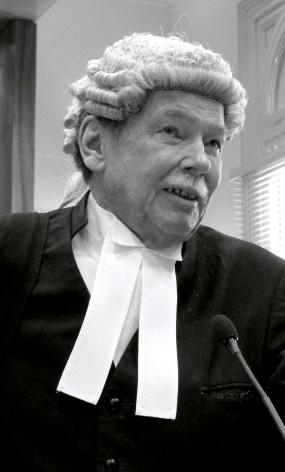
Bar Roll No 1155
On Saturday 10 January 2015, when Peter Richard Michael Jones sadly passed away after a courageous battle with cancer, the Victorian Bar lost one of its most unique, charismatic, thoughtful and powerful criminal advocates.
Peter was 70 years of age when he died. He was born on 14 September 1944.
He was as comfortable prosecuting a murder in the Supreme Court as he was in the front bar of the Working Man’s Club in Mildura. That ability to connect and empathise with anyone was part of his charm and was his hallmark.
After completing his secondary schooling at Parade Christian Brothers’
College in Bundoora, he began an apprenticeship as a wood machinist at a lumber yard in North Melbourne. He later joined the Criminal Law Branch of the Victorian Crown Solicitor’s Office. He worked hard and successfully completed his law degree, before moving with his young family, including his wife Patricia and his beloved twins Andrew and Simon, to undertake articles with a firm in Wodonga.
He read with David Cross before signing the Bar Roll in 1975. He then practised as a barrister for almost 40 years, based for a long time in Seabrook Chambers. In his stellar career he fought every case with the same zeal – from the notorious Vollmer exorcism case in Horsham to the simplest appeal.
At his funeral on 16 January 2015, his family and friends took part in a true celebration of his life. Later, on 2 February 2015, that celebration continued at a special hearing of the County Court at Mildura. At that tribute a local solicitor, Mr Peter Maloney, who began briefing Peter in 1980, noted that he “was the first choice of counsel by any firm who practised in criminal law in this district and he served us beautifully”.
Peter’s great friend, David O’Doherty, described Peter as “a fearless advocate. He was a highly principled person. He was a generous person. He was a very skilful operator as both defence barrister and as a prosecutor. He could take control of the court against the will sometimes of the presiding judge.”
That legendary tenacity continued to the end, and over the last few months of his life he continued to prosecute in the County Court at Bendigo. Despite his failing health and having to travel to and from court on his electric scooter, he continued to earn the respect of all those involved as he prosecuted some difficult trials with a great deal of success.
The essence of PRM Jones was eloquently captured by Judge Michael
Bourke at the tribute held in Mildura: “He was a remarkable advocate and a remarkable man. Many, including me, suffered at his hands in court and then after. He was a colourful, powerful and highly insightful advocate, one who had an innate feel for people. He was also tough, courageous and straight. He was close, I think, to as good as I’ve seen.”
ANDY GRANT
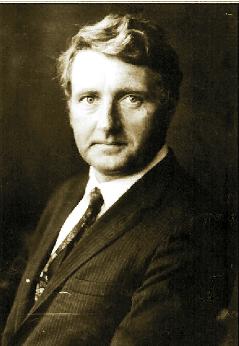
Bar Roll No 453
His Honour Geoffrey Michael Byrne was born on 22 October 1925, the eldest of five children, to James and Monica Byrne.
In keeping with family tradition, he received a Jesuit education at Xavier College, graduating in 1943. He rowed in the seven seat of the first crew at successive Head of the River regattas. He maintained an avid passion for exercise, running and skipping each morning, and became known in certain circles as the “galloping judge.”
Following his school years he enlisted in the RAAF and served in Batchelor in the Northern Territory. He rose to the rank of leading aircraftsman as a wireless
telegrapher, communicating in Morse code with RAAF pilots flying missions north of Australia. Morse code was a skill that never left him. He would often be seen tapping out sentences around the dining table at family get-togethers.
After returning from his post he studied law at Melbourne University. He went on to work as a law clerk at Molomby & Molomby where he met his future wife Patricia. He then served out his articles with the great Ray Dunn in one of the largest criminal practices in the state. In 1950, he was called to the Bar and read with Reg Smithers. For some ten years he lectured before working hours in criminal law in the long articles course at RMIT, and was greatly proud of the success of his students.
In July 1956 – at the age of just 30 – he was appointed Crown Prosecutor, and held this position for nearly 16 years. In his role as prosecutor he appeared in some of the most notable cases in the history of Victoria, including the “market murderers” and “bedroom bandits”, and the trials of Robert Peter Tate, Ronald Joseph Ryan, Peter Walker, Christopher Russell Lowry and Charles Ian King.
These Cases took him on several occasions to the Court of Appeal and the High Court. He was only prevented from appearing before the Privy Council when appointed to the County Court. His contemporary, Judge John Dee QC, labelled Geoff as “the finest of them all … a deadly prosecutor because he was so clever and always exuded fairness and courtesy.” Former Solicitor-General Douglas Graham QC noted Geoff’s reputation as a prosecutor as being “fair but deadly”.
Judge Byrne was appointed to the County Court on 1 March 1972. When appointed, he understood many might perceive him to be negatively predisposed to those accused before him given his career as a prosecutor, but his experiences and thoughtful and empathetic
nature meant he could understand the plight of the wrongdoer with compassion.
This reputation for compassion was one he upheld throughout his time on the bench. As a judge he was renowned for his comprehensive knowledge of criminal law, incisive application of the law to the facts, and a determination to find a just solution. He was seldom successfully appealed.
In all, Judge Byrne served the State of Victoria for a remarkable 41 years and was a member of the Bar for more than 64 years.
Judge Byrne was the 453rd member of counsel to sign the Bar Roll in 1950. He joined the Bar in a cohort of four, bringing the number of practising members of the Bar to 150. By comparison, his grandson (the author) was the 4,686th member of counsel to sign the Bar Roll in 2014 in a cohort of 39 and brought the number of practising members of the Bar to 1,960.
While the times have certainly changed, he never did. He was a man of candour and compassion, a gifted storyteller but above all else, a devoted family man. Judge Byrne was married to Pat for 63 years, and was the proud and loving father of seven, grandfather of 16 and greatgrandfather of five. He loved to take his young family to his brother Don’s dairy farm near Cobram before acquiring a holiday house at Point Leo and eventually settling in Shoreham from where he began commuting to work and happily lived out his retirement.
ANDREW DENTON
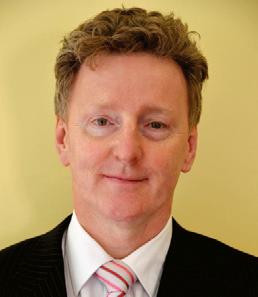
Bar Roll No 2981
Peter Nugent died on 28 February 2015. He was 54 years old.
Peter left school at year 11 and qualified as an electrical fitter. He loved to learn and completed year 12 at night, even attending extra classes not needed for his qualification.
Peter studied philosophy and then law at Monash University where he threw himself into university life and became well known on campus through his involvement in student politics and as editor of the student newspaper, Lots Wife. His sense of humour and irreverent attitude to authority won him many fans, although not always in university administration. It was at university that he met his wife, Debra Dunn.
Peter was associate to Justice Byrne and read with Tim North QC, whom he referred to as ‘Big Tim’ and with whom he stayed friends and worked closely until his death.
After he completed his reading, Peter moved into a room on the 11th floor of Owen Dixon West and never left –he just knocked walls out to expand those chambers as need be. He was soon a vital member of that floor and became firm friends with those around him. He was known on the 11th floor for his humour, his lolly jars, his pranks and his generosity.
Peter believed in the Bar, its traditions and its members. He took seriously his role as mentor to his two readers, still popping in with “mentor-reader lesson 101” well after they left his chambers. He adopted many a lost junior barrister and would routinely have a queue of colleagues outside his chambers seeking his counsel. Peter could often walk up to his VRs, reach out and have the perfect authority in his hands 10 seconds later.
Peter had a ferocious work ethic and displayed impressive attention to detail. He believed in the cab rank rule, taking unpopular causes which he fought just as fiercely as any other case. He was a robust and committed advocate.
Peter and Debra had two children – Bridgit and Caillin. Peter adored his children and his chambers were filled with pictures of their adventures together, as well as their artworks. Peter was a committed “greenie”, participating in the blockade of the Franklin River and spending a few days in Risdon prison for his efforts. In his later years he was an avid four-wheel driver, exploring our wide brown land. He will be missed.
TIM NORTH AND ELIZABETH RUDDLE
The Hon Richard Alston AO
The Hon Andrew Rogers AO QC (interstate member)
Kingsley Davis OAM
Fiona McLeod SC - President ABA
William Alstergren QC - Treasurer ABA
The Hon Linda Dessau AM - Governor of Victoria
Melinda Richards SC - Crown Counsel
Richard Niall QC - Solicitor General
Timothy Goodwin - Victorian Equal Opportunity and Human Rights


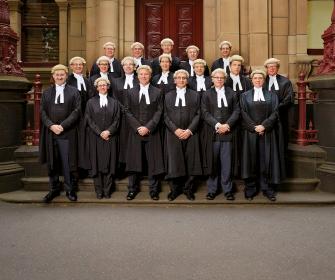
On 26 November 2014, the Hon Chief Justice Warren AC appointed the following barristers as senior counsel in and for the State of Victoria.

When I was admitted as a lawyer in March 1975, paisley ties were fashionable and the plain paper copier and electronic ball typewriter were the height of technology.
My favourite song then was American Pie – Don McLean.
My favourite song now is Tapestry – Carole King.
The first people I called after I opened my letter from the Chief Justice were my daughters, Amy and Sara Fox.
The thing I enjoy most about being a silk is the opportunity to begin a new chapter in my professional life.
The thing I miss least about being a junior is deciding whether to apply for silk.
Before I became a silk, no one told me about the extent of the functions held by the courts to celebrate silk appointments.
My advice to this year’s applicants is just keep trying.

When I was admitted as a lawyer in
1981, double-breasted suits were fashionable and dictaphones were the height of technology.
My favourite song then was Time
After Time – Cyndi Lauper (ok a bit after 1981).
My favourite song now is Memphis Blues – Cyndi Lauper.
The first person I called after I opened my letter (email, actually) from the Chief Justice was my wife, of course … She then presented me with a bronze of a rabbit emerging from a hat!
The thing I enjoy most about being a silk is that I am one.
The thing I miss least about being a junior is my old smelly robes. Before I became a silk, no one told me that I would receive so many letters.
My advice to this year’s applicants is you may as well try…

When I was admitted as a lawyer in 1981, Slip Slop Slap was fashionable and MS-DOS was the height of technology.
My favourite song then was Gilbert and Sullivan’s First Lord’s Song. My favourite song now is Gilbert and Sullivan’s Barrister’s song.
The first person I called after I opened my letter from the Chief Justice was my wife.
The thing I enjoy most about being a silk is working with juniors.
The thing I miss least about being a junior is giving advice about affidavits of discovery.
Before I became a silk, no one told me how much fun it is.
My advice to this year’s applicants is to be optimistic!

When I was admitted as a lawyer in 1989, Nick Cave & the Bad Seeds were fashionable and the Motorola brick phone was the height of technology (there was only one in the 1989 September readers’ intake, belonging to James Kewley).
My favourite song then was probably something by Nick Cave & the Bad Seeds – Deanna, perhaps. My favourite song now is any song by The Swindlers.
The first person I called after I opened my letter from the Chief Justice was my wife, who did not know I had applied.
The thing I enjoy most about being a silk is … It’s too soon to say.
The thing I miss least about being a junior is being the Centre for All Document Changes.
Before I became a silk, no one told me that you are not nearly as good as you think you are.
My advice to this year’s applicants is ... I would not presume to say.

When I was admitted as a lawyer in 1989, shoulder pads were fashionable, LA Law was popular and using a mobile phone the size and weight of a brick was the height of technology.
My favourite song then was Leaps and Bounds – Paul Kelly.
My favourite song now is Deeper Water – Paul Kelly.
The first person I called after opening my letter from the Chief Justice was my husband, who encouraged me to come to the Bar in the first place.
The thing I enjoy most about being a silk so far has been the generous good wishes of colleagues and the opportunities to address juries.
The thing I miss least about being a junior is the unheralded arrival of urgent interrogatories.
Something no one told me before I became silk was to keep the rosette away from puppies and sticky chocolate fingers.
My advice to this year’s applicants is to start thinking about the process early on and remind yourself that you enjoy what you do.

When I was admitted as a lawyer in 1992, misleading and deceptive conduct claims were fashionable, almost mandatory in any pleading, and a laptop (with docking station) was the height of technology.
My favourite song – then and now is “Oh, We’re from Tigerland”, after the siren. The first person I called after I opened my letter from the Chief Justice was Elizabeth, my secretary. I think I was in shock.
The thing I enjoy most about being a silk is leading a close-knit and powerful team. The work is more difficult, but the benefit of an assiduous junior and hard-working solicitor is very substantial. The effect of the whole is much greater than the sum of the parts.
The thing I miss least about being a junior is very hard to say, not because there were a number of things I did not enjoy about practice at the junior Bar, but rather there was very little like that. Before I became a silk, no one told me just how warm and welcoming our profession is of its new silks.
My advice to this year’s applicants is to attend the Bar’s CPD seminar on the appointment of silk, allow yourself plenty of time for completing the application and ask a trusted colleague to review it.

When I was admitted as a lawyer in 1993, I am not sure that I knew what was fashionable (that is to say, then or ever) and I suppose the mobile phone was the height of technology.
My favourite “song” then was Beim Schlafengehen – the third of Richard Strauss’ Four Last Songs. I am not sure that that has changed.
The first person I called after I opened my letter from the Chief Justice was Nicole Brady. Prior to that I was out of chambers with my wife when the public announcement came through and the phone started ringing.
The thing I enjoy most about being a silk is having the assistance of juniors. The thing I miss least about being a junior is not always working together with another barrister.
Before I became a silk, no one told me that it is stressful.
My advice to this year’s applicants is that you’ve got to be in it to win it.

When I was admitted as a lawyer in 1993, scrunchies were fashionable and palm pilots and brick-sized mobile phones were the height of technology.
My favourite song then was All that She Wants – Ace of Base.
My favourite song now is any dance/techno song that I can hum to.
The first person I called after I opened my letter from the Chief Justice was my mother.
The thing I enjoy most about being a silk is the freedom and not drafting documents from scratch.
The thing I miss least about being a junior is drafting documents from scratch.
Before I became a silk, no one told me how many thank you letters I’d need to write.
My advice to this year’s applicants is that “formal” actually means “black tie”.

I was admitted as a lawyer in 1993, but I have no idea what was generally fashionable then because I pay no real attention to fashion. I do recall that the cutting edge of technology was email, to which hardly anyone had access.
My favourite song then was Constant Craving – k.d. lang.
My favourite song now is Hallelujah – k.d. lang.
The first person I called after I opened my letter from the Chief Justice was my partner.
The thing I enjoy most about being a silk is the letter Q – it has an elegance about it, and a lovely tail, especially in Garamond font. More seriously – working with fabulous juniors.
The thing I miss least about being a junior is doing the first draft.
Before I became a silk, no one told me that there’s an Inner Bar (and, judging by the number of bottles of bubbly I received within days of the announcement, the drink of choice for the Inner Bar is Champagne).
My advice to this year’s applicants is to go for it.

When I was admitted as a lawyer in 1994, grunge was fashionable and the smaller, more accessible version of a mobile phone was the height
of technology. In 1995, my readers’ group must have been the first to have a session on how and where to buy a mobile phone.
My favourite song then was Last Goodbye – Jeff Buckley.
My favourite song now is You’re Not Alone – Mavis Staples.
The first person I called after I opened my letter from the Chief Justice was my wife.
The thing I enjoy most about being a silk is having juniors.
The thing I miss least about being a junior is not having juniors.
Before I became a silk, no one told me how exceptional the Canberra welcome is.
My advice to this year’s applicants is to expect to be very anxious in November.

When I was admitted as a lawyer in 1995, I think fashion was still in rehab after the ‘80s. Any computer with a coloured screen and Windows95 was pretty impressive.
My favourite song – then and now –is Flame Trees – Cold Chisel.
The first people I called (well, emailed) after I opened my letter from the Chief Justice were my parents.
The thing I enjoy most about being a silk is not having a leader.
The thing I miss least about being a junior is having a leader.
Before I became a silk, no one told me that there would be fairy-bread at morning tea after the Supreme Court bows. Who says it is just for kids?
My advice to this year’s applicants is probably best delivered over a coffee at Speck.

When I was admitted as a lawyer in 1988, having a CD player in your car was fashionable and Nokia mobile phones were the height of technology.
My favourite song then was Another Day in Paradise – Phil Collins.
My favourite song now is Empire State of Mind – Alicia Keys.
The first person I called after I opened my letter from the Chief Justice was my admin, to tell her I would be coming into chambers late.
The thing I enjoy most about being a silk so far is the variety of the work and working with juniors.
The thing I miss least about being a junior is having to explain to lay people why I was called a “junior” barrister despite my increasing population of grey hair.
Before I became a silk, no one told me to expect to receive unusual briefs in areas in which I have not previously practised.
My advice to this year’s applicants is, don’t become obsessed with the outcome and avoid Bar chatter.

When I was admitted as a lawyer in 1998, the Spice Girls were fashionable and those multi-coloured Apple computers were the height of technology.
My favourite song then was Cigarettes Will Kill You – Ben Lee.
My favourite song now is Harvest Moon – Neil Young.
The first person I called after I opened my letter from the Chief Justice was my husband.
The thing I enjoy most about being a silk is hard to say at this stage, given that I’ve only been a silk for five minutes.
The thing I miss least about being a junior is working to the timeline of a silk.
Before I became a silk, no one told me that I would have to do this questionnaire, and that I would give an answer that refers to the Spice Girls.
My advice to this year’s applicants is to take every opportunity to get into court.
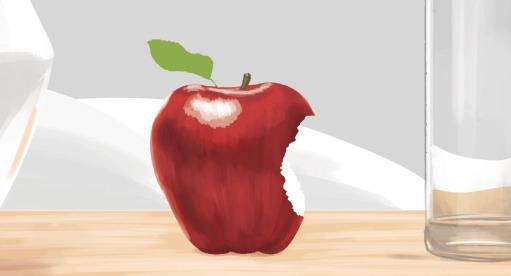
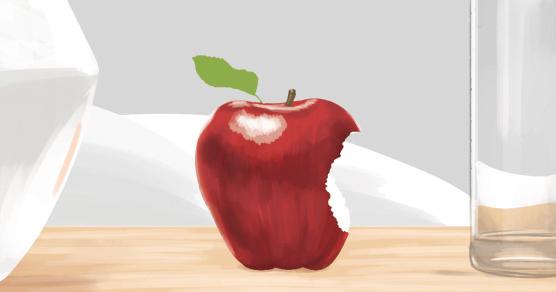
JULIAN BURNSIDE
There is an astonishing number of proverbs and aphorisms which use apples as their key ingredient. A small selection of the best known would include:
» Don’t upset the apple cart.
» An apple a day keeps the doctor away.
» One bad apple spoils the bunch.
» Adam ate the apple, and our teeth still ache.
» An apple never falls far from the tree.
» As sure as God made little apples.
» Apples ain’t apples.
It is hard to know why it is that apples have insinuated themselves so far into our language.
A Biblical connection is the likely explanation. It is commonly thought that, consigned to the Garden of Eden, Adam and Eve misbehaved by eating an apple from The Tree of Knowledge.
However that may be, the Bible offers no support at all for the idea that the Tree of Knowledge was an apple tree. The King James version of the Bible has only a few references to apples. They are mostly the metaphorical “apple of the eye”. So, taking them in the order of their appearance, we find:
Deuteronomy
Chapter 32:10 – He found him in a desert land, and in the waste howling wilderness; he led him about, he instructed him, he kept him as the apple of his eye.
Psalms
Psalm 17:8 – Keep me as the apple of the eye, hide me under the shadow of thy wings.
Proverbs
Chapter 7:2 – Keep my commandments, and live; and my law as the apple of thine eye.
Chapter 25:11 – A word fitly spoken is like apples of gold in pictures of silver.
Incidentally, apple of the eye is a reference to the pupil through which the dark retina is seen. It was once thought that the pupil was a solid, globular body.
So, Deuteronomy contains the first reference to an apple, and even then it was a reference to the pupil of the eye. The story of the Creation and the Fall appears in Genesis. Here is part of Genesis Chapter 3:
2 And the woman said unto the serpent, We may eat of the fruit of the trees of the garden:
3 But of the fruit of the tree which is in the midst of the garden, God hath said, Ye shall not eat of it, neither shall ye touch it, lest ye die.
4 And the serpent said unto the woman, Ye shall not surely die:
5 For God doth know that in the day ye eat thereof, then your eyes shall be opened, and ye shall be as gods, knowing good and evil.
6 And when the woman saw that the tree was good for food, and that it was pleasant to the eyes, and a tree to be desired to make one wise, she took of the fruit thereof, and did eat, and gave also unto her husband with her; and he did eat.
No mention of apples. And that is not surprising: apples are generally found in temperate climates. The books of the Old Testament were written in much warmer places, and they were written in Hebrew and Aramaic so there is scope for adjustments in translation. One view is that the Tree of Knowledge was a reference to the pomegranate tree.
OED2 says apple is:
...part of the name of a large number of fruits; as apple Punic, obs. name of the pomegranate; apple of Sodom, or Dead Sea Fruit, described by Josephus as of fair appearance externally, but dissolving, when grasped, into smoke and ashes; a ‘traveller’s tale’ supposed by some to refer to the fruit of Solanum Sodomeum (allied to the tomato), by others to the Calotropis procera.
So an apple Punic is a pomegranate. Punic is a reference to Phoenecia (Carthage). The name for the Phoenecians comes from the Greek Phoinikes (‘purple people’) because of Tyrian Purple – a fabulously expensive dye for which they were famous. Incidentally, the word pomegranate (the fruit of the tree Punica Granatum) literally means apple with many seeds, so it is quite plausible that the pomegranate was the fruit originally understood as coming from the Tree of Knowledge. The pomegranate is native to Carthage. Still, the apple now refers to a fairly specific kind of fruit and, despite its many varieties, is not readily confused with a pomegranate. Apples were originally sold by the costermonger (originally meaning apple seller). We don’t have too many -mongers left in Australia. The London barrow-man, who sells fruit and vegetables, still calls himself a costermonger, but the man who
the next time a search panel offers you a Boolean search, you will know it is a reminder of George Boole, courtesy of Alan Turing.
supplies apples (and nothing else) to the market does not. It is likely that costermonger derives from costerd, which means apple Costerd and custard both mean apple: the socalled custard-apple is a pleonasm.
Apopular film in cinemas recently is The Imitation Game. It stars Benedict Cumberbatch as Alan Turing. If Fortune has any sense of generosity, it will fix the name of Alan Turing in the minds of millions of people who might not otherwise have heard of him.
Alan Turing was born in 1912. He was a brilliant but erratic student. He was educated at King’s College, Cambridge and at Princeton. During the Second World War he was one of the leading figures at Bletchley Park where the Germans’ Enigma Code was ultimately cracked. At Bletchley Park, Turing created the theoretical design of a programmable computing machine. As The Imitation Game illustrates, the Bletchley Park team had to use electro-mechanical devices, at a time when the most sophisticated electronic device available was the vacuum tube valve (transistors were not invented until the late 1950s; the integrated circuit was not devised until 1973).
There is a story that Turing was asked how many discrete states a computing machine would need to have. The prevailing wisdom suggested it would need 16 states. Turing thought about it overnight and came back with the answer: two. That insight lies at the heart of the binary logic of all modern computers, which recognise just two states: one and zero; on and off.
As he wrestled with a means of encoding logical propositions in a machine, Turing recalled having read
the work of George Boole (18151864), an English mathematician and logician. Boole had become mildly famous for a book in which he described a means of reducing logical propositions to a form of algebra. It was well regarded in his lifetime and was soon forgotten after his death. But Turing remembered it, and used it to create the basic logic steps which lie at the heart of all computing: and, or, nand (not-and) & nor (notor). Boole’s contribution to the area passes almost unnoticed every day, but the next time a search panel offers you a Boolean search, you will know it is a reminder of George Boole, courtesy of Alan Turing.
The received wisdom is that Turing’s work at Bletchley Park was crucial to Britain winning the war. Turing was gay. He never recovered emotionally from his attachment to Christopher Morcom, a school friend he met at Sherborne, who had died in 1930. In 1952, Turing was convicted of a homosexual offence. He was not able to call in aid his extraordinary work at Bletchley Park: it was a State secret. He was offered a choice: prison, or chemical castration. He chose chemical castration, but soon regretted it. In June 1954, he committed suicide by taking cyanide. Cyanide has a very bitter taste. When his body was found, there was an apple on the bedside table. He had taken a bite out of it, apparently to dispel the taste of the cyanide.
It is widely thought that the logo of the Apple computer is a reference to the Tree of Knowledge. That would be a fair assumption and a reasonable connection to draw. But there is an alternative which I prefer. It is thought that the Apple logo – an apple with a bite out of it – is a silent nod to Alan Turing.
I hope it is true: nothing could be more appropriate.
Dear Leader,
Do you have any advice for me on how to handle difficult judges?
The vast majority of judges I have the pleasure to appear before are polite and respectful. Unfortunately, a small number of the judges I appear before are occasionally impolite and impatient with me.
What should I do when a judge reacts to my oral submissions as if I am being terribly boring and long-winded five minutes into my submissions?
What should I do when a judge asks me the same question three times, unsatisfied with the only answer
I am reasonably able to give?
And how do I handle a judge who is showing off to the rest of the bench by belittling me when there are three judges presiding?
Sometimes, I just want to say tell the judge to “calm down” or “shut up and listen because I’ve been working on this case for months and you’ve looked at it for the first time today in the middle of your list of 22 cases.”
I know I’m no Allan Myers QC, and never will be, but being a barrister is the only thing I know how to do and I like to help my clients pursue justice. The days that I am harangued and belittled by the bench are rare, but they leave me feeling depressed.
Sometimes, a judge is polite and appreciative to me but acts unkindly to my opponent, which also makes me feel uncomfortable.
Are there some ways the Bar could have a quiet word to a court about a judges who act out of line, suggesting some improvement?
If the behaviour of judges can’t be changed, can I change myself somehow?
How can I learn to cope better with the feeling of public humiliation I sometimes feel?
How can I improve my advocacy so that I get a better response from judges?
Yours,
Intimidated Junior Barrister
Dear Intimidated Junior Barrister, After 20 years as a barrister and despite the letters after my name, I still encounter a ‘difficult’ bench from time to time. After all, judges are

just human and the courtroom is their domain. They may adopt an impolite tone without consequence.
Experience has taught me that one must remain calm and, if the point that has met with such resistance is an important and necessary one, remain firm in your pursuit of it. Do not allow the judge’s reaction to cause a hasty retreat. Do not cower, because others will smell blood and come in for the kill.
Sometimes judges are impatient or cross because they have got the wrong end of the stick or because they are anxious about the decision you are asking them to make. If you persist in a polite and firm manner then you can hopefully take the heat out of the matter and persuade the judge to your client’s view. That is, after all, what you are paid to do.
As for public humiliation, by remaining firm and respectful in your exchanges with the bench you will ensure that you are not publically humiliated. If you feel bruised or embarrassed never let any one see it. You appear to represent your client and your own feelings are irrelevant.
Of course there may be occasions (we have all seen them) when the judge’s anger seems entirely justified, particularly when it is addressed towards your opponent.
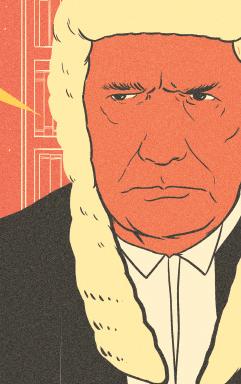
Avoid the temptation of egging the judge on however, because that is always unseemly. We should all remember that our conduct will always reflect upon the administration of justice.
After any appearance that seems to have provoked a critical response from a judge, one ought to assess what has occurred to determine whether the judge’s reaction was in any way justified. Have you raised an irrelevant or time wasting point? Have you failed to grapple with the questions you were asked? Whilst such matters may not justify rudeness from the bench, our judges are entitled to expect that counsel will assist them in their judicial tasks.
In an extraordinary situation where there has been an unjustified and personal attack upon counsel (I know of no example, but there may be some), counsel should seek the advice of the President of the Bar. Let us hope it never comes to that.
Chin up Your Leader.
RACHEL DOYLE AND KATE BURKE
“What was the truth? Whatever it was, it seemed to reside in some far-off, shadowy realm of anguish, beyond the reach of words and resistant to the striving of intellect”: This House of Grief, page 289
On Fathers’ Day 2005, Robert Farquharson was driving his sons Jai, Tyler, and Bailey, home to their mother. The car veered off the road, crashed through a fence, and plummeted into a dam. The boys, aged ten, seven and two, drowned. In the years since, Farquharson has twice stood trial for their murder, and twice been found guilty. He is serving three life sentences with a minimum of 33 years.
Helen Garner sat in the Supreme Court throughout the trial, the appeal and the re-trial. This House of Grief, written in Garner’s elegant and perceptive prose, captures her observations of those involved in the proceedings: the accused, counsel, witnesses, jurors, judiciary, journalists, and the bereaved. All this is recounted in the context of marvellously evocative descriptions of the physical and psychological architecture of the Supreme Court of Victoria and the awful theatre of filicide.
Garner dedicates her book to the Victorian Supreme Court, “this treasury of pain, this house of power and grief” (Dezso Kosztolanyi: Kornel Esti). Garner’s deep respect for the institution is palpable without being reverential. Her descriptions of the building, including “the tranquil order” of the “gently shining” courtroom are evocative. They are almost enough to cause counsel forced to work in its uncomfortable courts beset by perplexing acoustics to fall in love with the building all over again, instantly forgiving every heel caught between cobblestones and every back twinge caused by hauling wheelie bags up narrow, slippery stairs.
Garner turns the forensic and lay evidence of the events on the night of the deaths into the backdrop for a gripping narrative of horror and grief. Her description of Cindy Gambino’s reaction to the two guilty verdicts delivered by the juries years apart are among the best passages in the book: “At the first ‘guilty’ Cindy Gambino let out a piercing, animal wail. Guilty, Guilty. Court officers rushed to her aid. Beside her a pale face swayed and dropped: her mother had fainted. The court swarmed with people turning and gasping and pressing. Screams and sobs echoed in its high white ceilings.” When the verdict is
By Helen Garner Text Publishing,
Melbourne, 2014
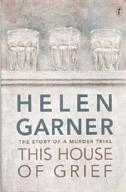
delivered in the re-trial, Ms Gambino, “…neither wailed nor wept. Instead, she drew her swooning mother’s head into the curve of her neck and kissed her on the temple. It was a moment of such intimacy, such unexpected grace, that I had to turn away.”
When Garner’s The First Stone was published in 1995, some readers reacted angrily to Garner’s decision to inject herself into the centre of the scandal at Ormond College. Feminists complained Garner’s views on sexual harassment were outdated and that she was overly critical of the young women at the centre of that story. But Garner’s unique perspective on the drama unfolding before her is the genius of This House of Grief. We, like her, shift from possessing an absolute belief in Farquharson’s innocence (no doubt inspired by our refusal to
concern. They are ours to mourn. They belong to all of us now.”
Garner’s portraits of counsel have no doubt generated considerable interest and discussion at the Bar. She describes Peter Morrissey SC as “barging in” to Court “with his black gown hanging off one shoulder and his wig pushed back from a shiny forehead. He was big, fair and bluff, Irish style, with the bulk and presence of a footballer.” She provides a contrasting portrait of Jeremy Rapke QC as, “a lean, contained-looking man, with a clipped grey beard and a mouth that cut across his face on a severe slant, like that of someone who spent his days listening to bullshit.” It is rare for legal dramas (whether film, television or novels) to present prosecutors as fully drawn characters. Yet here, Garner
For barristers, these parts of the book serve as an uncomfortable reminder about the impact our work has on others.
accept that a father could do this), followed by a resigned acceptance that while we may never know precisely what happened that night (much less why), Farquharson was rightly found guilty by both juries. Garner’s portrayal of the court proceedings and legal process is masterful. But this ought not overshadow her stunning insights into families, fatherhood, divorce, revenge and grief. Statistically, filicide is extremely rare.1 Yet over recent years, the Victorian public and press have become obsessed with three high profile cases of children killed by their fathers: Darcey Freeman, the Farquharson boys, and Luke Batty. Perhaps this triumvirate of tragic cases has seized our imagination because they embody our worst fears – losing a child, or losing ourselves sufficiently to harm a child. As Garner says poignantly of the Farquharson boys: “Every stranger grieves for them. Every stranger’s heart is broken. The children’s fate is our legitimate
devotes significant attention to the prosecutors, and their careful work is described with respect verging on awe. But even Garner cannot resist ultimately returning criminal defence counsel to the mythological status they enjoy: “Criminal barristers like to see themselves as free spirited adventurers, armed with learning and wit, who gallop out to defend the embattled individual against the dead hand of the state. They love to perform. A rill of ironic laughter bubbles under the surface of their discourse. There is something savage in the greatest of them, and their brilliance is displayed to most devastating effect in crossexamination.”
Garner pulls no punches in describing counsels’ crossexamination variously as “cloudy and insubstantial” and as “a slogging demolition job, phlegmatic, at times plodding.” Other descriptions are less critical – counsel is described on one occasion as working his way, “with slashing skill through
the errors and equipment failures and self-corrections of the police investigation.” She is at her most brutal when describing the impact of long winded cross-examination on the jury, referring to their mouths going “square with the effort to control their gaping yawns.” In passages such as these, Garner reminds readers that jurors are not lawyers. Their reaction to vigorous and necessary crossexamination may be mutiny rather than admiration for counsel whose job it is to attack a sympathetic witness. Garner also reminds us that jurors are not like defence counsel: not only do they want to know if the accused is guilty, they have to know – and beyond reasonable doubt – if they are to conduct the task which the law requires of them.
For barristers, these parts of the book serve as an uncomfortable reminder about the impact our work has on others. Counsel rarely receive frank performance reviews of our court craft. An instructor might say “well done” on the last day of the hearing, but otherwise we are left wondering about the quality and efficacy of our advocacy. For this reason, reading Garner’s intimate portraits of counsels’ style is a guilty pleasure, but marred by an undercurrent of fear that we too might have committed the sins of prolix cross-examination or forensic missteps as outlined in this book.
Ultimately, Garner resists the temptation to wrap up every scrap of evidence in a tidy bow labelled ‘true’ or ‘untrue’. Of course, it is the law’s demand for an answer or verdict which provides the dramatic context for her slow but inexorable progression to acceptance of Farquharson’s guilt. As Garner finally intones: “If there is any doubt that Robert Farquharson drove into the dam on purpose, it is a doubt no more substantial than a cigarette paper shivering in the wind, no more reasonable than the unanswered prayer that shot through my mind when I first saw the photo of the car being dragged from the black water.”
This House of Grief joins the ranks of other meticulous portrayals of court proceedings such as Janet Malcolm’s Iphigenia in Forest Hills and Chloe Hooper’s The Tall Man. Gripping reading for all those interested in books about court proceedings, true
crime and portrayals of grief and family breakdown. Essential reading for all counsel who care about how our work is perceived and received by the public.
1. It has been estimated that filicide occurs at a rate of about 24 deaths
French rhyme and rhythm
DAVID GILBERTSON
Le village défunt (the deceased village) is a delightful collection of French language poetry written by Nicholas Green QC. A poem on the back cover bearing that title commences by posing a question whether “la chute” (the fall of man) is not “l’arnaque définitive”, the definitive con or rip-off.
From this provocative launching pad, the reader is taken to a wide range of very French poetry. Deceptively short, they “enchant reality”, as one of the poems (Aspects) concludes is the task of the poet.
Many French writers, including Baudelaire, Hugo, Apollinaire, Proust and Camus, inspire Mr Green. Like them, he explores the spectrum from weighty themes, such as the future of humanity, to the apparently banal (for example, the changing of traffic lights). There are personal memories of holidays, and a touching reflection of his mother who died when he was young. Many of the poems expose the author’s deepest thoughts and feelings.
This collection is a remarkable feat from someone who started learning French seriously in 2010. I have been trying to master it for decades. The work has depth of language, humour, a variety of poetic techniques and much of the rhyme and rhythm that is familiar in French poetry.
My favourites include one of the shortest in the book, Kyrie. Each of its words is similar in English. They make one think how the sounds of words influence their meaning:
Conjugaison
Kyrie Eleison
Conjugaison
Christe Eleison
Conjugaison
To the many Francophiles at the Bar, I thoroughly recommend this collection. It is published by Éditions Baudelaire.
By Nicholas Green Paperback Editions Baudelaire
Published 2014

a year in Australia: see Chan, A., & Payne, J. (2013) Homicide in Australia: 2008-09 to 2009-10 National Homicide Monitoring Program annual report, Australian Institute of Criminology, p. 66; Mouzos, J., & Rushforth, C (2003) Family Homicide in Australia: Trends & Issues in Criminal Justice, No. 255, Australian Institute of Criminology.
MICHAEL GRONOW
By Simon Smith
$40.00 Paperback
Published 2014

This enjoyable book tells the story of five lawyers who practised in the colonies of New South Wales, Van Diemen’s Land (subsequently Tasmania) and the Port Phillip District (subsequently Victoria) in the 19th Century. As the title suggests, they were not particularly reputable. Indeed, all but one of them were struck off as legal practitioners. As readers will discover, Australian colonial lawyers were a mixed lot. As the author says, “it is hard to imagine that it [i.e. Australia] was the first choice of many such professional men, but rather one driven by financial imperatives, family and other challenges.”
Nevertheless, at least some of the lawyers here described came from distinguished backgrounds. The Honourable James Erskine Murray was a younger son of the seventh Lord Elibank. Sidney Stephen was a member of the famous Stephen family, and his brother Alfred was an early Chief Justice of New South Wales. Sidney himself (after the Supreme Court of Van Diemen’s Land’s decision to strike him from the roll of practitioners was reversed by the Privy Council) ended his career as a Judge in, and Acting Chief Justice of, New Zealand.
If the quality of some Colonial legal practitioners was variable, so was that of the Judges. Several of the subjects of this book fell foul of the eccentric, irascible and erratic Judges John Walpole Willis (of the Supreme Court of NSW and later in the Port Phillip District) and Montagu (of the Supreme Court
of Van Diemen’s Land) who were themselves “amoved” from the Bench for misconduct. In addition to each of the lawyer subjects (who also included Horatio Nelson Carrington, John Thurlow and William Thurlow), this book is a portrait of the robust and rambunctious colonies of New South Wales, Tasmania and Victoria in the early and mid-19th century.
The involvement of many of these practitioners in questionable land and business transactions (frequently with their clients) did not diminish their propensity to get
themselves into trouble. Indeed, this 21st century reader gained the impression that several of them were thorough-going rogues, though often entertaining ones. It is difficult to imagine modern Australian lawyers getting into trouble with the authorities for wearing a moustache in Court or challenging another party to a proceeding to a duel.
The author says that his five subjects “can undoubtedly be included among the pioneers of the Australian legal system,
although their pioneering was for the most part unintentional and even accidental.” One could say the same of many other Australian colonial pioneers, including those in other professions, and political and business life. It was nevertheless an ability to attract the talented as well as the unscrupulous which made 19th Century Australia such a vibrant place. I would recommend this book to anyone with an interest in legal or Australian history. It is will written and well researched, as well as being a fun read.
MICHAEL GRONOW
Afurther edition of this standard Australian administrative law text is most welcome. Along with Aronson, Dyer and Groves’ Judicial Review of Administrative Action, it is a book which no practitioner in administrative law in this Country can really afford to be without.
As the first chapter says, “Administrative law has been one of law’s growth areas”. Since the previous edition came out in 2009, there have been several important new High Court decisions, including Kable v New South Wales and M47 as well as significant amendments to the Commonwealth Freedom of Information Act. There has also been significant new human rights legislation in the ACT and Victoria. As a result, substantial parts of this new edition have been rewritten.
After introductory chapters dealing with “Issues and Problems in Australian Administrative Law” and “The Rise (and Decline?) of Administrative Law”, the book covers “Freedom of Information and open Government” and “Understanding Decisions, Reasons, Discovery and Evidence”. Further
chapters deal with “Investigating Administrative Activity”, including “Auditors General”, “Corruption” and “Whistle Blowers” as well as “The Ombudsman”. The work then covers merits review, delegated legislation, “the Duty to Act within Powers” and discretionary power, as well as duties to act for proper purposes and take into account relevant considerations and “Duties in Relation to Findings of Fact” as well as the obligations on decision makers to act reasonably and rationally.
There are also several chapters on procedural fairness, including the right to be heard, the rule against bias and the limits to these principles, including how departures from them can be cured and when breaches of them will and will not invalidate decisions. The work concludes with chapters on judicial review and remedies, discretion and standing. There are generous extracts from most of the leading Australian administrative law cases, as well as academic articles and other materials.
This book remains authoritative, well set out and well written. Its thorough treatment of the relevant
cases and legislation, makes it a good first place to go on nearly any administrative law topic. The commentary remains lucid and helpful. There are pithy statements which show insight on the part of the authors, such as “The essential requirement of a statement of reasons is truth – to convey the actual reasons of a decision maker”. If only this principle were more widely practised! Similarly, “There are good administrative and political reasons for governments to consult those who might be affected by regulations”. I warmly recommend it to both students and practitioners. I also respectfully share the view expressed about a previous edition in the Tasmanian Law Letter: “Any practitioner stumped for ideas will find it stimulating”.
Douglas & Head, Douglas & Jones Administrative Law By Federation Press Sydney 7th Edition 2014 884 pp Paperback

A review by SCHWEINHAXE, the Bar’s resident undercover foodie

Kirk’s Wine Bar
Cnr Hardware Lane and Little Bourke Street
Monday to Friday 7.30am to 11.00pm
Saturday to Sunday 9am to 11pm
The renovation of this great corner site took a long time. Then Kirk’s Wine Bar opened in mid-2014 with a bang! Its Facebook post declared soon after it opened:
“Stop by for a plate of Simon’s wagyu and scamorza snags and a glass of Mt Mary’s excellent Reflexion Cabernet.”
It was plain that we were in for a real treat.
Kirk’s claims that its namesake, Scotsman John Kirk, and members of the Turf Club hatched plans at the site for a race that became the Melbourne Cup.
Kirk’s makes the most of its location. It has outside tables and chairs that are directed onto Hardware Lane. They are arranged in that Parisian/Roman style: making the passers-by part of the action. This winter the outside heaters are on. This is a great place to watch the passing parade. Yes, you get asked for money, yes you see silks and judges pouring into and out of Ciao Pizza Napoli, but that is all part of the fun!
Inside is a mixture of stools and benches, and small tables and chairs. This is not a place to spread out. Be prepared for a snug fit, one that immerses you in the vibe of the place (i.e. great food and wine)! There are a few well-placed posters with drink-inspired themes to get you in the mood.
I have been here so many times for coffee that I feel that I have paid for the coffee machine. However, this
review is not dedicated to the coffee; there are lots of places for that. I came for the food.
The scene was set. I invited my wife and two barristers we have known for 20 years. We sat at a table. It was cosy. There are no tablecloths but they use good quality glasses and cutlery. It was waters all round for the barristers (oh I shudder at how times have changed…). This was the case despite there being a number of excellent bottles of wine available by the glass, sitting on the bar, looking at us and expressing their disappointment as only a half bottle can. Schweinhaxette kept up appearances and had a glass of a French Chenin Blanc.
There are, as you would expect, also many great wines by the bottle. These include a Grosset Polish Hill Riesling ($71); a Dr Loosen Riesling ($82) and a Bannockburn Shiraz ($84).
Kirk’s also serves a number of cold-pressed juices, including some with intriguing names such as “seriously green” and “roots and fruits” (both $7.50). We stuck to water.
The specials are written on tiles above the coffee machine and bar. They included on our visit, oysters from Moulting Bay in Tasmania ($3.90 each), pork crackling ($10.50), and a caprese salad with crispy capers and aged balsamic ($9.50/$17.50).
I had grilled lamb cutlets with a panzanella salad ($24). (Panzanella is a Tuscan salad made with bread, tomatoes and sometimes something green (i.e. parsley leaves), all dressed in a simple olive and vinegar dressing). It was a great accompaniment to the firm and juicy cutlets.
Schweinhaxette had house-cured ocean trout with pickled orange and fennel ($17). The ocean trout was rare and perfectly cured.
Our mates knocked off the ploughman’s lunch ($18) and a salmon niçoise salad ($21.50). The ploughman’s lunch was somewhat of a miss as it featured a very large slab of meat that was a bit unexpected and against the subtlety of the rest of the meal. However, the salmon niçoise salad was a winner. The generous pieces of delicate, just-seared salmon were apparently excellent. They were mixed through with sliced yellow and red cherry tomatoes and also tossed through with salad greens. “Quite delicious,” said our friend.
We topped it off by sharing a few desserts, including a crème brûlée ($12), and coffees.
We had a very lovely lunch. I feel that the place has much more to offer and we did not really make the most of our opportunity. In a wine bar, you really should drink wine. That said, I will be back for a glass/bottle of something soon.
The motto of the place is “in vino veritas”, being Latin for “in wine there is truth”. The last time I found any truth in wine I got into trouble!
SARA HINCHEY
I’ve often wondered whether my love of Bindi wines was biased by reason of my close association with the Dhillon family – whom I’ve known since I was at university with Michael Dhillon, son of Bill Dhillon, who planted the initial vineyard in 1988. But my love of the wines and my view that they are special and of exceptional quality has been confirmed by the many independent rave reviews which they have been given. It is for this reason that I wanted to share with you a little bit about my favourite winery – Bindi, situated just 45 minutes northwest of Melbourne, in the Macedon region.
The Macedon winemaking region boasts a cool climate and wineries that produce some of the best Pinot Noir and Chardonnay in Australia. A boutique, family-run winery, Bindi is hailed by many as the finest of them all.
Michael Dhillon (known to his uni mates as ‘Micky D’), who is now the vigneron and winemaker, initially made the wines under the guidance of legendary winemaker Stuart Anderson (of Balgownie fame). Stuart continues to consult to the Dhillon family to this day.
Michael has an excellent pedigree and extensive experience as a winemaker, having worked and consulted with growers in France (Champagne, Burgundy and the Rhone Valley), the US (California) and Italy (Tuscany). In Australia, as well as working closely with Stuart Anderson and John Ellis (Hanging Rock winery), Michael has worked with John Wade (Howard
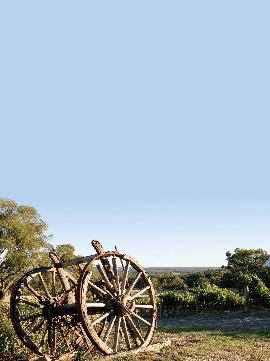
Park) in the Lower Great Southern, Western Australia.
The Bindi vineyards are located 500 metres above sea level in a unique, northfacing amphitheatre of exceptional beauty, which forms a natural suntrap within the naturally cool climate of the area. The soil is predominantly shattered quartz over siltstone, sandstone and clay. The vines (two hectares of Chardonnay, four hectares of Pinot) are managed without herbicides or pesticides and are pruned and harvested by hand. The yield is low (typically only one and a half to two tonnes per acre), producing deliciously intense fruit, reflective of the unique ‘terroir’ of the Bindi vineyard site.
Fermentation of the wines occurs without addition of yeast, yeast nutrient or enzyme. Unsettled Chardonnay juice goes straight to barrel; reds are gently worked, delicate pressing followed by long lees ageing in French barrels and minimal racking. No fining occurs and restricted filtration regimes are followed.
Bindi produces seven different wines: Bindi “Kostas Rind” Chardonnay; Bindi “Quartz” Chardonnay – my favourite; Bindi “Original Vineyard” Pinot Noir (we opened some 1998 Original Vineyard earlier this year and were blown away by its continuing depth of colour, the classic fruits of the forest and earthier forest floor characters, and the gorgeous silkiness it developed in the bottle, which was left open overnight – this wine has years to go); Bindi “Dixon” Pinot Noir; the newly released label Bindi “Kaye” Pinot Noir (a tribute to Michael’s late mother, Kaye, which I had the privilege of tasting in May this year – it’s a knockout); Bindi “Block 5” Pinot Noir; and “Pyrette” Heathcote Shiraz.

As you might have guessed, I think that all the wines are outstanding. But don’t take my word for it – here are just some of the reviews: Australian Gourmet Traveller described the Bindi wines as “sheer class”, having “a purity of fruit rarely seen in this country”. In the 6th Langton’s Australian Wine classification, released in May 2014, both Bindi’s “Original Vineyard” and “Block 5” Pinot Noirs were ranked “Outstanding”. In James Halliday’s view, Bindi is “one of the icons of Macedon”. Halliday continues, “The Chardonnay is top shelf, the Pinot Noir as remarkable (albeit in a very different idiom) as Bass Phillip, Giaconda or any of the other tiny production icon wines. The addition of Heathcote-sourced Shiraz under the Pyrette label confirms Bindi as one of the greatest small producers in Australia.” Decanter Magazine named Bindi No 1 in the list of Australia’s top 10 white wine producers saying, “Dhillon crafts spectacularly refined, delicate, compact and multilayered Chardonnays (and Pinot Noirs) of great precision ... If they weren’t so scarce, they would be household names by now. Certainly, whenever Chardonnay is discussed by the cognoscenti, Bindi is
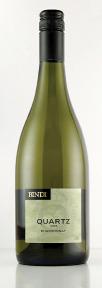


The racy, citrus fruit purity of the Kostas Rind
Chardonnay is there to see. The volume and length of the Quartz Chardonnay is showing.
recognised as among Australia’s finest.” That’s my mate, Micky D!
The 2015 Bindi harvest has just concluded and Michael considers it to be Bindi’s best vintage ever. I saw the just-picked fruit as it was beginning to ferment and it was clear that it had been in exceptional health. Crop yield was around two tonnes per acre. The juice was delicious and concentrated.
The personality of each site was already evident in the nascent wines. The racy, citrus fruit purity of the Kostas Rind Chardonnay is there to see. The volume and length of the Quartz Chardonnay is showing. The fragrance and red fruits of the Original Vineyard and the structure and drive of Block 5 are emerging, as is the drive and grip of the soon to be released Block K.
Some recent tasting notes:

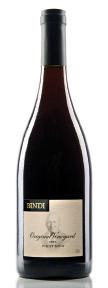
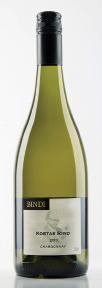


2013 Bindi Quartz Chardonnay ($85)
Light to medium yellow colour and a restrained but subtly complex nutty bouquet, with a trace of toasted almonds. Rich and medium to fullbodied, with lively acidity and great energy. This is tight, refined, highquality chardonnay, with tremendous persistence and penetration, the aftertaste energised by the acidity. Best 2015 to 2023. 95/100 – Huon Hooke
Bindi KAYE Pinot Noir 2011 ($70)
The 2011 is a spicy, perfumed, complex wine, showing delicious black cherry and strawberry fruit characters. It is a beautifully textured wine with a creamy, silky, mineral palate of exceptional length. It will improve and drink well over at least the next six years. This vineyard site produces structured, intense wines and the cool, late 2011 season saw the elevated, warm Block K vineyard produce excellent intensity and complexity.
– Michael Dhillon
These exceptional wines are hard to come by. Your best bet is to sign up to the mailing list by visiting the Bindi website: www.bindiwines. com.au or by contacting Michael Dhillon directly by email: michael@ bindiwines.com.au or by phone/fax: +61 3 5428 2564.

ED HEEREY
Three ingredients make a perfect storm for live music fans: first, rampant internet downloading means that ageing rock stars can no longer retire on royalties ticking over from old recordings. If Sir Mick Jagger can’t kick back on his back-catalogue, who can? Secondly, said rock stars blew all their dough while being rock stars. That’s in the job description. Thirdly, like the rest of us, said rock stars have bills to pay. None of them wrote songs about ex-wives, child support and mortgages, but those issues are front and centre these days.
A fourth factor was the strong Aussie dollar mixed with gloomy times in the US and UK. Now that iron ore is passé and dragging down our dollar, our purchasing power is not what it was. But there will always be the attraction of escaping a dark winter in Manchester or Chicago for a summer tour Down Under. Anyhoo, for several years now Melbourne music fans
have been treated to a strong and steady procession of musical dinosaurs of all genres. The results are not always what you might expect.
Generally, folks want to see and hear the lead singer of their old favourite band, and will excuse a few personnel changes in the band line-up to cover for those who are dearly departed or just don’t get on with the singer any more. (Old muso’s joke: Q. How does a lead singer change a lightbulb? A. He holds it up and waits for the world to turn around him.)
So, for example, when the Lemonheads played the Corner Hotel in Richmond, it was really just Evan Dando playing with whomever else he could find.
Some singers are in better health than others. Old fans of the Pogues gathering at Festival Hall could not be confident that the famously thirsty Shane MacGowan would (a) turn up; (b) remain upright; and/or (c)

remember the lyrics. Somehow, he managed all three while the rest of the band delivered their unique brand of Celtic punk-folk.
One lead singer who local live music fans will never hear is Joy Division’s Ian Curtis, who tragically took his own life in 1980 just as that seminal post-punk band was really breaking through. The surviving band members formed New Order, which went on to massive mainstream success through the 1980s, with guitarist Bernard Sumner taking over on vocals. Back in those days an Irish dude at Camberwell Market used to sell bootleg cassettes of UK live shows by New Order (amongst others); it was a rude shock to hear just how dodgy Sumner’s live vocals were – and that’s saying something for a band which built its reputation writing great songs with minimal musical ability.
Fast-forward to 2015, which saw the grumpy but enigmatic old bass-
player, Peter Hook, bring his own Joy Division/New Order show to the Corner Hotel, with an entirely new band. With neither Curtis nor Sumner on board, Mr Hook took the mike as third-choice singer; he turned out to be no worse than the other two. That said, he cannot sing and play the bass at the same time, a problem which he solved by bringing his own son into the band as second bass-player. The net result? More like a tribute band than the real thing, but the old fans were happy enough to take what they could get, with a dose of irony in the big finale of Love Will Tear Us Apart
These events have the feeling of a school reunion about them, attracting a crowd of black-clad yet greying hipsters earnestly showing off just how cool they were 25 years ago. At the Stone Roses gig at Festival Hall it took a while to notice that no one in the crowd was younger than 40. (This was an uneasy realisation, much like the day when it occurred to me that Gold 104 was playing songs I like.) Incidentally, the band’s lead singer, Ian Brown, looked like he had been on the same bender since 1992 – complete with a pair of authentic early 90s yellow track pants.
A habit of these old fans (annoying or endearing?) is to sing or mouth all the words to each song to demonstrate their superior knowledge of the lyrics. Generally these fans also display the cover of the band’s coolest record on a t-shirt which has somehow survived 25 years of tumble-drying, or did they get the replica merchandise on the way into the show?
These revival shows work best when the band members are clearly enjoying themselves. A good example being the Specials, who reconvened their complete original 1977 line-up to crank up the original two-tone ska beat and skank the Palace to its foundations. That classic music venue survived the night but it did
not survive Matthew Guy’s shameful decision to allow developers to demolish it. When will we learn?
Amongst the parade of foreign stars, some old local acts are also getting back together for their old fans.
The perennially under rated Hoodoo Gurus have been touring so hard that their drummer recently quit, citing exhaustion. Two parts of Perth’s 1980s psychedelic guitar pop legends the Stems have been touring competing acts (and fighting over their band name). Radio Birdman, Died Pretty, from time to time the Beasts of Bourbon – the list goes on.
Definitely my favourite reformation gig of recent years was that of Melbourne’s own Models. These local dudes were bona fide Aussie music legends back in the 1980s, playing stadiums with the likes of David Bowie, and here they were playing to whatever punters happened to be mingling in the Espy front bar at 11 o’clock on a random Saturday night (free entry!). With their core line-up of Sean Kelly on vocals/ guitar and Andrew Duffield on keys, the only missing piece was James Freud on bass (RIP) – although his replacement was in fact his original predecessor, Mark Ferrie, who is better known these days as a member of the genius RocKwiz Orchestra.
How good it was to rest an elbow on the bar, enjoy some Melbourne Bitter from the tap, and watch the Models rip through avant-garde post-punk classics like Two Cabs to the Toucan, before working their way up to big hits such as I Hear Motion and even Freud’s signature song, Out Of Mind Out of Sight. I approached Mr Kelly after the gig and asked him to sign the set-list I had “souvenired”. He complied, grudgingly, complaining that he was running out of time to lug all his equipment off the stage before the next band. Yep – no roadies for these old-timers, just a band playing their old stuff for the love of it. Rock on.
“Off the Wall ....” is a

regular column showcasing the works from the Victorian Bar’s art collection. In this edition
we
look at the portrait of Sir Isaac Isaacs by Percival White.
Isaac Isaacs was born on 6 August 1855, the eldest of six children of Alfred Isaacs, a tailor, and his wife, Rebecca. The Isaacs had emigrated from London in 1854, although Alfred was originally from Poland. The family settled in Victoria’s north-east and Isaac was educated at Yackandandah and Beechworth. He had a brief career as a teacher but, at age 20, secured an appointment as a clerk in the Prothonotary’s Office in Melbourne. He worked there full time whilst studying law at the University of Melbourne; and graduated with first class honours and the Exhibition prize in 1880. Isaac Isaacs joined the Bar in 1882 (Bar Roll no. 59). As noted by Sir Zelman Cowen in the Australian Dictionary of Biography, “With no connexions and little financial backing, Isaacs found the going slow, but his qualities of persistence and determination, linked with great legal ability and capacity for hard work, brought him an increasing practice.”
In 1892, he was elected to the Victorian Legislative Assembly as the member for Bogong, a seat he held until 1901. From 1894 to 1899, Sir Isaac was the Victorian AttorneyGeneral. During 1897-98, he was a Victorian delegate to the convention on the Australian Constitution. Isaac Isaacs carried on his extensive Bar practice throughout his early political career. He took silk in 1899. By 1901, he was the acting Premier of Victoria. He was encouraged to stay in that role permanently but declined to do so. In 1901, he was elected to the first Federal Parliament, representing his home seat of Indi.
In 1906, Sir Isaac was appointed to the High Court of Australia. In 1921 he became a Privy Councillor. In 1930,
at the age of 75, was appointed as the third Chief Justice of the High Court of Australia. Within a year, however, King George V, on the advice of the Labor Prime Minister J. H. Scullin, appointed Isaacs as the first Australian-born Governor General of Australia. He served as Governor-General during the Depression years with dignity and distinction. Zelman Cowen notes that, “His age was no impediment to great enthusiasm and he discharged the ceremonial duties of his office with obvious enjoyment.” He retired from public office in January 1936 but continued to write on a wide-range of subjects, including biblical and religious topics for the Jewish press. He died at home, aged 92, on 11 February 1948.
Artist –Percival White
Percival (Percy) Israel White was born Peretz Witofski in Lithuania in July 1885. He attended the Vilnius Art School, where one of his fellow students was Marc Chagall. He worked in Leningrad, Berlin and Paris and then in London for many years, before immigrating to Australia in 1926. In London he exhibited with the renowned sculptor Jacob Epstein.
As a portrait artist in Australia, White painted several luminaries including Sir John Monash, Sir John McFarland and Chief Justice Sir Frank Gavan
Duffy (also in the Victorian Bar collection). White’s three-quarter portrait of Sir Isaac Isaacs painted in 1930, when Isaacs was in his seventies, is held in the High Court of Australia’s collection. The Victorian Bar’s smaller portrait would have been painted around that time, possibly as a study.
Art & Collections Committee
ZEUS XENIOS1
If you were born after 1985, you are a digital native. If born before then, even if your name is Sir Tim Berners Lee or Steve Jobs, you will always be the outsider, the digital immigrant. Some immigrants will always yearn for the old country, where phone calls were made on landlines, where they learnt of the latest cases by reading the loose parts of the VRs and CLRs, and where communications between lawyers and the courts were by letter, entrusted to Australia Post. Until recent, unfortunate events to our north showed their unsavoury side, these immigrants regarded the decline in thank you notes, written with a Montblanc pen on nicely embossed paper, as emblematic of the ravages wrought by technology on civilised society.
Other immigrants have enthusiastically embraced the new world. Early adapters, they moved seamlessly from DOS to Windows, floppy discs to the cloud, faxes to scanners, “portable” Macs the size of sewing machines and mobile phones that doubled as bricks, to notebooks and Blackberries, and on to smartphones and tablets. Yet, every so often, they will show they are outsiders, no matter how well they try to pass for natives. Think Rebekah Brooks telling David Cameron lol did not mean lots of love.
Yet other immigrants, even the barristers in their ranks, resplendent in the robes which have changed little since the 1635 Royal Decree on Court Dress, reluctantly accepted remote controls, dumbphones and internet banking as necessary evils in post-1985 existence.
On the other side of the divide, are the natives, those who have
never known a world without instant communication, whether by word, voice or image, with anyone, anywhere, anytime, and who never have had to wait to find out anything, or go to a library and open a book, because they can look it up instantly on the internet.
A post-1985 world poses new challenges for barristers, whether they are digital immigrants or natives.
these materials, search and find them, and forward them to the court when required on what airlines call ‘electronic devices’. If you are, or have carefully cultivated an image as a Luddite, you must be assisted by a junior, instructor or moderately well-behaved 10-year-old who can perform these tasks for you.
But be warned. Judges do not like any of the devices which are used for such tasks to make any noise in

Judges, even those who profess to be technophobes, will expect you to be able to access legislation, and the relevant authorities, on the spot. Some have been known to ban trolleys in the courtroom, yet still expect you to be able to access all relevant witness statements, exhibits, transcripts and court documents without delay. And they will expect you to have access to your diary, and to be able to instantly email any document you file in court to add to its e-files. This means the modern barrister must be able to access
court. At All. They expect you to read and comply with the signs in courts telling all who enter to turn off their phones. As there is always a risk, despite the warnings and displays of judicial displeasure, you will forget at some stage to turn your devices to silent, you may want to review your ring tones and message alerts. Judges seem particularly unimpressed by bodily sounds, animal noises, football theme songs and misogynistic rap. And while you are at it, beware of the embedded ads and sound and vision clips online newspapers add
to some of their news item images. Generally, you will be hard-pressed to convince the judge you are looking at something related to the case. Despite the success of the applicant in Google v Costeja González ((C131/12) [2014] ECLI: EU:C:2014:317), the right to be forgotten will not easily permit you to expunge the photos and comments you wish, on reflection, you had never posted on Facebook, tweeted or instagrammed. If you are on Facebook, or hang out with people for whom it is normal to photograph everything and post it online, review your privacy settings, assume everything you or your friends post can make it into the public domain and remember, once
it is out there, you can’t get it back or control its spread. Just think of the unfortunately, but aptly named Elliott Weiner, or Peter Dowling, head of the Queensland Parliament’s Ethics Committee, who emailed the photo which, as Annabel Crabb said, gave a whole new meaning to coq au vin
On the issue of keeping things private, there is a touchingly innocent belief people have when speaking on their mobile phones that their conversation is private. Even if you close your eyes, or turn your back, try to remember others can still hear you. Think of how often you have been a fascinated or appalled involuntary eavesdropper. It may be convenient to talk to instructors,
opponents or colleagues somewhere other than chambers, but take a moment to consider whether you would have the same conversation if you were face to face with them in that public place. If not, think again. Carefully.
1. This occasional column is named in honour of the god enforcer of xenia. In The Mighty Dead: Why Homer Matters, Alan Nicolson argues the Iliad and the Odyssey exposes us to the way of thinking by which the Greeks defined themselves. Throughout the tales of war and treachery, Homer painted a picture of a society which valued courtesy and respect. Even heroes incurred the wrath of Zeus if they did not adhere to the laws of xenia, which governed manners and social customs.
Have you heard something interesting or amusing in court? Send in the transcript extract to vbneditors@vicbar.com.au
Court; 13 March 2015
PT Bayan Resources TBK v BCBC Singapore Pte Ltd & Ors
MR BELL: All these transnational matters are interesting, almost by virtue of their subject matter, but that is not the criteria. That is not the criteria - - -
HAYNE J: Not for me, Mr Bell, not for me any more.
High Court; 9 April 2015
Ausnet Transmission Group Pty Ltd v The Commissioner of Taxation of the Commonwealth of Australia
NETTLE J: You have not mentioned CityLink yet.
MR STEWARD: I have not.
NETTLE J: Are you going to?
MR STEWARD: I can if your Honour wishes me to.
NETTLE J: Not at all. If you think it not too relevant to your case, I am pleased not to have to live with it.
10 April 2015
Tomlinson v Ramsey Food Processing Pty Ltd
FRENCH CJ: Just bear with us for a moment, there is a rogue iPad. Technical assistance is required.
MR BENNETT: It is probably guilty of contempt, your Honour.
FRENCH CJ: Order is restored, Mr Bennett.

United Kingdom Supreme Court; 30 July 2014
Healthcare at Home Limited v The Common Services Agency [2014] UKSC 49
LORD REED (LORD MANCE, LORD KERR, LORD SUMPTION AND LORD HUGHES AGREEING): “The Clapham omnibus has many passengers. The most venerable is the reasonable man, who was born during the reign of Victoria but remains in vigorous health. Amongst the other passengers are the right-thinking member of society, familiar from the law of defamation, the officious bystander, the reasonable parent, the reasonable landlord, and the fair-minded and informed observer, all of whom have had season tickets for many years.
In recent times, some additional passengers from the European Union have boarded the Clapham omnibus. This appeal is concerned with one of them: the reasonably well-informed and normally diligent tenderer.”

